

10 Days in Canada: The Ultimate Itinerary (First Time Visit)
Itinerary: how to visit canada in 10 days.
You’re planning a 10-day trip to Canada and you’re looking for the best Itinerary?
You’re at the right place!
In order to help you plan your stay , I have prepared this recommended Itinerary for 9, 10 or 11 days in Canada . You will discover some of the best places to visit in the Western part of the country!
If you’re more interested in visiting Eastern Canada ( Montreal , Toronto , etc..), you should rather check out my other article: A Week in Eastern Canada. You can easily adapt it for a 10-day trip!
This itinerary features the region’s most famous cities, such as Vancouver and Calgary , as well as the world famous Jasper and Banff National Parks .
For this itinerary, in addition to the best things to do and must-see attractions , I will also give you all my best tips as well as my list of the best accommodations depending on your budget.
So, what are the best things to do during your 10 days in Canada? Where to stay?
Let’s find out!
Where to stay in Vancouver
Where to stay in whistler, where to stay in wells gray park, where to stay in jasper, staying in lake louise / banff national park, where to stay in calgary, you’re traveling in canada these articles will help you, 1) vancouver (2 days).
To kick off your 10-day Canadian adventure, I suggest you land in Vancouver, British Columbia . Let’s clarify right away, considering the vastness of western Canada , the most viable option for this itinerary is to have your return flight from Calgary . In 10 days, if you want to see the maximum, this is your best bet.
As you may have guessed, renting a car is also essential to traverse the vast expanses between cities and parks. You should trust me and go through Rentalcars.com , the site I use for all my foreign car rentals.
- The site is super handy for comparing car rentals in Canada and finding the best deal.
- Thanks to their full coverage (don’t forget to opt for it when booking!), you’ll be swiftly reimbursed in case of damages or accidents.
- If you change your mind or need to cancel your trip, cancellation is free !
To score the best deal and if you’ve already got your vacation dates locked in, I highly recommend reserving your car now. And here’s the best part: it doesn’t require any commitment on your part, Click here to compare prices!
After these practical considerations, you can kick off your 10-day visit to Canada with exploring Vancouver .
I recommend starting with a stroll through Vancouver’s historic Gastown district .
It’s the perfect place to soak up the city’s vibe and see the area’s characteristic Victorian buildings . Don’t miss Gastown’s unique attraction, the famous Steam Clock !
A stone’s throw away, make a detour to Chinatown to visit Dr. Sun Yat-Sen’s Chinese Garden , the first authentic classical Chinese garden ever built outside China. The place is truly beautiful, and the atmosphere is incredibly serene – perfect for recovering from long flight hours.
Next, head over to Canada Place and its waterfront . The spot offers a splendid view of the surrounding mountains and Stanley Park . Don’t forget to snap a picture of Canada Place’s most famous feature, the Digital Orca , a giant pixel art killer whale. One of Vancouver’s must-sees!
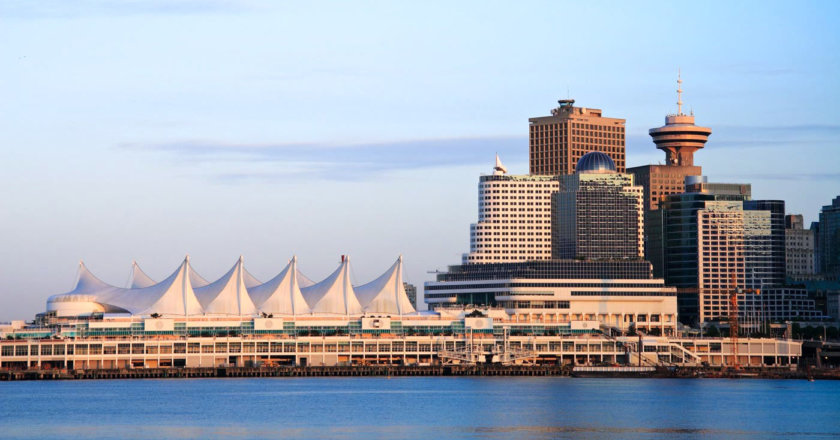
I’d also suggest trying out one of Vancouver’s top attractions, FlyOver Canada , which takes you on a 4D tour of Canada (not in 10 days but in 8 minutes!), comfortably seated in dynamic chairs . It’s a fantastic experience!
To ensure your spot, it’s essential to book your session for FlyOver Canada in advance . Don’t wait, secure your experience by clicking the green button below:
For lunch, you’ll easily find something to satisfy your palate, be it street food or restaurants. Why not try out the Japadog , a Japanese-style hot dog?
For the afternoon, enjoy some downtime at Stanley Park , Vancouver’s largest park. You can either walk or cycle around it (guided tours are also available by clicking here! ), a 9 km trail that goes around it. Either way, don’t miss the native American totem poles and the viewpoint to admire the Lions Gate Bridge.
In the evening, the best spot in Vancouver to catch the sunset is on top of the Vancouver Lookout . Similar to Toronto’s CN Tower, the building features a viewing platform 170 meters high, offering a 360° panorama over the entire city.
Book your tickets by clicking the button below:
To wrap up this first day in Vancouver in style, head to the Yaletown district , where you’ll find the city’s best restaurants .
The next day, to continue exploring Vancouver, let me introduce you to a slightly more unusual experience for this Canadian tour: a seaplane tour over Vancouver !
If you want to fly over the city, beaches, and parks, make sure to book your excursion in advance with one of the most reliable providers right here :
Since all that excitement is bound to work up an appetite, continue the morning at Granville Island where you’ll find plenty of vintage boutiques and local crafts and, above all, a vast covered market !
For lunch, I’d recommend assembling a picnic with local products or sampling the food-court with dishes from around the world ! Best enjoyed with a good beer by the water.
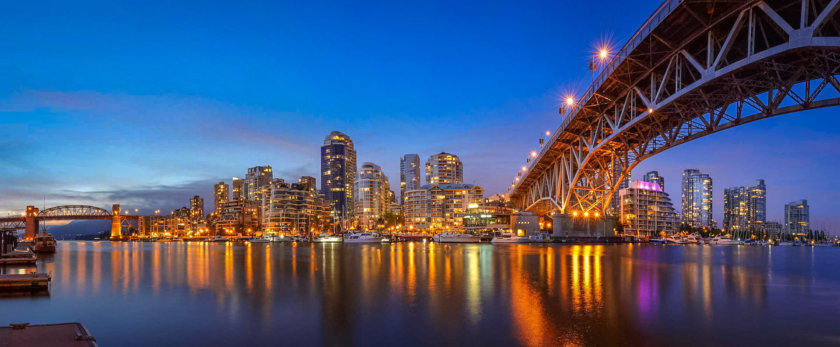
In the afternoon, make a cultural visit to the Museum of Anthropology to learn about the history of the First Nations . Especially worth checking out is its collection of totems . If you’ve already visited the Canadian Museum of History in Ottawa , it’s a similar vibe.
Exiting the museum, swing by Wreck Beach . It’s right next door.
In search of some greenery in Vancouver, your next stop should be the VanDusen Botanical Garden . Considered one of the most beautiful gardens in North America , it boasts over 7,500 plant and tree species. Wooden bridges, waterfalls, fountains – the garden is quite a sight and super enjoyable.
To wrap up the day, there’s nothing like a bit of shopping on Vancouver’s main commercial strip, Robson Street . You’ve just arrived – you’re bound to be missing a t-shirt or a little dress in your suitcase! 🙂
All my tips for visiting Vancouver are in my detailed article: Top 25 things you absolutely must do in Vancouver !
There, you’ll find more ideas for activities and tours to do in Vancouver. For example:
- A cruise to watch whales and orcas
- Vancouver Aquarium (perfect for a day out with kids!)
- Vancouver hop-on hop-off bus tour . 24h or 48h pass with included English audio guide.
- Commentated one-hour cruise in Vancouver’s harbor
- Sunset cruise in Vancouver with included buffet dinner. Duration: 2h30
- A guided walking tour of the city.
To visit Vancouver in 2 days , you won’t need your car. You can easily walk around or use public transportation , which, like in any major tourist city, is highly developed and convenient.
So, I recommend renting a car starting from the 2nd stage of this 10-day trip in Canada.
- Samesun Vancouver : This funky youth hostel is right in the middle of the city, a stone’s throw away from Yaletown district. Bunk in a dorm from €40, breakfast included. Strong points: location in the city centre, the vibrant atmosphere, comfy beds, and a cracking breakfast with muffins and bagels. A top-notch pick for budget-friendly accommodations in Vancouver !
- The Sylvia Hotel : Located just a two-minute stroll from Stanley Park and a minute from the beach. Spacious and bright double rooms starting at €120 per night. Strong points: prime location, friendly staff, and the authentic charm of the place.
- Blue Horizon Hotel : This gem is on Robson Street, the main shopping artery of Vancouver. Super spacious, comfy double room with a killer view from €170. Strong points: fantastic location to explore Vancouver by foot, the view, plenty of shops and restaurants close by, room comfort. My favorite for its value for money In my opinion, the best hotel in Vancouver.
- The St Regis Hotel : Nestled right in downtown, a hop, skip, and a jump away from Vancouver Lookout. Spacious and cozy double rooms from €240 per night, breakfast included. Strong points: optimal location, helpful and warm staff, room comfort, and a scrumptious and plentiful breakfast.
- Rosewood Hotel Georgia : A splendid 5-star hotel in downtown Vancouver offering beautifully decorated rooms from €350 per night. Strong points: indoor swimming pool, spa, and top-notch services. The best hotel in Vancouver for a luxury stay !
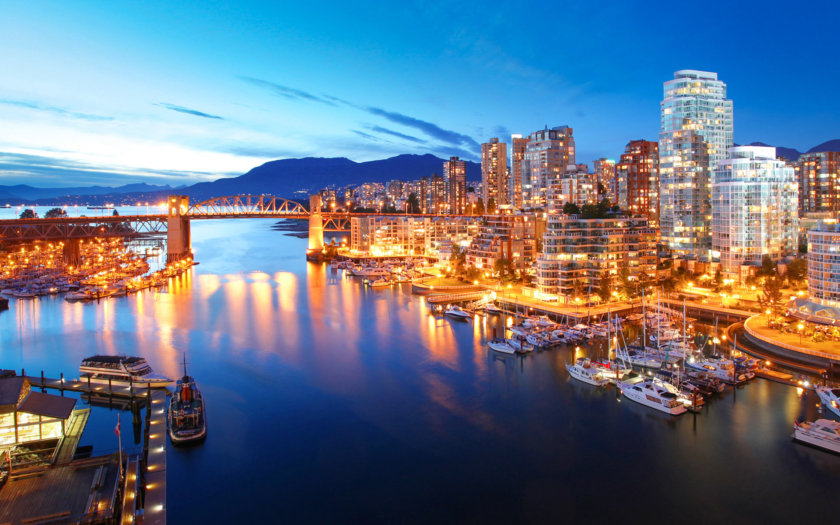
2) Whistler (1 day)
The second leg of this 10-day itinerary in Canada takes you to Whistler . From Vancouver, it’s about a 2-hour drive to Whistler.
Whistler is mainly known as a ski resort with slopes ranked among the best in the world . So if you’re traveling in this part of Canada during winter, it’s the ideal spot to indulge in Canadian winter sports . You can also enjoy a sled dog ride or some snowmobiling.
In the village, you can indulge in shopping and eat at some fantastic restaurants.
A full day’s program, isn’t it?
Don’t worry, if you’re not into skiing or if it’s not winter, Whistler offers plenty of other activities throughout the year.
Here are some activities I recommend in Whistler:
- Link up the two highest peaks of Whistler in just 10 minutes via the Peak to Peak gondola . Famous for its length of over 4.4 km! You’ll be treated to a superb panorama of the valley and glaciers.
- Go for a hike . Numerous trails start from Lost Lake. Pack a picnic, there are some really nice spots to relax.
- Try out mountain biking . Rental shops in Whistler offer them, and it’s a great way to explore the trails and experience some new sensations.
- Relax in one of the high-end hotel SPAs in Whistler.
- Speed down the longest zip line in Canada at over 100 km/h! Book this activity by clicking here!
- Fly over Whistler’s glacier in a seaplane.
Whistler is the ultimate famed ski resort in Western Canada. Even if you book as early as possible, expect somewhat hefty prices. In the peak winter season, the rates I’m about to give you could likely double.
- Summit Lodge Boutique Hotel Whistler : Located a 10-minute walk from the slopes. A cozy, modern studio equipped with a kitchenette. Starts at €170 per night. Strong points: the comfort and decor of the rooms, super-friendly staff, pool, and hot tub. It’s my favorite for its value for money in Whistler!
- Pan Pacific Whistler Mountainside : Only 150 meters from the gondola departure. Spacious studio, very well equipped with oven, microwave, dishwasher – handy for cooking up your own meals. Starts from €200 per night. Strong points: location, amenities, friendly staff.
- Four Seasons Resort Whistler: Upscale hotel located in the upper part of Whistler. This 5* hotel offers very comfortable, cozy double rooms with mountain views, starting from €400 per night, breakfast at €37. Strong points: heated outdoor pool, SPA, hot tubs, complimentary shuttle service. The best hotel in Whistler for a luxury stay !
For a slightly more economical alternative and if you’re okay with bunking in a dormitory, I recommend staying at the Hi Whistler Hostel . Dormitory bed from €40 per night.
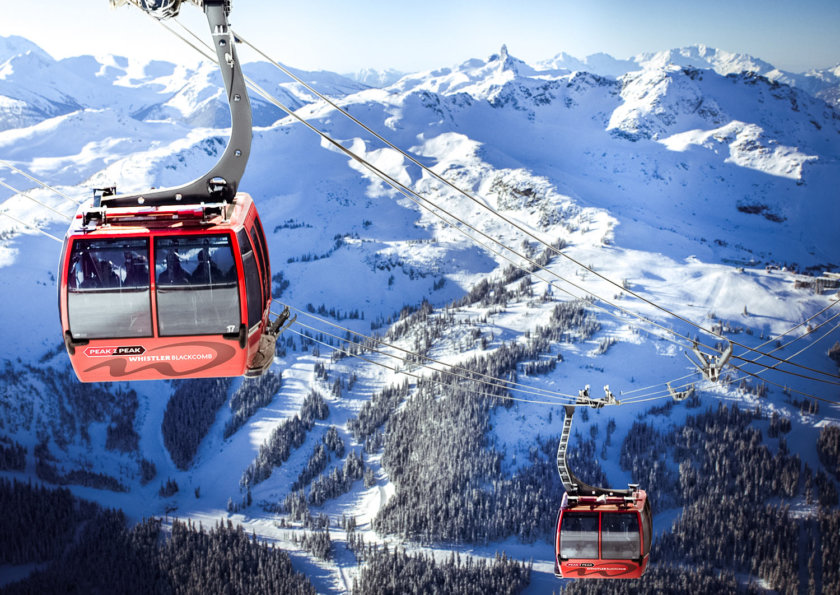
3) Wells Gray Provincial Park (2 days)
The third leg of this 10-day Canadian road trip is Wells Gray Provincial Park . Today is truly a major driving day , as the journey between Whistler and the park takes about 5 hours and 30 minutes.
I know, it’s long, but this stop is mandatory on all itineraries in western Canada. The park is practically midway between Whistler and Jasper (the next stop).
It’s a fantastic option that lets you break up the drive and experience the wonders of western Canada at a respectable pace. The park is untamed and far less crowded with tourists compared to Jasper and Banff.
You have two options:
- Rise and shine early to arrive in the early afternoon at the park and start exploring leisurely.
- Take a full day for a road trip , taking your time on the route to admire the landscapes and snap some photos. The road connecting Whistler to Wells Gray, Highway 99 , is considered one of the most beautiful roads in Canada and it’s worth taking the time to appreciate it!
The next day, depending on your preferences, here’s a list of activities you can try out in Wells Gray Park :
- Visit Helmcken Falls: They’re the most famous and among the most beautiful in western Canada. Easily accessible in 10 minutes on foot from the parking area and located in a stunning natural setting, this is a must-visit spot in Wells Gray.
- Check out the other waterfalls not to miss: Bailey’s Chute where you can watch salmon swim upstream; Spahat Falls , and Dawson Falls . Wells Gray is famous as “the waterfalls park” for a reason!
- Take a dip or canoe on Clearwater Lake
- Hike one of the many trails. The Trophy Mountain trail takes you to Sheila Lake through stunning landscapes and beautiful flowery meadows.
- Observe the local black bears.
When you arrive in Clearwater, swing by the Visitor Center to get a park map . It’s super handy for planning your day.
Just a heads up – the park’s hotels aren’t necessarily the most up-to-date and some may have slightly dated decor or facilities. But for a brief stopover, they’ll do just fine.
And in any case, there aren’t many other solutions.
- Wells Gray Inn : Located at the park entrance. Basic but clean double rooms from €60 per night, breakfast at €10. Strong points: location, outdoor hot tub, friendly reception. An economical and convenient hotel for a night in the park.
- Ace Western Motel : Located 4 km from the park. Double rooms from €120 per night. Strong points: friendly staff, parking space, close to restaurants.
- Best Western Plus Gateway to the Falls : Brand new hotel situated in the heart of Clearwater. Modern, spacious, and comfortable rooms starting at €180, breakfast included. Strong points: great location, comfort, free parking.
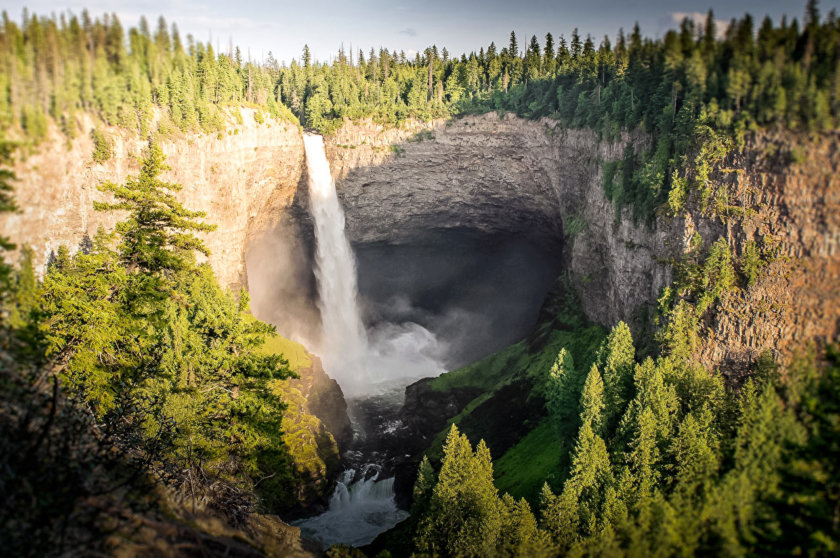
4) Jasper National Park (2 days)
Exploring Canada in 10 days means making sure you stop by the famous Jasper National Park , an iconic spot in western Canada and a proud part of UNESCO’s World Heritage list.
From Wells Gray Park, prepare yourself for a solid 4-hour drive to get there. Just before arriving in Jasper, take a breather at Mount Robson, the highest peak in the Canadian Rockies .
You’ll probably arrive by early afternoon, and for the rest of the day, I suggest you check out Jasper’s two most beautiful lakes .
Maligne Lake is about an hour’s drive from Jasper town. It’s the largest lake in the Rockies and Spirit Island in the middle is one of the most photographed in the world . You can stroll around the lake or take advantage of the opportunity to go on a cruise on the lake.
I highly recommend booking this boat trip in advance to ensure a spot (this applies to all Jasper activities). Just hit that green button below:
On the way back between Maligne Lake and Jasper, you’ll find Medicine Lake , the second must-see lake in Jasper National Park.
Spend the night in Jasper , the only “town” in the park where you’ll find shops, restaurants, and hotels .
The following day, dedicate a full day to exploring the national park on foot . After spending yesterday in the car and with another driving day coming up, I recommend you get in a bit of hiking ! Jasper is the perfect spot for this, offering a plethora of trails suitable for all levels. Visit the visitor center to grab a map.
Among the most popular hikes, I recommend:
- The Maligne Canyon Trail : round-trip distance is 4.4 km with moderate difficulty
- The Cavell Meadows Trail in the Mount Edith Cavell area: round-trip distance of 7 km, moderate difficulty
- The Sulphur Skyline : 8 km round-trip with a hard level because it’s a steep climb of 700 m. And to top it all off, prepare to be blown away by the breathtaking 360° view of the Rockies!
- The Old Fort Point Loop offers superb panoramas of the Athabasca River: distance of 3.8 km with medium difficulty
- The Valley of the Five Lakes : 4.5 km distance and medium difficulty.
And to wrap up the day and relax, there’s nothing like a trip to another must-see spot in Jasper, Miette Hotsprings . In other words, outdoor hot springs ! A perfect way to unwind while enjoying a magnificent view of the mountains and the park.
For your second day in the national park, you can also choose other activities (provided you book in advance by clicking the orange links):
- Take the sky tram up to an elevation of 2,260 meters for a 360° view of the Canadian Rockies
- Take a guided bus tour exploring the park’s wildlife . You could spot moose, elk, and if you’re lucky, even a few bears.
- Take a bus excursion into Maligne Valley complete with photo stops + wildlife viewing + a guided 4 km hike
- Raft down the Athabasca River
- Take a helicopter flight over the Rockies for an unforgettable experience!
- In winter, there’s also a special tour for exploring wildlife .
Here’s a tip: book your Jasper accommodation ASAP ! Most places are fully booked months in advance, even the campgrounds.
Also, prices can fluctuate wildly from week to week: a room that costs 120€ one week could skyrocket to 350€ the next. So, the hotel prices I’m suggesting are more or less ballpark figures.
- Chateau Jasper : This hotel offers spacious, well-equipped double rooms starting from €110 a night. Strong points: the pool and SPA area, room comfort, value for money.
- Mount Robson Inn: A hotel close to downtown Jasper, just a two-minute drive away. Super quiet double room with mountain views starting from €200 per night, breakfast included. Strong points: tranquility, the two hot tubs.
- Best Western Jasper Inn & Suites : The hotel offers various types of suites with a living area, some with a kitchenette. They’re all super cozy and spacious. Prices start at €230 per night, breakfast included. Strong points: sauna, steam room, pool, good location, warm welcome.
- Fairmont Jasper Park Lodge : Situated 7 km from Jasper, on the shores of Beauvert Lake. Cozy, comfortable double room starting from €400 per night. Strong points: the stunning lakeside location, the heated outdoor pool, the dedicated and attentive staff.
If you’re on a tight budget for sleeping in Jasper National Park, I recommend the Jasper Downtown Hostel . This hostel offers dormitory beds from 30€ a night. Everything is super clean and modern.
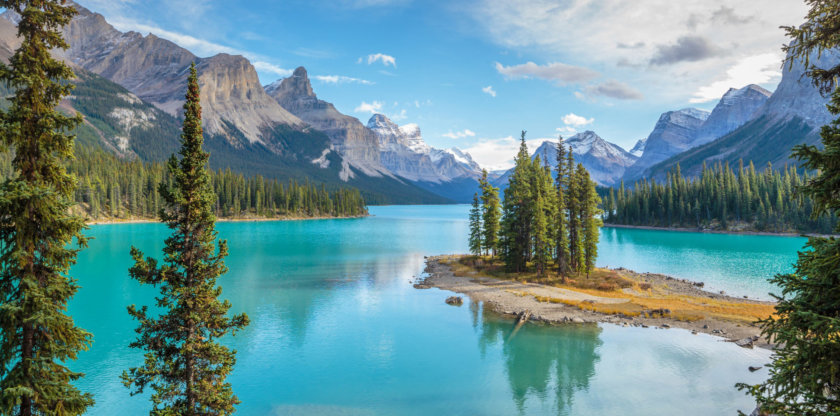
5) Banff National Park (2 days)
For this 5th step of your 10-day journey in Canada, take the legendary western Canadian route, the Icefield Parkway .
The Icefield Parkway (Highway 93) is known to be one of Canada’s most beautiful scenic routes . It allows you to connect Jasper and Banff over nearly 230 km through the two national parks.
I advise you to allocate a full day for the journey. There are indeed plenty of spots and viewpoints to admire along the way. Parking lots and belvederes are conveniently located for easy stops.
The must-sees during your journey on the Icefield Parkway:
- Visit the Athabasca Falls , which are over 20 meters high
- Stop at Sunwapta Falls
- Discover the Athabasca Glacier and the Columbia Icefield.
If you can only make one stop on the Icefield Parkway, make it this one. You’ll be able to hop on a giant tire-equipped bus called the Ice Explorer, which will take you onto the glacier.
The visit also includes access to the glass walkway that overlooks the glacier from 279 meters high.
It’s one of the most popular activities in the region and good news, you can book it by clicking on the button below :
If you don’t wish to take the glacier bus tour, you can also directly access the observation walkway . Tickets can be booked by clicking here !
Last stop on the road: Lake Peyto , accessible via a 15-minute stroll. You’ll be amazed by its turquoise waters, a result of glacier melt.
To ensure you don’t miss any points of interest, check out the Icefield Parkway website.
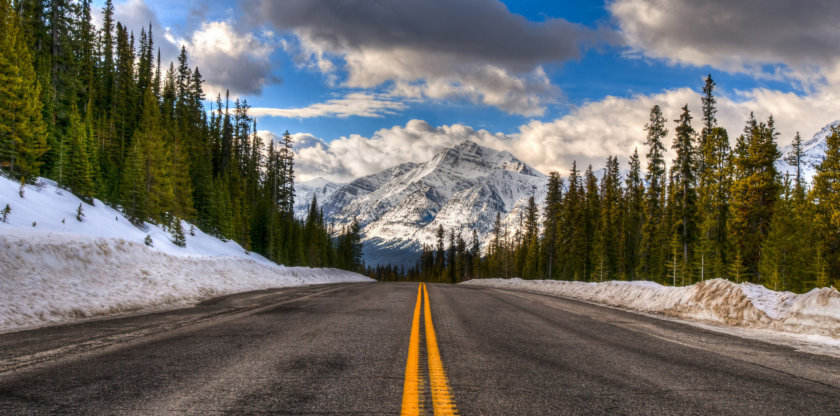
As the day comes to a close, you’ve reached the end of Route 93. For tonight and the next, I recommend you stay at Lake Louise, the town closest to the lake that gives it its name: Lake Louise . This lake is in Banff National Park and is among the most photographed lakes in the world . With its intense turquoise blue, the lake is simply stunning and ultra-photogenic.
On tomorrow’s agenda , you can engage in the most common activity in the park, hiking ! Many hiking trails start from Lake Louise and also from Moraine Lake , Banff’s other famous lake. You can get the leaflet of all the hikes at the visitor center located in the Lake Louise village.
Among the list of easy trails, I highly recommend the one that takes you around Lake Louise in about an hour. It’s a perfect opportunity to stretch your legs and immerse yourself in the scenic beauty of this iconic lake. You can also hike up to the Fairview lookout , in only 45 minutes to admire the lake and the iconic hotel in the background. Following the same principle, you can also circle Moraine Lake in 45 minutes.
When it comes to medium difficulty hikes, the most beautiful one undoubtedly is that of the Plain of Six Glaciers . This roughly 4-hour hike lets you discover a series of impressive glaciers and peaks.
To check the trail conditions and see all the possible hikes, visit Parks Canada’s website .
The park also offers most of these hikes guided and in small groups . You’ll have a choice of 4 trails of varying difficulties such as Stanley Glacier or the Plain of Six Glaciers.
To book a guided hike in Banff Park , click here:
During this day, you can also:
- Taking the cable car (click here for tickets) to reach the summit of Sulphur Mountain, at 2,281 meters above sea level. Let me tell you, the view is stunning!
- Embark on a cruise on Lake Minnewanka
- Go horseback riding along the river
- Go on a traditional canoe ride on the Bow River
- In winter, take a guided ice cleat hike in the Johnston Canyon.
My tips and tricks for best organizing your hiking day in Banff Park:
1) Both Lake Louise and Moraine Lake have parking lots . However, spots are limited and during the tourist season (June to September), it’s advised to get there before 9 AM if you want your spot.
2) Once the parking spots at Moraine Lake are filled, the road is blocked off and you won’t be able to access it anymore. Remember, it’s only open from May to October.
3) Starting from Lake Louise (the village), a free shuttle takes you to Lake Louise (the actual lake). Shuttles rotate roughly every 20 minutes until 6 p.m. for the return trip.
4) Bears are quite common in Banff Park, so always carry bear spray and make noise when walking so they can hear you coming. It’s always better to move in groups.
To avoid these minor traffic or parking issues , you can also choose the hop-on, hop-off bus that stops at Johnston Canyon, Lake Louise, and Moraine Lake . Hop on and off whenever you want!
The guides will be happy to help you plan your day according to the schedule.
Here, I’m going to echo my advice for Jasper National Park: book early ! And, similarly, brace yourself for the high prices.
- Baker Creek Mountain Resort : Located a breezy 20-minute drive from Lake Louise. This resort offers suites and chalets bedecked in classic mountain style, complete with wood paneling and fireplaces, starting from €280 a night. Strong points: the riverside location, the natural setting, the charm of the chalets. My recommandation for a romantic stay in Banff Park !
- Paradise Lodge and Bungalows : Situated 1 km from Lake Louise village. Wooden suites and bungalows that are both typical and cozy, starting from €300 a night. Strong points: the ideal location, the beautiful setting, and the outstanding welcome.
- Fairmont Château Lake Louise : This is the renowned hotel located by Lake Louise! Elegant and well-decorated double rooms with views of the lake or the chateau park starting from €470 a night. Strong points: the panoramic terrace for lake viewing, the location, the warm staff. The best hotel in Banff National Park for a luxury stay!
For a much more budget-friendly option, consider a night in a hostel. I’d recommend the HI-Lake Louise Alpine Centre . Dormitory beds start at €40 a night – you’ll be hard-pressed to find cheaper! They also offer double rooms starting from €100 a night.
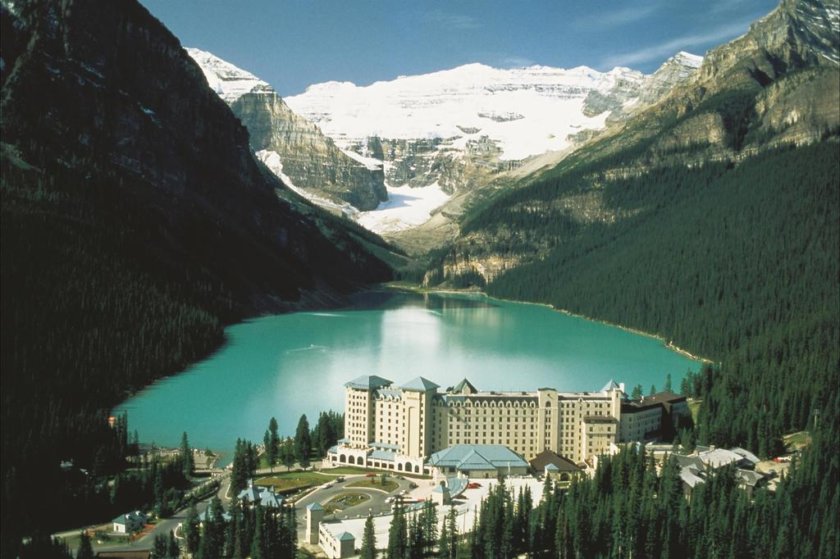
6) Calgary (1 day)
You’re now at the last stop of this 10-day journey through Canada . Today, you’ll be leaving Banff National Park to head to Calgary . A roughly 2-hour drive from Lake Louise awaits you.
Calgary is often a stopover city at the start or end of a road trip in western Canada. However, it’s worth taking a detour to check out the main points of interest.
To explore Calgary in 1 day , I suggest you visit the Glenbow Museum . This is the perfect way to learn more about the history of the city and Alberta region . With its 33,000 works, the Glenbow is nothing less than the largest art museum in Western Canada . The visit is genuinely fascinating.
Next, head over to the Calgary Tower , the city’s iconic landmark. The tower provides a 360° view of the entire city and a section of the Canadian Rockies . With a glass floor, you’re in for quite a thrill nearly 190 meters high! Just like its iconic counterparts in Toronto or Vancouver, you can indulge in a scrumptious lunch at the revolving restaurant situated at the top.
To skip the queue, I recommend purchasing your Calgary Tower ticket online by clicking the green button below:
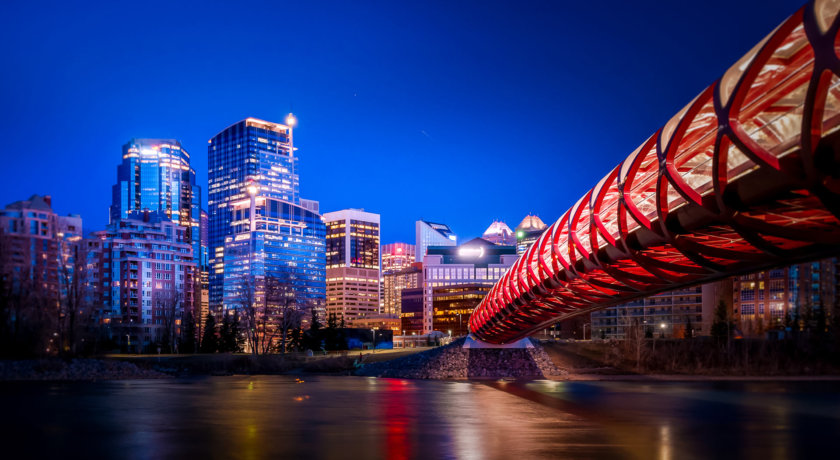
In the afternoon, I recommend you visit Heritage Park Village. Walk around a typical western Canadian village from the last century. Embark on a journey to explore the shops, the blacksmith’s, the bakery , and uncover the fascinating ways of life from times gone by. Take a ride on a genuine steam train or embark on a cruise on a paddle steamer.
If you’re spending 10 days in Canada with family , this is a fantastic activity to do in Calgary!
Here too, tickets are available directly online by clicking here !
In the late afternoon, head to Calgary’s coolest neighborhood: Kensington Village . Take the opportunity to do some shopping and pick up last-minute souvenirs. This is also where I recommend having your evening meal, as it’s home to some of Calgary’s best restaurants.
To organize your day in Calgary, take a look at my article: Visiting Calgary: the top 10 must-sees !
If you’re lucky enough to have an extra day and are visiting Canada for 11 days :
- You can add an extra day around Vancouver to go whale watching or visit the Capilano Suspension Bridge , the most famous attraction near Vancouver.
- Another option: if you prefer nature over city, add an extra day in Jasper or Banff Park for hiking.
- Wicked Hostels : This youth hostel is located opposite the Calgary Stampede. Bunk in a dorm from €25, breakfast included. Strong points: the central location, the full breakfast, the warm atmosphere, and free laundry. This is a fantastic budget-friendly accommodation choice in Calgary !
- Coast Calgary Downtown Hotel & Suites by APA : Located right in the city center, 900m from Calgary Tower. Cozy and comfortable studio with kitchen from €130 per night, breakfast included. Strong points: the central location, the full breakfast, the cleanliness. It’s my favorite for its value for money in Calgary !
- Grey Eagle Resort : Located a 10-minute drive from the city center. Modern and comfortable double room starting at €160 per night. Strong points: the indoor swimming pool, the room size, the hospitality.
- Residence Inn by Marriott Calgary Downtown/Beltline District : Located 800m from the tower. Modern, spacious, and fully decorated studio with kitchen, from €210, breakfast included. Strong points: the abundant breakfast, the view from the rooms, the location.
- Hôtel Le Germain : The hotel is located right opposite the Calgary Tower, ideal for exploring the city on foot. Modern and spacious double room from €250 per night, breakfast included. Strong points: exceptional hotel with attentive staff, delicious breakfast, comfortable rooms, the size of the bathrooms. The best hotel in Calgary for a luxury stay !
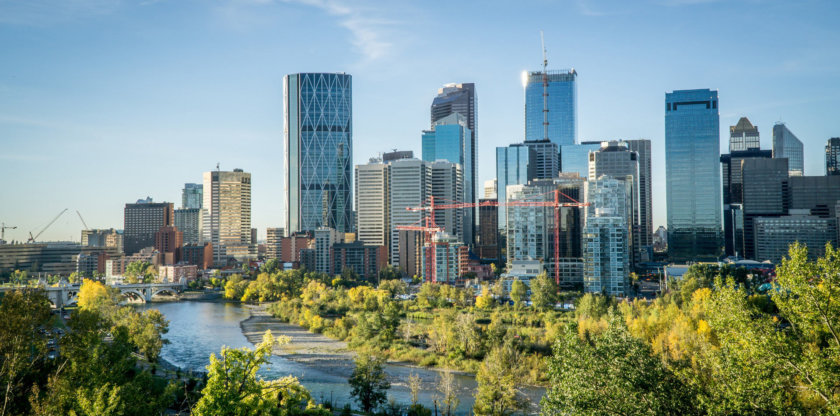
Feel free to give me your feedback and suggestions on my 10-day itinerary in Canada ! And if you need help planning your trip, simply ask me your questions in the comments section below.
Discover all my articles about Canada : All my articles to help you plan your trip to Canada are listed there.
- 20 Best Things to do in Canada
- 20 Best Things to do in Quebec – All best places to visit in the French-speaking province!
- Itinerary: One week in Canada: The perfect itinerary to visit Canada in 6, 7 or 8 days!
- Itinerary: 10 days in Canada: All my best tips for organizing your 10-day trip to Canada
- Itinerary: 2 weeks in Canada: How to visit Western Canada in 15 days.
- Itinerary: 3 weeks in Canada: My epic itinerary to visit Western and Eastern Canada in 21 days
- Itinerary: 1 month in Canada: How to visit Eastern Canada in a month!
- Itinerary: One week in Quebec: How to visit Quebec in 6, 7 or 8 days, with all my best tips!
- Itinerary: 10 days in Quebec: An amazing 10-day itinerary in Quebec
- Itinerary: 2 weeks in Quebec: All my best tips to visit Quebec in 14, 15 or 16 days
- Itinerary: 3 weeks in Quebec: the perfect 3-week road trip in Quebec !
- Road trip in Canada: The best itineraries for 7, 10, 15, 21 days and 1 month
- Road trip in Quebec: The best itineraries for 7, 10, 15 and 21 days
- Calgary : Top 11 things to do during your visit
- Montreal : 33 best things to see and do
- Ottawa : 15 epic places to visit
- Quebec City : Top 17 things to do and see
- Toronto : The 17 things to do during your stay
- Vancouver : Top 25 places to visit and activities
- Toronto in 3 days – The perfect itinerary to visit the city in 72 hours!
You’re using Pinterest? Here is the picture to pin!
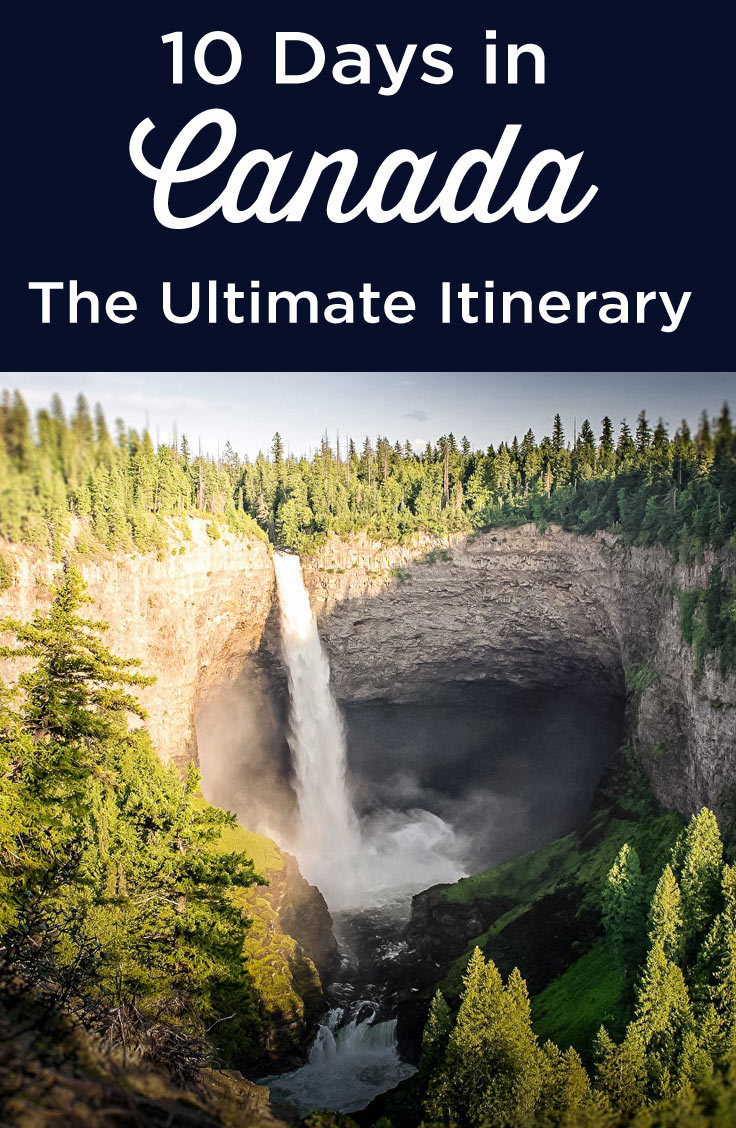
Creator of the Voyage Tips blog, travel and photography lover. I give you all my best tips to plan your next trip.
Related Stories
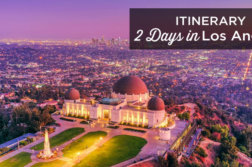
2 days in Los Angeles: the Epic Itinerary + tips
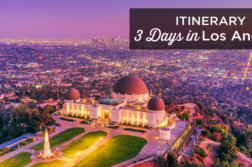
3 days in Los Angeles: the perfect Itinerary + tips
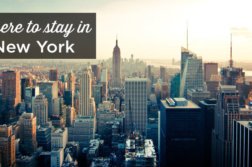
Where to stay in New York? The best areas and places to stay
Leave a reply cancel reply.
Your Name (required)
Your Email (required)
Your Website (optional)
Save my name, email, and website in this browser for the next time I comment.
- Middle East
- North America
- Cheap car rentals: my best advice
- Back to Homepage

Plan Your Trip to Canada: 7 Great Itineraries
Written by Lana Law Updated Sep 13, 2021
Planning a trip to Canada and figuring out an itinerary may seem monumental due to the size and geographical layout of the country. Bordered by three oceans, the Canadian motto "from sea to sea to sea" becomes more relevant when you start planning a cross country tour.
Most travelers with limited time who are looking to plan an 8- or 10-day Canada itinerary, tend to focus on one area of the country. This is a good idea, unless you incorporate some long-distance internal flights. Canada stretches more than 5,500 kilometers from east to west, and much of the remote north is all but inaccessible.
The best option, unless you have plenty of time, is to focus your itinerary on Western, Central, or Eastern Canada. Western Canada is home to some of the country's most spectacular scenery, with mountains, glaciers, alpine lakes, and Pacific coastline. Central Canada is most well-known for its vibrant cities, including Toronto , Montreal , and Ottawa , but also consists of prairies and the lakes and forests of the Canadian Shield. Atlantic Canada , which includes the Maritime Provinces and Newfoundland and Labrador, is known for endless shorelines, quaint coastal villages, and friendly cities with a small-town atmosphere.
1. Western Canada: Canadian Rockies Itinerary
2. canada west coast itinerary: vancouver, vancouver island & whistler, 3. central canada: toronto, montreal & beyond, 4. eastern canada: nova scotia & prince edward island, 5. newfoundland: explore the rock, 6. exploring canada's north: polar bears, arctic landscapes & culture, 7. city hopping across canada, map of canada: great itineraries, when to travel in canada: best times to visit.
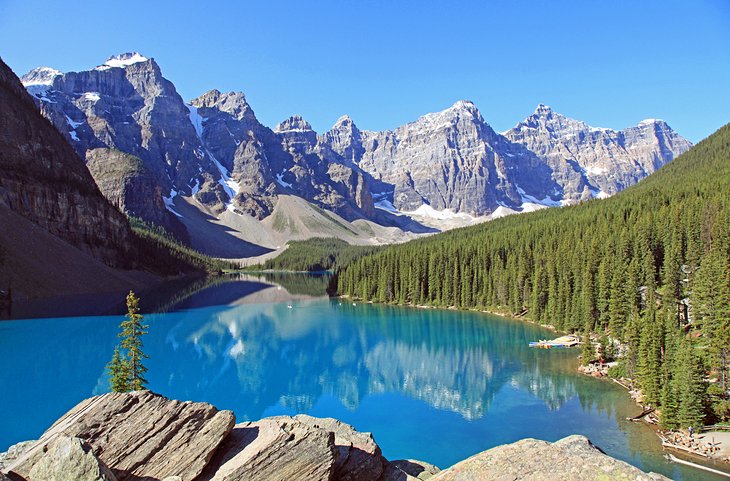
Western Canada Itinerary Highlights: Vancouver, Kelowna and the Okanagan Valley, Banff National Park, Jasper National Park, Lake Louise, Calgary
The best way to see the Canadian Rockies is by car, with a road trip beginning either in Vancouver and ending in Calgary, or doing it in the reverse order. A scenic seven-day trip will take you from Vancouver to Kelowna for a stop along the beautiful Lake Okanagan , and on to Banff National Park . From here, do a side trip up the Icefields Parkway to Jasper and end your trip in Calgary . This route runs through some of the most spectacular scenery in Canada.
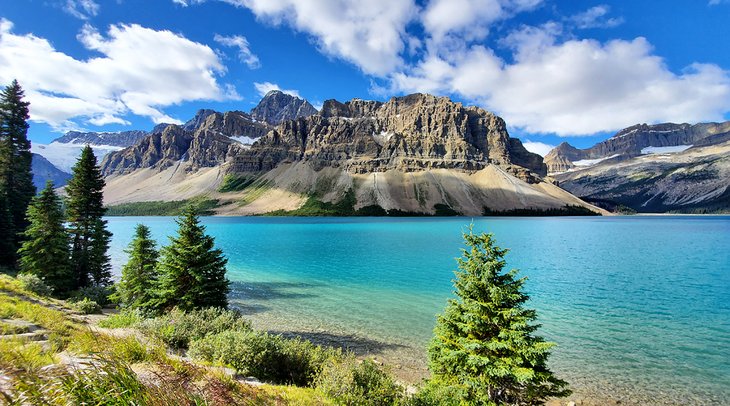
Kelowna is a pleasant city that caters to skiers in the winter, with nearby ski resorts of Big White and Silver Star . These are two of the best ski resorts in Canada . In summer, this is a popular area for renting a cottage, golfing, or exploring the lakes by houseboat.
Banff and Jasper National Parks , including the area around Lake Louise , are highlights of this route, and offer some incredible day hikes . You can plan your own Banff to Jasper itinerary along the Icefields Parkway . Even if you are not interested in getting active, there are scenic pullouts along the Parkway to see the turquoise lakes, glaciers, waterfalls, and other sites.
The town of Banff , in the park of the same name, is a beautiful mountain tourist town with all kinds of accommodation, including camping . In town, the dining and shopping options are substantial, with too many stores and shops to count.
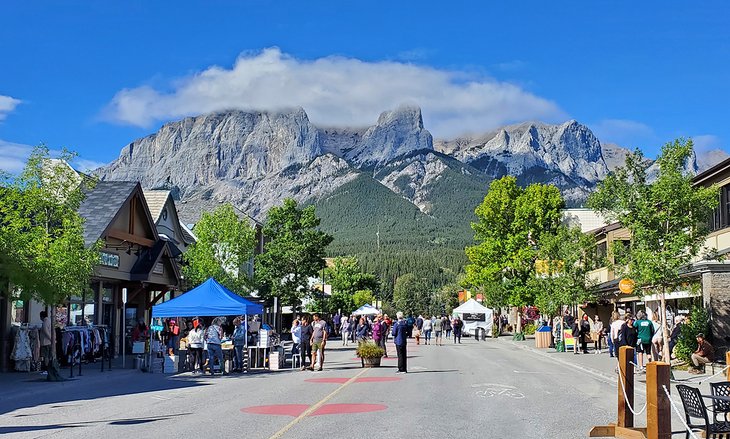
Just outside the park to the east, the small mountain town of Canmore is a great base, with plenty of resorts if you don't want to stay in Banff. Beyond Canmore, an hour and a half east of Banff, is the city of Calgary , home to the famous Calgary Stampede held in July.
Flights run regularly between Calgary and Vancouver. Another option for returning to Vancouver is a train trip on the Rocky Mountaineer , a high end rail journey through the Rocky Mountains.
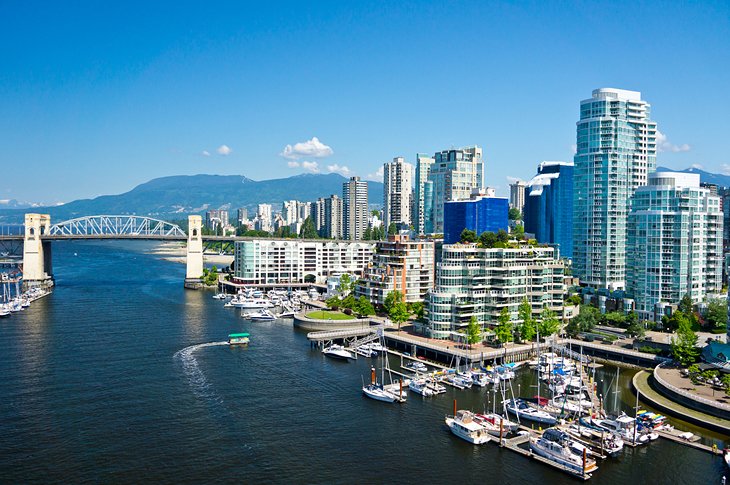
West Coast Itinerary Highlights: Vancouver, Whistler, Victoria, Salt Spring Island, Tofino
Spend a couple of days seeing the sights of Vancouver . Drive or catch a bus up to the posh ski town of Whistler for a day, a fun destination any time of year, and head back down to Vancouver where you can catch a ferry to Victoria , the capital of British Columbia. For some people, depending on how much time you allow in Vancouver and Victoria, this might be enough to fill seven days.
However, if you find you still have more time, plan a Vancouver Island itinerary or some excursions from Victoria. For a day trip from Victoria catch a car ferry to Salt Spring Island for a day of sightseeing, or visiting local farms and artisan studios.
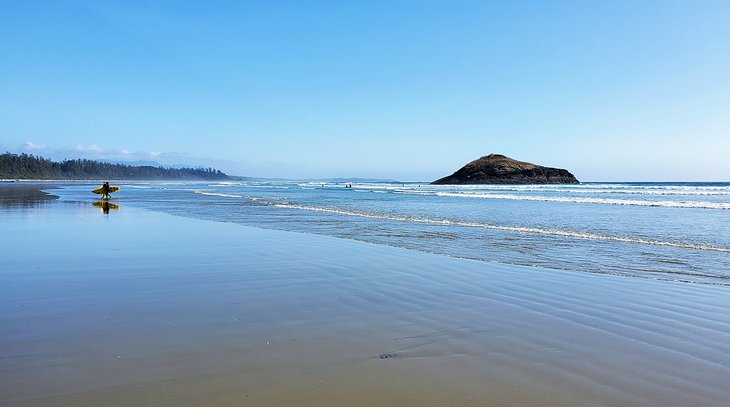
With a few days available, you can plan a Vancouver Island Road Trip. Drive up Vancouver Island to Tofino for a night or two, where you can stay in one of the beautiful seaside resorts . Spend some time surfing or walking along the beaches in Pacific Rim National Park , enjoy some of the beautiful day hikes around Tofino or near the village of Ucluelet , and see the pristine coastal forest all along this remote stretch of the island.
A car makes this trip simple and is the best way to see the attractions. If you are using public transport, it will be cheaper and include a bus to Whistler and walk-on ferries to Victoria and Salt Spring Island. With a car, be aware that taking a car ferry may require some wait time, especially around holidays. If you add on a trip to Tofino a car is almost essential.
If you are looking for more things to do on Vancouver Island, consider taking the time to explore the best hikes on Vancouver Island , or set up your tent or RV at one of the scenic campgrounds . The campgrounds near Tofino are especially beautiful. You can also plan excursions out of Nanaimo and Parksville.
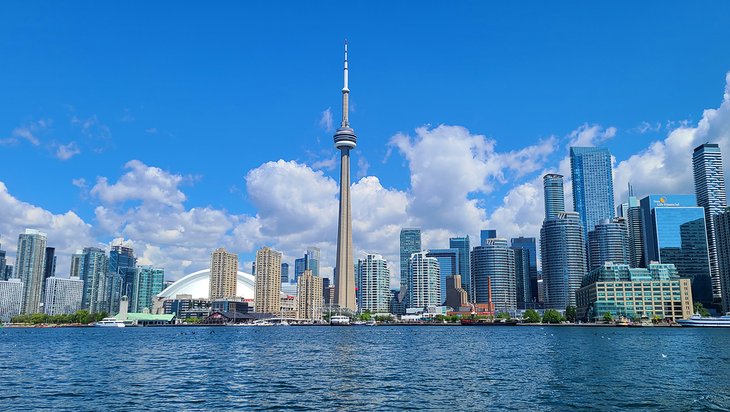
Central Canada Itinerary Highlights: Toronto, Niagara Falls, Ottawa, Montreal, and Quebec City.
With Toronto being a major point of entry for many travelers to Canada, this is the best place to start a tour of Central Canada. Spend a few nights in Toronto to see the sights, take in a Broadway show, and do a day trip to Niagara Falls . There are several tour operators offering day trips to the falls, which usually include a stop at the lovely little town of Niagara-on-the-Lake , one of Ontario's most romantic small towns.
From Toronto, you can drive or take a train to Ottawa , Canada's capital, to see Parliament Hill , some national museums, and in winter, you may even be able to skate along the Rideau Canal running through the city.
Montreal is another must-see city in Central Canada. You can get there easily from Ottawa, or directly from Toronto if you choose to skip Ottawa. Trains run regularly from both cities to Montreal, and by car, it is quite an easy drive (4.5 hours from Toronto to Ottawa, 5.5 hours from Toronto to Montreal, and two hours from Ottawa to Montreal).
With more time available, you can continue on to Quebec City to tour this historic French city. This is a city definitely worth visiting, and may even serve as an alternative to visiting Montreal if you are unable to visit both.
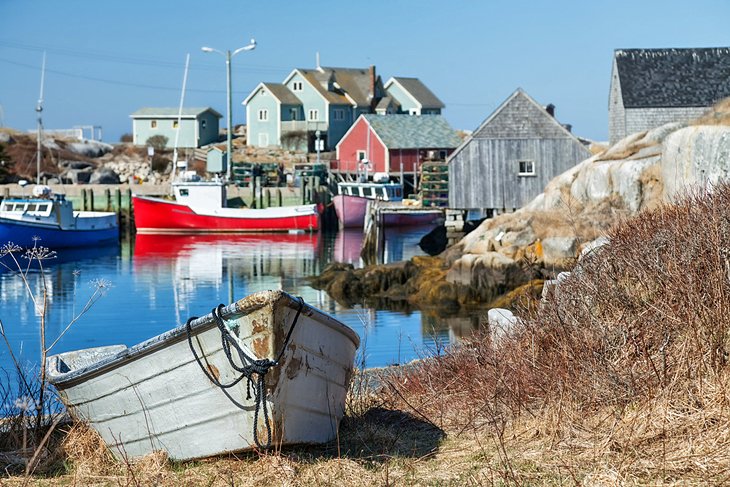
Nova Scotia and PEI Itinerary Highlights: Halifax, Lunenburg, Charlottetown, Cape Breton Island
Eastern Canada is a large area and you may want to explore a region rather than try to see everything. Beginning with Nova Scotia and PEI is a good start. The most practical way to tour this area is with a car.
With eight to 10 days, you can easily see the highlights of Nova Scotia and Prince Edward Island . Begin in Halifax with some sightseeing around the city, and then spend a day touring the surroundings, with visits to Peggy's Cove and historic Lunenburg , before moving on to Annapolis Royal . From here, continue up and along the Bay of Fundy , making your way to the Confederation Bridge and over to Charlottetown , Prince Edward Island.
Take at least a day to explore the PEI, with a trip to Prince Edward Island National Park and Green Gables , the fictional home of Anne of green Gables. If the weather cooperates, take some time to enjoy the seashore. PEI's Brackley Beach with its long stretches of golden sand, is one of the best beaches in Canada . When you are ready to leave, take the Wood Islands Ferry to Caribou , Nova Scotia and head up to Cape Breton Island . There is plenty to see and do here, but the most popular activity is driving the scenic Cabot Trail , which runs through Cape Breton Highlands National Park.
If you have time, make your way out to Louisbourg to see the Fortress Louisbourg National Historic Site. From here you can head back to Halifax.
If you have another seven or 10 days for exploring the Maritimes, tack on a tour of Newfoundland .
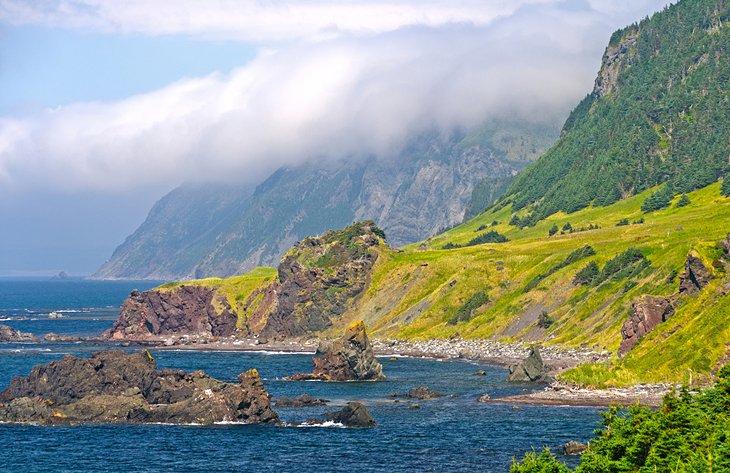
Newfoundland Itinerary Highlights : St. John's, Gros Morne National Park, coastal towns
Start your Newfoundland itinerary with a stop in St. John's , the provincial capital, to explore Signal Hill National Historic Site and George Street , in the lovely downtown area. When you leave St. John's, take the scenic drive along Conception Bay and over to the Bonavista Peninsula to the charming town of Trinity. This scenic little seaside village with colorful houses looks out onto oceanfront cliffs. Tour some historic buildings to get a feel for the culture, take a whale-watching tour, or go for a hike. If you are visiting in the late spring, you may even see an iceberg.
From here, continue up the coast through Terra Nova National Park and on to the village of Twillingate to experience a quaint coastal community. After a night in Twillingate make your way to beautiful Gros Morne National Park , for a boat tour or some hiking in this spectacular landscape. Stay in the park at Rocky Harbour, Norris Point, or at nearby Deer Lake.
If you have more time, consider making a trip up to L'Anse Aux Meadows , a UNESCO World Heritage Site, to see some Viking history. Afterwards, make your way back to St. John's. Keep in mind, driving in Newfoundland may take longer than you expect, with winding roads and last-minute decisions to turn off the highway and visit coastal towns or scenic areas.
- Read More: Top-Rated Tourist Attractions in Newfoundland and Labrador
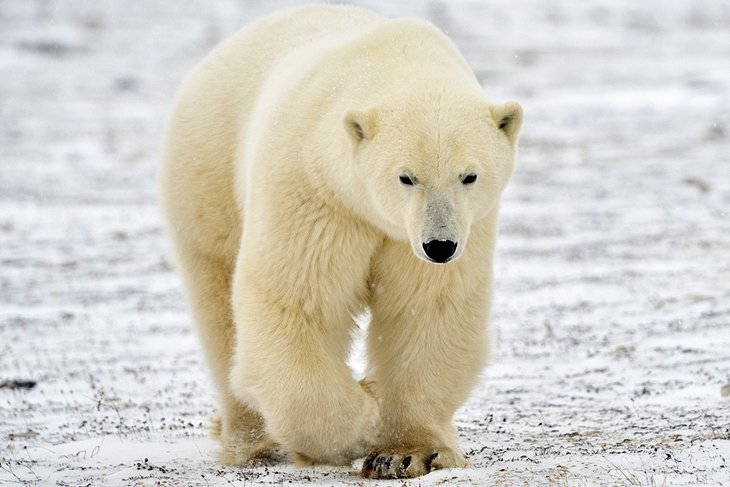
Northern Canada Itinerary Highlights: Churchill, Whitehorse, Yellowknife
There is no easy way to see all of Canada's north in one trip. The region is extremely remote, and the highlights are, in many cases, geographically distant from one another.
Here are some options for a Northern Canada itinerary:
If your goal is to see wildlife you should consider a trip to Churchill , Manitoba in the late fall to see the polar bear migration. Many different tours leave from Winnipeg , offering multi-day stays that include options to see the bears in a Tundra Buggy and stay in a Tundra Lodge. Most tours involve a flight from Winnipeg to Churchill, but it is also possible to take a train to Churchill.
The two main cities of the north are Whitehorse , in the Yukon , and Yellowknife , in the Northwest Territories . Both of these cities are accessible by car.
Many people incorporate the Yukon into a driving trip to Alaska . This route typically involves driving up through northern British Columbia and runs from Haines, going through Skagway, Carcross, Whitehorse, Dawson City, and into Alaska to the cities of Fairbanks and Anchorage , then back into the Yukon to Haines Junction and back to Haines. This route will give you a chance to experience some of the characters and cultures of the north, learn about the history of the Klondike Gold Rush, and see some of the beautiful landscape.
To reach Yellowknife , most people drive up the Mackenzie Highway from northern Alberta to Highway 3 running through Fort Providence. While in Yellowknife, be sure to get out on the waters of Great Slave Lake to battle the giant northern pike and trout waiting beneath the surface.
To see more of the north from Yellowknife, flights are in order. Possible options include side trips to Nahanni National Park , one of the jewels of Canada's north, or to the northern community of Inuvik, just 200 kilometers from the Arctic Circle, to see what life is like in the far north.
- Read More: Top-Rated Tourist Attractions in Whitehorse
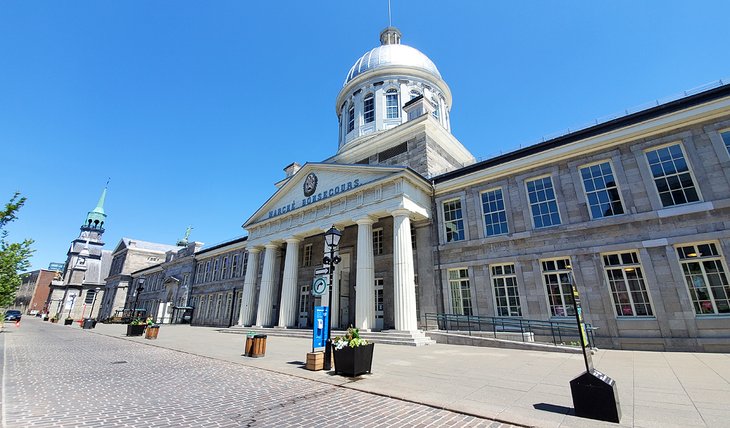
Canadian Cities Itinerary Highlights: Vancouver, Toronto, Montreal (Optional: Calgary, Halifax, St. John's, Quebec City)
If you are looking for a cross-Canada cosmopolitan adventure, the key cities are Toronto , Vancouver , Montreal , and the nation's capital, Ottawa . But if you want to probe a little deeper, you could easily add on Calgary , Halifax , St. John's , and even a side trip from Montreal to Quebec City . There are regular flights to all of these destinations and quick and convenient train connections that run between Toronto, Montreal, and Ottawa. Flights to the eastern cities of Halifax and St. John's are generally more expensive.
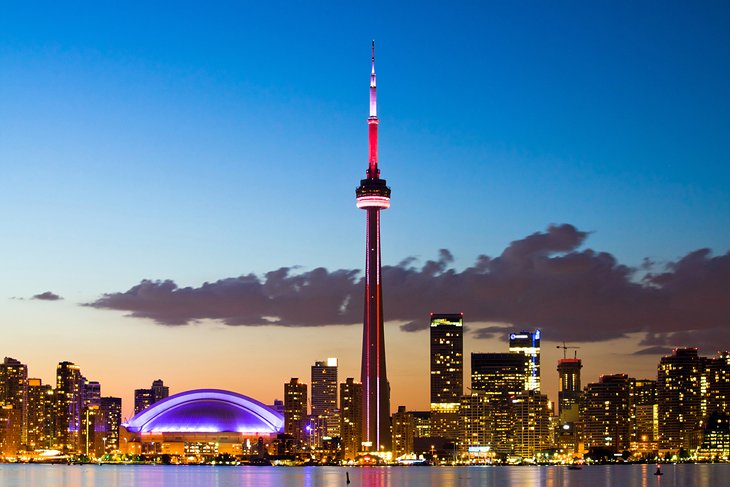
Vancouver is arguably Canada's most beautiful city, while Toronto is a great place to see a show, take a day trip to Niagara Falls, and enjoy the view from the CN Tower.
Montreal is an incredibly vibrant city known for its French culture, shopping and fashion, and trendy Old Town . With extra time, you could add on a trip to Ottawa , between Toronto and Montreal, to tour some of the best museums in Canada.
Nature lovers could make a stop in Calgary for a quick trip out to Banff National Park and Lake Louise. For a more complete picture of Canada, catch a flight to either Halifax or St. John's to enjoy some seafood and experience the culture and friendly people of Atlantic Canada.
Planning a trip to Canada involves more than geographical considerations; the weather should be high on the list of things to research as well. Canada is so massive that the country can be experiencing four seasons on the same day. For example, on a typical June day, it could be 30 degrees Celsius, hot and humid in Central Canada, fogbound and cool in the Atlantic provinces, pleasant with cool sea breezes in Vancouver, and snowing in the Rockies or far north.
The best months to visit Canada are July and August . During these months, you'll get the warmest temperatures and have the best chance to do all the activities you have planned. However, this is when all the Canadians like to do things as well, so prices tend to rise and the most popular places can get crowded. If you can get away in September, you'll be rewarded with warm days, cool nights, and less crowded attractions.
Vancouver and coastal British Columbia along with Eastern Canada have temperate climates - it rarely gets too hot or too cold. The farther you move inland from the moderating effect of the oceans, the more extreme the temperatures get.
Planning a trip in the winter is less popular, unless you are a downhill skier or hardy outdoorsman. The best winter month for a ski trip is March, with its more moderate temperatures, sunny days, and copious snowfall. December is early for consistent snow conditions; January and February can be bone-chillingly cold and have short days.
Winter can also be a great time to experience the arts. Enjoy the ballet, symphony, and theater, or spend some time at the museums.
More Related Articles on PlanetWare.com
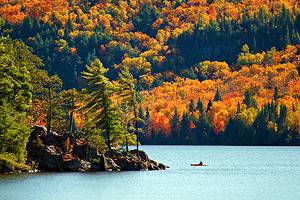
Ontario's Nature Escapes: If you want to add a little summer adventure to your Canada itinerary, you may want to look to Ontario. Central Canada is home to some pristine natural areas, perfect for visitors looking to plan a canoe trip, fishing trip, or to simply soak up nature at a lodge. A good place to research ideas for canoeing or camping is with our guide to the Best Parks in Ontario . For fishing, see our list of the Top Fishing Lodges in Ontario .

More on Canada
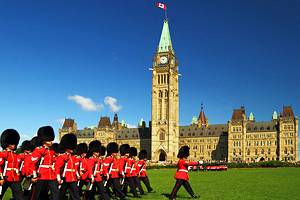
- Skip to main content
- Skip to primary sidebar
- Skip to footer
Must Do Canada
The Best Things to Do in Canada
How to Plan the Ultimate Canada Road Trip
May 14, 2019 By Matthew G. Bailey 9 Comments
Sharing is caring!

Even though we love to jump on planes and travel around the world, our favourite form of travel is a good old classic road trip. There’s something special about being in control of your own transportation and being able to go wherever you want, whether that’s a small town, a big city, or an off-the-beaten-path gem. There’s also something great about stuffing what you need into a car and not worrying about baggage restrictions, lost luggage, and people throwing away your cologne and hand creams.
Road trips are a popular mode of travel in many countries around the world but there’s hardly a better place than Canada. As the worlds second largest country, Canada is best explored by vehicle. The Trans-Canada Highway runs all the way from Newfoundland to British Columbia, paving a path of more than 7,800 kilometres. Then there’s the North, which is now connected by road all the way to the arctic ocean in Tuktoyaktuk , NWT. There’s major cities, small towns, and breath-taking scenery all along the way.
We’ve done a lot of road trips in our time but nothing can compete with our 150-day Canada road trip in 2017. During those five incredible months, we toured every driveable province and territory in Canada (there’s no road to Nunavut), took a dip in three oceans, and experienced the best of Canada while documenting it in our 12-part travel series called Road to 150 . Those videos have been seen well over one million times and we’ve received hundreds of comments from people who were inspired to plan their own road trip across Canada thanks to our show.

Choose Your Adventure
Okay, so first things first. Where do you want to go? What’s the Canadian road trip you want to take? This will help determine when to go, how long you need, and what budget to plan. We’ve written an article about the top 13 road trips to take in Canada and have made videos about 12 provinces and territories . Perhaps those will help?
Choosing your adventure will help you choose some of the places you might stop. I’m not a big fan of plannings trips down to the hour, but it’s a good idea to know the key places you’d like to visit. Just like choosing the overall adventure, this will help you plan your time, budget, and activities. For example, maybe your dream is to kayak Hopewell Rocks . With this in mind, Hopewell Rocks is an obvious stop and kayaking is a must. You can now plan around this activity and perhaps leave some days open for some spontaneity around that area.
Determine Your Budget
This is an important step. If you only have $1,000, you should probably avoid planning a road trip from coast to coast. However, you might be able to do a one-week road trip in one province.
Canada is known as a fairly expensive country, but that depends on where you’re coming from. Americans often find Canada quite cheap due to the dollar exchange, as would people from Australia, New Zealand, and many Western European countries.
Either way, Canada can be cheap or it can be as expensive as you want it to be. If you’re wanting to take charter planes to secluded lakes in the middle of nowhere, it can get expensive. If you’re wanting to fly up to Canada’s Arctic and go on Canadian safari’s to see animal migrations, it can be very expensive. However, if you’re simply wanting to travel around, go camping, and visit some world-class cities, it can be done on a budget as well.
Budgets usually revolve around food, transportation, accommodation, and activities. So, we will give you some examples of cost estimates for these things as you continue down this article.

What to Eat (Budgeting for Food)
The cheapest way to do it is to not eat at all, but that’s not very fun and you’re not gonna be happy for long. The cheapest way to eat is to get yourself a cooler and to go shopping at a grocery store. During our big road trip, this is what we did to save money. We ate a lot of sandwiches consisting of ham, cheese, chipotle mayo, and pickles. The pickles really helped a lot. It was pretty good and pretty cheap (Maybe $2 per sandwich or less) but after 150 days, I didn’t want to see a sandwich for a long time. We also mixed it up with cheap fast food from time to time, such as Tim Horton’s and Subway. These are generally the “healthiest” options for fast food and meals cost less than $10. In addition, we’d always budget for a good restaurant now and then as well, as I’d hate to travel across Canada and not experience some of the many delicious local restaurants along the way. Thanks to all the immigration in Canada, you’ll find almost any type of food you can imagine. There are also ways to save money on restaurants too. For example, you may find good “happy hour” deals at restaurants as well as large pizzas for $20 or so, which can then serve 2-4 people. Regardless, try to budget enough to eat at a local restaurant a few times per week, so that you can sample some very good food from all over the world, as well as take a break from the mundane.

Where to Stay (Budgeting for Accommodation)
Another cornerstone of any successful road trip is finding a place to rest your head at night. There are all sorts of options in Canada, including hotels, motels, hostels, Airbnb, campgrounds, woofing , courchsurfing, or just sleeping in your car (although you need to be careful with this option because it’s not legal to just park anywhere you like and spend the night).
The cheapest options are camping and couchsurfing, generally followed by hostels and Airbnb rentals. Hotels and motels are generally the most expensive options but are also the easiest and most abundant. However, outside of peak times or peak locations (like Banff), standard hotels range between $75 – $150 per night, which is pretty affordable. Campgrounds generally range from $10-$30 per night for a non-powered tent site. Some campgrounds are first-come-first-serve whereas others allow booking in advance. If you’re planning to stay somewhere popular such as Banff National Park, these places often book up many months in advance.
(Note: If you sign up for Airbnb using our link , you’ll get bonus credit and so will we!)
We often love finding local bed and breakfasts when possible as they’re typically quite comfortable, offer a delicious breakfast, and make a great way to meet some locals. Otherwise, we love the simplicity of staying in hotels. We also love camping but generally only do that on specific road trips as they require a lot of outdoor gear. For hotel bookings in advance, we typically just use Expedia to search room price or sometimes we might try Priceline and bid on rooms in bigger cities.
If you plan to go camping in a national park, you’ll have to book through Parks Canada . Each province and territory will have its own system for provincial parks. Another option is KOA .
What to Do (Budgeting for Activities)
What you intend to do during your Canada road trip will determine a large part of your budget. If you’re simply looking to go hiking and camping, costs will be quite low. You may want a Canada Parks Pass, which will you allow entrance into all Canadian national parks for an entire year for as low as $80. The actual activity of hiking would be free. Museums and city attractions will bump up your costs at about $10-20 per visit per person, and adventurous excursions like helicopter tours, rafting, and whale watching tours will increase that once again. However, you can always buy our Saver Card , which will save you money on various activities and attractions from coast to coast to coast.

Choose Your Dates
When it comes to road trips in Canada, choosing the dates is important. The best time to do a road trip is when the roads are clear, which is typically from May until October, although it can depend on where you go. From December to April, you may be dealing with winter conditions such as snow and ice, which make driving more dangerous and unpredictable. However, it also depends on what activities you’re looking to do. If you’re on some sort of ski road trip, then winter is when you’re going and you should plan accordingly. Generally, spring, summer, and fall are the best. Spring and fall are less busy and are generally still good for driving conditions whereas the summer is much more busy in terms of places to visit. However, spring is more unpredictable in terms of weather. One day it might feel like summer and the next day it could be raining or snowing. Plus, trees and flowers might not be in bloom yet, which makes the area look more dull and dead. Summer is ideal but you’ll be dealing with bigger crowds and more expensive accommodation. Fall will be cooler and can be great because the crowds start to taper off and the fall colours are out on full display (depending on where you are).
What Vehicle Will You Drive?
In order to do a road trip, you’re going to need some sort of vehicle. If you don’t have your own, you can rent one from a variety of locations across the country. If you’re flying into Canada, I’d recommend renting one at the airport so that you can return it to the airport when you fly out. You may also be able to return the vehicle to a different location for an added cost.
If you’re driving in the warmer months, any vehicle will do most of the time. You don’t need a big truck or an SUV unless you’re planning to go off-roading or simply need the space. Most of the roads in Canada are very well-maintained. Even up in the Yukon, a car is more than enough to get you around, although a 4×4/AWD will come in handy if taking the Dempster Highway up to the Arctic.
In terms of rental car costs, it largely depends on the season. In May, for example, we rented a mid-sized car in Calgary for three weeks for only $400. This included unlimited kilometres and our credit card covered the insurance for free. However, we also rented a car in Newfoundland during the summer and it cost $100 per day. It really depends on where you are and what time of season you’re visiting in. Either way, we typically use Expedia to begin our search for the cheapest car. Most reservations can be done for free using a booking engine.
Tip: When renting a car, check with your credit card about rental car insurance. Often, credit cards include rental car insurance for free.
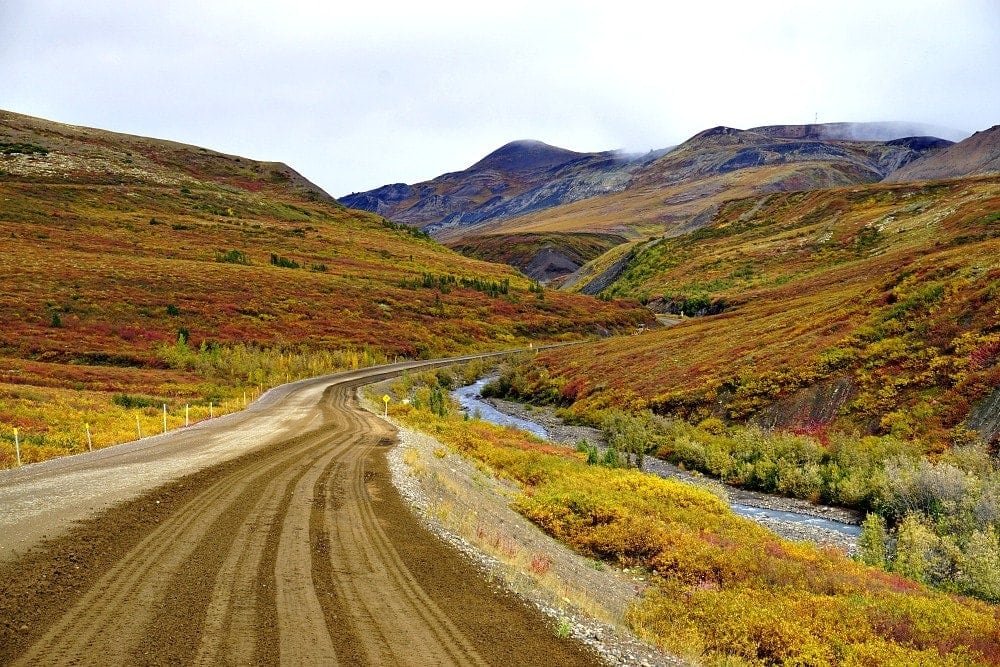
What About Gas?
If you have gas, we recommend cracking the window for the sake of your passengers. Oh, you mean fuel. Gotcha. Fuel is everywhere. Although the distances between major cities can be well over 1,000 kilometres, there’s generally some sort of service station or small town every 200-300 kilometres. The only place we were worried about finding gas when we needed it was on the Dempster Highway up in Canada’s Arctic. However, even there, you’ll find a service station with 450 kilometres. Aside from areas like that, you shouldn’t have to worry about gas. However, we recommend trying to stay above half a tank of gas, just in case.
FAQ – Questions We Get Asked
When traveling long distances, is it better to book hotels in advance or just find one on the highway?
Generally speaking, you should be able to find one on the highway or in a city or town without booking in advance. However, this largely depends on where you are and what time of year. For example, in Newfoundland during the very busy summer months, you should book in advance. In bigger cities, you won’t have as much of an issue, unless there’s a big event happening. One thing we often do if we’re unsure is to do a preliminary search using Expedia or another hotel booking site. If availability is looking low, we might book it just to make sure. If there’s lots of availability and/or lots of hotels to choose from, we’ll probably wait. You may even want to call the hotel and ask.
When travelling long distances, will we run out of gas? Is it just wilderness?
We often get asked this question from people coming from Europe who aren’t as used to such a wild, open area. With the exception of maybe a few places in the deep north, there are gas stations all over the place. Most vehicles these days can go 500-800 kilometres on a tank of fuel, so making it to another one along the highway is easy. However, it’s still important to pay attention to your fuel gauge and not wait until you’re almost empty. If I have a half tank of gas and see a gas station during a long road trip, I generally stop and fill it up. It’s always nice to stop every 2-4 hours and get a stretch anyways.
Should we get travel insurance?
No matter where you go, we always recommend having travel medical insurance at the very least. It’s not usually very expensive and in the case of an accident, you’ll be happy you have it.

Planning a Canada Road Trip
The amount of planning you need to do will largely depend on the length of your trip. However, it’s not like you can’t just jump in a car and start driving. As long as you’re very flexible, you’ll have a great time even without planning. However, if you have a strict budget or certain things you absolutely want to do, doing some planning in advance will pay off.
If you have any questions, please let us know in the comments below and we’ll answer them. We’ll also update this page with more information for everyone.
Most importantly, have fun!
For more road trip articles, check out:
- Calgary to Banff
- Banff to Jasper
- The Best Canada Road Trips
LIKE THE ARTICLE? PIN IT!

About Matthew G. Bailey
Matthew G. Bailey is the founder and editor-in-chief of Must Do Canada. Growing up in Alberta to a mother from Quebec and a father from Newfoundland, Matt spent his childhood playing hockey under the Northern Lights and hanging out in the forest before moving to Calgary and travelling to more than 250 cities spanning 42 countries and 6 continents. He loves travel, learning new things, playing sports, writing, making videos, photography, and scuba diving. You can also find him at LiveLimitless.net .
Reader Interactions
June 5, 2019 at 3:46 pm
I cant wait to road trip across NL this summer.
June 5, 2019 at 4:51 pm
I bet! We’re going back in June. Such a great place!
December 27, 2020 at 3:50 pm
I absolutely loved this article! Question: do you guys actually help plan a trip for someone? 😆😬
December 27, 2020 at 5:21 pm
Thanks! We’ve thought of offering that as a service. Just not sure what we would charge, etc. Are you planning a big trip?
August 2, 2021 at 9:22 pm
This is so helpful! My friend and I are planning to drive from Montreal to Alberta in a month and the blog is incredible! One question, I know Banff is a really popular place, show we worry about booking for a single night in September? Thank you so much!
Should we worry* My bad!
August 3, 2021 at 10:28 pm
Thanks! That’s awesome to hear. No, I don’t think so. We just went for one night last week and booked the same day. Normal years, it might be tough, but this year, no problems!
January 17, 2024 at 5:10 am
this is so helpfull. Plan on driving across Canda April may this year. Any tips on car hire, as we will fly into Vancouver from Australia. also what should we do about phone coverage?
January 18, 2024 at 8:45 pm
Hmm, good questions. For car rentals, I just use either carrentals.com or Expedia. For sim cards, I haven’t done it but many places do pre-paid sim cards. For example: https://www.speakout7eleven.ca/deal
Leave a Reply Cancel reply
Your email address will not be published. Required fields are marked *
Please enter an answer in digits: seven − four =
This site uses Akismet to reduce spam. Learn how your comment data is processed .

© 2022 Must Do Canada. All Rights Reserved.
Things to Do in Canada
- Privacy Policy
- Work With Us
- Get in Touch
- Facts about Canada
- Canadian Languages
- Canadian Money
- Canada Flags
- Things to Do in Calgary
- Best Canada Road Trips
- Best Road Trip Essentials
- Fall in Canada
- Travel Resources
National Geographic content straight to your inbox—sign up for our popular newsletters here

How to plan the ultimate road trip adventure in Canada
Whether along polar highways, coastal roads or through the rainforest, taking a road trip in Canada is to encounter some of the world’s most spectacular natural sights
Canada is one of the rare places on Earth where wide, well-maintained roads carve their way through remote, uncompromised wilderness. Behind the wheel of a car, you can skirt the icy feet of glaciers, wind through forests populated by foraging megafauna, climb Rocky Mountain slopes and explore storm-sculpted coastlines, where ocean waves are plied by migrating cetaceans. Adventurous travellers can even explore the all-season Dempster Highway, which runs from boreal wilderness north through the Arctic Circle and on to the stark polar coastline.
It’s for this reason that road trips are not to be rushed in Canada, a country that’s home to the second-longest national highway in the world. Scenic A-to-B drives are a thrill in themselves, but the joy of making it this far into the wilds is allowing plenty of time to get out and explore. After all, across provinces and territories like British Columbia and the Yukon, there are near-endless opportunities for mountain hiking, wild swimming in remote lakes, white-water paddling in a dugout canoe or back-country cycling under endless skies. In Nova Scotia, meanwhile, lighthouses lead drivers to coastal villages, where roadside inns serve seafood chowders to ancient recipes and words are still spoken in French Acadian and Scottish dialects. To get where your car or feet won’t reach, fly-and-drive opportunities abound. In British Columbia, seaplanes fly low above Pacific temperate rainforests and rugged coastlines, gently setting down on lakes for a spot of bear-watching. Over in the Yukon, small excursion planes access stellar sights like Kluane National Park, which has the world’s largest non-polar ice fields.
Motorhomes and RVs are another popular travel choice, allowing your accommodation to come right along with you where it may otherwise be scant — and the country’s regions and territories have plenty of campgrounds that supply vehicles with power and water. There’s a lot to be said for camping in Canada, be it with a motorhome, the pre-set tents and cabins often available for rent in national parks, or a simple sleeping bag, as long as you follow local guidelines about wildlife and safety. You can expect evenings entirely devoid of light pollution, lit with a dazzling canopy of stars and — season and northerly latitude depending — a never-setting sun or heavenly displays from the Northern Lights.

Itinerary 1: British Columbia
Start: Vancouver Finish: Tofino Distance: 410 miles Time: 7 to 10 days
The great outdoors? Make that the greatest. British Columbia, on the west coast of Canada, has all the ingredients to set any wilderness-lover’s pulse racing, from driftwood-strewn beaches to vast forests of evergreen giants, under whose canopies you’ll experience the hush and reverence of a cathedral. It’s here that some of planet Earth’s most charismatic creatures roam: galumphing grizzlies, skittish black bears, cougars and even elusive coastal wolves, which pick their way between glacier-fed inlets to feast on the Pacific’s larder.
To get into the thick of it you must first pass through Vancouver, the province’s largest city — and surely a contender for the most scenic on the planet, above which floatplanes circle like honeybees over a hive. Amid the totem poles and skyscrapers in and around Stanley Park is one of Canada’s most exciting food scenes, known for innovative fine dining and hyper-local dishes. You can budget a week to take in the city and west coast of Vancouver Island, but it’s worth tacking on a few days to add one of the country’s most scenic routes to the itinerary: the aptly named Sea to Sky Highway, which winds up to the mountain resort of Whistler. After a ferry hop across the Strait of Georgia, island life awaits, with the soaring cedars of Cathedral Grove, windswept beaches and boardwalked trails of Pacific Rim National Park Reserve, and pretty Tofino, the laid-back surfer town few ever want to leave.

Six highlights in British Columbia
1. Vancouver Vancouver sits in all its glassy glory between peaks and sea, with the old-growth forests of Stanley Park at its heart. Search for its nine Indigenous totem poles, then the choice is yours: seek out the new constellation of Michelin stars or slip south in search of spicy wontons on the Richmond Dumpling Trail.
2. Whistler The Sea to Sky Highway climbs up from Vancouver with rock walls on one side, the Pacific on the other and nothing ahead but sky. Make for Whistler, home to North America’s biggest ski resort and a hiking hotspot, and visit the Whistler Train Wreck, which has turned the site of a rail accident into a graffiti venue. Time your trip back into town with dusk for the best chance of spotting black bears.
3. Nanaimo The rest of the trip is on Vancouver Island, which can be reached via a 30-mile ferry crossing from the mainland to the town of Nanaimo. Stick around to try a classic Canadian treat, the Nanaimo bar (coconut crumbs, custard icing and chocolate ganache). It was invented here, and there’s even a trail to tick off all varieties in town.
4. Cathedral Grove En route to the coast, the highway runs through MacMillan Provincial Park. Fringing both sides of the road is one of the world’s few easily accessible stands of old-growth temperate rainforest, where you can stroll along fern-lined trails between mammoth trunks and branches draped with lichen.
5. Pacific Rim National Park Reserve Head on and through Pacific Rim National Park Reserve, a protected swathe of evergreens protruding on rocky fingers into the Pacific. Wander by Long Beach, best known for surfing and storm-watching, or head into the forest tracing the pawprints of coastal wolves.
6. Tofino A town of First Nations art galleries and surf shacks at what feels like the edge of the world, Tofino is as chilled as it is picturesque. End the journey at Long Beach Lodge Resort, where cottages peek out from spruce trees a few steps from the coast. longbeachlodgeresort.com

Itinerary 2: Yukon
Start: Whitehorse Finish: Latitude 66° 33’ Arctic Circle Distance: 605 miles Time: 7 to 10 days
There’s nowhere like the Yukon for feeling like a pioneer-era explorer. Reaching above the Arctic Circle and dotted with gold rush towns, glacier-topped mountains and highways through boreal wilderness, this northerly territory is over three times the size of England, populated with far more creatures of fur and fin than people.
Start in Whitehorse, the local capital city and travel hub, where the great Alaska and Klondike Highways meet. Then, it’s on to Dawson City, rich in gold rush history, and up the Dempster Highway — Canada’s only all-season public access road to the Arctic Circle — before tracing your route back to the start. Even allowing seven to 10 days for this itinerary, drives between major stops can take up to six hours, so plan ahead to access garages, shops and service suppliers in the larger towns and cities. On the plus side, there will be plenty of spectacular places to stretch your legs. The looped hiking trails at Five Finger Rapids between Whitehorse and Dawson, for example, take in mountaintop panoramas with the chance to kayak and canoe.
And if all that’s not enough, Haines Junction, just under two hours west of Whitehorse, is a great addition to either end of this itinerary. Here, short flightseeing trips take you over the world’s largest non-polar ice fields: the glaciers of Kluane National Park.

Five highlights in the Yukon
1. Whitehorse The 1890s encampment on the Yukon River’s White Horse Rapids has grown into the Yukon’s lively capital. Midnight Sun Coffee Roasters has artisan brews and bike hire, perfect for freewheeling the Waterfront Trail spanning the city. Next, explore the SS Klondike , a 19th-century boat-cum-museum revealing the scale of the region’s gold rush, and enjoy the wild game menu at Klondike Rib & Salmon, which is housed in the city’s oldest operating building. Nearby, Yukon Wildlife Preserve , Emerald Lake, Miles Canyon and Takhini Hot Springs offer further action and adventure.
2. Dawson City Make sure you have a full tank of petrol: it’s around a six-hour drive to the next stop. You can top up on food an hour in at Braeburn Lodge , famed for its delicious, dinner-plate-sized cinnamon buns. Your destination, the atmospheric frontier town of Dawson City, has welcomed both dignitaries and the desperate over the centuries, including pioneer-era author Jack London, whose wood cabin is now a museum . Take in this national historic site’s old theatres, clapboard houses and saloon bars on a walking tour. A must-see is the Sourdough Saloon, located in The Downtown hotel, which serves the infamous Sourtoe Cocktail (a strong alcohol of your choice, with a preserved human toe in it). Just beyond town, the Klondike fields are where Canada’s gold rush began in 1896. Try gold-panning at Discovery Claim National Historic Site and get a view of it all from Midnight Dome lookout; during the colder months, the panorama is often lit by the Aurora Borealis.
3. Dempster Highway Wind your way along the Dempster Highway through remote tundra towards the dramatic wilderness of Tombstone Territorial Park, about an hour north of the Dempster Corner turnoff. Named for its craggy granite peak, the park is populated by wind-carved mountains and scenic viewpoints like North Fork Pass and Two Moose Lake. Numerous trails crisscross this ‘Patagonia of the North’.
4. Eagle Plains The road winds along the Ogilvie River Valley then climbs to the Eagle Plains plateau for spectacular views of the region. This is more or less halfway along the Dempster Highway, before it heads into the Northwest Territories. Eagle Plains Hotel , the only one for many miles, is a hub for travellers to exchange tales from the road and refuel (try the double-decker Arctic burger). The town also has an RV park and campground.
5. Latitude 66° 33’ Arctic Circle You’ve reached the end of your journey — and what an end it is. Just an hour’s drive north of Eagle Plains is latitude 66˚ 33’N, better known as the Arctic Circle, marked by a roadside sign. Despite its icy connotations, it can surprise visitors: in midsummer, the sun circles the sky but never sets; in autumn (August to September), the Richardson Mountains are ablaze with fiery colours. For those keen to complete the route, it’s six hours or more to the town of Inuvik, with the Arctic Ocean a further three hours’ drive away.
Related Topics
- ENVIRONMENT AND CONSERVATION
You May Also Like

How to plan the ultimate campervanning adventure through Australia

How to plan a road trip along Ireland's Ceide Coast
For hungry minds.

The ultimate Andes road trip, from Chile to Bolivia

How to take the ultimate Florida road trip

How to plan the ultimate European rail adventure, from London to Istanbul by train

How to plan an epic road trip through the Canadian Rocky Mountains

How to plan an epic road trip through Montenegro, the jewel of the Balkans
- Environment
History & Culture
- History & Culture
- Mind, Body, Wonder
- Paid Content
- Terms of Use
- Privacy Policy
- Your US State Privacy Rights
- Children's Online Privacy Policy
- Interest-Based Ads
- About Nielsen Measurement
- Do Not Sell or Share My Personal Information
- Nat Geo Home
- Attend a Live Event
- Book a Trip
- Inspire Your Kids
- Shop Nat Geo
- Visit the D.C. Museum
- Learn About Our Impact
- Support Our Mission
- Advertise With Us
- Customer Service
- Renew Subscription
- Manage Your Subscription
- Work at Nat Geo
- Sign Up for Our Newsletters
- Contribute to Protect the Planet
Copyright © 1996-2015 National Geographic Society Copyright © 2015-2024 National Geographic Partners, LLC. All rights reserved
History Fangirl
The Ultimate History Travel Blog Since 2015
13 Steps to Flawlessly Planning a Trip to Canada

Last Updated on: 19th June 2023, 06:43 pm
When people think of taking an epic trip to Canada, there’s so much to think about before you get on the plane to go! The second-largest country in the world by land, Canada takes up a whopping 11% of the Earth’s landmass.
This means that you really need to narrow down exactly what you want to do here when you start planning a trip to Canada. For example, a trip to Banff in Alberta is very different than a trip to Montreal or Vancouver Island, plus you’ll need to make a budget, check on eTA requirements, and more.
Whether you’re looking for an epic trip to one of Canada’s amazing cities or something more rugged at one of the country’s fabulous national parks, here’s exactly how to plan a trip to Canada so you can enjoy a stress-free time once you get here!
Can’t read now? Pin for later!

My Favorite Travel Booking Sites for 2023
These are my favorite companies that I use on my own travels.
Protect Your Trip via Safety Wing
Find the best city tours, day tours, bus tours, & skip-the-line tickets on GetYourGuide and Viato r .
Find the best deals on hotels & vacation rentals on Booking.com .
For English-speaking private airport transfers, book through Welcome Pickups.
For road trips and independent travel, rent a car through Discover Cars .
Find information and cruise reviews on Cruise Critic.
For packing and travel essentials order via Amazon .
Book an affordable family or romantic photography session on your trip through Flytographer (Use the code HISTORYFANGIRL for 10% off your first photoshoot).
For travel guidebooks to have with you during your trip, I always pick one or two from Rick Steves and Lonely Planet.
Planning a Trip to Canada Checklist
Follow these thirteen steps, and you’ll find that planning a trip to Canada is easier than it seems.
1. Commit to a Trip Budget

Canada can seem like a bargain if you’re coming from the United States or Great Britain, but it’s by no means a budget travel destination.
Now that I spend so much of my time traveling around Eastern Europe, I am extra sensitive to just how expensive a country in Canada is for travelers. You need to commit to a budget before you start booking things so that you can try to keep your costs under control.
If you don’t need to worry about your budget, then hurray! But you still might want to commit to a number so that you don’t come home and realize you spent twice what you expected.
How Much Should You Budget for Canada?
I think you can split it into three categories.
Budget travelers can get by on $75 USD per day plus airfare. This would mean staying in a hostel dorm, doing mostly free activities, and eating a mix of street food and groceries which you prepare at your hostel. One of the biggest costs that will blog a hole in your budget is transportation, so keep movement between cities to a minimum.
Mid-Range travelers can get by on $125-150 USD per day plus airfare. This would be doing what I typically do and sharing a double room in a mid-range hotel, doing a few guided tours and activities, and eating a mix of street food, nice meals out, and cooking for yourself. Bonus if you can find an amazing friend to stay with when you’re in Toronto to avoid those hotel prices.
Luxury travelers can have a baller time on $200-250 USD per day plus airfare. This would mean lots of guided tours and activities, eating all your meals out, enjoying more than one cocktail at dinner, buying trip souvenirs instead of mostly window shopping, and staying in a nice hotel, seeing multiple cities in one trip, etc.
2. Choose Your Travel Dates

Once you know what your budget is and you know how long you want to go, you can settle on your trip dates. Canada is a great place to visit year-round, but there are differences throughout the year.
The summer is the high travel season, so you’ll see bigger crowds in the cities and the National Parks. However, you’ll also be able to do almost any kind of tour or activity you want because most of the activities are open.
Spring and autumn are shoulder seasons when some things are closed but the crowds are smaller. I’ve spent time in Montreal in April and September. While I loved being there with fewer crowds, early April in Montreal still feels like winter to me!
If you want to see the Northern Lights, then schedule a trip to see Canada in winter! Just make sure you pack for it and select places on your itinerary where the Northern Lights are likely to appear, like a visit to the Yukon.
There are actually lots of places that you might not think of as winter destinations that are great to visit in winter! For example, Banff in winter i s nearly as popular as visiting Banff in summer!
3. Check to See if You Need an eTA or Visa Before Arrival

Canada has recently implemented an eTa process for travelers coming from countries that don’t need a visa for vacationing in Canada.
This means that many people who have traditionally not had to consider getting any documentation beforehand now need to add this extra step into their travel planning.
You should check ahead of time if you need either a visa or an eTa Canada . If you do, then make sure you apply for your eTA for Canada ahead of your trip. You do not want to show up without the required documentation!
What happens if you need an eTa and don’t get one? It’s highly likely you won’t be let into the country, so don’t forget to check!
4. Book Your Flights

Most travelers to Canada either fly into one of the country’s major airports like Toronto, Montreal, or Vancouver, or they drive across the border from the US. I’ve visited Canada many times and arrived both by crossing land borders and by flying into the country.
When booking flights, I use a combination of Skyscanner and Google Flights. Skyscanner is great for figuring out where to go, like seeing if there are any other airports in the country that happen to have a special international flight scheduled. This is rare, but it does happen. Google Flights is better for when you know where you want to fly in and out of already. It will show you all the options.
You should feel confident booking flights to Canada, but things can happen like inclement weather that interrupts your plans. This is a good reminder that you should always travel with a valid travel insurance policy because things like airline bankruptcies and snowstorms can’t be foreseen but crazy stuff happens on the road.
5. Create a Detailed Canada Itinerary

Figure out what you want to do and where you want to be based. If you want to explore Quebec, you can base yourself in Montreal or Quebec City. If you are more interested in Toronto and Niagara Falls, you’ll want to stay in Toronto.
If you’re considering a longer stay or even moving to Canada, it’s also important to think about the practical aspects of living here. For instance, if you’re buying or renting a house, you might need to consider renovations or improvements since many houses can be of old style or inefficient in terms of thermal performance.
Renovations can vary in cost depending on the scale and type. Here’s a rough estimate of the most popular home improvements that can be supported by governments (you can claim rebates/grants/loans) and come with high ROI:
- Kitchen and bathroom renovations can range from $10,000 to $60,000.
- Canada doors and windows replacement can cost between $3,000 and $10,000, depending on the size and quality of the materials.
- Other renovations like roof replacement or basement finishing can range from $5,000 to $30,000.
First-time buyers or young homeowners usually go with the cheaper renovations, yet those that bring maximum value, like new windows and doors, so if you want to know the price figures of your potential replacement project, do not hesitate to use this window cost estimator .
High-quality doors and windows can significantly improve your home’s energy efficiency. This is particularly important in Canada, where the weather can be extreme. Good energy-efficient models can help keep the heat in during the cold winter months and keep the heat out during the summer, ensuring a comfortable living environment all year round.
You might not be able to check off everything on your Canadian bucket list, but you can try!
Look up what you want to do in each place and about how long each activity will take. This will help you decide how long to be in each location before you’re ready to move on.
6. Book Your Accommodations

I use Booking to book my hotel rooms because they have a pretty flexible cancelation policy (unless you pick the no-cancellation rooms). They have a large selection from hotels to hostels to private apartment rentals (similar to Airbnb).
You want to book your accommodations early. If you’re looking for a good deal, they get snapped up because so many people are trying to save money when traveling here. This is extra important if you’ll be visiting during high season or attending a popular event like the Calgary Stampede.
You should set aside this much for your budget per night (though this can change a lot depending on what part of the country you are in):
- Budget: A room in a hostel, usually $20-30 USD per night for a dorm bed.
- Mid-range: Around $50-75 USD per night
- Luxury : Around $150 per night or more
7. Book Your Activities

I use GetYourGuide to book my activities and tours because they tell you who the actual tour operator is so you can check their reviews independently on websites like TripAdvisor. They also have awesome customer service, which I learned when I needed their help dealing with a bad tour in Dresden.
There are two more reasons to use GetYourGuide specifically while in Canada. The first is that things sell out, so if you wait to book through your hotel or hostel there might not be any spots left. The second reason is that booking tours through your accommodations typically cost more money than booking online.
I have a lot of specific activity suggestions for anyone staying in Montreal. You can see them on my guide to the most Instagrammable places in Montreal .
8. Research Vaccinations

Wondering if you need vaccines before you go to Canada? According to the CDC travelers should have:
Routine Vaccines: Make sure you are up-to-date on routine vaccines before every trip. These vaccines include measles-mumps-rubella (MMR) vaccine, diphtheria-tetanus-pertussis vaccine, varicella (chickenpox) vaccine, polio vaccine, and your yearly flu shot.
Measels: Infants (6 through 11 months old): 1 dose of measles-mumps-rubella (MMR) vaccine before travel. This dose does not count as the first dose in the routine childhood vaccination series. People 12 months old or older, with no evidence of immunity or no written documentation of any doses: 2 doses of MMR vaccine before travel. The 2 doses must be given 28 days apart. People 12 months old or older who have written documentation of 1 dose and no other evidence of immunity: 1 additional dose before travel, at least 28 days after the previous dose.
Bottom line is that most travelers just need routine vaccinations, but you should double-check the CDC for any changes.
9. Learn How Language Works in Canada

Canada is a bi-lingual nation. Don’t show up in rural Quebec and expect everyone to speak English, and they may even be offended if you don’t speak French.
While most Quebecois that I’ve met are perfectly happy to switch to English for someone who’s a foreigner, if they think you’re Canadian they’ll expect you to speak to them in French.
10. Prepare for Your Arrival

Plan what you’ll do on your first day. This means figuring out how to get to your accommodations (next step), checking what time you can get to your hotel (many flights get in before you can check in to your hotel), and communicating with your accommodations if you need to.
Other things to think about is if you’ll be getting a sim card in Canada or using your plan from home. Call your cell phone company if you need to have your cell phone unlocked so you can get a sim or if you need to let them know that you need international coverage.
Full disclosure: I found the prices for tourist sim cards in Canada to be outrageous and chose not to use one.
Organize your travel documents, including your passport, eTa if required, instructions for getting to your hotel, and emergency information like travel insurance. You’ll want to have these all easily accessible and within reach during your travels.
11. Book Ground Transportation

You need to know how you’ll get to your accommodations after your flight arrives. If you’re flying into Toronto, keep in mind that the airport is connected to the city center by an easy train ride. However, taxis and Uber are pretty expensive if you want to go out this far.
Research every airport’s best connection to the city center and make sure you know your options.
If you are from another country and planning a road trip in Canada then you need to get an IDP on International Driver’s Association .
12. Purchase Travel Insurance & Send Policy Information to Your Emergency Contact

Never travel without a valid travel insurance policy , because accidents happen on the road. I pay for World Nomads when I travel, and I happily recommend them.
It’s especially important to get travel insurance when you’ll be doing any outdoor activities (like…ahem…exploring Banff national park…) since accidents happen.
Or in cities (like…Montreal and Toronto) where travelers are targeted by pickpockets.
TL;DR, all of Canada is lovely and safe, but you still want to be prepared.
I have been a paying customer of World Nomads for travel insurance for three years, and I happily recommend them. It’s especially important to get travel insurance when participating in outdoor activities or driving in foreign countries. Even in the cities, though, you’ll be happy when you’re able to replace your stuff if it’s lost or stolen.
Get a travel insurance quote for your trip.
13. Pack Your Bags

Your trip is near and it’s time to pack your bags! I have packing lists for Toronto and Montreal so you know what to bring with you, but here are five things you want to make sure not to forget:
The Lonely Planet Canada guidebook for your trip. I used a Kindle version during my first few trips to Canada. It’s hard to find guidebooks once you’re actually on the ground.
Backup Charging Bank for your cell phone since you’ll be using it as a camera, GPS, and general travel genie.
A Camera since Canada is super photogenic. I use a mix of my Nikon D810 and my Samsung8 smartphone these days.
A Full-Sized Travel Towel for anyone taking advantage of Canada’s hostels or private accommodations. This is the best travel towel in the world , and you’ll need it if you are staying in hostels or anywhere that requires you to bring your towel.
Travel Insurance Policy information. If you have travel insurance, you need to be able to access the information easily in case of an accident or another incident. I have my travel insurance company recommended below.
Read Next: Toronto Packing List: the Ultimate Guide to What to Pack for Toronto
More Canada Travel Resources

Headed to Canada? Check out my favorite Canada quotes and Canada puns for your trip.
If you’re going to spend time in Montreal, check out my Montreal souvenir guide and Montreal’s best Instagram spots .
If you’ll be spending time in Ontario, I have guides to visiting Ottawa’s Rideau Canal plus histories on Toronto’s CN Tower and Canada’s role at the end of the Underground Railroad.
Still need ideas? Plan your trip to Canada with cozycozy.
Pin This Guide to Planning a Trip to Canada for Your Travels

In this Article:
Leave a Comment Cancel reply
Nomadic Matt's Travel Site
Travel Better, Cheaper, Longer
Canada Road Trip: A One Month Suggested Itinerary
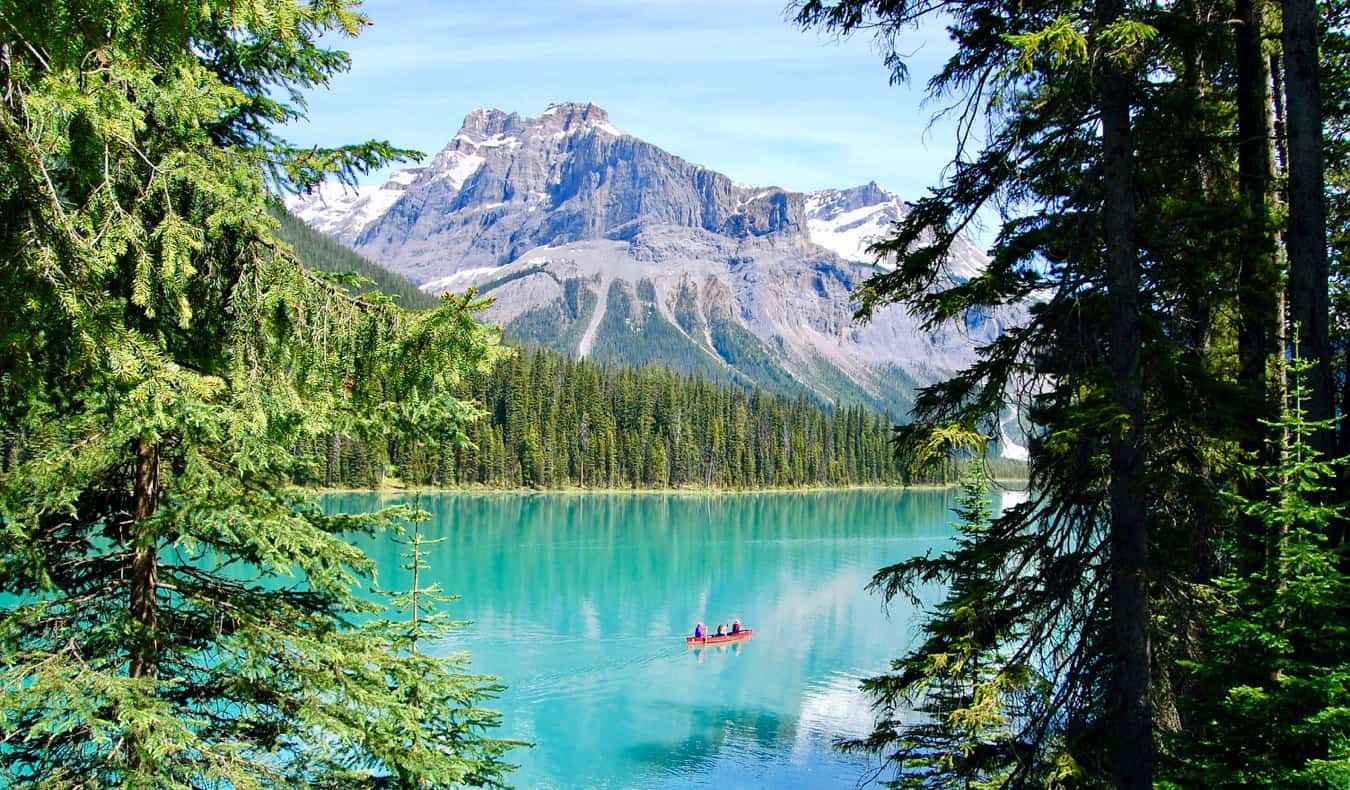
Spanning 9,306km (5,780 miles) and six time zones, Canada is the second-largest country in the world. It’s home to rugged coastlines, vast prairies, dense boreal forests, towering mountain ranges, and upwards of two million lakes.
But what makes Canada special is its people. It’s a place that embraces its diversity and that encourages people to be friendly, caring, and polite.
Due to its large size, though, traveling across Canada can be a little challenging. Domestic flights are prohibitively expensive due to low competition and, outside of the eastern part, trains don’t go many places.
That means if you really want to see Canada, you need to drive.
To help you explore this amazing country, Chris Oldfield, our Canadian team member , helped create this suggested itinerary for a one-month road trip. It’s packed, since you’ve got a lot of ground to cover. However, it’s also not too rushed (though you can easily extend this out to six or eight weeks as well).
(Note: Canada is huge, and there are many routes and itineraries you can take. This one is by no means comprehensive but instead meant to give you a good overview and introduction to the main cities and sights.)
Days 1-3: Vancouver, BC
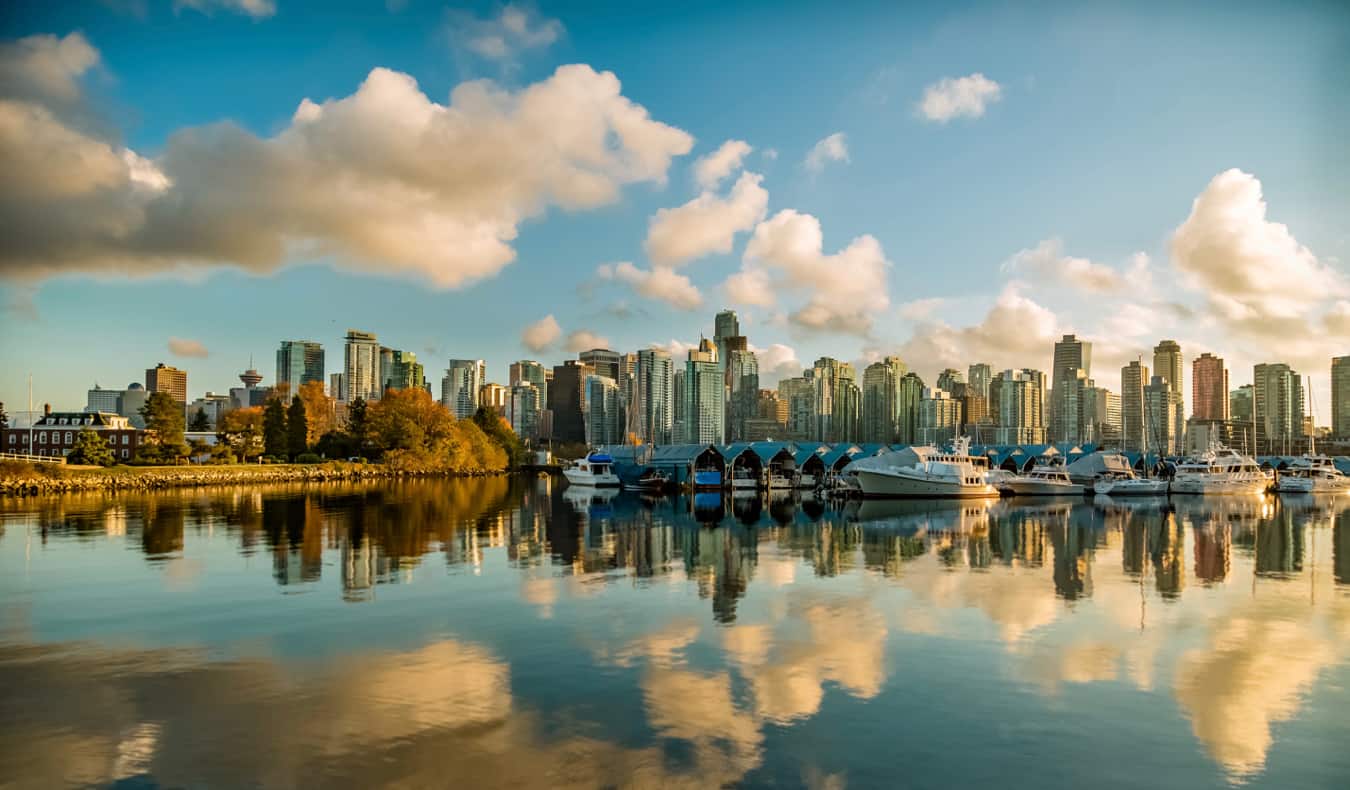
It’s also the third-largest city in Canada, so there’s plenty to see and do while you’re here. There’s an amazing foodie scene here too.
Here are a few suggestions to help you start your trip off right:
- Visit Granville Island – Granville Island is a shopping district in the middle of the city. It’s also a hub for foodies. Explore the public market, grab a beer at Granville Island Brewing Company, and wander the cool shops. There are also galleries, some performing arts venues, and all kinds of events and festivals held here too!
- Enjoy the view from Grouse Mountain – Ride the gondola to the top, where you can enjoy the view over the metropolis and mountains. There are lots of trails for hiking in the summer and sections for skiing and snowboarding in the winter. You can also hike to the top (which takes 1.5–2 hours) and then take the gondola down for just $15 CAD.
- Relax in Stanley Park – Located in the heart of the city, this enormous park (a 400-hectare natural rain forest) is a perfect place to escape the hustle and bustle of downtown. Its waterfront path right on the Pacific is a nice place to go for a stroll, swim, or bike ride. There are also sports fields here and over 20km of trails.
- Walk the Capilano Suspension Bridge – This 450-foot long suspension bridge stands 230 feet high and offers views of the surrounding forests and trails. I don’t love heights, but it’s worth it for the view! Tickets are $54 CAD.
For more suggestions, here’s a detailed list of things to see and do in Vancouver .
Where to Stay
- Cambie Hostel Gastown – Located in the historic Gastown district, this hostel has comfortable beds, a small common room for hanging out, and access to The Cambie, the hostel’s bar.
- HI Vancouver Downtown – Tucked into a quieter part of town, HI Vancouver Downtown is in a good location for exploring the popular Granville and Davie Streets, which offer plenty of cafés, bars, clubs, restaurants, and shopping.
- Samesun Vancouver – With cozy pod beds, clean bathrooms, a fully equipped kitchen, and free breakfast (including eggs and hot cereal), this is my favorite hostel in the city.
Here is my complete hostel list with even more suggestions!
Day 4-5: Whistler, BC
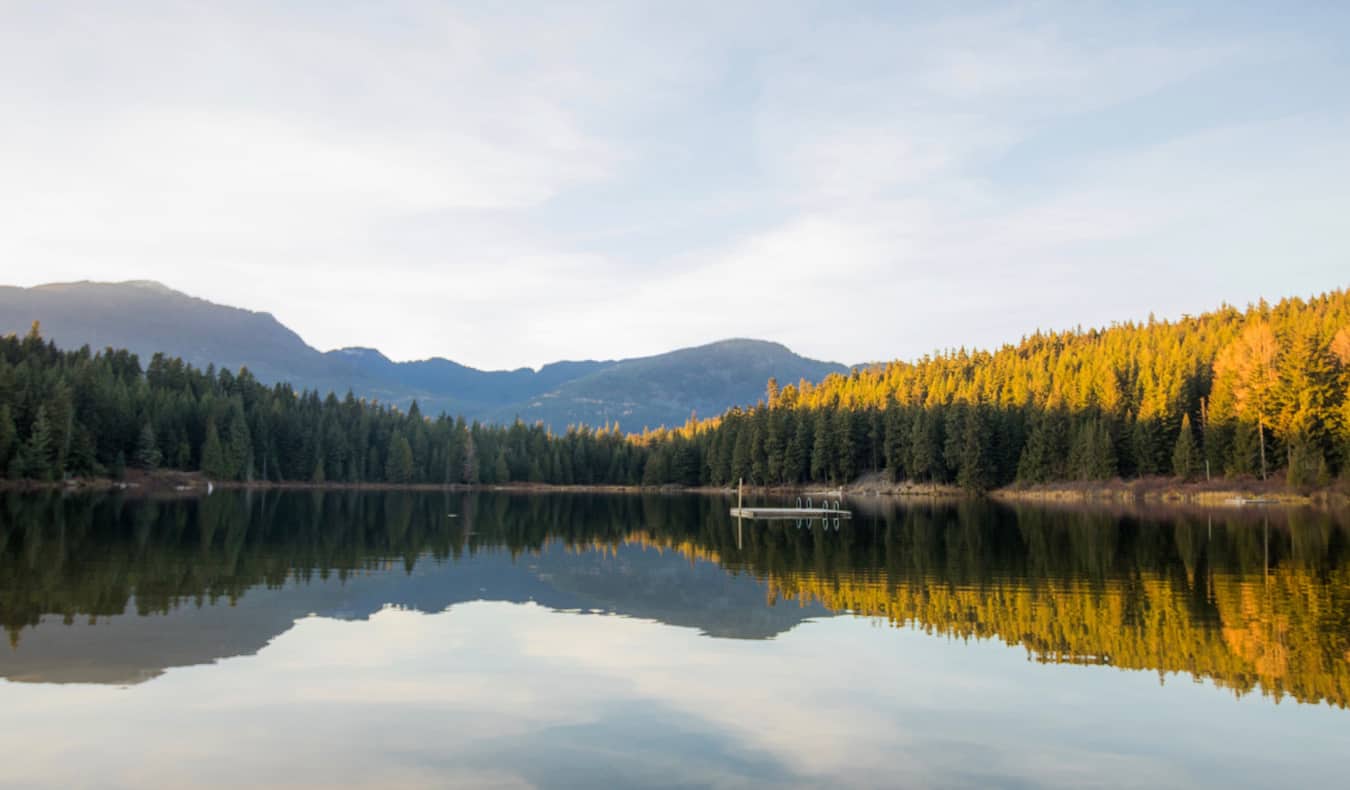
In the summer, there are tons of outdoor activities to enjoy such as hiking, swimming, cycling, zip-lining, and bear watching. There’s also a 4.4km peak-to-peak gondola where you can enjoy the stunning mountain vistas that envelop the region.
Where to Stay Airbnb and Booking.com will be your best choices here. Book in advance, as they get booked fast!
Days 6-8: Banff National Park, AB
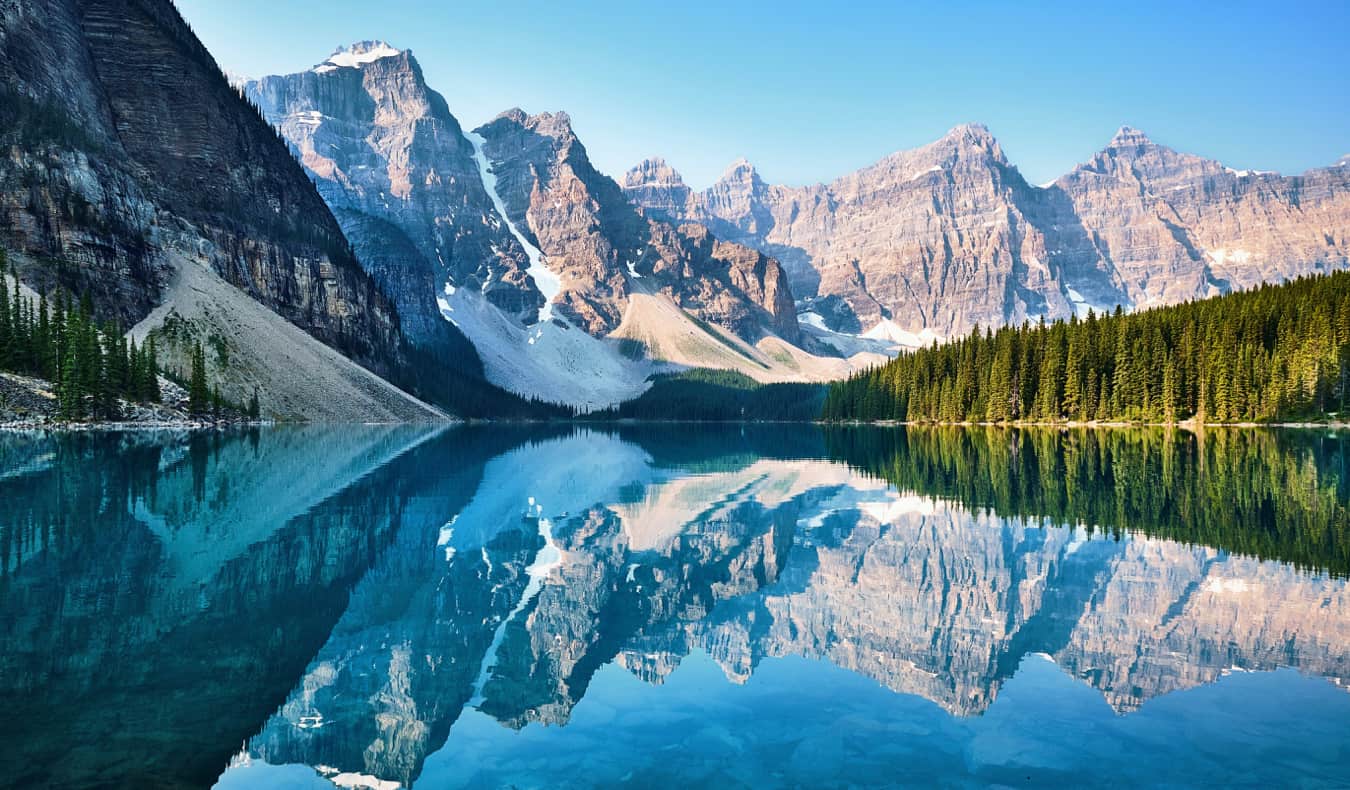
Banff is home to two of Canada’s most picturesque (and most Instagrammed) locations: Moraine Lake and Lake Louise. They are incredibly popular sights, so get there early to beat the crowds.
Beyond snapping some Insta-worthy shots, there is plenty of hiking to enjoy in the surrounding mountains. It’s a beautiful place to relax in a rustic lodge or cabin or go camping (you can rent camping gear if you don’t have any).
Be sure to spend some time in the town of Banff as well. It’s a touristy resort town but it’s also super quaint and charming.
Where to Stay Airbnb will be your best option if you’re on a budget. If you feel like splurging on a luxury resort or lodge, use Booking.com .
For camping, you can use this government website to book a site in the park.
Note : If you have more than a month for your trip, consider a stop in Jasper National Park before heading to Banff. It’s an extra nine-hour drive from Whistler but the natural beauty here is jaw-dropping (seriously, google “Jasper National Park” — it’s stunning!).
Days 9-10: Calgary, AB
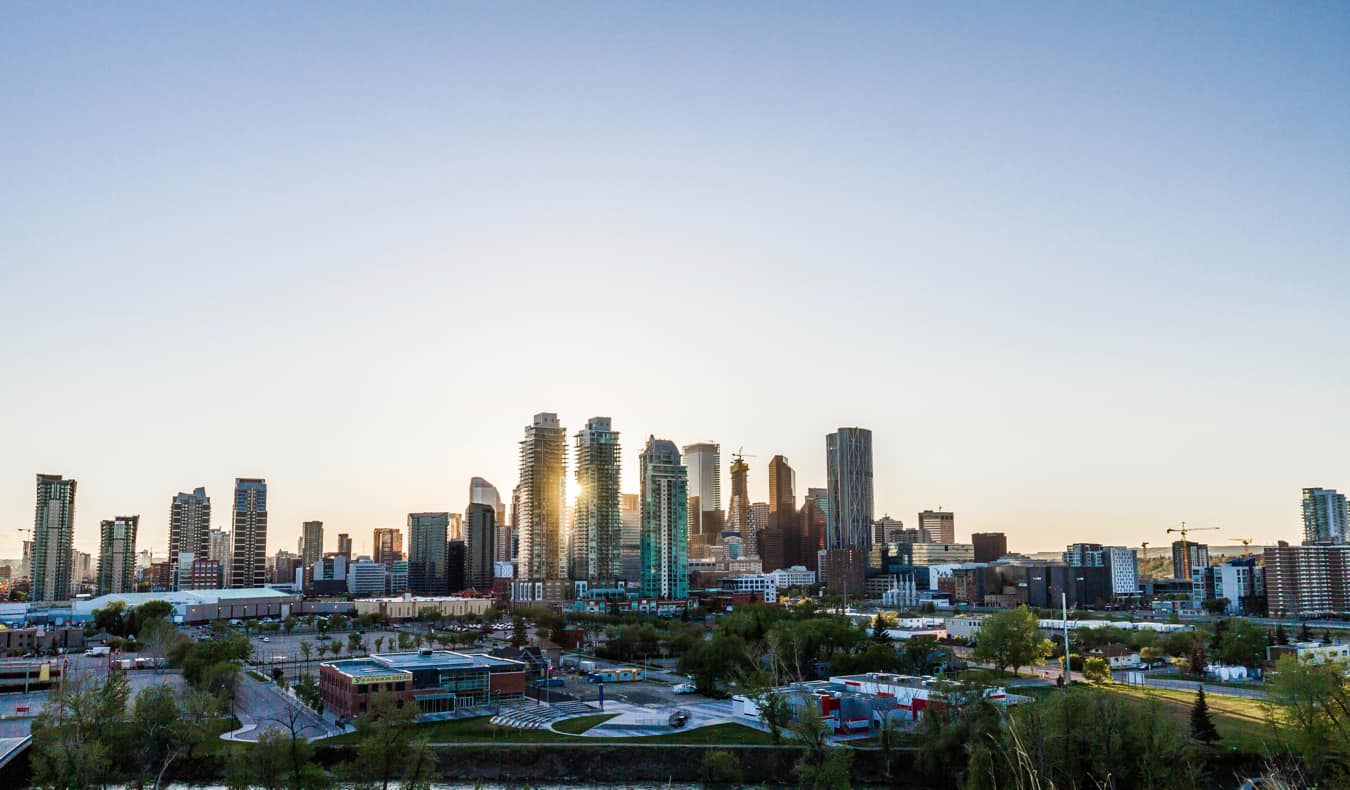
Here are a few things to see and do during your visit:
- Attend the Calgary Stampede – The Calgary Stampede is an annual rodeo. Expect chuckwagon races, bull riding, concerts, carnival rides, and endless fair food (deep-fried butter, anyone?). Tickets start at $18 CAD.
- Visit Fish Creek Provincial Park – Fish Creek sits along the Bow River and is perfect for walking, cycling, and rollerblading. In the summer, people come here to fish, swim, and barbecue. It’s a fun, relaxing place to get some exercise and enjoy the weather.
- Go brewery-hopping – Calgary has a huge number of brewpubs and small craft breweries. Citizen Brewing Company, Cold Garden Beverage Company, and Big Rock are some of my favorites. You can take brewery tours for around $25 CAD or do a brewery tour for around $90 CAD.
- Take in the view from Calgary Tower – Built in 1967, the Calgary Tower commemorates Canada’s Centennial. From the top, it offers an uninterrupted view of the Rocky Mountains. The observation deck has a glass floor that adds an extra thrill to your visit (if you like heights, that is). Tickets are $18 CAD.
For more suggestions, check out my comprehensive free guide to Calgary!
- HI Calgary City Centre – This is the best hostel in the city. It’s newly renovated, has a full-equipped kitchen, includes towels, and the beds are comfy.
If the hostel is booked, use Airbnb . Be sure to book in advance if you’ll be here for the Stampede.
Days 11-12: Regina, SK
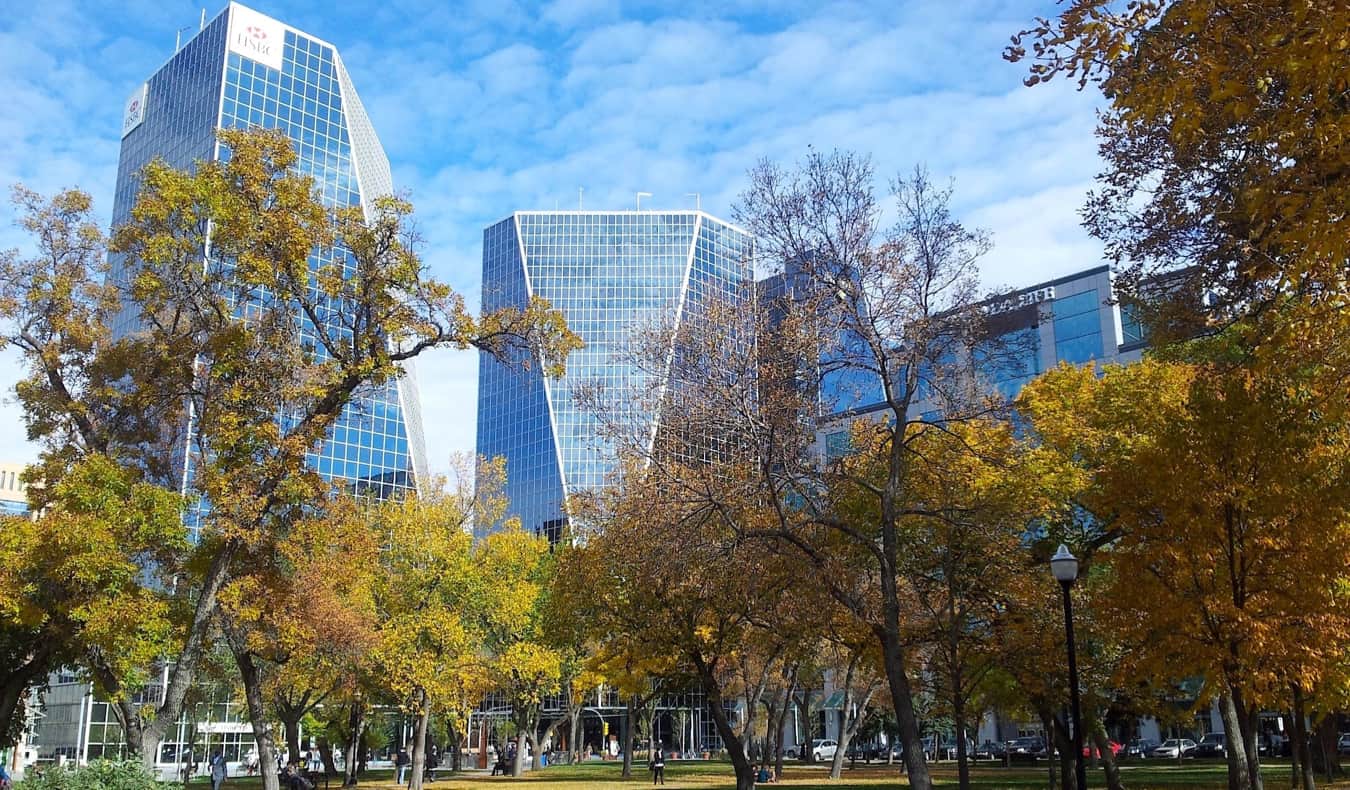
Home to under 240,000 people, Regina is a small city that’s worth a quick visit. Here are some suggested things to see and do while you’re here:
- Visit the Royal Saskatchewan Museum – This natural history museum was opened in 1906 and is home to the world’s largest T. rex cast as well as an insightful exhibition on Canada’s First Nations. It’s an educational place to visit if you’re traveling with kids.
- Watch the Roughriders – The CFL (Canada’s answer to the NFL) is popular here as Regina is home to one of the league’s best teams, the Roughriders. If you’re visiting between June and November, catch a game at Mosaic Stadium and get rowdy with the locals! Tickets start at $32 CAD.
- Tour the Legislative Building – The Saskatchewan Legislative Building was built in 1912. It’s a National Historic Site and Heritage Property and is home to one of the tables used by the Fathers of Confederation when they drew up their plans to create a united Canada. Take a guided tour (they last around 30 minutes) and learn about the province’s history.
Where to Stay Airbnb and Booking.com will be your best choices here, depending on your budget and what kind of accommodation you’re looking for.
Days 13-14: Winnipeg, MB
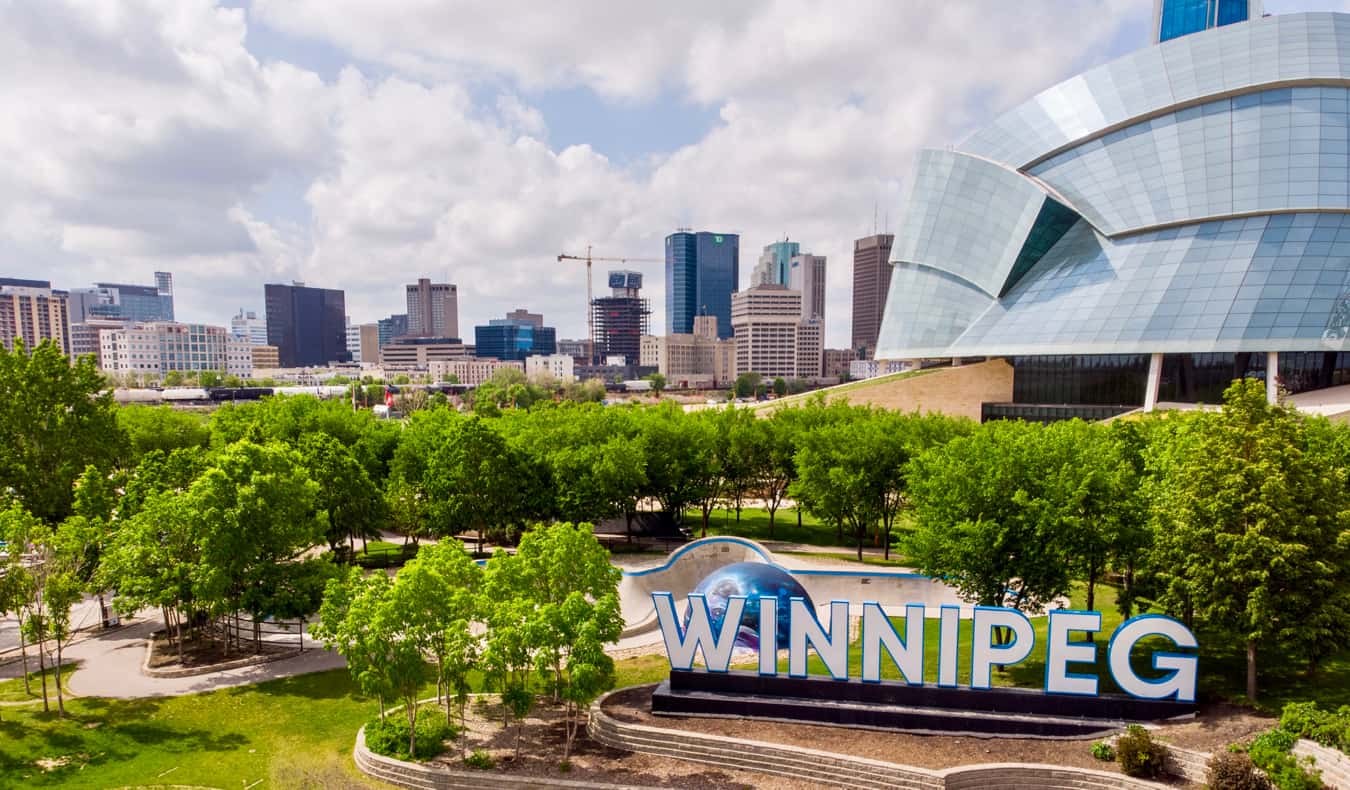
While it’s known for its harsh winters, Winnipeg has been working hard to evolve into a world-class city. Slowly but surely, it’s succeeding. Stop by for a day or two and check out some of the city’s best sights:
- See the Canadian Museum for Human Rights – This museum highlights the crises and evolution of human rights in Canada and around the globe. Opened in 2008, it’s the only national museum outside of Ottawa.
- Watch the Blue Bombers – For more CFL action, catch a Blue Bombers game. The team was founded in 1930 and is one of the best in the league.
- Explore the Forks National Historic Site – This urban park is a relaxing place to read or have a picnic. At the intersection of two rivers, it was historically significant for trade between indigenous people and Europeans, with human settlement going back as far as 6,000 years.
- Visit the Royal Canadian Mint – If you’re a collector or are just curious how coins are made, stop by the mint. It’s made over 55 billion coins for 75 different countries. Over 1,000 coins are made every second here! Tours are $8 CAD.
Where to Stay If you’re on a budget, try Airbnb first. If you’re looking for a hotel, Booking.com has the best rates.
Days 15-16: Thunder Bay, ON
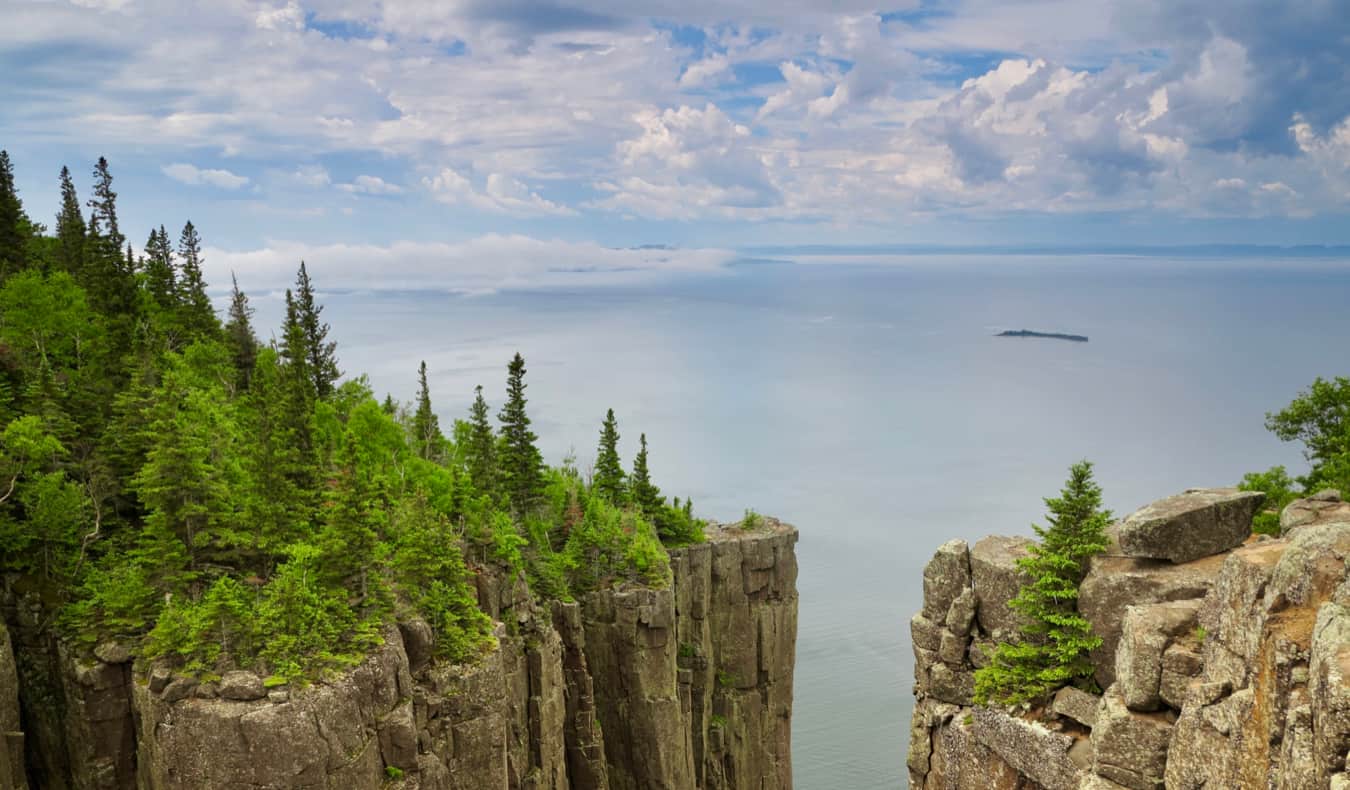
Tucked away on the edge of Lake Superior, Thunder Bay is one of the biggest cities in Northern Ontario. It’s just an hour from the US border and is one of the sunniest cities in Eastern Canada.
Here are some things to see and do while you’re here:
- See the Terry Fox Monument – In 1980, cancer-survivor Terry Fox set out to run across Canada to raise money for cancer research. He did so on just one leg (he lost the other to cancer). He managed to run for 143 days straight (5,373km, or 3,339 miles) before his cancer returned and he had to call off his quest.
- Go hiking in Sleeping Giant – Sleeping Giant Provincial Park is located on Lake Superior and offers 80km of hiking trails, including both short day hikes and multi-day routes.
- Visit Fort William Historical Park – This park is where the reconstructed Fort William is located, a fur trading post from 1816. There’s a traditional blacksmith, cooper, and canoe builder, and you can interact with actors playing the various people you would have met here in the 19th century.
Where to Stay Airbnb doesn’t have many options here, but if you can find one, they start at $45 CAD per night. For hotels and motels, use Booking.com .
Days 17-19: Algonquin Provincial Park, ON
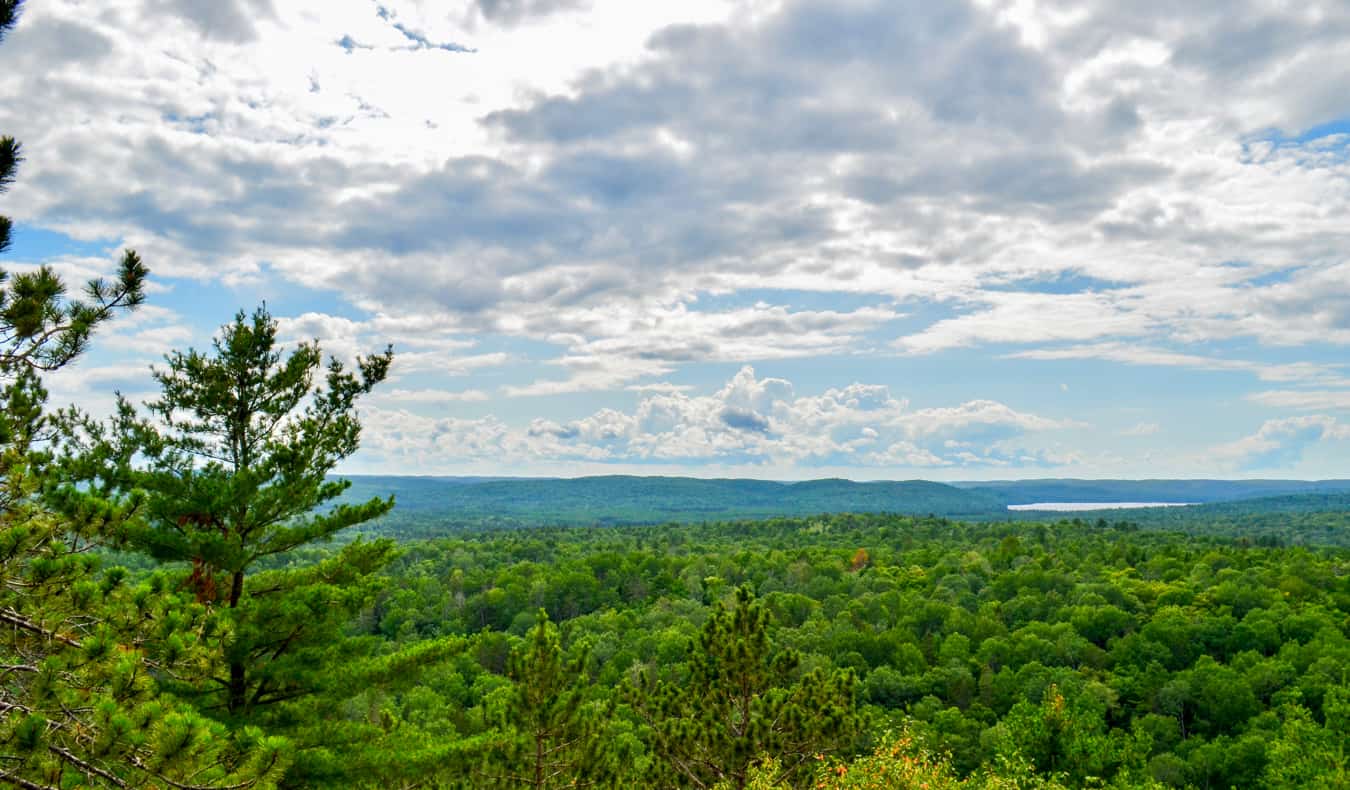
There are several different campgrounds in the park, dozens of hiking trails, and over 1,500 lakes (it’s massive!). You can also rent canoes and kayaks to explore and go deeper into the park. Multi-day portages are possible too.
Even if you’re a newbie camper and don’t have gear, you’ll be able to rent what you need to have an enjoyable, relaxing getaway for under $50 CAD per day.
Days 20-23: Toronto, ON
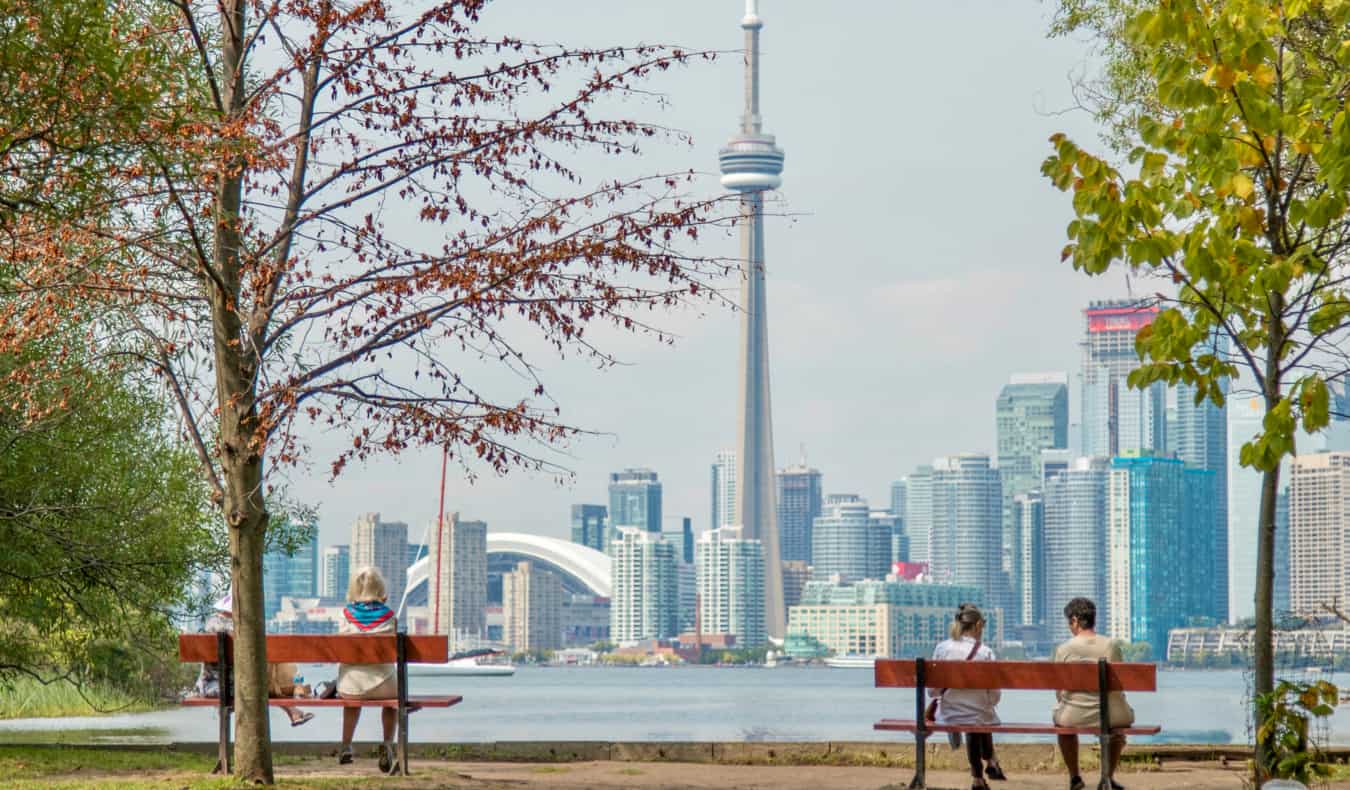
There’s a ton to see and do here. Here are a few suggestions to help you get started:
- Visit the CN Tower – The iconic CN Tower stands 550m tall and is a fixture of Toronto’s skyline. It offers panoramic views, shopping, and 360-degree dining in its (expensive) restaurant. If the weather is nice (and you have some extra money to spend), you can also walk along the outer edge of the tower. It’s touristy and expensive but fun!
- Relax on Toronto Island – Spend an inexpensive day at Toronto Island Park and enjoy the beach, play volleyball, have a picnic, and take in the view of the city from the water.
- Visit the ROM – The Royal Ontario Museum has thousands of artifacts and specimens spread over 20 exhibits. There are displays on dinosaurs, ancient China, indigenous Canadians, medieval Europe, ancient Egypt, and more. It’s the best museum in town and a fun place for kids and adults alike!
- Hit the beach – The beaches near Lake Ontario are a relaxing way to spend the day during the humid summer. You can stroll along the boardwalk, eat at one of the many restaurants, or rent a boat and head out on the lake. Some of the best beaches are Cherry, Woodbine, and Centre Island.
- Wander Kensington Market – This bohemian neighborhood offers an eclectic mix of alternative restaurants and shops. It gets quite bustling in the summer, and there are often free concerts too. It’s one of my favorite places to wander around!
For more suggestions as well as money-saving tips, check out my free guide to Toronto!
Where to Stay Hotels in Toronto are expensive, so use Airbnb if you’re on a budget. If you do want to stay in a hostel, Planet Traveler Hostel is the best in the city.
Days 24-26: Ottawa, ON
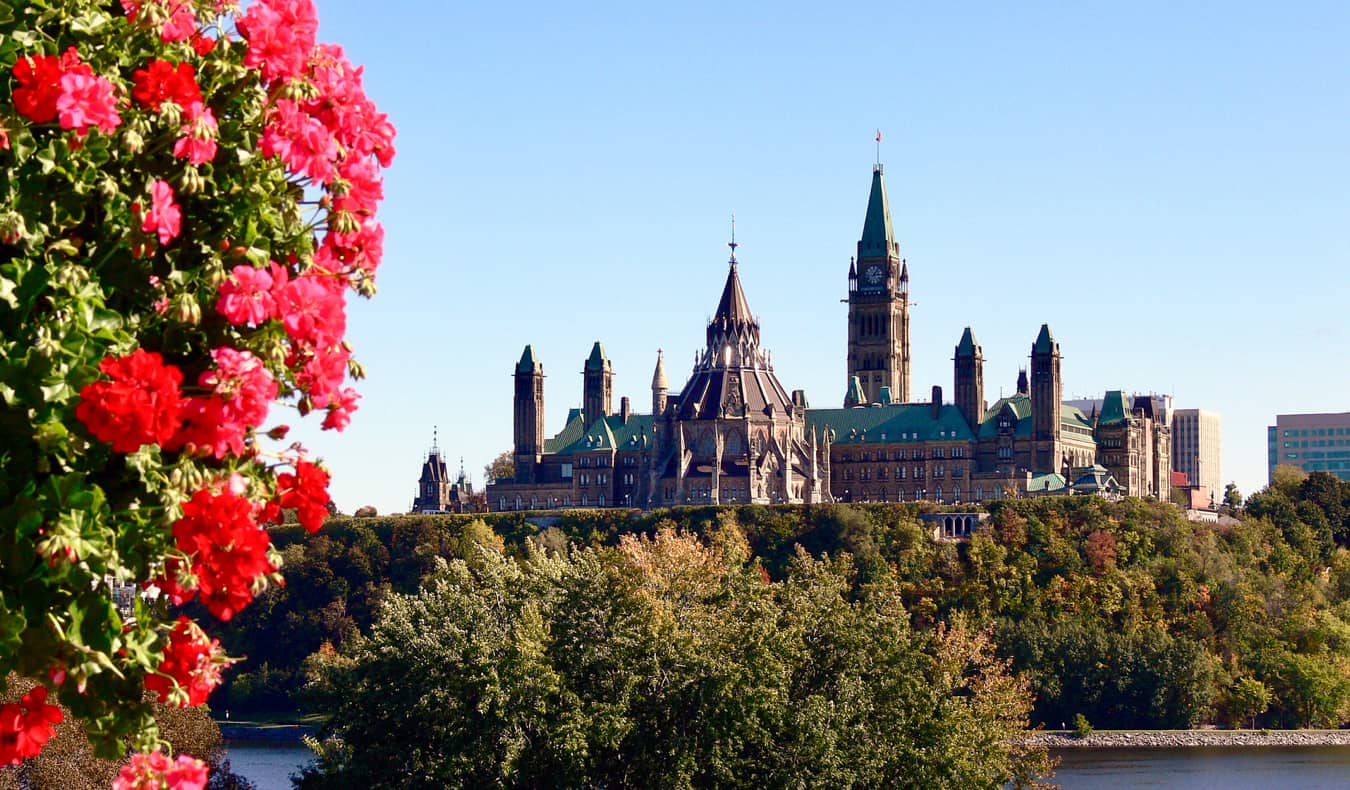
Located four hours from Toronto , it’s is full of historic buildings and museums, and is just a short walk from Québec (Canada’s French-speaking province).
Here’s what I would focus on in Ottawa during your stay:
- Wander the Byward Market – This massive market is full of restaurants, shops, and open-air stalls. There is a lot happening all year round, though in the summer it’s bustling with fresh produce and many local artisans. If you’re looking for a souvenir or just want to people-watch, this is the place!
- Visit the Canadian Museum of Civilization – While technically not in Ottawa (it’s across the river in Québec), this world-class museum is one of the best in all of Canada. It does an amazing job of showcasing Canada’s entire history, including some insightful exhibitions on First Nations. There are lots of kid-friendly exhibits too. This museum shouldn’t be missed!
- Try a beaver tail – These are not actual beaver tails, don’t worry! They’re delectable desserts resembling a flat donut, made of fried dough and covered in all sorts of sweet toppings. They’re a must!
- Visit the Canadian War Museum – Canada is known as a peaceful nation, but it’s been involved in its fair share of conflicts too. This museum does an excellent job of highlighting Canada’s military history. It has exhibits on both world wars as well as modern conflicts Canada has been engaged in.
- Skate on the Rideau Canal – Every winter, the Rideau Canal is frozen over and turned into a massive skating rink that stretches for miles (it’s the longest skating rink in the world). If you’re visiting during the winter, you can rent skates for around $20 CAD if you don’t have your own.
- Ottawa Backpackers Hostel – This laid-back hostel has some of the cheapest accommodation in the city. The dorms are spacious, it’s social, and it’s right near the Byward Market.
- HI Ottawa Jail Hostel – This hostel is located in a former jail. The rooms are small (they’re former cells), but it’s an incredibly unique space — and a little spooky too!
Days 27-30: Montreal, QC
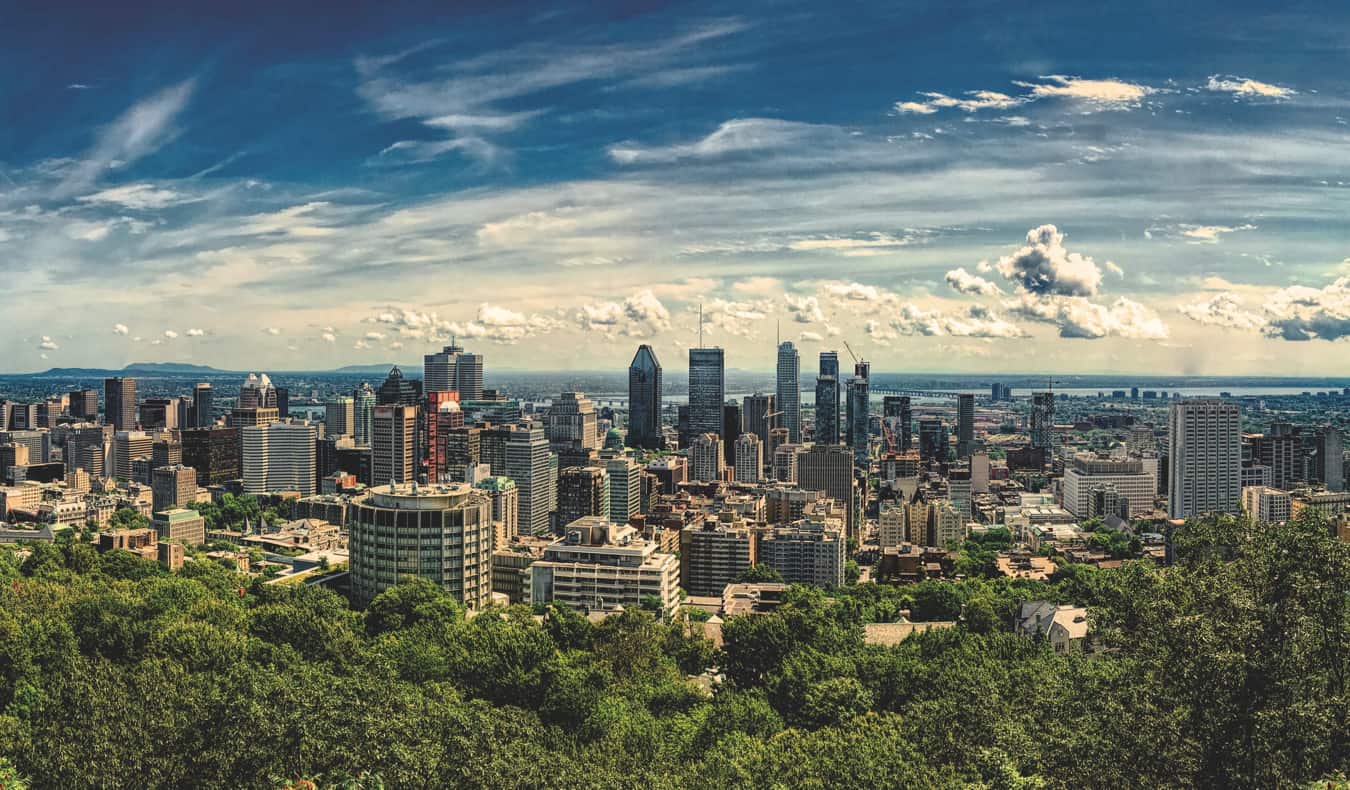
Personally, I think it’s one of the best cities in Canada. The Old Town looks like something straight out of medieval France, and the French-inspired cuisine and eclectic nightlife (especially the jazz clubs) leave little to dislike.
Here are my suggestions for things to see and do while you’re here:
- Wander Old Montreal – This is the most attractive part of town. It has cobblestone streets, and its historic gray-stone buildings date back to the 1700s. Some of the city’s finest museums and art galleries (such as the Montreal Museum of Archaeology and History) are here too.
- Hike Mount Royal – For a view over Montreal, hike up Mount Royal (after which the city is named). You can also jog, picnic, or just people-watch around the park too. It’s a relaxing green space.
- Visit the Notre-Dame Basilica – This 17th-century Gothic Revival basilica has dual towers that are reminiscent of Notre-Dame in Paris. Its interior is stunning and full of religious paintings, colorful stained glass windows, and gold-leaf decoration. There’s also a 7,000-pipe organ. A 60-minute tour costs $15 CAD.
- See the Museum of Fine Arts – This huge museum has over 43,000 works of art. There are both permanent galleries and rotating exhibitions, so there’s always something new to see. Admission is $24 CAD.
For more suggestions, as well as money-saving tips, check out my guide to Montreal!
- HI Montreal – HI Montreal is just a two-minute walk from the metro, offers both dorms and private rooms, and has a pool table. There’s also free breakfast and daily activities, including bike tours, walks, a pub crawl, and even poutine tastings!
- Alternative Hostel of Old Montreal – Located in the historic area of town and a short jaunt to the city center, it has an eclectic and artsy vibe. Free breakfast is included, and there are plenty of common areas for relaxing and meeting other travelers.
Here are some other great hostel suggestions too!
This is a packed itinerary, but with a month at your disposal, you’ll be able to experience the majority of Canada’s sights and cities without having to rush. With an additional 10-21 days, you can add more of Québec and the Maritimes, Canada’s rugged and picturesque east coast (or simply spend more time in the destinations above).
No matter what you decide, Canada is such a massive, diverse landscape and it truly has something for everyone. While this itinerary only covers a portion of Canada, it does give you a peek into just how awesome it is!
Book Your Trip to Canada: Logistical Tips and Tricks
Book Your Flight Use Skyscanner to find a cheap flight. They are my favorite search engine because they search websites and airlines around the globe so you always know no stone is left unturned!
Book Your Accommodation You can book your hostel with Hostelworld as they have the biggest inventory and best deals. If you want to stay somewhere other than a hostel, use Booking.com as they consistently return the cheapest rates for guesthouses and cheap hotels.
Don’t Forget Travel Insurance Travel insurance will protect you against illness, injury, theft, and cancellations. It’s comprehensive protection in case anything goes wrong. I never go on a trip without it as I’ve had to use it many times in the past. My favorite companies that offer the best service and value are:
- Safety Wing (for everyone below 70)
- Insure My Trip (for those over 70)
- Medjet (for additional repatriation coverage)
Need a Rental Car? Discover Cars is a budget-friendly international car rental website. No matter where you’re headed, they’ll be able to find the best — and cheapest — rental for your trip!
Looking for the Best Companies to Save Money With? Check out my resource page for the best companies to use when you travel. I list all the ones I use to save money when I’m on the road. They will save you money when you travel too.
Want More Information on Canada? Be sure to visit our robust destination guide on Canada for even more planning tips!
Got a comment on this article? Join the conversation on Facebook , Instagram , or Twitter and share your thoughts!
Disclosure: Please note that some of the links above may be affiliate links, and at no additional cost to you, I earn a commission if you make a purchase. I recommend only products and companies I use and the income goes to keeping the site community supported and ad free.
Related Posts
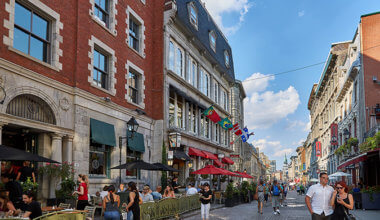
Get my best stuff sent straight to you!
Pin it on pinterest.

The Ultimate Cross Canada Road Trip Itinerary
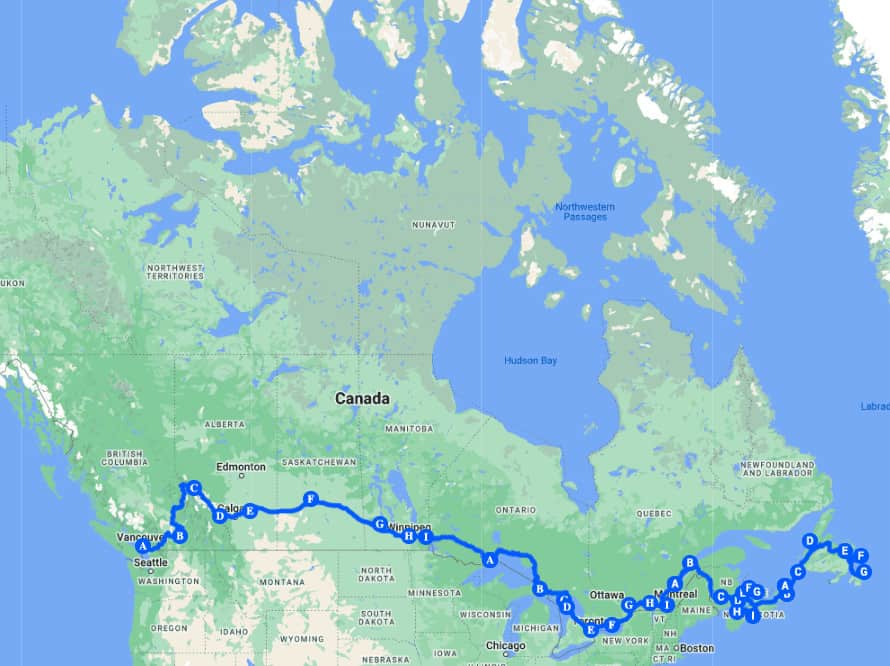
Lately, I’ve become obsessed with planning the ultimate cross Canada road trip. And if my 10+ years as a travel blogger can tell you anything, it’s that I absolutely love organizing, planning and researching for big trips, even if I don’t have a definite date for when I will take them.
For most of my travel life, I’ve prioritized new, international locations over exploring my own backyard here in Canada. But during covid when international travel was restricted, I learned to appreciate travel in my home country. So much so that my husband, Colin, and I took an Atlantic Canada honeymoon!
It turns out: Canada is amazing! Or at least the 32 million people who visit my country each year certainly think so.
And so as a Canadian myself, I would love to spend more time discovering this country outside of the cities I’ve lived in and know well, Vancouver and Toronto. I love the idea of going from coast to coast, exploring cities and wildlife, visiting all 10 provinces on a cross Canada road trip!
Which is why I’ve put together an epic 34-stop cross Canada road trip itinerary from Vancouver to St. John’s!
When I was looking up an itinerary for a road trip across Canada, I noticed that many other posts only covered a fraction of the country. I get it, Canada is a big place. But I want to plan a route that drives across all of Canada (even if I can only drive it in small stretches at a time)!
Below I’m sharing my ultimate cross Canada road trip itinerary – from Victoria to St. Johns , from the Pacific to the Atlantic – and all of the stops in between. I’ll dive into the things you must see, what to do if you don’t have enough time to drive across Canada, how to get around and where to go in each destination.
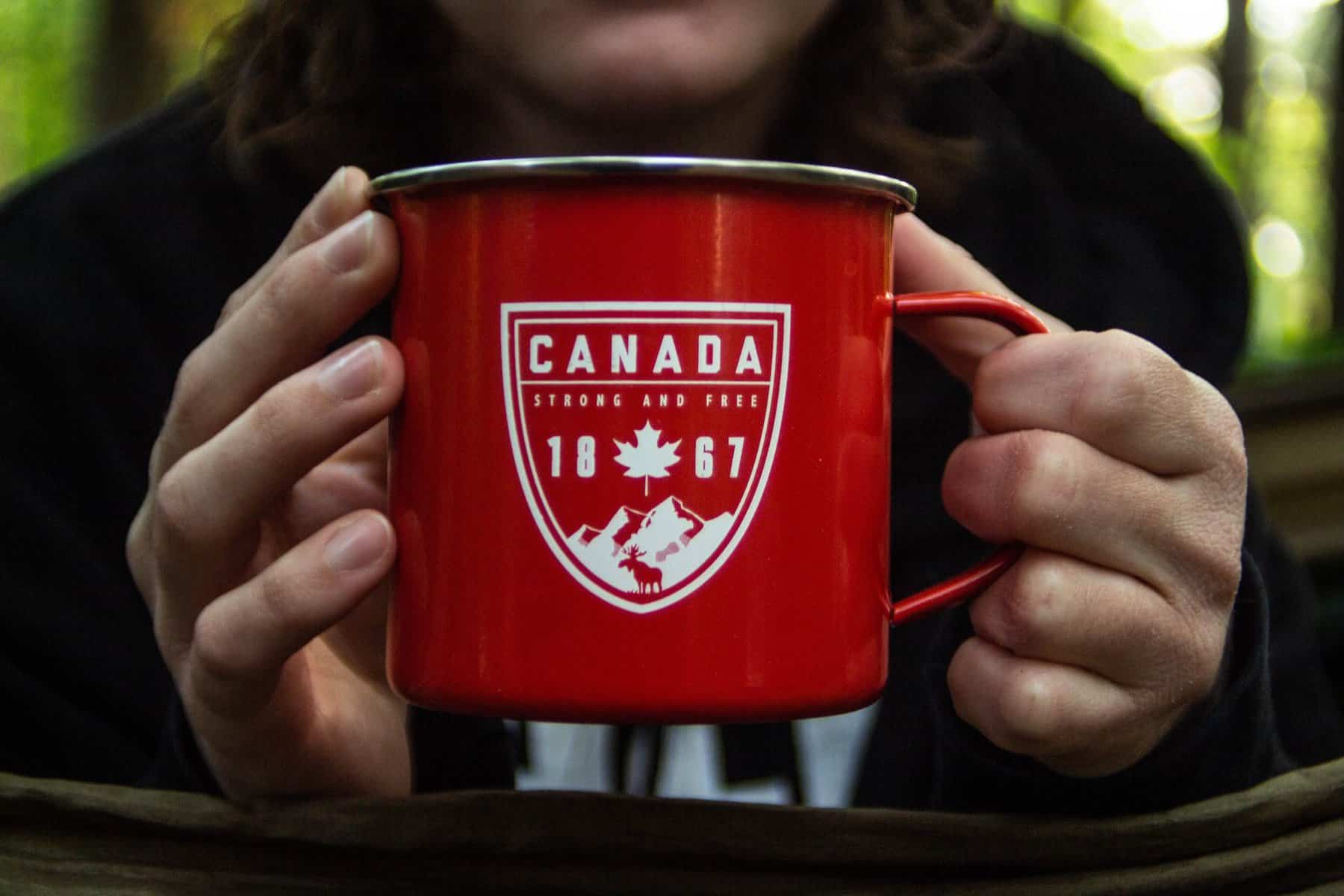
Disclosure: Some of the links below are affiliate links, meaning if you click through and make a purchase, I will earn a small commission at no additional cost to you. Thanks for your support!
Table of Contents
Canada road trip FAQs
Is canada good for road trips.
Absolutely! Canada is one of the best countries for road trips. Many people have taken on a Canadian road trip so you’ll find lots of infrastructure like free and paid campsites, rest stops, paved roads, gas stations, restaurants and grocery stores throughout the country. If you’re an English speaker, you’ll have no problem getting around most of Canada.
Canada is also great for road trips because it offers something for everyone. Whether you’re into big cities, natural wilderness, water sports, hiking, biking, shopping, art, food or something else, you can design your Canada road trip around your interests.
How long would a road trip across Canada take?
Canada is a BIG country; it’s the second largest country after Russia. So driving across Canada will take a while! The main route of the Trans Canada Highway, which starts in Victoria, BC and ends in St. John’s, NF, is 7,821 km, making it the fourth longest highway in the world.
It would take 100 hours (4.2 days) of straight driving to complete this route across Canada , which doesn’t account for overnight stops, waiting for ferries, stopping for meals or any sightseeing.
Assuming you don’t want to drive 24 hours a day without stopping, you should give yourself at least three weeks to road trip across Canada – though I’d recommend a couple of months if you have the time . My itinerary below has 34 stops and would probably take 2-3 months to really enjoy.
Because the country is so large, driving across Canada can be daunting. But even if you don’t have time to drive across all of Canada, you can still plan an epic east coast Canada road trip, a shortened Canadian road trip (such as driving from Toronto to Vancouver), a road trip around Atlantic Canada or one on the west coast.
Short on time? Check out my suggestions at the end of this post for mini Canada road trips!
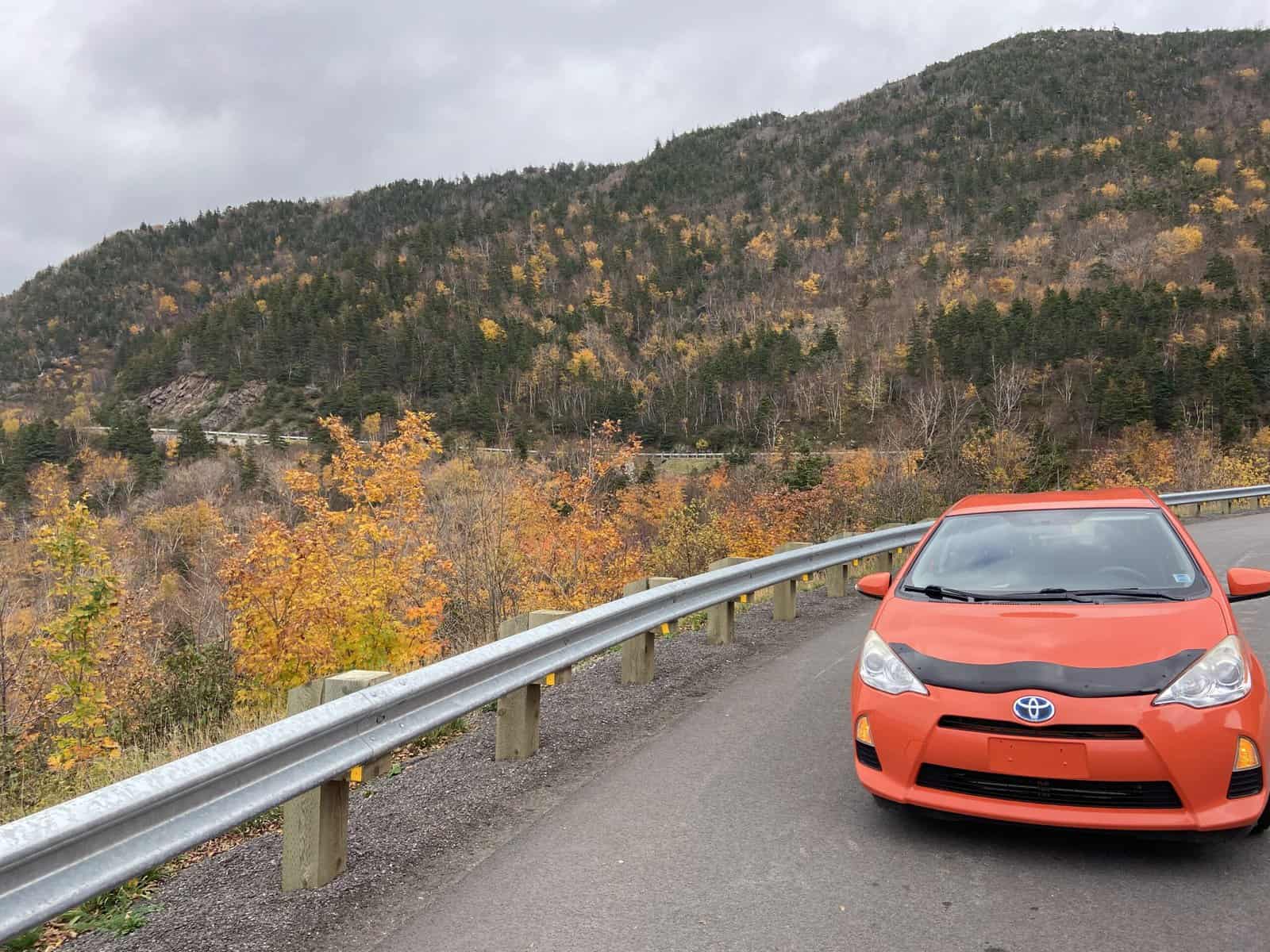
When is the best time for a Canada road trip?
Despite our reputation, it’s not ALWAYS cold in Canada. In fact, our country gets really stinking hot in the summers! And of course, being such a huge country, the weather varies a lot from coast to coast.
That being said, I wouldn’t attempt a cross Canada road trip in the winter . While places like Vancouver and Victoria might be mild, other places will be freezing, blanketed in snow and no fun to explore – if the roads are even open to let you through!
Summer is a much better time for a Canadian road trip. While the weather will be hot in places, driving across Canada in the summer means you don’t have to worry about snow chains or snow tires. Parks will be open and camping outdoors will be comfortable (if you can find some shade).
Of course, summer is also Canada’s busiest tourism season, so prepare for crowds. Many popular areas, like Banff, will be teeming with people and campgrounds will book up in advance.
I would plan a cross Canada road trip for late spring or early fall . That way, you still get the best weather but hopefully with fewer crowds.
Car vs RV: How should you drive across Canada?
So you want to road trip Canada but now you have to think: how am I actually getting across this huge country?
Unfortunately, public transportation isn’t a great option. We have very limited passenger train routes in Canada and while you can basically cross the country by train with ViaRail, it will be slow, expensive and skip a lot of great stops.
Your choice will probably come down to driving a car with plans to overnight in hotels, motels, tents, Airbnbs, and the like or driving an RV across Canada (or other motorhome/converted van/trailer) that allows you to sleep and live in your vehicle.
Ultimately, I think this comes down to personal preference as there are pros and cons to both .
A car will be cheaper to buy/rent (if you don’t already have one) and fuel up, easier to drive and likely have fewer parts to maintain. But it can be costly to stay in hotels every night and annoying to constantly be packing and unpacking.
An RV will be more expensive to buy/rent (if you don’t already have one) and fuel, plus more cumbersome to drive, but can be convenient for road trippers who want to have their home with them.
When trying to decide, consider your comfort level with driving, how many people are road tripping with you, what kind of accommodation you prefer and, of course, your budget for your cross Canada road trip. If you’ve never RV-ed before, I’d recommend renting one for a shorter trip before trying to drive across Canada.
Need to rent a car for your Canada road trip? Check out Discover Cars!
My top 5: What to see on a road trip across Canada?
A quick scroll down to my itinerary will show you that there is so much to see on a road trip across Canada. But here my top five picks for stops you can’t miss:
- Stanley Park in Vancouver, BC
- The stunning Banff National Park in Alberta
- Niagara Falls and the surrounding wine country in Ontario
- Old Montreal and Old Quebec City in Quebec
- The Cabot Trail in Nova Scotia
The most popular activities in Stanley Park
- Enjoy this Stanley Park Walking Tour with a guide
- Uncover the best sights of the city during this Stanley Park & Downtown Vancouver Bike Tour
- Experience the natural beauty of Stanley Park in Vancouver on this bike tour
And for everything else you’ll want to see, let’s dive into my full cross Canada road trip itinerary below!
Cross Canada road trip map
The ultimate cross Canada road trip itinerary
Through my extensive research, I found lots of posts that helped to plan a road trip in Canada, but on a smaller scale. Maybe it was just an east coast Canada road trip or a Toronto to Vancouver driving trip.
And while those adventures sound great, I wanted to put together an entire cross country road trip driving the entirety of Canada from east to west. While my road trip itinerary doesn’t cover every inch of Canada, it’s the most comprehensive one I’ve come across!
Below I’ll list every stop on my ultimate cross Canada road trip itinerary, including how long the drive is from the previous stop and what you’ll want to do there. I’ve broken the itinerary up into sections (west coast, prairies, eastern, Atlantic), but they all connect to each other so you can simply continue heading east.
Ready? Let’s drive across Canada!
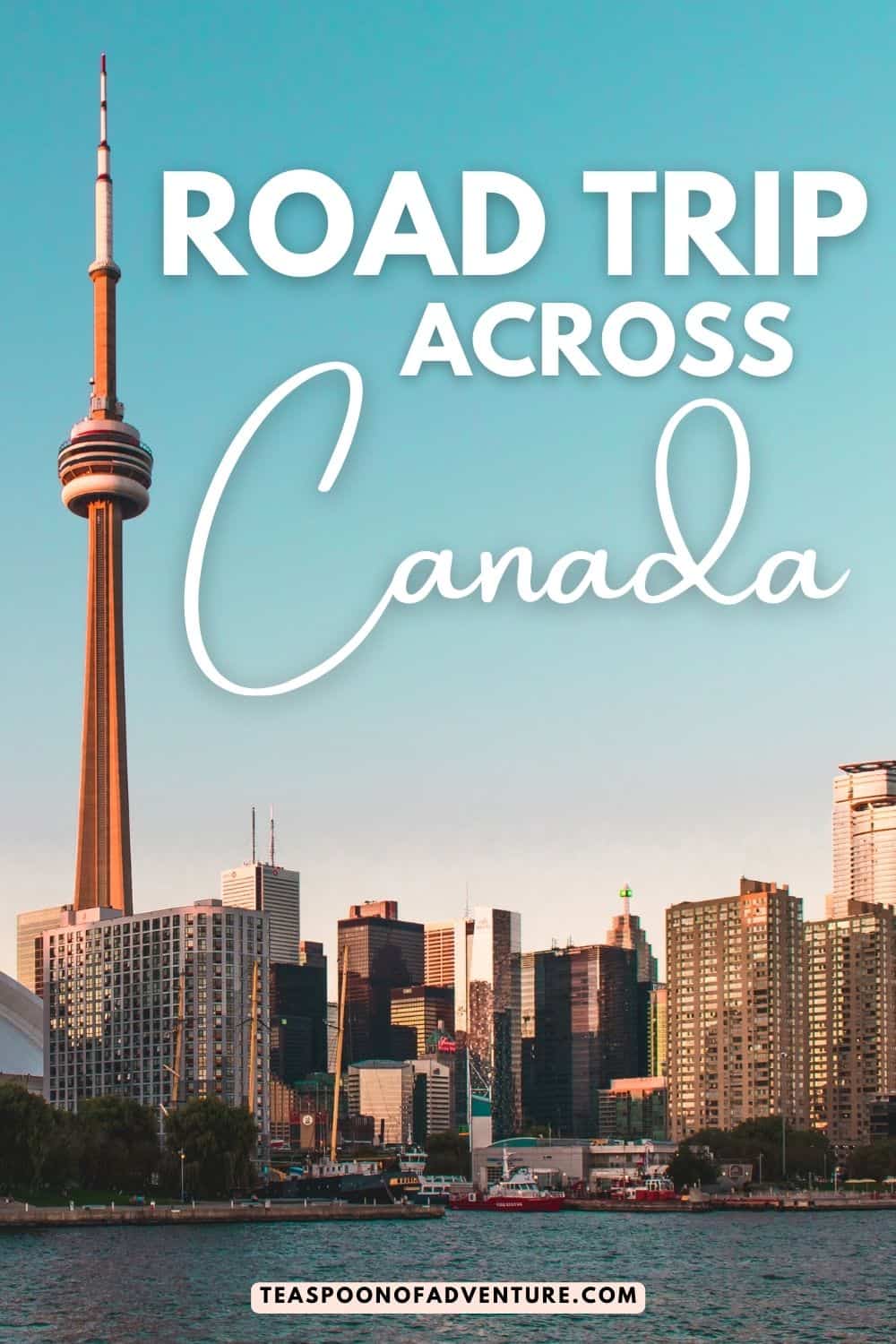
West coast and Rocky Mountains: BC & Alberta road trip
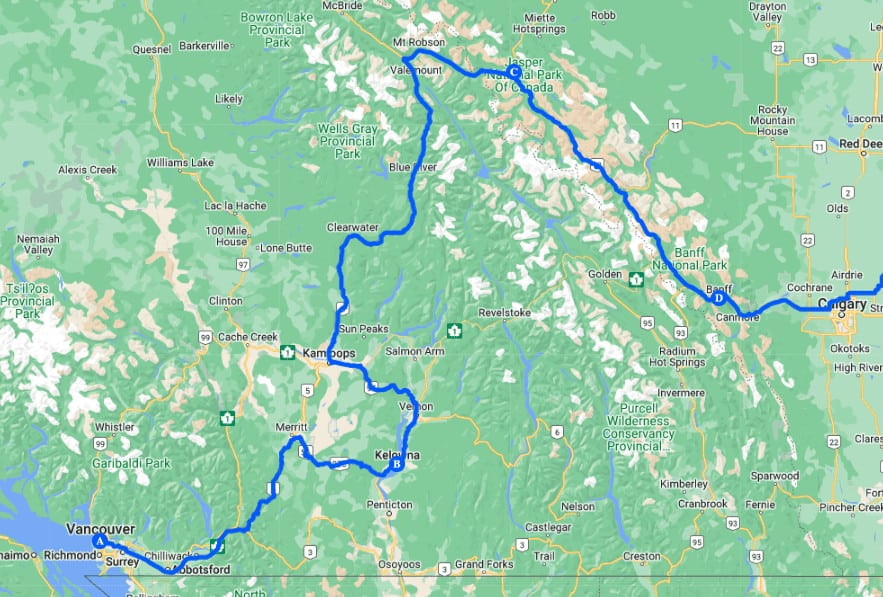
This portion of the itinerary covers British Columbia and the first part of Alberta along the Rocky Mountains . Stops on this portion of the road trip are:
- Vancouver Island
Vancouver Island, BC
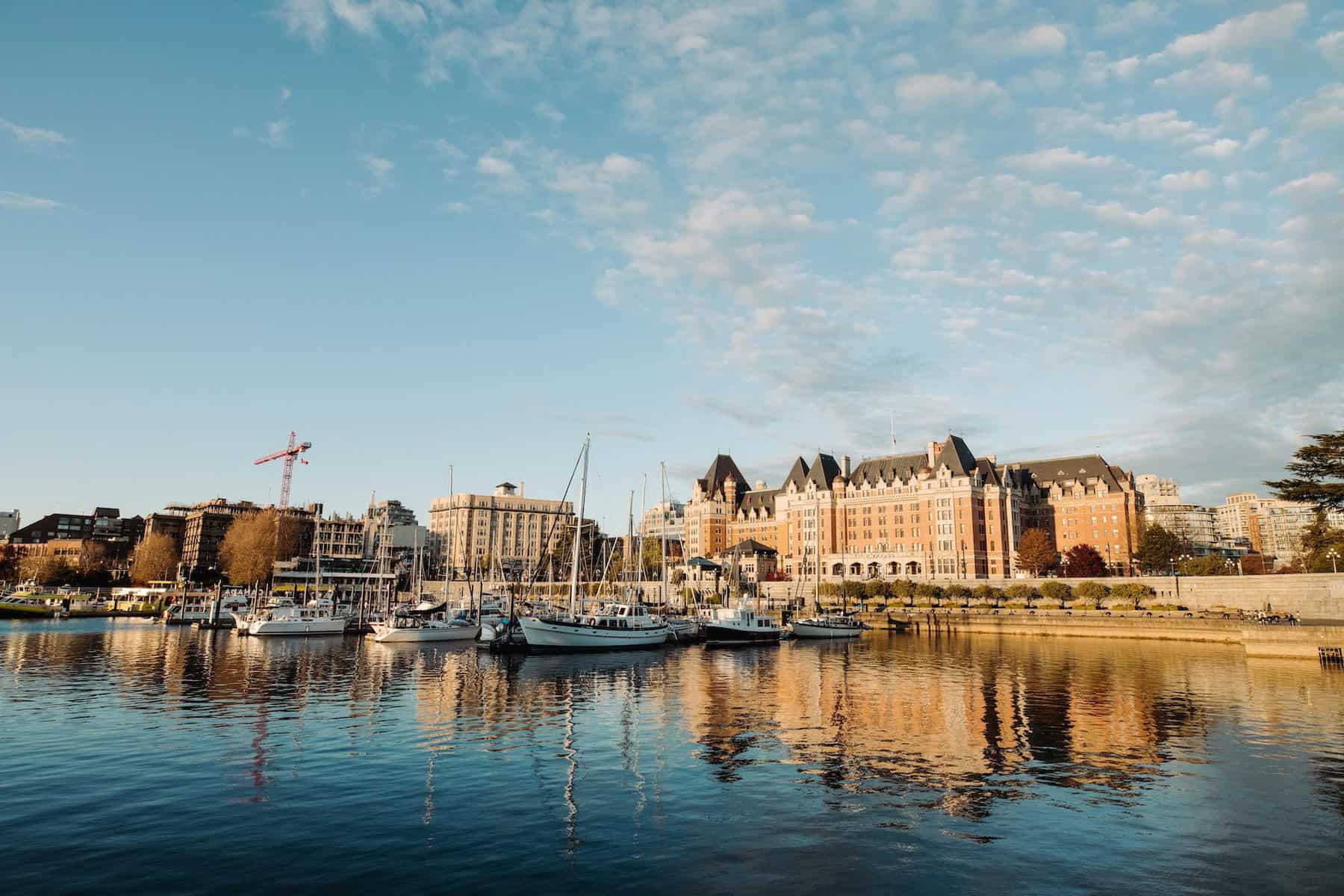
As you’ll see from the Canadian road trip planner map above, I actually start my cross Canada road trip in Vancouver. I live in Vancouver, so it would be a lot easier for me to pack up my car from home and start heading east, rather than back track to the Island.
Plus, I’d love to do a separate BC road trip around Vancouver Island and the Gulf Islands, like Galiano and Salt Spring Island (perhaps as a practice road trip before we try to drive across Canada!).
But if you’re not from Vancouver, have never been to the Island and want to complete the entire Trans Canada Highway main route, I highly recommend starting your cross Canada road trip in Victoria, BC .
I’ve visited Victoria a number of times and really love it. This charming provincial capital has a beautiful harbour, world-renowned gardens and great food. From there, you can keep exploring more of Vancouver Island.
Must do on Vancouver Island :
- Stroll through Butchart Gardens
- Try surfing in Tofino or check out more things to do in Ucluelet
- Go whale watching
Canadian fun fact: Vancouver Island is an island off the mainland of BC where the provincial capital, Victoria, is found. Vancouver is a city on the mainland on BC. There is no such thing as Victoria Island in BC or a capital city of Vancouver.
However, a reader let me know that there is in fact a Victoria Island located in the Arctic Ocean (thank you, Marlene!), but don’t go there if you’re trying to find Victoria, BC. I know, it’s confusing!
Vancouver, BC (3 hrs from Victoria)

If you skipped Vancouver Island, your cross Canada road trip will officially start in my home city, Vancouver! Otherwise, you can take a short and scenic ferry ride from Victoria to the mainland.
Vancouver is one of the most beautiful cities in the world and a highlight of any trip to Canada. Even as a local since 2010, I’m constantly amazed that I get to live in a place with beaches, mountains, city life and incredible food!
Must do in Vancouver :
- Walk or bike along the Seawall to enjoy Stanley Park and city beaches
- Shop and dine on Granville Island
- Take a day trip to Whistler or another local ski mountain
- Eat delicious sushi!
Another incredible thing to do in Vancouver (and all of Canada) is discover our indigenous history and culture. My friend Melanie put together this awesome post with lots of ideas for enjoying Indigenous culture in Vancouver!
The Okanagan, BC (4.5 hrs from Vancouver)

From Vancouver we’re heading into BC’s interior to visit the Okanagan Valley. The Okanagan is BC’s wine country and lake country, known for beautiful wineries, water sports and, unfortunately, summer wildfires.
If you’re visiting this area in the summer, make sure you’re aware of any fire bans, water restrictions or other alerts. Other than that, kick back with a glass of vino and a beautiful lakefront view!
Lucky for us, we have family in Kelowna and have visited the Okanagan many times (we even got engaged in Penticton!). But even if you don’t have family to stay with, BC’s Okanagan is well worth a visit.
Must do in Kelowna & the Okanagan:
- Visit a local winery or join a wine tour
- Hang out on Lake Okanagan
- Take a day trip south to Penticton , Osoyoos or another South Okanagan town
Jasper, AB (7 hrs from Kelowna)
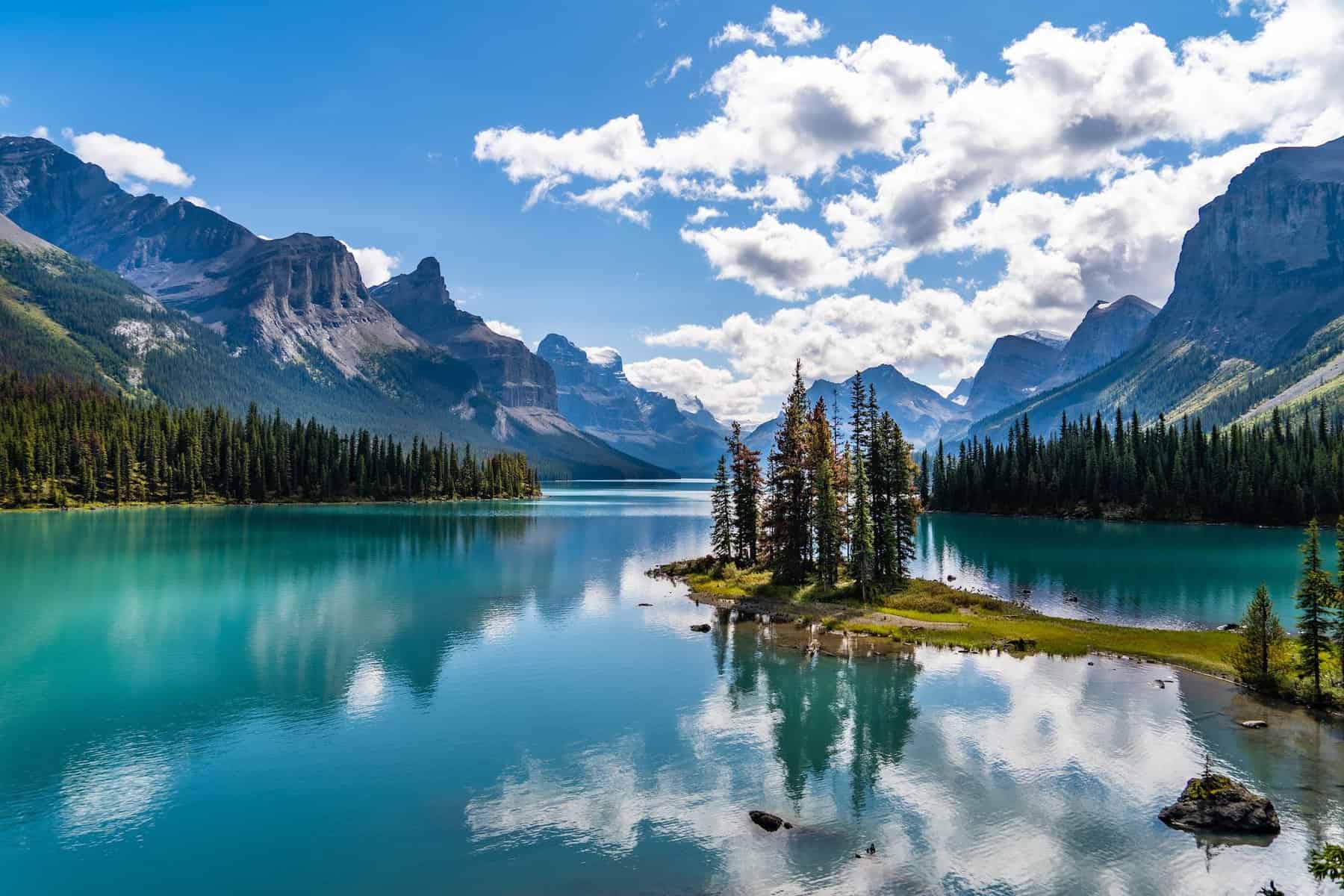
Many people skip Jasper, preferring to drive straight from Vancouver to Banff or Vancouver to Calgary, but I think a detour north to Jasper would be a highlight of any Canada road trip.
Jasper National Park is the biggest national park in Canada, home to glaciers, waterfalls, lakes, islands, forests and so much more. As soon as I saw a picture of Maligne Lake (above), I knew I needed to add Jasper to this itinerary.
Plus, because it’s a detour off the main Trans Canada Highway, Jasper is never as busy as our next stop, Banff. Fewer crowds? Yes, please!
Must do in Japser:
- Admire Maligne Lake and Maligne Canyon
- Witness the powerful Athabasca Falls
- Ride the Jasper SkyTram or walk the Columbia Icefield Skywalk
Short on time? If you don’t have time to stop in the Okanagan or Jasper, you can do a Vancouver to Banff road trip in about nine hours, passing through Kamloops, Revelstoke and Glacier National Park.
Banff, AB (3 hrs from Jasper)
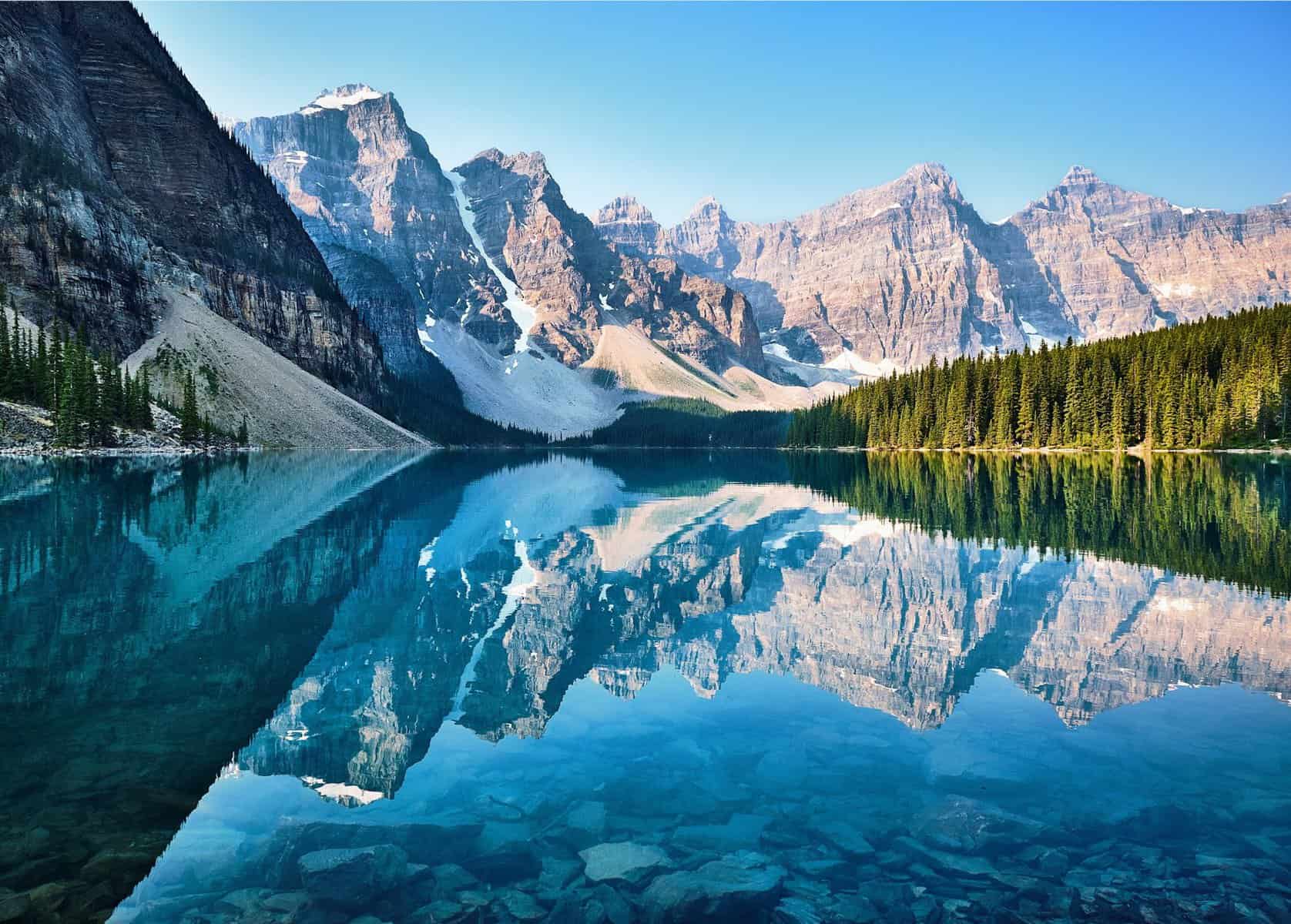
Another reason to visit Jasper? Because the drive from Banff to Jasper is through Icefields Parkway, one of the most scenic drives in the entire world.
Once you tear your eyes away from the road, you’re in for even more beauty in Banff National Park, Canada’s first national park and visited by more than four million people every year.
Spend your days hiking, camping and admiring all of the beautiful scenery around you. Because Banff is so popular, make sure you book your accommodation ahead of time and wake up early to avoid the largest crowds.
Must do in Banff:
- Check out the views from the Banff Gondola
- Be wowed by some of the prettiest lakes like Emerald Lake, Morraine Lake and Lake Louise
- Soak in a hot spring or set out on any number of scenic hikes in the area
- Or check out this complete 4 day Banff itinerary !
Calgary, AB (1.5 hrs from Banff)
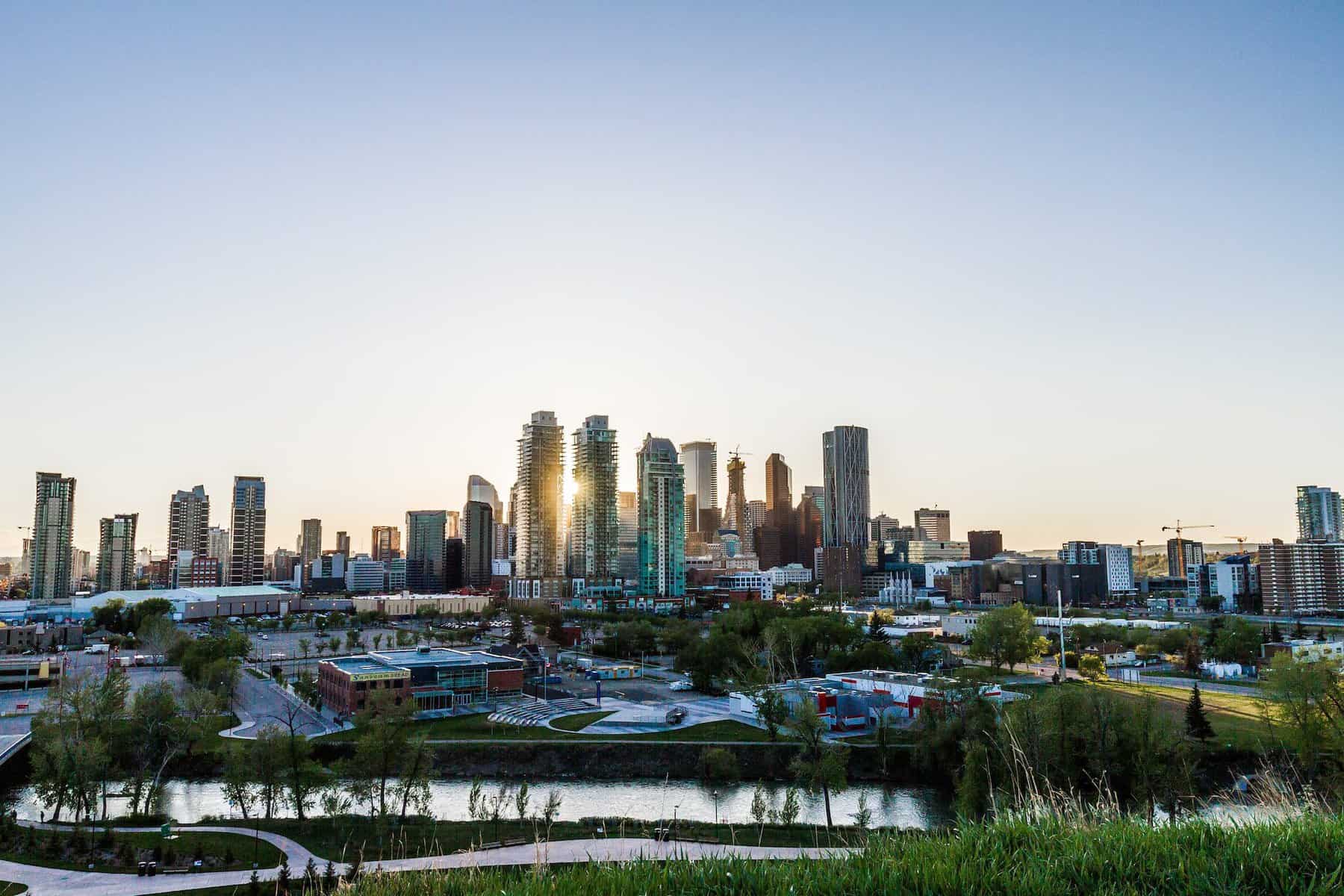
In case you didn’t get enough hiking in Banff, you can make a stop in Canmore on your way to Calgary for more beautiful mountain views. Then it’s time to enter Cowtown, aka Calgary.
As a Vancouverite, it’s almost mandatory for us to make fun of Calgary (apologies to my Calgarian friends and family!), but there’s actually quite a bit to enjoy in the city. If you time your road trip right, you could be in town for the annual Calgary Stampede , which happens every July. There are also parks, museums, sports arenas and more to visit in Calgary.
Many people choose to visit Banff on a day trip from Calgary, since it’s only 1.5 hours away. But because there’s so much to do in Banff, I think it’d be better to spend a few days there before moving onto Calgary. However, if you’re short on time, you could do a day trip to Banff while basing in Calgary.
Must do in Calgary:
- Don a cowboy hat at Calgary Stampede
- Stroll (or raft) along Bow River and check out the Peace Bridge
- Visit the Heritage Park Historical Village to learn some Western Canada history
- Try your hand at some winter sports at WinSport, home of the 1998 Winter Olympics
Canadian fun “fact”: Just to prove how great the Vancouver-Calgary rivalry is, when I asked my husband what someone should do in Calgary he suggested “complain that you’re not in Vancouver.” But we’re just kidding, Calgary is great!
Prairies: Alberta, Saskatchewan & Manitoba road trip
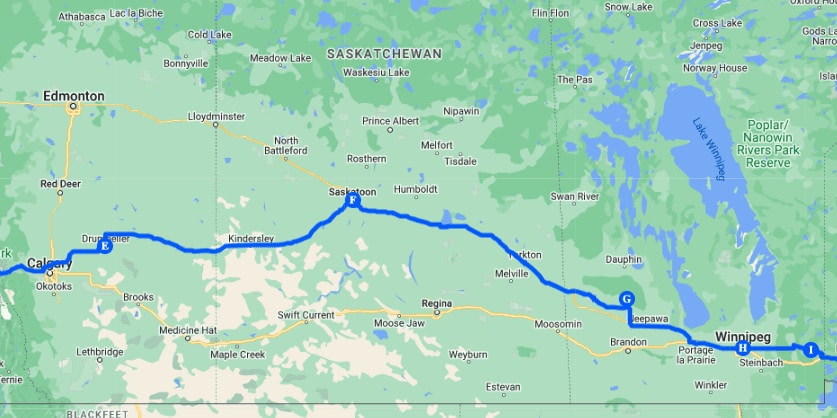
We’re now moving into Canada’s prairie provinces of Alberta, Saskatchewan and Manitoba. Stops visited on this portion of your road trip are:
- Riding Mountain National Park
- Whiteshell Provincial Park
Drumheller, AB (1.5 hrs from Calgary)
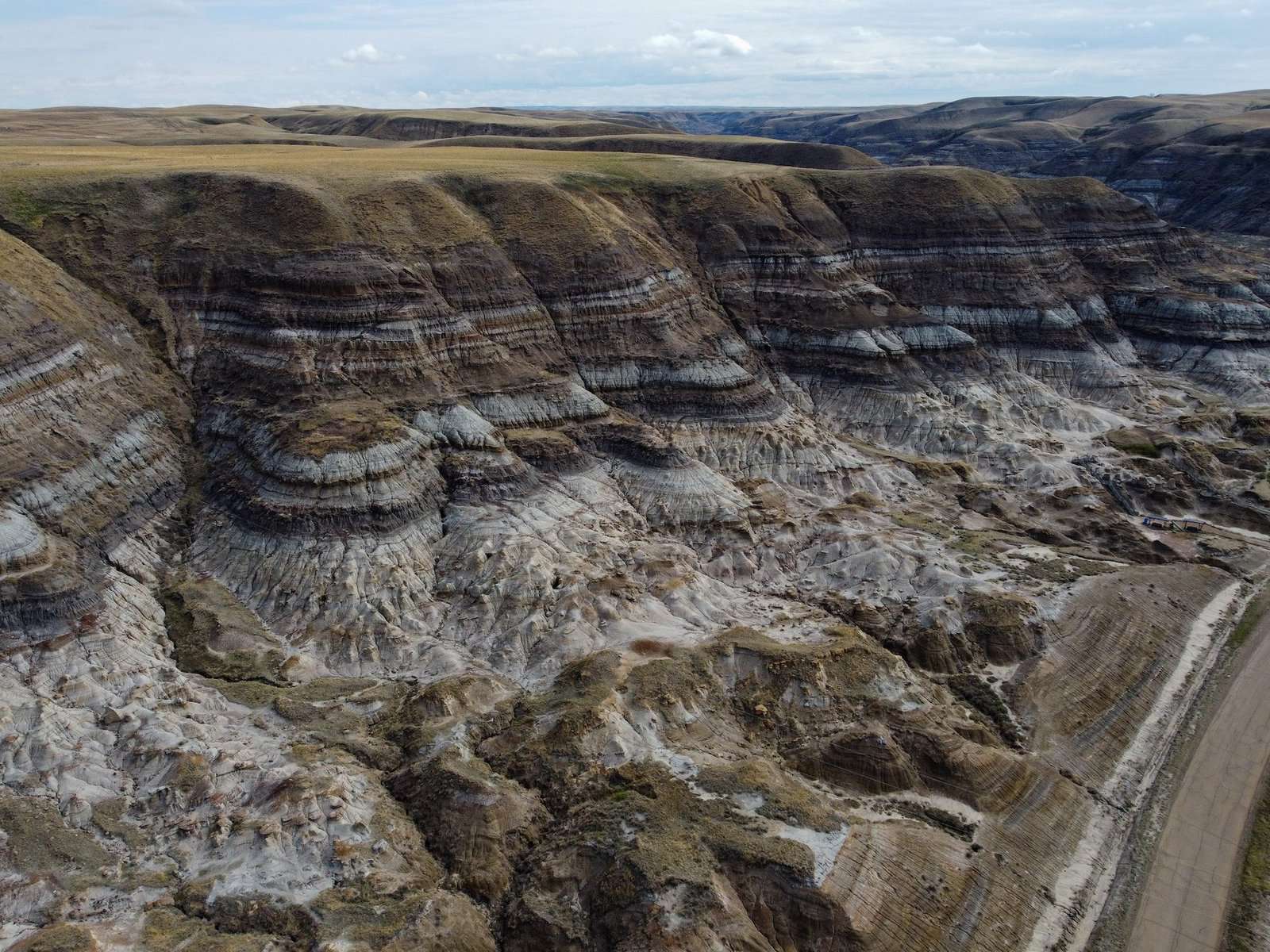
From Calgary we are leaving the Rockies and officially entering prairie land. This part of Canada is known for being quite flat (and dull) but as you’ll see below, there are some great places to stop on your cross Canada road trip.
First up: Drumheller! Known as the Town of the Dinosaurs, if you have any dino lovers in your car, this is going to be a mandatory stop!
Must do in Drumheller:
- Check out fossils found in the area at The Royal Tyrrell Museum of Paleontology
- Spot hoodoos in the nearby badlands
- Take a day trip to Dinosaur Provincial Park (2 hrs from Drumheller)
Saskatoon, SK (5 hrs from Drumheller)
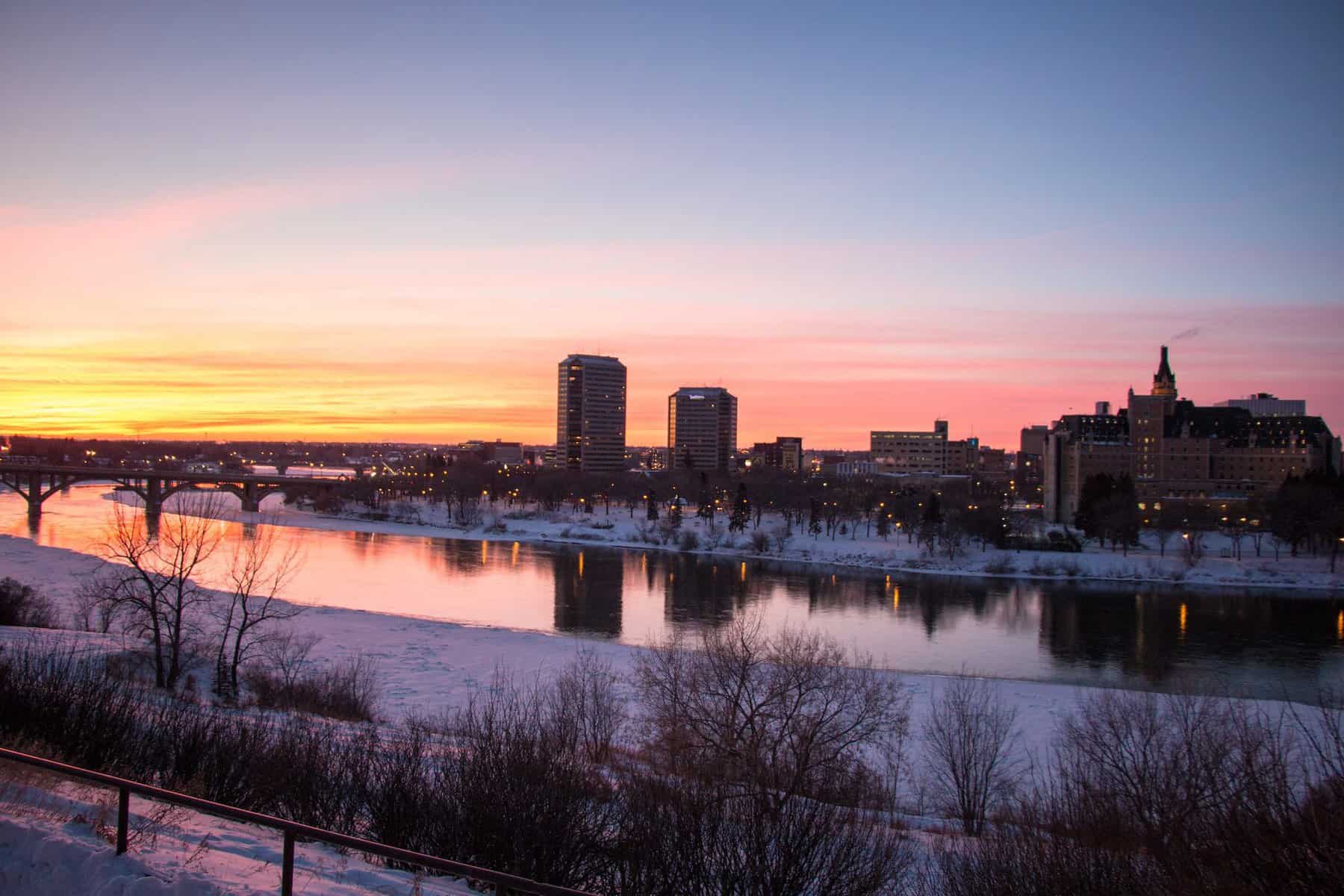
I was debating which of Saskatchewan’s major cities to include in this itinerary: Saskatoon, Regina or Moose Jaw. Ultimately I decided on Saskatoon as it’s the largest city, doesn’t have as much of a government feel as the capital (Regina), and is closest to Drumheller.
If you prefer to visit Regina, check out Stone Hall Castle, the Royal Saskatchewan Museum and the world’s largest moose statue.
Or if you prefer to check out Moose Jaw, don’t miss the Tunnels of Moose Jaw tours. These are interactive tours that take place in the tunnels below the city and look really fun!
Must do in Saskatoon:
- Visit Wanuskewin Heritage Park to learn about people’s sacred relationship with the land
- Stand up paddle board on the South Saskatchewan River
- Grab lunch at the oldest and largest farmer’s market in the province, the Saskatoon Farmer’s Market
Not into cities? If cities don’t do it for you, skip Saskatoon and head south to visit Saskatchewan’s Cypress Hills Interprovincial Park or Grasslands National Park for forests, lakes, wide open spaces, wildlife spotting and stargazing.
Riding Mountain National Park, MB (6 hrs from Saskatoon)
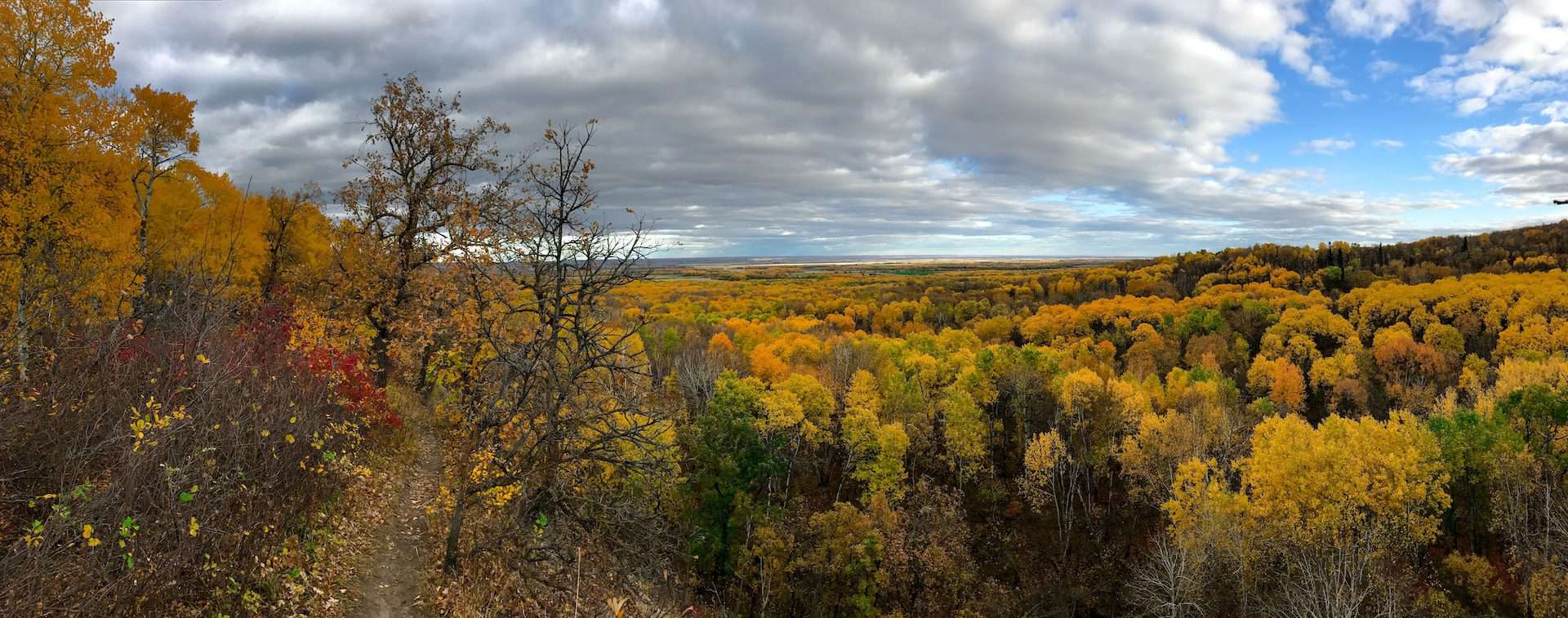
A great stop to break up the long drive across the Canadian Prairies is Riding Mountain National Park in Manitoba.
This park is home to forests, grasslands and great wildlife viewing. It’s a top place to visit in the province and a nice change from city life if you’re driving from Saskatoon to (spoiler alert on the next stop) Winnipeg.
Must do in Riding Mountain National Park:
- Try out water sports in the summer or cross-country skiing in the winter
- Take in the view from the top of Bald Hill
- Go on a day trip to nearby university town, Brandon
Winnipeg, MB (3 hrs from Riding Mountain)
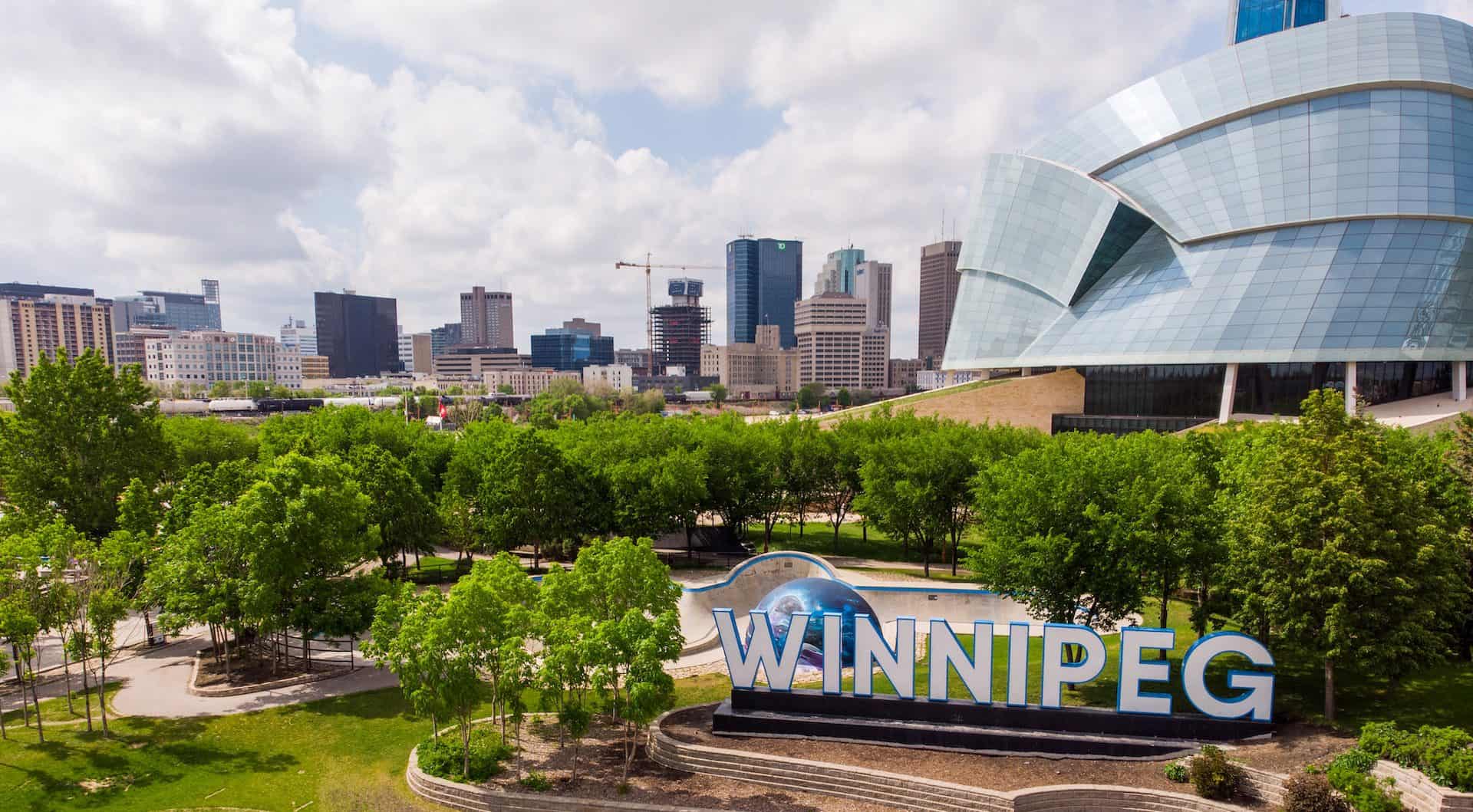
Welcome to The Peg! Affectionally called “Winterpeg” in the winter, you may want to steer clear of Winnipeg in the colder months. But in the summer, you’ll find lots to enjoy in this city. With a number of museums, markets, festivals and parks, you’ll have lots to fill your days.
And when you need a break from city life, head up to Lake Winnipeg. Enjoy the white sand dunes at Grand Beach or indulge in Icelandic heritage and Viking statues in Gimli.
Must do in Winnipeg:
- Visit the Canadian Museum for Human Rights (I’ve heard it’s incredible!)
- Get to know the city by riding the Central Winnipeg Bike Loop
- Escape to the water on Lake Winnipeg
Whiteshell Provincial Park, MB (1.5 hrs from Winnipeg)

Our last stop in the prairies is Whiteshell Provincial Park, a park located on the border between Manitoba and Ontario. It’s a great introduction to the natural scenery that awaits you in western Ontario.
If you prefer to drive farther (since Whiteshell isn’t that far from Winnipeg), you could cross the border into Ontario and base in Kenora, a waterfront town with lots of beach activities.
Must do in Whiteshell Provincial Park:
- Hit the beach at Falcon Lake
- Discover the Bannock Point Petroforms
- Visit West Hawk Lake, a crater lake formed by a meteor
Eastern Canada: Ontario & Quebec road trip
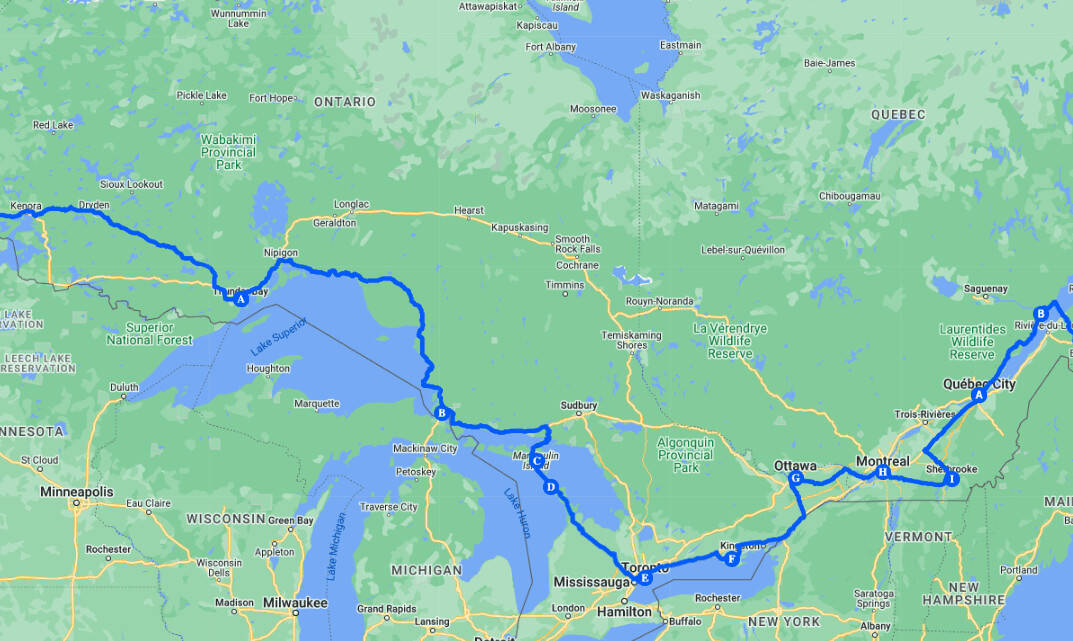
We’re now moving into the middle section of Canada and our two biggest provinces, Ontario and Quebec. Here we’ll be visiting:
- Thunder Bay
- Sault Ste Marie
- Manitoulin Island
- Prince Edward County
- Eastern Townships
- Quebec City
Thunder Bay, ON (6.5 hrs from Whiteshell)

From Manitoba it’s a long drive to Thunder Bay to begin the Ontario road trip portion of this Canada itinerary.
The city of Thunder Bay isn’t the most exciting place to be but all of the nature nearby is really worth visiting. They say it’s home to some of the best beaches, waterfalls and viewpoints in the province!
Must do in Thunder Bay:
- Explore Ouimet Canyon Provincial Park (Canada’s version of the Grand Canyon)
- Admire Kakabeka Falls, the second highest waterfall in the province
- Check out the amethyst mines and find your own to take home , as suggested by my friend Lyn!
- Visit the Terry Fox Monument, commemorating the spot where Terry’s Marathon of Hope across Canada ended
Sault Ste Marie, ON (7.5 hrs from Thunder Bay)

It’s another long drive from Thunder Bay to Sault Ste Marie (pronounced Soo Saint Marie). What can I say? Ontario is a big province and you have a lot of ground to cover!
Luckily you’ll be driving along Lake Superior the whole time, affording you lots of places to stop and admire the view or go on a little hike to stretch the legs. Right on the US/Canada border, The Soo is a big port city with a splash of outdoor adventure for you to enjoy.
Must do in Sault Ste Marie:
- Kayak down or go fly fishing on St. Marys River
- Unleash your inner aviation geek at the Canadian BiPlane Heritage Museum
- Ski or mountain bike at Hiawatha Highlands
Manitoulin Island, ON (4 hrs from Sault Ste Marie)
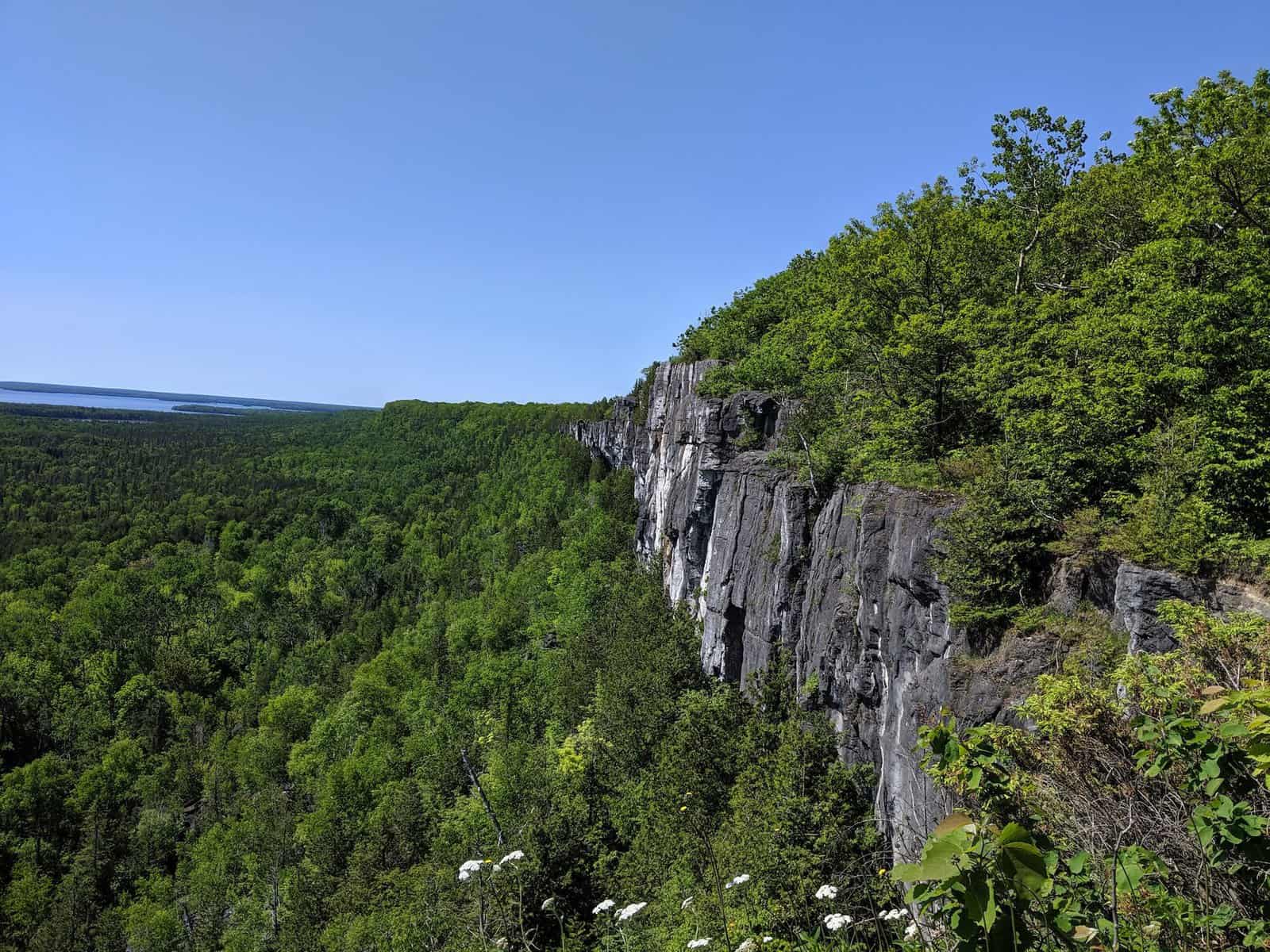
You didn’t think a cross Canada road trip itinerary would include islands did you? Or at least not in Ontario! But it’s true, Ontario is home to a number of islands, such as Manitoulin Island in the middle of Lake Huron.
Manitoulin Island is actually the largest freshwater island in the world and an amazing place to explore Indigenous culture, scenic trails and even see the Northern Lights (if you’re lucky!).
Must do on Manitoulin Island:
- Hike the Cup and Saucer Trail for epic views
- Explore some of Manitoulin’s 100+ lakes by canoe
- Visit Wiikwemkoong, Canada’s only official Unceded Indian Reserve
Tobermory, ON (2.5 hrs from Manitoulin Island)
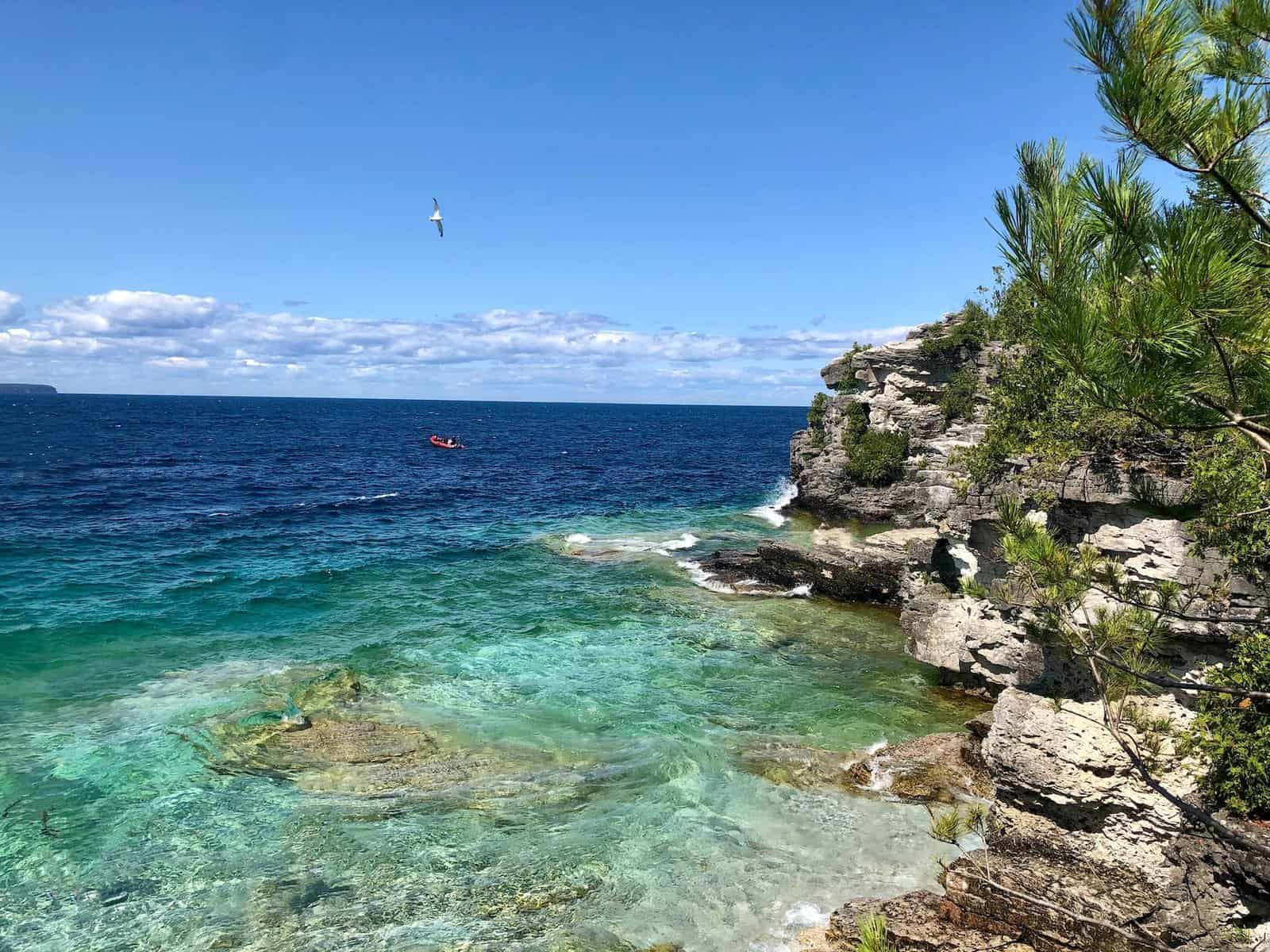
To get from Manitoulin Island to Tobermory, you and your vehicle will load onto a scenic ferry. Now look at us; we’re island-hopping in Canada!
While technically not an island, Tobermory does feel like a world of its own. It’s absolutely one of the most beautiful, natural places in Ontario with hidden gems (shipwrecks, anyone?) and Caribbean-like waters waiting to be discovered.
Must do in Tobermory:
- Explore beaches, caves and grottos at Bruce Peninsula National Park
- Take a boat tour around Flowerpot Island
- Dive around 20 historical shipwrecks at Fathom Five National Marine Park
Short on time? Prefer cities? You can drive from Winnipeg to Toronto through the US (21 hours) rather than through the Canadian stops above (25 hours) and visit Minneapolis, Chicago and Detroit on the way.
Toronto, ON (3.5 hrs from Tobermory)
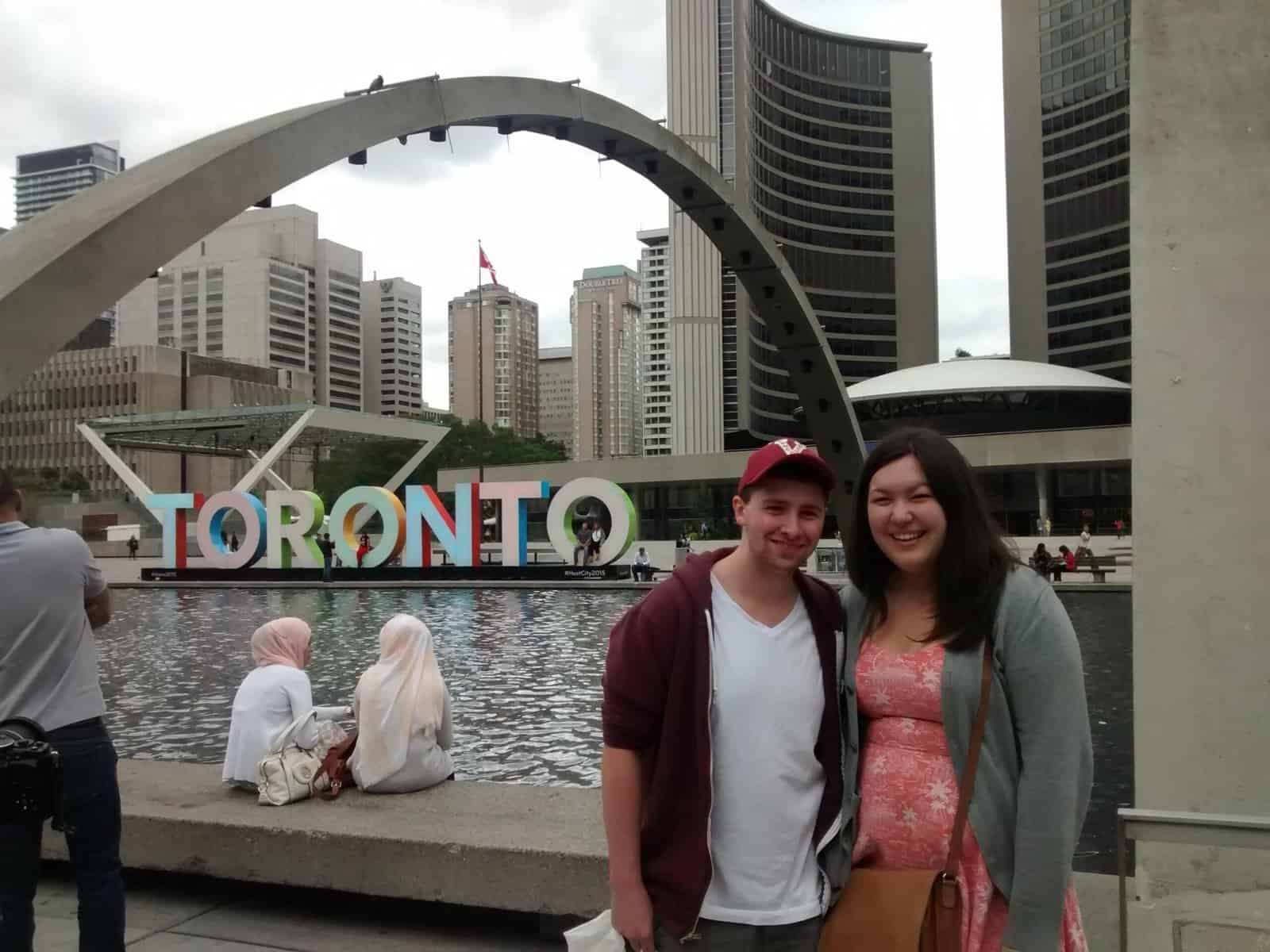
Welcome to The Six, my hometown of Toronto (us locals drop the second “t” so it’s more like “Torono”). Arguably the best known city in Canada and the biggest, no cross Canada road trip could exclude TO.
Having grown up in Toronto, it’s hard for me to see it as a tourist locale. But besides visiting my friends and family, there really is so much to do in this bustling, diverse city. From museums, parks and islands to sports arenas, shopping streets and galleries, there’s something in Toronto for everyone .
But my favourite part of the city is all of the different neighbourhoods that each have a distinct culture and feel. My favourites are Chinatown, The Annex and Kensington Market. It’s also some of the best eating in Canada, no matter what cuisine you’re in the mood for!
Must do in Toronto:
- Head up the iconic CN Tower for a view over the city
- Cruise across to the Toronto Islands and check out the skyline view
- Watch a major league baseball, basketball or hockey game
- See dinosaurs at the Royal Ontario Museum or admire art at the Art Gallery of Ontario
- Get your fill of delicious Portuguese, Chinese, Italian, Indian, Korean food and any other cuisine!
Day trip to Niagara Falls!
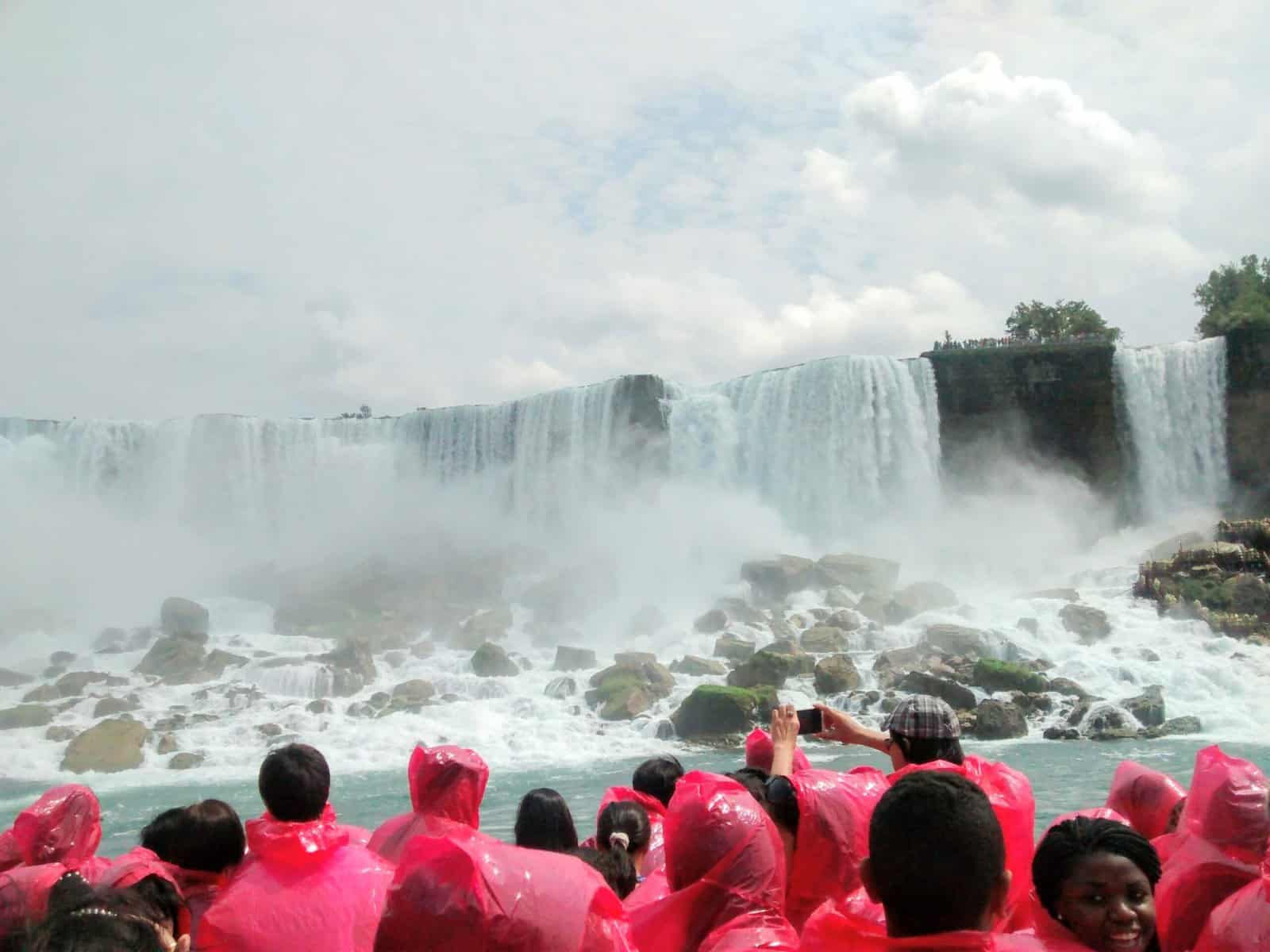
Having grown up in Toronto, I’ve been to Niagara Falls a handful of times and often stayed overnight. At just over an hour from Toronto, Niagara Falls is an easy day trip.
But if you have the time and budget, I do recommend spending a few days in the Niagara region. Or if you’d prefer to base in Toronto and just see the falls on a day trip , that works too.
Besides seeing the incredible Niagara Falls (and yes, the Canadian side is much better than the American side) you’ll also want to check out Niagara-on-the-Lake, Ontario’s charming wine country.
There are lots of wine tours through Niagara if you’d rather not drive or find wineries yourself. You can also visit Albion Falls just outside of Hamilton on your way to Niagara, kind of like a warm up for the bigger Niagara Falls.
Prince Edward County, ON (3 hrs from Toronto)

Despite having lived the first 18 years of my life in Toronto, I’m sad to say I haven’t been to Prince Edward County. Which is too bad because it seems like the cutest collection of small towns, beaches, wineries, galleries, shops and parks.
The County is an island in Lake Ontario (not to be confused with Prince Edward Island, which is also an island called Prince Edward, but a province in the Atlantic Ocean) home to farmers and makers, perfect for slowing down and enjoying local life.
Must do in Prince Edward County:
- Hit the beach at Sandbanks Provincial Park or North Beach Provincial Park
- Wine taste through local wineries (there are also cideries and breweries, if you prefer)
- Bike or hike the Millennium Trail or shop local in Picton or Wellington
For more suggestions of what to do, check out my friend Renee’s post with 16 things to do in Prince Edward County!
Ottawa, ON (3 hrs from Prince Edward County)
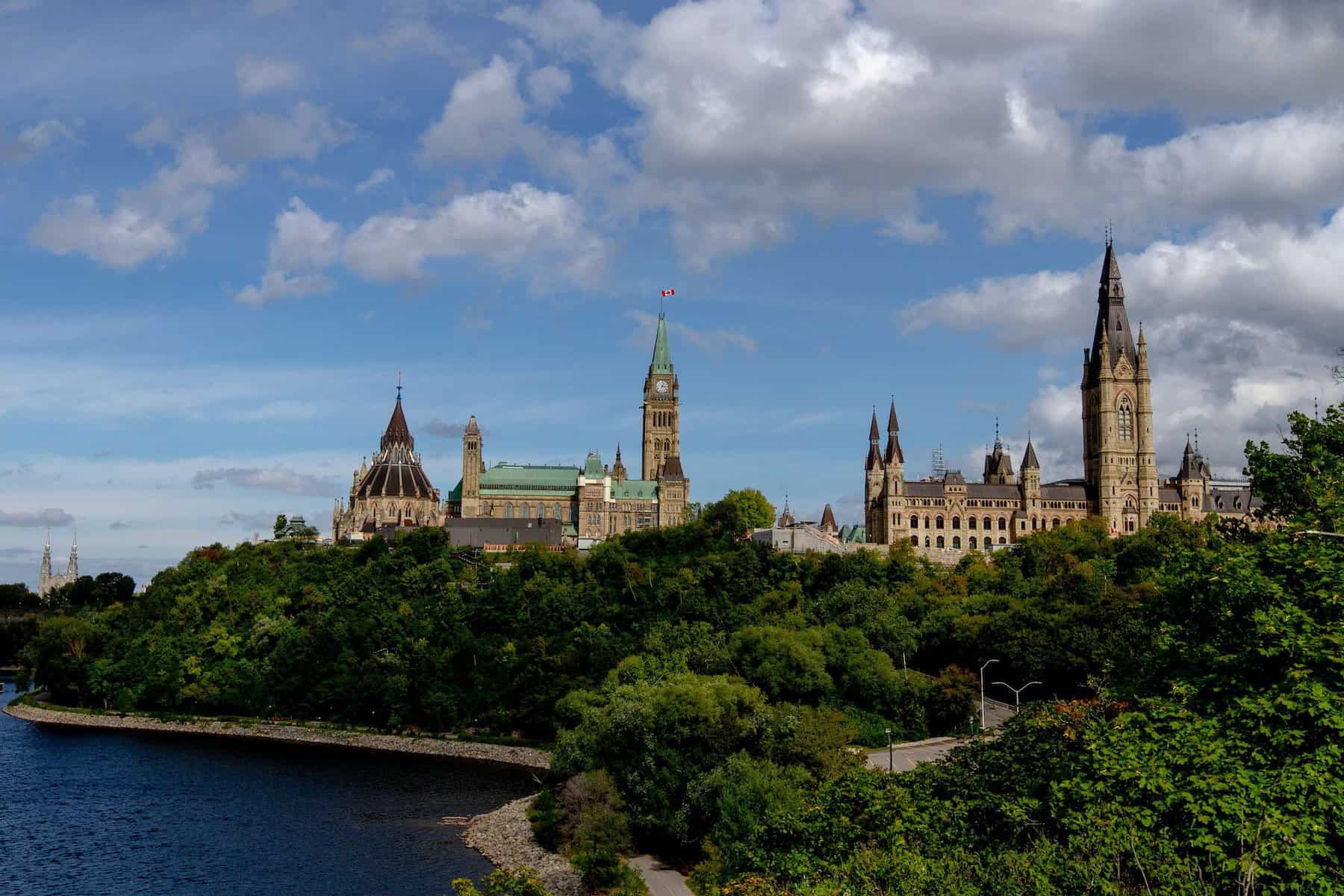
From Prince Edward County we’re heading north to Canada’s capital, Ottawa (no, Canada’s capital is not Toronto!). Ottawa is an incredible place to learn about Canada’s history and hear a mix of our national languages, English and French.
In the winter, don’t miss skating down the Rideau Canal, a UNESCO World Heritage Site and the world’s largest skate rink at 7.8km.
But there’s lots of fun to be had in the summer in Ottawa too! I’ve visited in both seasons and enjoyed skating in the cold and wandering Parliament Hill in warmer months.
Must do in Ottawa:
- Visit a museum such as The Canadian Museum of History , The Canadian War Museum or The Canadian Museum of Nature
- Take a tour of Parliament Hill
- Stroll, skate or cruise along the Rideau Canal with a Beaver Tail!
Canadian fun fact: A Beaver Tail is a Canadian dessert that is essentially deep fried dough with toppings on it in the vague shape of a beaver’s tail. No actual beavers are harmed in the making of these treats!
Montreal, QC (2.5 hrs from Ottawa)
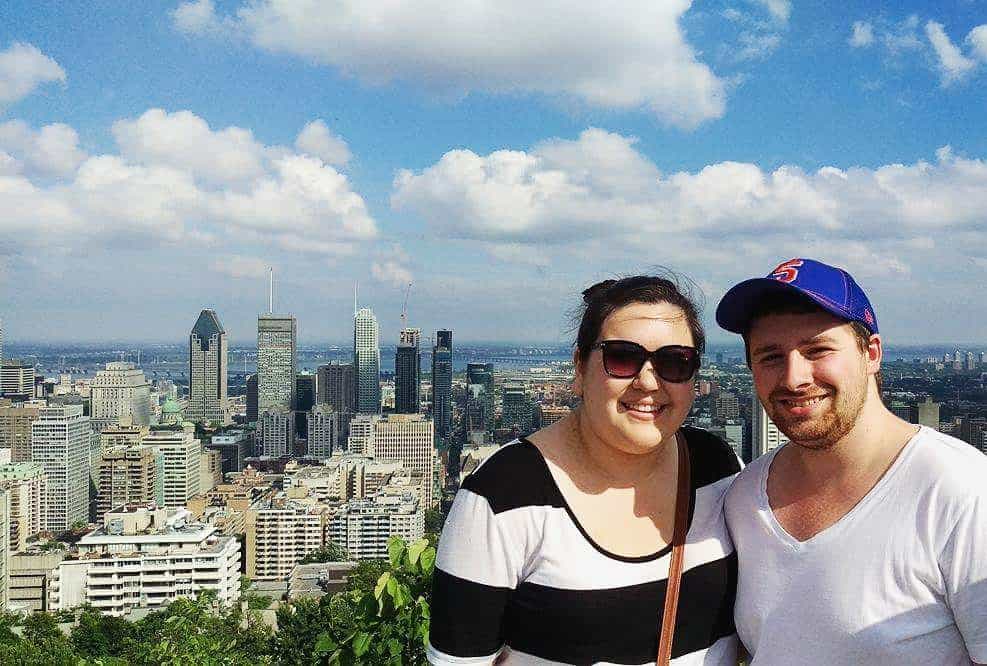
Bienvenue à Québec! Ready to road trip Quebec? We’re crossing over from Ontario to French-speaking Quebec and stopping first in one of my favourite cities, Montreal .
I always say that if I spoke French fluently, I would move to Montreal. But don’t worry! You don’t need to be fluent or even rudimentary at French to visit Montreal (but it would be good to parlez français if you want to move there).
Montreal has incredible food , is diverse and bustling, and has a wonderful European charm to it. There are beautiful viewpoints, stunning churches, funky street art, world-class restaurants, and lots of festivals and events.
Montreal feels like a place unlike any other in Canada and is a city where you could never get bored. I’ve visited a handful of times over the years and always enjoy the city.
Must do in Montreal:
- Wander Old Montreal and the Port of Montreal
- Go on a food tour of Montreal enjoying bagels, poutine, crepes and much more!
- Admire Montreal’s famous Notre Dame and St. Joseph’s churches
Eastern Townships, QC (1.5 hrs from Montreal)
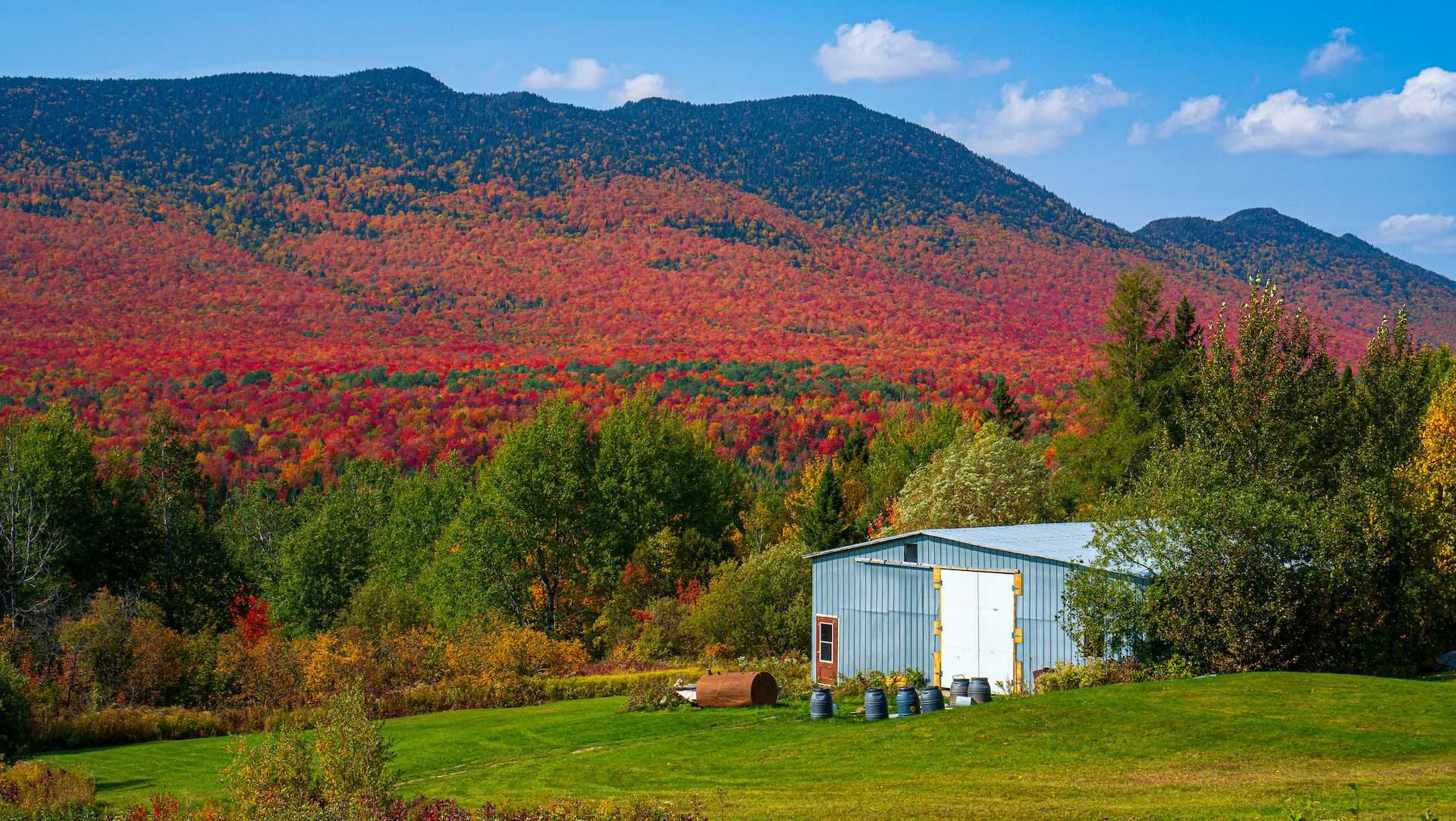
Despite a few visits to Montreal over the years, I haven’t explored more of Quebec yet. One area I’d love to spend a few days in is the Eastern Townships, just an hour or two southeast of Montreal.
This area is Quebec’s natural wonderland, where many Quebec and Ontario locals have cottages to spend their summers. It’s the perfect place to golf, hike, bike, take to the water and stargaze. There are also wineries, local shops and festivals to enjoy.
Must do in the Eastern Townships:
- Get back to nature at Parc National du Mont-Orford
- Visit the world’s first Dark Sky Preserve at ASTROLab in Parc National du Mont-Mégantic
- Climb one of the world’s longest suspension bridges at Gorge Park
My friend Renee is once again coming in clutch with her list of 13 villages to visit in the Eastern Townships!
Quebec City, QC (2.5 hrs from the Eastern Townships)
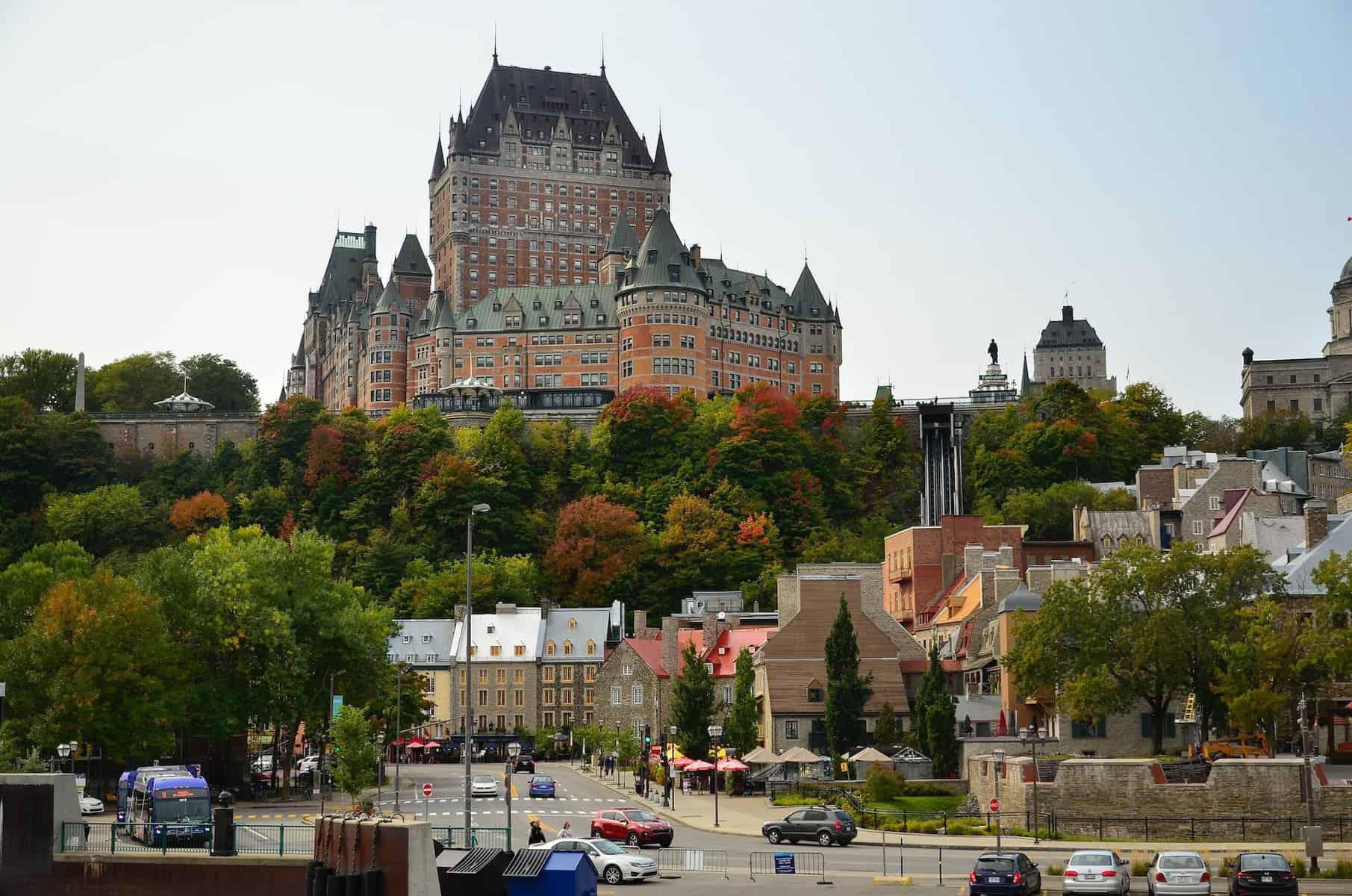
On your way to Quebec’s capital, it may be worth a detour to Beauce for a sweet treat, since this town is responsible for 20% of the world’s maple syrup production!
All sugared up, you’re off to Quebec City for a few days of culture, architecture and history. There are world-renown art galleries and museums, stunning churches, and North America’s only ice hotel!
Quebec City has always struck me as a very romantic place – in fact, Colin and I thought about including it in our honeymoon itinerary . I’d love to splurge on a stay at the Château Frontenac one day (the most photographed hotel in the world). You can tell how badly I want to visit Quebec City by all of the must dos I listed below!
Must do in Quebec City:
- Stroll along the fortified walls of Old Quebec, a UNESCO World Heritage Site
- Explore the Citadelle de Québec, a military heritage site built between 1820 and 1850
- Admire Montmorency Falls (they’re actually taller than Niagara Falls!)
- Get your nature on at Jacques-Cartier National Park
- Shop from local artisans at Île d’Orléans
- Enjoy a day at Eastern Canada’s largest theme park , Village Vacances Valcartier, and stay the night at an ice hotel
Tadoussac, QC (3 hrs from Quebec City)
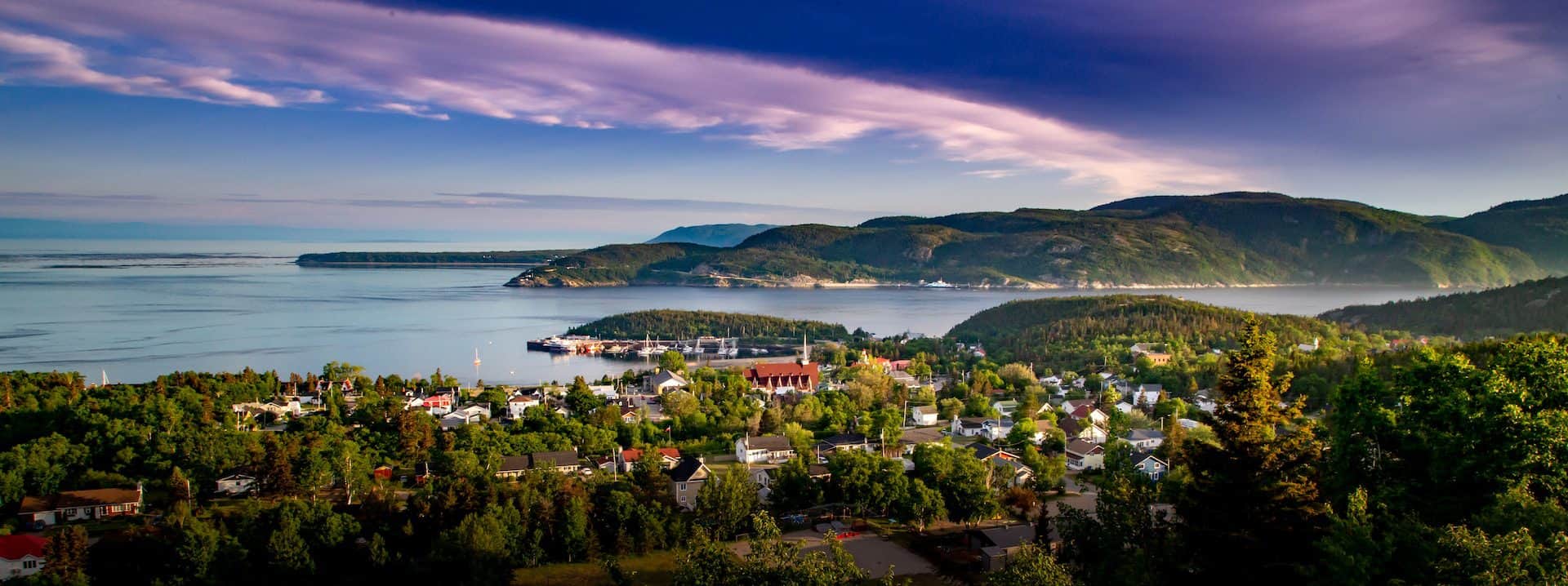
From Quebec City, you’ll drive along the St. Lawrence River to your last stop in Quebec, the historic, small town of Tadoussac. Tadoussac was founded in 1600 as the first French settlement in North America.
Despite being a small place, Tadoussac draws a good number of visitors thanks to its beautiful landscape and wildlife spotting opportunities (whales, bears and beavers!). Plus, it’s the perfect stop before you head to the Maritimes and Atlantic Canada.
Must do in Tadoussac:
- Go whale watching and learn all about these mammals of the sea at Marine Mammal Interpretation Centre
- Hike around Saguenay Fjord National Park
- Sea kayak on Tadoussac Bay
Atlantic Canada: New Brunswick, PEI, Nova Scotia & Newfoundland road trip
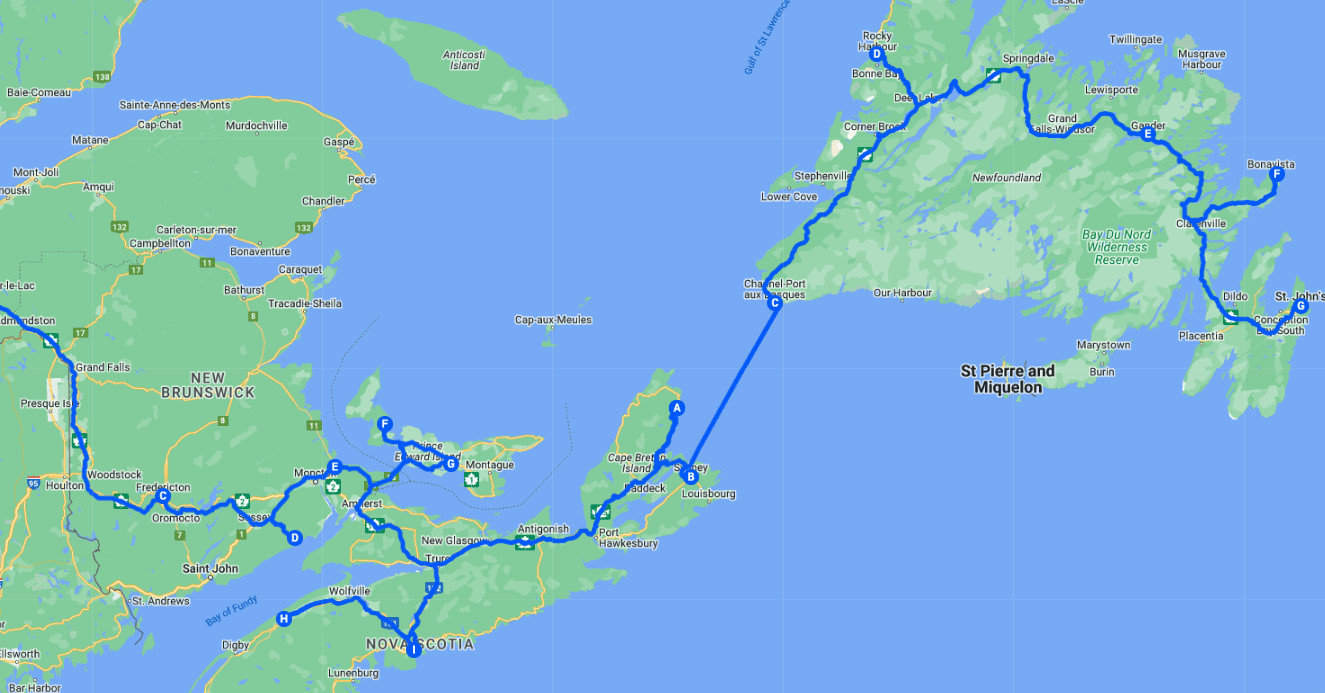
Last but not least is the east coast of Canada! We’ll be visiting all of the Maritime provinces (New Brunswick, Prince Edward Island, Nova Scotia), as well as Newfoundland. In this section, you’ll stop at:
- Fredericton
- Fundy National Park
- Charlottetown
- Annapolis Valley
- Cape Breton Island
- North Sydney
- Port aux Basques
- Gros Morne National Park
- St. John’s
Fredericton, NB (6 hrs from Tadoussac)
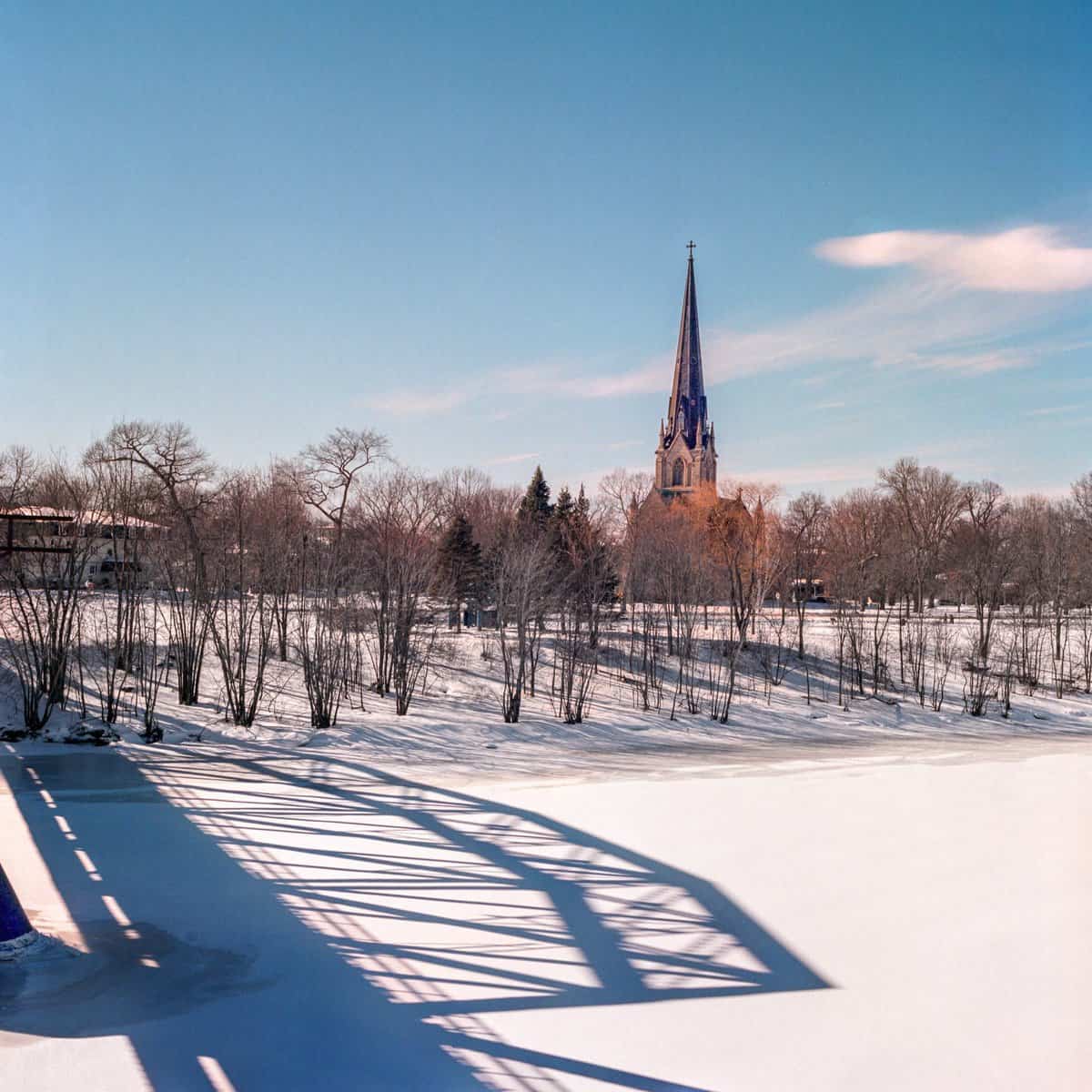
Ready to road trip the east coast of Canada? A big drive from Quebec has you in Fredericton, the provincial capital of New Brunswick.
While certainly not the most popular city in Canada, Fredericton is known for its colonial charm, military history, and arts and music scene. Since it’s such a long drive from Quebec into the Maritimes, why not spend a day or two in Fredericton?
Must do in Fredericton:
- Shop the Fredericton Boyce Farmers Market during the day and the Garrison Night Market in the evening
- Stop by the old British garrison where you can watch the changing of the guard, visit restored barracks and cell blocks, and take part in a soldier’s daily activities
- Visit Kings Landing (no, not that one!) to see what life was like in New Brunswick 200 years ago
Fundy National Park, NB (2 hrs from Fredericton)
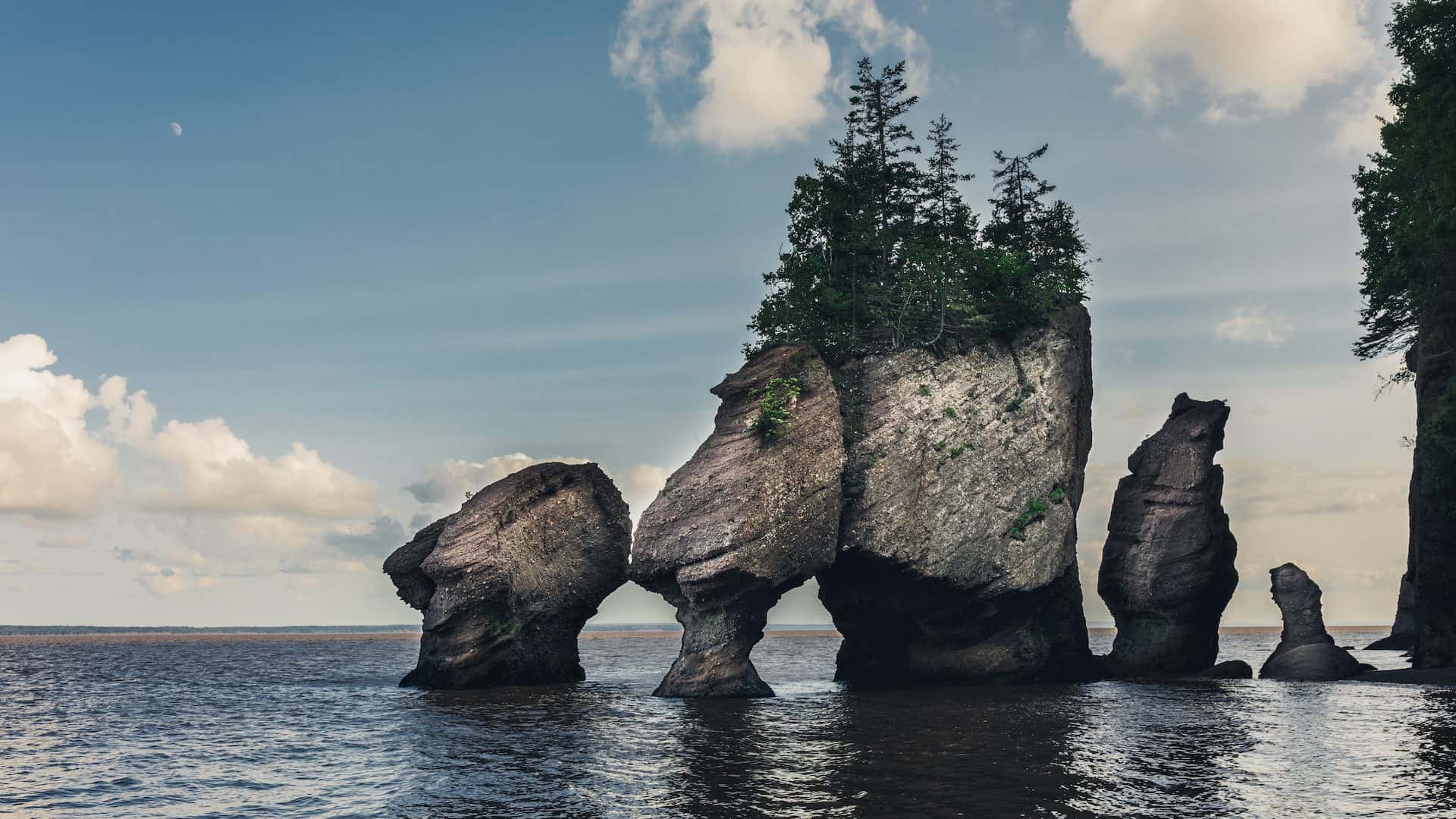
I remember visiting the Bay of Fundy with my family when I was about 12 years old and being wowed by the changing tides. When the tides were out, we were able to walk all the way out onto the ocean floor. This really is a unique area of Canada!
The Bay of Fundy runs along the south coast of New Brunswick and you can visit a number of sites along it. St. Andrews, to the west, is a National Historic Site and when the tide is out, you can actually drive along the ocean floor from St. Andrews to Ministers Island.
Heading northeast you’ll hit Saint John where you can watch the Reversing Falls Rapids. Next you can visit St. Martins Sea Caves, which you can visit on foot or via kayak depending on the tides. From there, you’ll be into Fundy National Park where even more natural wonders await!
Must do at Fundy National Park:
- Hike and visit beaches along the Fundy Trail Parkway
- Visit waterfalls from Alma such as Dickson Falls, Laverty Falls and Third Vault Falls
- Explore Hopewell Rocks at both high tide and low tide
Charlottetown, PE (2.5 hrs from Fundy)
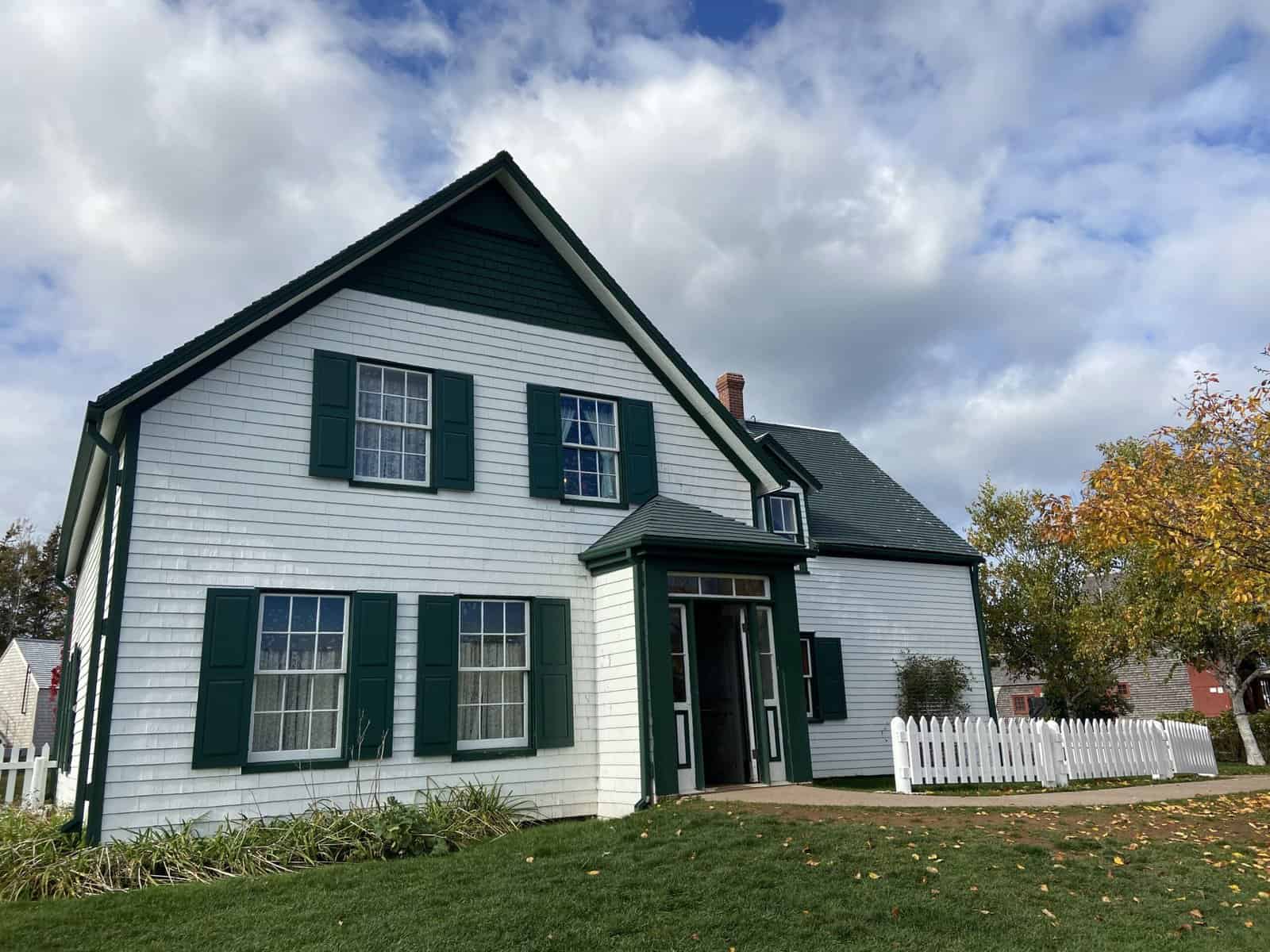
The next stop on your east coast of Canada road trip is Charlottetown in Prince Edward Island (PEI). PEI is Canada’s smallest province and while there’s lots to see, Charlottetown is a great base to explore from since everything on the island is within two hours of the capital city.
The birthplace of Canadian Confederation, Charlottetown is a historic city full of charm, waterfront features and really delicious food (I could not get enough of their ice cream and fresh seafood!). PEI also has sand dunes, museums, Indigenous history, beaches and lots more to discover.
Plus, it’s the real home of Anne of Green Gables! You might know Anne from the novels written by LM Montgomery. Just outside Charlottetown, you can visit the home that inspired Montgomery’s writing. This was one of my highlights in PEI!
Must do in Charlottetown and PEI:
- Eat home grown Cavendish potatoes, Cows ice cream and fresh PEI oysters
- Visit the Anne of Green Gables Museum and walk through her home from the books
- Go beach hopping in PEI: sand dunes, red sand beaches and more!
PS: On your way from New Brunswick to PEI, don’t miss a stop in Shediac, the lobster capital of the world!
Annapolis Valley, NS (5 hrs from Charlottetown)
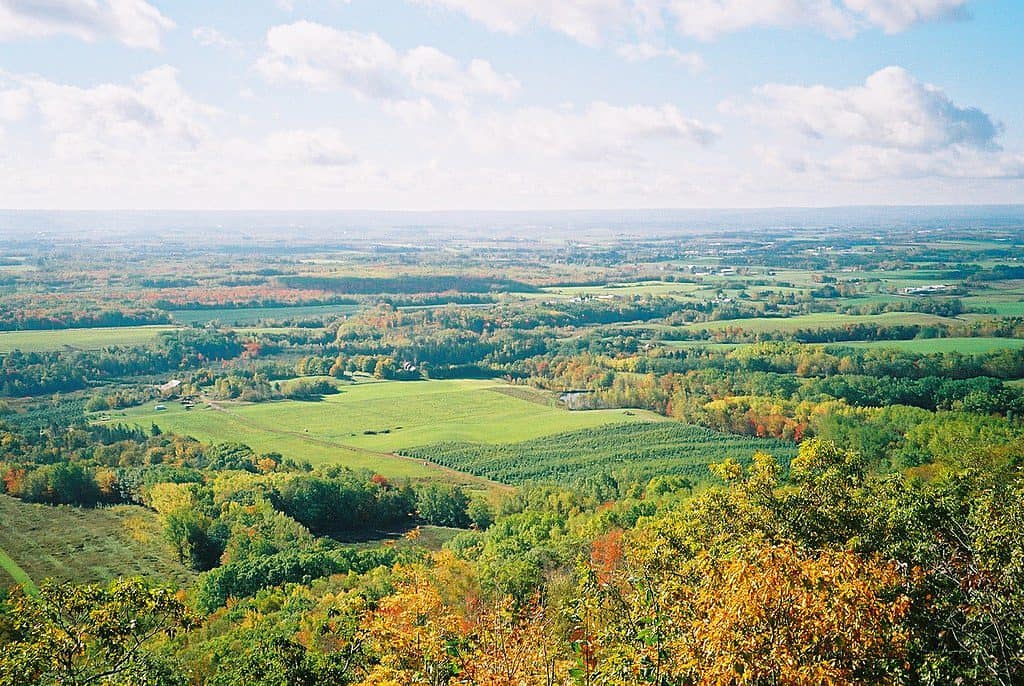
From Charlottetown you’ll head back across the Confederation Bridge, down through New Brunswick and into Nova Scotia. Your first stop in Nova Scotia is the Annapolis Valley, the province’s wine region!
Historically an apple-growing region, the Annapolis Valley is now known for its acidic white wine and Méthode Classique sparkling wine, as well as ciders and spirits. Of course, there’s lots to discover in this area for non-drinkers too! The views are beautiful and there’s lots of nature, history and delicious food to enjoy.
Must do in the Annapolis Valley:
- Go on a wine tour to try the Valley’s best
- Visit a recreation of one of North America’s first settlements at Port-Royal National Historic Site
- Learn about the history and culture of the Mi’kmaw people at Kejimkujik National Park
Halifax, NS (2 hrs from the Annapolis Valley)
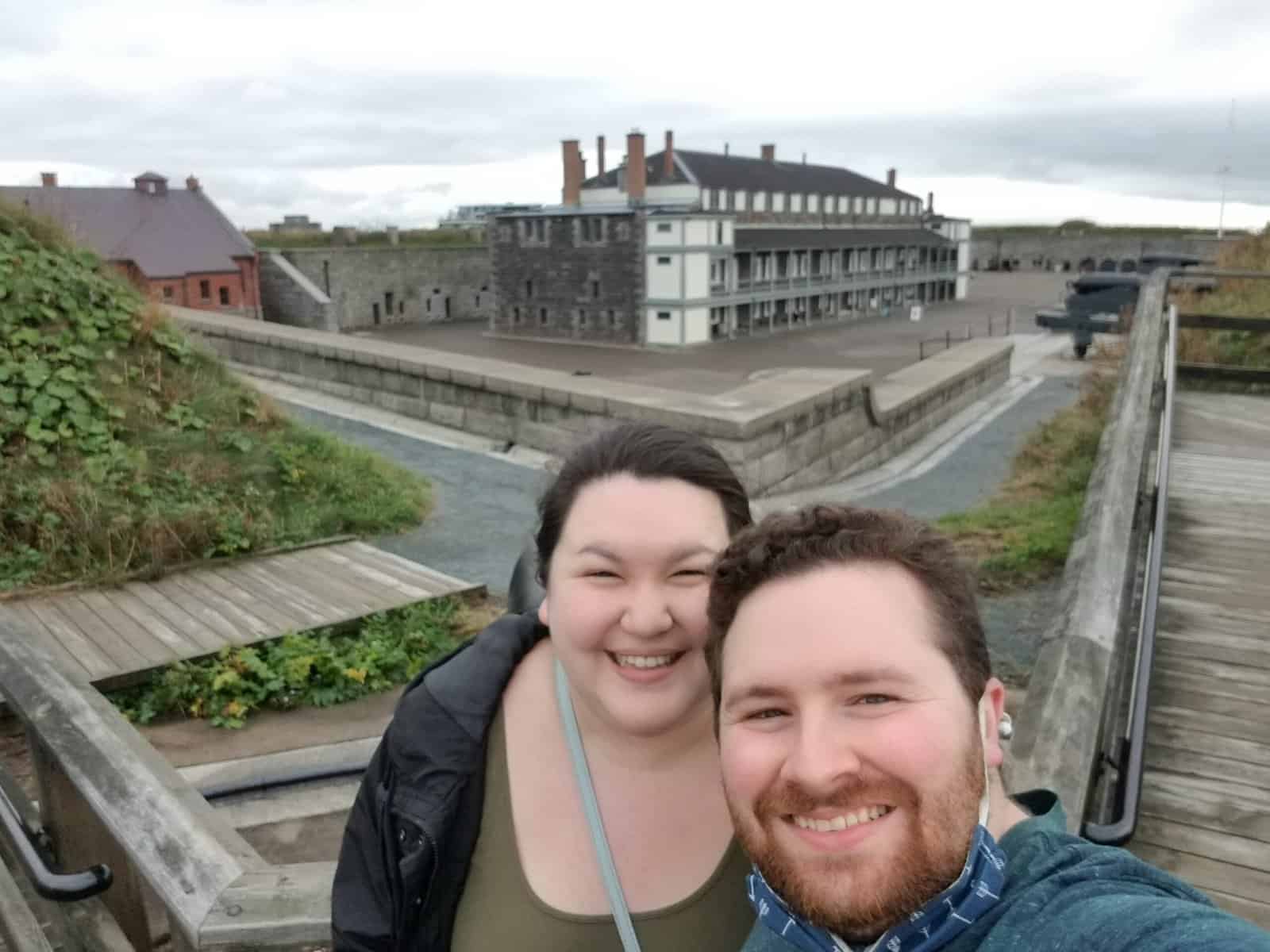
Next up is one of my favourite cities in Canada (and another one I’d consider moving to), Halifax. It was one of the highlights of our Atlantic Canada honeymoon .
Halifax is a really cool city with lots to do, great local seafood, an awesome waterfront and just a great vibe all around. I loved that the city had some awesome history to discover in really engaging ways, as well as lots of modern and multi-cultural offerings.
Plus, there are so many awesome day trips from Halifax along the coast of Nova Scoatia, like the famous Peggys Cove lighthouse and adorable town of Lunenberg.
Must do in Halifax:
- Get dinner at The Bicycle Thief, try Nova Scotian donair and other great eats in Halifax
- Have a moving experience at the Pier 21 Immigration Museum (probably the best museum I’ve ever visited!)
- Visit the Halifax Citadel and learn about Canada’s military history
- Walk along the Halifax Waterfront Boardwalk and take the ferry over to Dartmouth
- Go on a day trip to Peggys Cove , Lunenberg and Mahone Bay
Need more suggestions? Check out 22 things to do in Halifax!
Cape Breton Island, NS (5 hrs from Halifax)
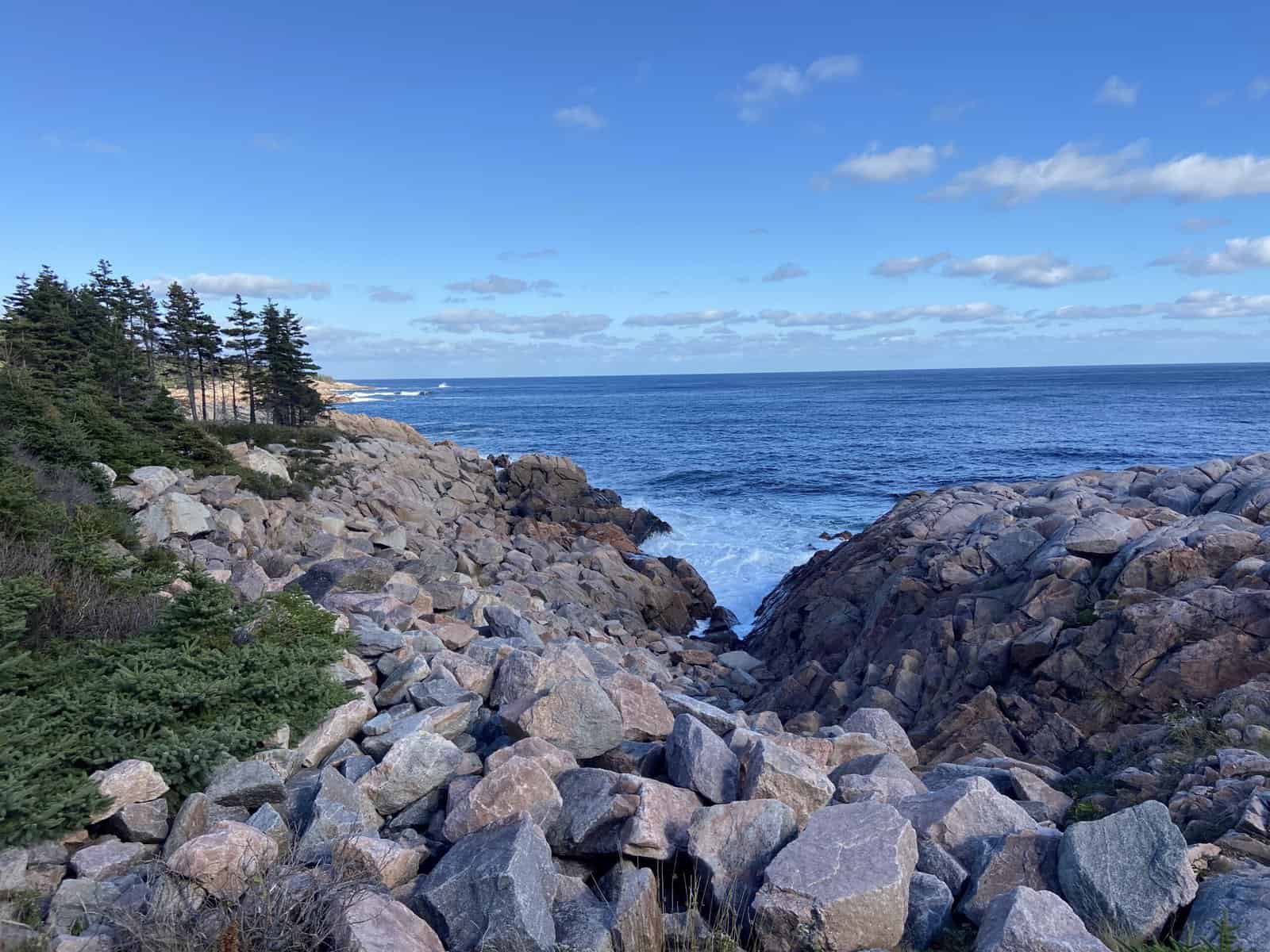
From Halifax you’ll head to the jewel of Nova Scotia: Cape Breton Island!
Depending on how much time you have, you can choose to drive the entirety of the Cabot Trail around Cape Breton Island, or just visit one or two towns. The entire trail is only 298 km (185 mi) long, so could be driven in a day. But I highly recommend spending a few days in this picturesque region!
Cape Breton was the most beautiful part of our 2021 Atlantic Canada honeymoon . We loved checking out beautiful coastal vistas, going on short hikes amongst the fall foliage, and discovering small town bakeries and restaurants. I’d definitely suggest prioritizing this stop on your cross Canada road trip!
Must do on Cape Breton Island:
- Visit the Alexander Graham Bell Museum in Baddeck
- Check out the stunning views at Lakies Head near Ingonish
- Hike the Skyline Trail near Cheticamp
- Eat breakfast at Salty Rose’s Periwinkle Cafe, have dinner at L’Abri and get fresh baked goods at Aucoin Bakery
For more details on where to stay and what to do on Cape Breton, check out my 5 Day Cabot Trail Itinerary on Cape Breton Island, Nova Scotia!
North Sydney, NS (2 hrs from Cape Breton Island)
After your adventure around Cape Breton, it’s time to start making your way to Newfoundland, the most eastern province in Canada and the last one to tick off your Canadian bucket list.
The easiest way to road trip to Newfoundland from Nova Scotia is by taking a Marine Atlantic ferry from North Sydney to Port aux Basques. There is year-round ferry service, typically with two departures a day, and you can drive your car onto the ferry. A sailing takes about seven hours.
While waiting for your ferry to depart, you can enjoy Sydney’s waterfront, explore the nearby Fortress of Louisbourg and check out the world’s largest fiddle!
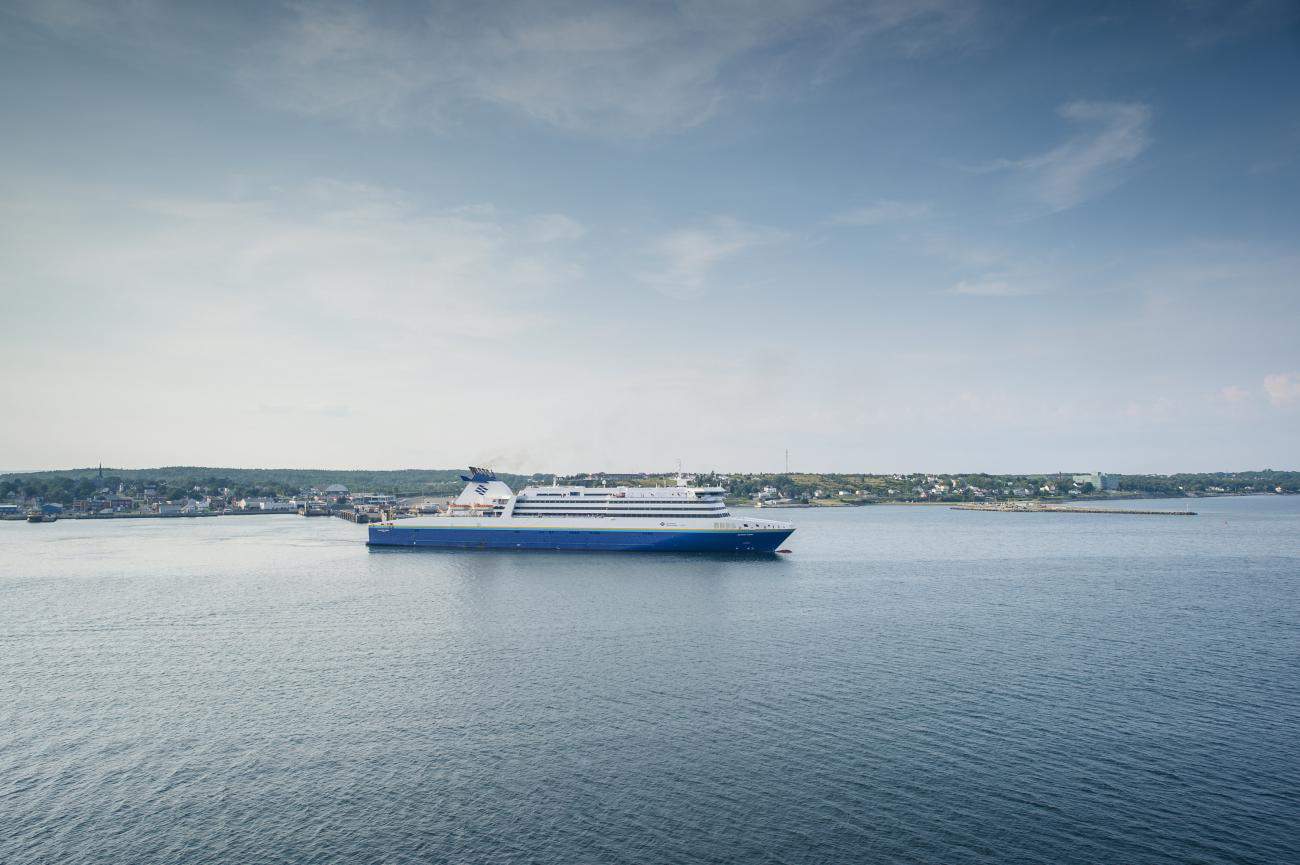
Port aux Basques, NL (7 hrs from North Sydney)
Welcome to Newfoundland, your final province on this massive cross Canada road trip! Depending on what sailing you took from Nova Scotia, you may arrive at Port aux Basques in the evening or early the next morning.
In case you get seasick like I do, or just need a break from being on the move, you may want to book a night in Port aux Basques before continuing on with your east coast Canadian road trip. While in Port aux Basques you can check out the Cape Ray Lighthouse, go for a stroll along the Grand Bay West Beach Trailway, or head out on a marine excursion.
Canadian fun fact: Despite its spelling, most people pronounce Newfoundland as NEW-fin-LAND and not new-FOUND-land.
Gros Morne National Park, NL (3.5 hrs from Port aux Basques)
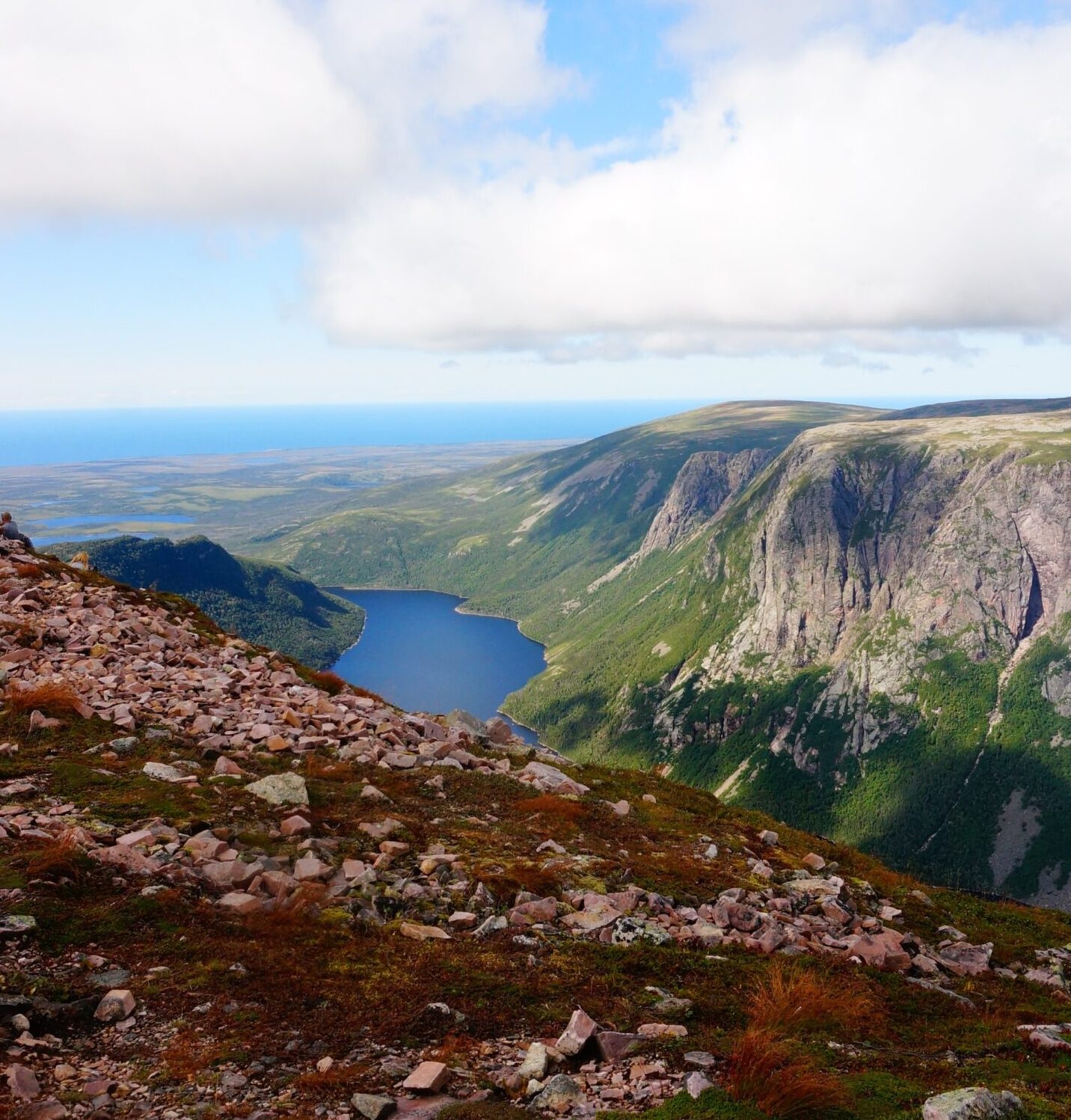
A UNESCO World Heritage Site, Gros Morne National Park is probably one of the most beautiful places in Canada. But because it’s hard to get to and lesser known, it doesn’t see the same huge crowds as Banff or Whistler.
All that means is you’ll have a lot of this beauty to yourself! Explore the rugged coast line and see where tectonic plates once crashed to form epic mountains, rocky tablelands, gorges, ponds, forests and more!
Must do in Gros Morne National Park:
- Be wowed by the view at Western Brook Pond Fjord
- Hike up Lookout Hills Trail or summit Gros Morne Mountain
- Depending on the time of year, you can go for a pond cruise, kayak on Trout River, bike through fall foliage, or ski and snowboard in Burridges Gulch
Gander, NL (4 hrs from Gros Morne)

Come from away to Gander, Newfoundland, the town made famous for hosting the “plane people” when air space was closed during 9/11.
On Sep 11, 2001, 38 planes with 6,500 passengers and crew members were grounded in Gander, which had a population of just 10,000. But Gander stepped up and showed the world what it means to be a good neighbour by welcoming and caring for everyone. This is all beautifully depicted in the musical, Come From Away, which I’ve been very fortunate to see in Toronto and Vancouver.
It’s because I’m such a fan of this musical that Gander is on my Newfoundland bucket list. But even if you don’t know the show, this is a pretty remarkable town to visit and an important place in history.
Must do in Gander:
- Visit the Gander International Airport, once the largest airport in North America
- Learn about Gander’s aviation history at the North Atlantic Aviation Museum
- Take a trip to the Appleton 9/11 Memorial where a piece of steel from the Twin Towers is located (passengers from the grounded planes donated money to help build the park where the memorial is located)
Elliston, NL (2.5 hrs from Gander)

We’re coming to the end of your east coast Canada road trip. On your way to Elliston, stop at Terra Nova National Park, Canada’s most easterly national park, and the Discovery Trail, home to sweeping views and coastal history.
Just before Elliston you can stretch your legs along the Skerwink Trail, once named one of the best walks in the world by Conde Nast, and the perfect place to spot birds and humpback whales.
Speaking of wildlife spotting, that’s why I added Elliston to this Canada road trip itinerary. Nicknamed Bird Island Cove, Elliston is one of the best places in North America to see puffins from land! If you’re visiting between May and September, a visit to Puffin Island in Elliston would be well worth it.
Short on time? Not into puffins? If you’d rather not stop in Elliston, you can carry on straight from Gander to St. John’s (3.5 hrs drive).
St. John’s, NFL (3.5 hrs from Elliston)
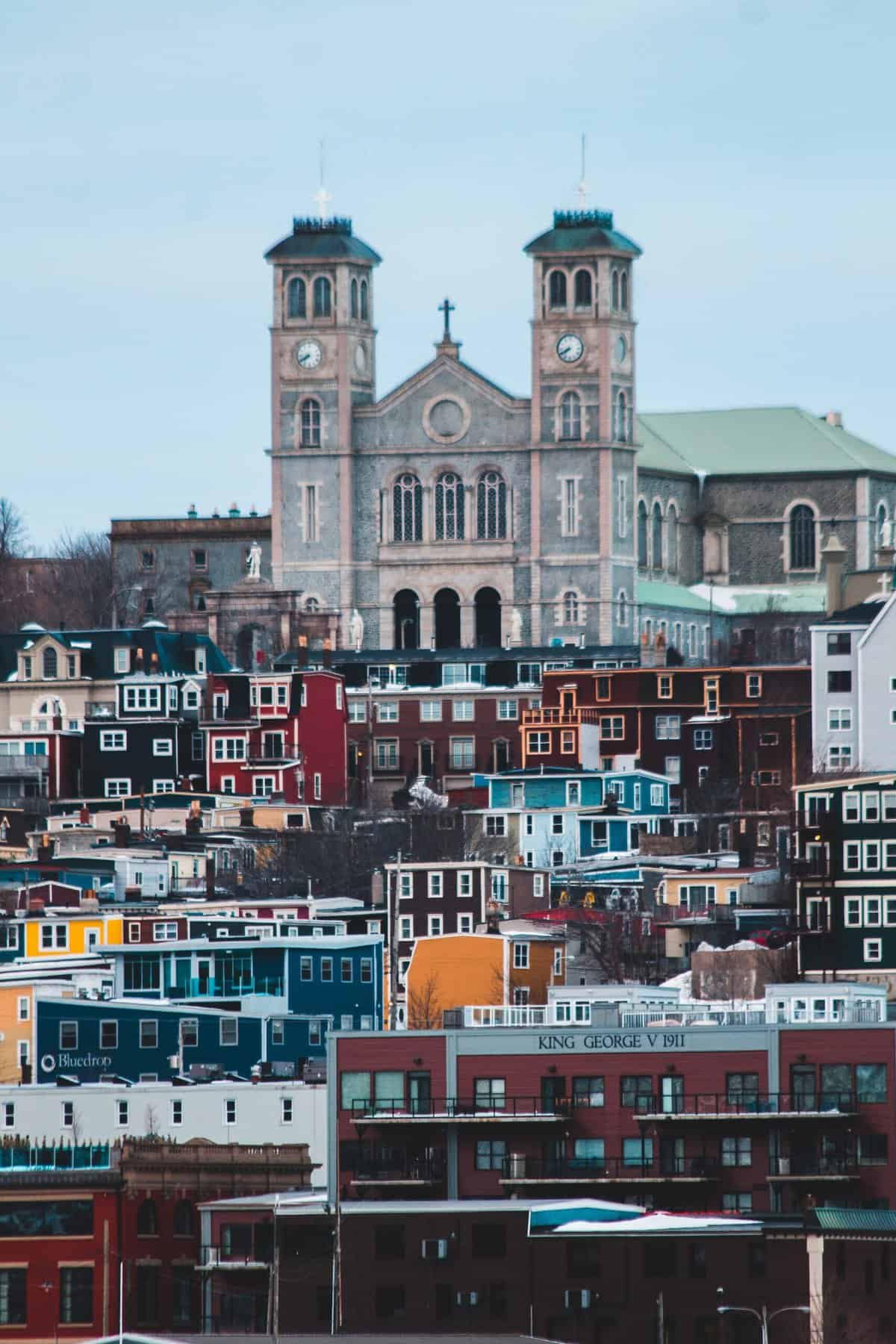
Congratulations, you have officially made it to the end of the ultimate cross Canada road trip! From Victoria to St. John’s, from east to west, from the Pacific to the Atlantic, you have officially driven through every province and the entire length of Canada.
Give yourself a few days in Newfoundland’s artsy, historic and colourful capital to celebrate! Here you can dine out, enjoy Maritime music and discover what makes Newfoundland so unique.
Prefer to celebrate the end of your road trip out in nature? St. John’s has lots of options for that too. Hike the East Coast Trail, go puffin or whale watching, ferry to Bell Island, check out the gardens at Pippy Park or spot wildlife at Salmonier Nature Park.
Must do in St. John’s:
- Take in the views and learn some history at Signal Hill National Historic Site
- Push a little farther east to Cape Spear Lighthouse National Historic Site, the most easterly point in North America
- Learn about the history, art and culture of Newfoundland at The Rooms
- Check out the colourful homes on Jellybean Row
Canadian fun fact: Don’t confuse St. John’s, the capital of Newfoundland, with Saint John, a city (but not the capital) of New Brunswick.
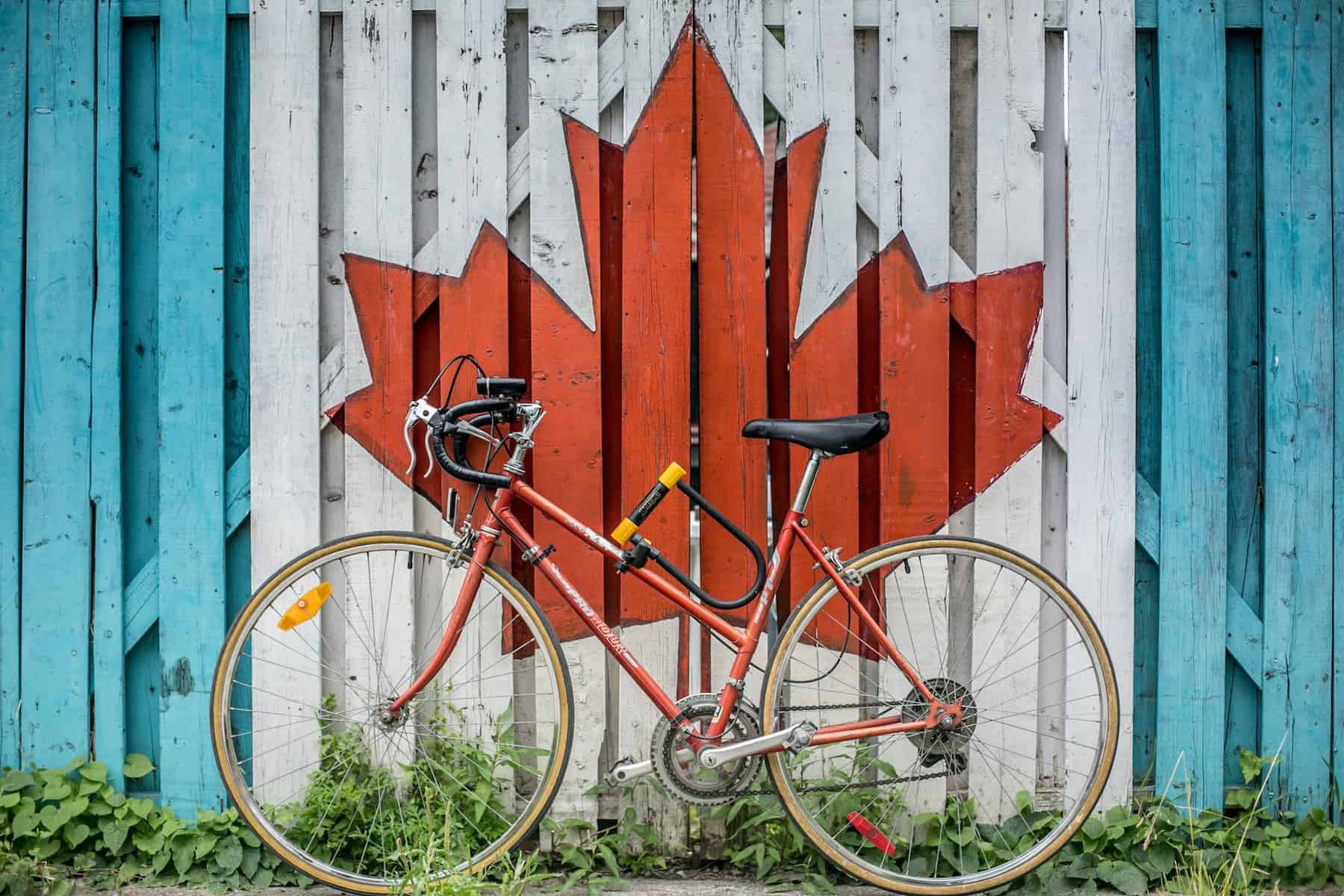
Where to go after you finish driving across Canada
You did it – you drove all across Canada on the most epic cross Canada road trip! Now what?
From St. John’s, you can fly direct to a few places in Canada (like Halifax, Montreal, Toronto or Calgary) or internationally, to places like Orlando, Florida and London, UK . Of course, that would mean either returning your rental vehicle in St. John’s, which may incur an expensive one-way fee, or selling it there, which could take time.
If you’re keeping your vehicle, the easiest way to leave St. John’s is to drive to Argentia (1.5 hr drive) and ferry back to North Sydney . This overnight ferry boards at 5:00pm and arrives in North Sydney the next morning at 9:00am.
If a 16 hour ferry crossing doesn’t sound like your cup of tea, you could drive back to Port aux Basques (9 hrs from St. John’s) and get on the 7 hour ferry to North Sydney from there.
Or, you can put your most seaworthy road trip companion on the long ferry from Argentia while you hop a flight out of St. John’s (this is definitely what I will be doing – apologies to my husband who will get stuck with the car!).
Once back in Nova Scotia, you’re on Canada’s mainland and can continue driving to your final destination from there . Rather than reverse the Canada road trip you just did, why not check out our neighbour to the south and start a US road trip?
From North Sydney it’s only a 7.5 hr drive into Maine, where you can begin exploring the US. That may or may not be the next big road trip I’m planning!
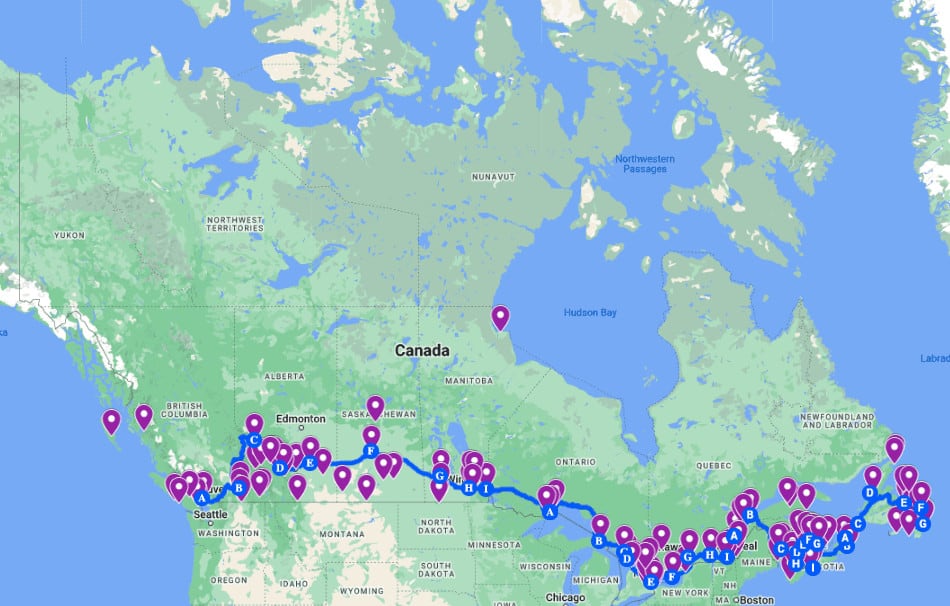
What’s missing from this Canadian road trip planner?
Frankly, quite a lot! Canada is a huge country and while this road trip covers 34 places across all 10 provinces, that barely scratches the surface of what Canada has to offer.
I created this itinerary by researching places of interest in each province. Next, I plotted them on a map, which you can see above with all of the purple dots.
I then figured out a driving route that would link as many of the dots as possible without detouring too far from the most efficient east-west route. Sadly, some of the purple dots didn’t make it into the final road trip itinerary as they were just too far away.
The majority of Canadians live along the Canada/US border, so you’ll notice that my road trip route also stays quite far south. That means I missed a lot of central/northern Canada, including incredible places like:
- Haida Gwaii in BC
- The home of polar bears in Churchill, Manitoba
- All of the territories (Yukon, Northwest Territories, Nunavut)
- The capital of Alberta (Edmonton)
- Algonquin and Muskoka in Ontario
- Quebec’s Gaspe Peninsula
- Labrador, which makes up the province of Newfoundland and Labrador
All of these places are well worth visiting, but difficult to do on an east-west Canada road trip that’s primarily based in the south of the country. I hope to visit them all some day on separate trips!
How to plan a road trip in Canada if you’re short on time
The road trip itinerary I listed above covers 34 stops across Canada and would likely take 2-3 months to enjoy properly. But what if you don’t have 2-3 months to road trip Canada? No worries! There are lots of cross Canada road trips you can take if you’re short on time.
Obviously you can complete just a part of my road trip itinerary above if you don’t have time for the whole thing. But here are a few more suggestions for Canadian road trips depending on how much time you have:
1 week Canada road trip: Drive from Toronto to Quebec City
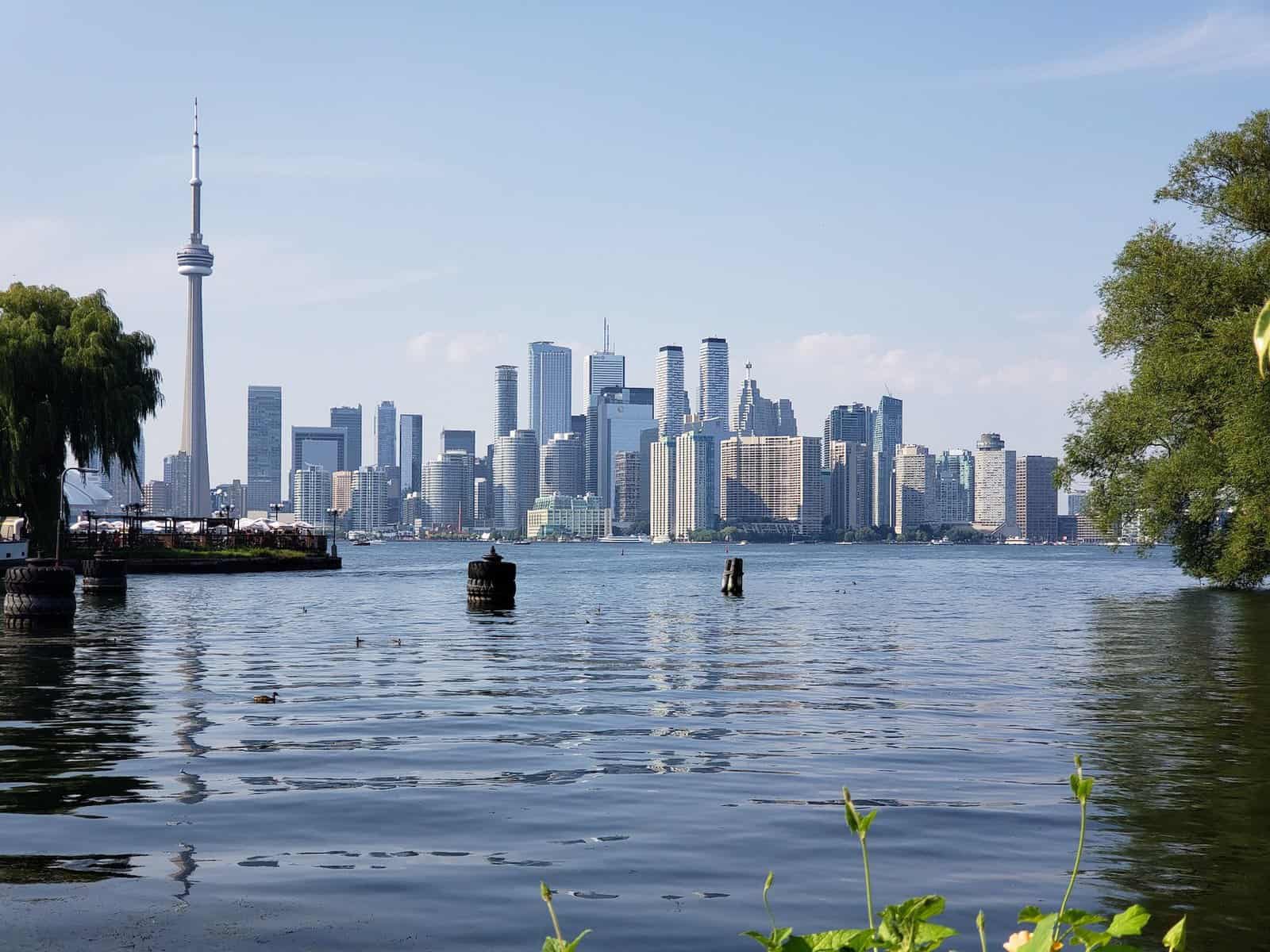
Toronto (3 nights) > Montreal (2 nights) > Quebec (2 nights)
With one week, you could do a mini Ontario and Quebec road trip when you drive from Toronto to Quebec City, stopping in Montreal along the way.
You could also take a half or full day trip to Niagara Falls from Toronto . The entire drive is only 8 hours, making this an easy road trip to complete in a week.
2 week Canada road trip: Vancouver to Banff road trip

Victoria (2 nights) > Vancouver (3 nights) > Kelowna (2 nights) > Jasper (2 nights) > Banff (3 nights) > Calgary (2 nights)
Two weeks would be a great amount of time for a Vancouver to Banff road trip, seeing the best of the Rocky Mountains and Canada’s west coast. You can stop for wine in Kelowna and even push north to Jasper to really make the most of the area’s beauty!
With two weeks, you would even have time to add on Victoria on the west and Calgary on the east if you’re happy to move fast. Of course, if you wanted to slow down and spend more time at the national parks, you could cut these extra stops and add days in Jasper and Banff.
You can also drive from Calgary to Vancouver if you want to do this road trip in reverse.
3 week Canada road trip: East coast Canada road trip
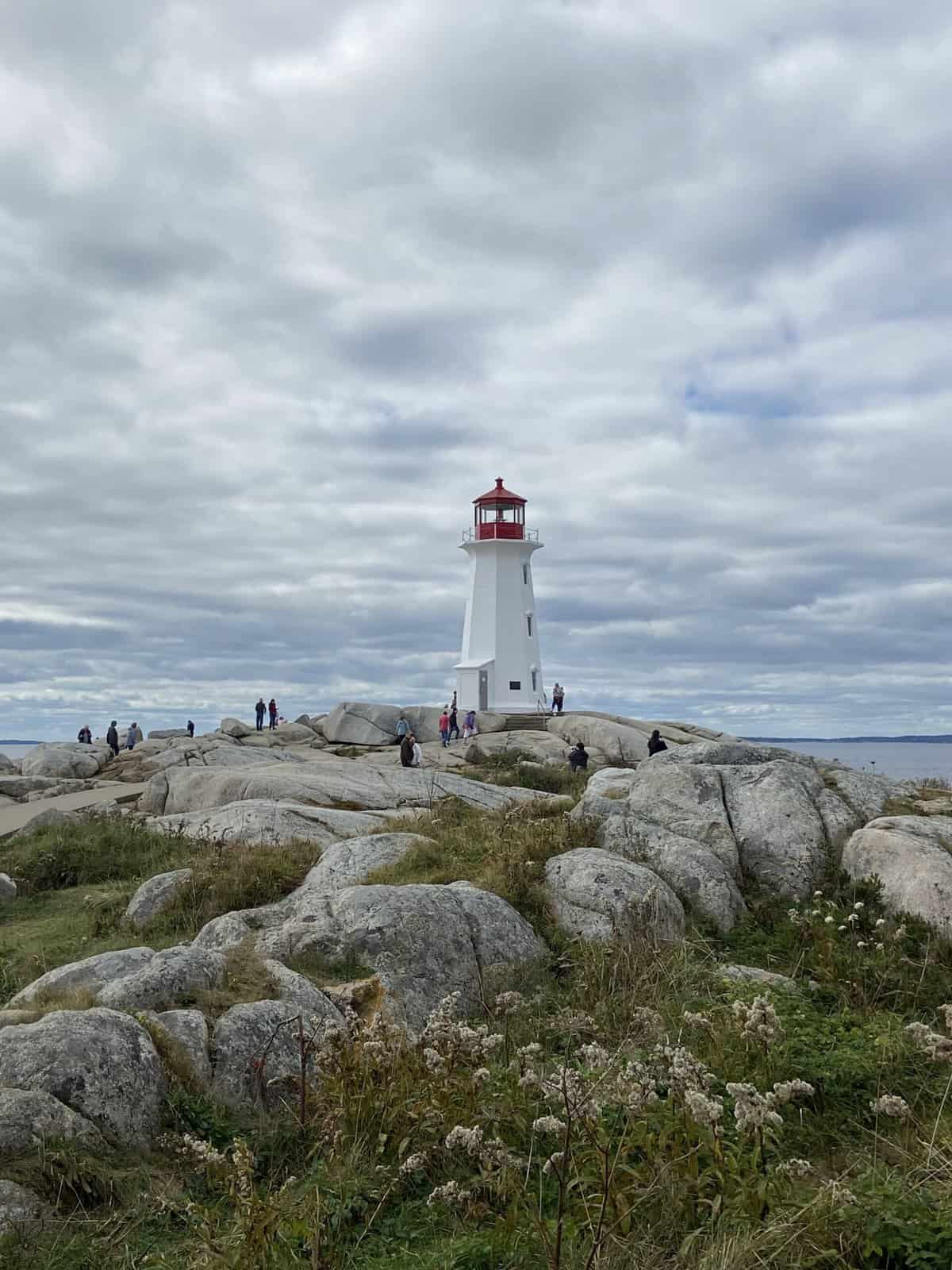
Halifax (3 nights) > Annapolis Valley (2 nights) > Bay of Fundy (3 nights) > Charlottetown and PEI (4 nights) > Cape Breton Island (3 nights) > ferry to Newfoundland (1 night) > Gros Morne National Park (2 nights) > St. John’s (2 nights) > ferry to Nova Scotia (1 night) > return to Halifax
When we went on our Atlantic Canada honeymoon , we had about 3 weeks to explore the Maritimes and it was a great amount of time.
I would highly recommend dedicating a three week Canadian road trip to one region of the country, whether that’s an east coast Canada road trip or west coast Canada road trip, rather than trying to drive across a few regions.
I’ve started this itinerary in Halifax, as it’s probably the easiest airport to fly into. After a few days exploring the city of Halifax, you can pick up a car and explore Atlantic Canada! You’ll start with wine tasting in the Annapolis Valley and then drive over to New Brunswick to check out the Bay of Fundy.
From there, you’re driving over to PEI for fresh seafood and then back to Nova Scotia to loop Cape Breton Island. Next, you’re on the ferry to Newfoundland where you’ll see the views of Gros Morne National Park and colourful homes of St. John’s.
Finally, you’ll board the overnight ferry and make your way back to Halifax where you can return your rental car and fly home.
1 month Canada road trip: Toronto to Vancouver driving trip

With a whole month, you can make a pretty serious dent in driving across Canada! Rather than stretching yourself to drive from coast to coast, save the Atlantic provinces for a future trip and just drive from Toronto (my old hometown) to Vancouver (my current hometown).
- Week 1: Toronto, Tobermory & Manitoulin Island
- Week 2: Driving across the prairies (see my recommended spots in the full itinerary above)
- Week 3: Banff & Jasper
- Week 4: The Okanagan & Vancouver
Alternatively, you could head east from Toronto and spend a month exploring Ontario, Quebec and the Maritimes. You probably wouldn’t have time to make it to Newfoundland, but you could tick off quite a few east coast provinces.
- Week 1: Toronto, Prince Edward County & Ottawa
- Week 2: Montreal, Eastern Townships & Quebec
- Week 3: Bay of Fundy and PEI
- Week 4: Halifax and Cape Breton Island
Wrapping up: 10 cross Canada road trips tips
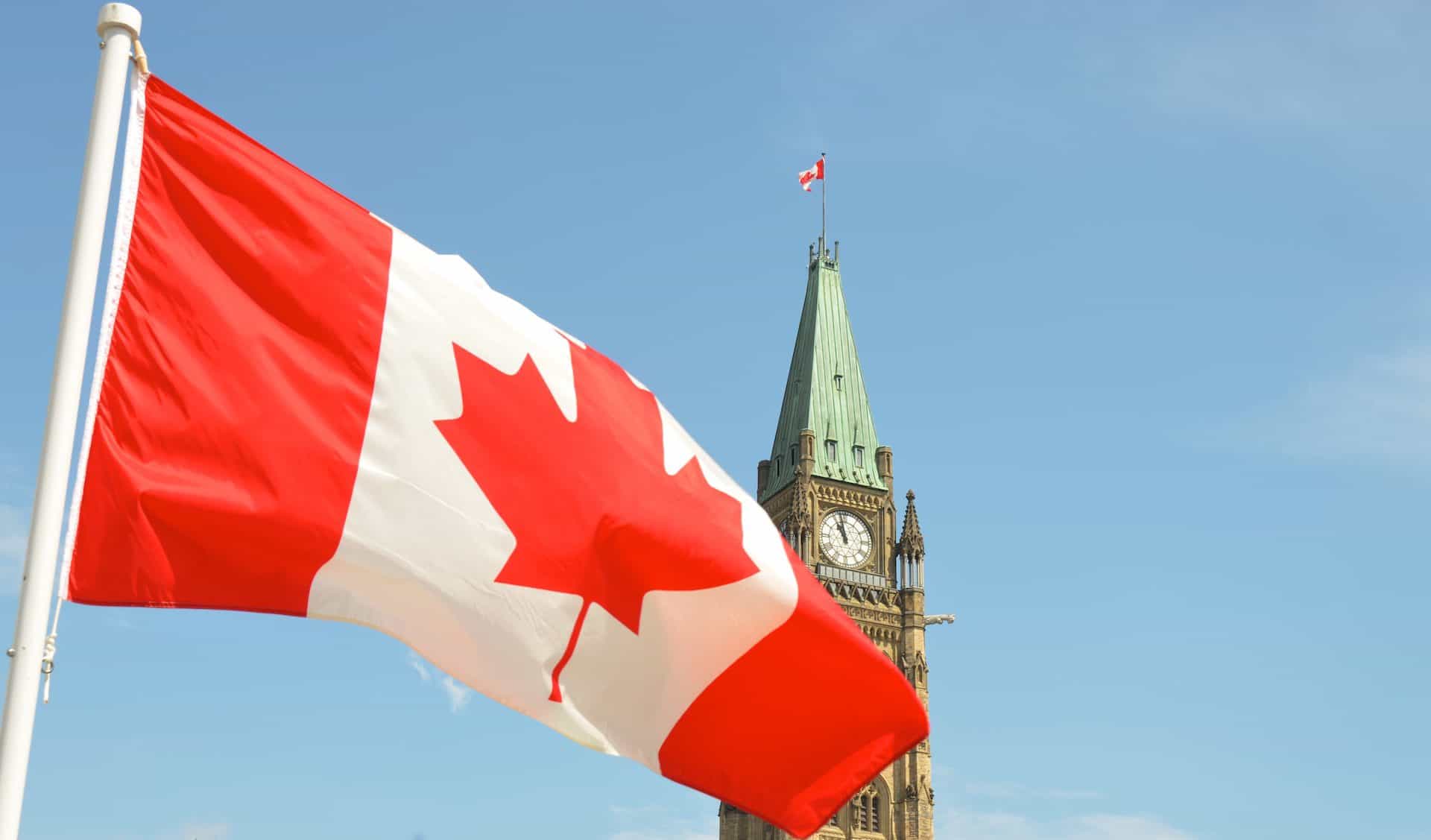
Before you hit the road, keep these road trip tips in mind!
1. Safety first (car edition) : Make sure you’re comfortable driving the vehicle you’ll use for this Canadian road trip and that any necessary maintenance is taken care of. Follow the rules of the road, regularly service your car and have jumper cables available.
2. Safety first (human edition) : Stay safe and healthy on the road by staying in accommodation that you’re comfortable with, and keeping in touch with friends and family (particularly if you’re travelling alone). Make sure your car is stocked with water, a first aid kit and any other emergency supplies.
3. Book ahead in the busy season : Campgrounds, tours and parking lots fill up fast in busy Canadian tourist hot spots in the middle of summer! Make sure you do your research and book ahead when needed. While this might impact your ability to be spontaneous, it could save you a lot of stress and money.
4. Download all the apps : These days there are apps to help you find cheap gas, roadside attractions, free places to park, scenic campsites and so much more! Download the apps you need and be sure you have offline maps downloaded to help you navigate when you don’t have cell service. You may also want to join a roadside assistance or hotel loyalty program.
5. Consider a parks pass : Depending on how many national parks you’re visiting, you may want to buy the Parks Canada Discovery Pass for cheaper entrance to all of the national parks of Canada. Each province also has a pass for their provincial parks, which may be worth looking into.
6. Take it slow : If this is your first time to Canada or first big road trip, slow down. Give yourself time to get used to life on the road and schedule off-days so you can rest, do laundry, etc. Remember, Canada is a big place! You’ll enjoy your Canadian road trip a lot more if you aren’t driving 8 hours a day, rushing from one stop to the next.
7. Have a plan to stay connected : Depending on where you’re going on your road trip, you may not always have cell or internet service. And depending on where you’re coming from, you may not be able to use your home service in Canada. Look into options ahead of time, like buying a portable wifi unit, getting an e-Sim or stopping at wifi-friendly cafes, so you can stay connected.
8. Start preparing early : If you’re planning to be on the road for a couple of weeks or a couple of months, you’ll want to prep ahead of time. How far do you want to drive each day? Are you staying at campgrounds or hotels? Are you eating out or hitting the grocery store?
If you’re travelling with anyone else, make sure you’re having these conversations with them so everyone is on the same page.
9. Be respectful : Your Canada road trip will likely take you through lots of natural areas, so remember to Leave No Trace and be respectful of the outdoor environment. It’s also important to do your homework about whose land you’re travelling on, paying respect to Canada’s Indigenous peoples whose unceded land we live on.
10. Plan your next trip back to Canada! Whether you drive from Victoria to St. John’s or just a small section in between, make sure this trip to Canada isn’t your last. Hopefully you’ll be amazed by the natural wonders, history, culture, food and people here in Canada, and eagre to plan your next trip back!
Need to rent a car for your road trip? Get the best deal with Discover Cars!
And there you have it, my ultimate cross Canada road trip itinerary. I hope this itinerary has gotten you excited for your own road trip across Canada. I’d love to know: Where in Canada do you most want to visit?
Check out more adventures across Canada:
- 10 Things You Must Eat in Montreal
- How to Spend a Weekend in Penticton, BC
- Camping at Porteau Cove, BC
- 5 Day Cabot Trail Itinerary on Cape Breton Island, Nova Scotia
- 22 Things to Do in Halifax, Nova Scotia
Save my cross Canada road trip itinerary for your future trip planning. Pin it!
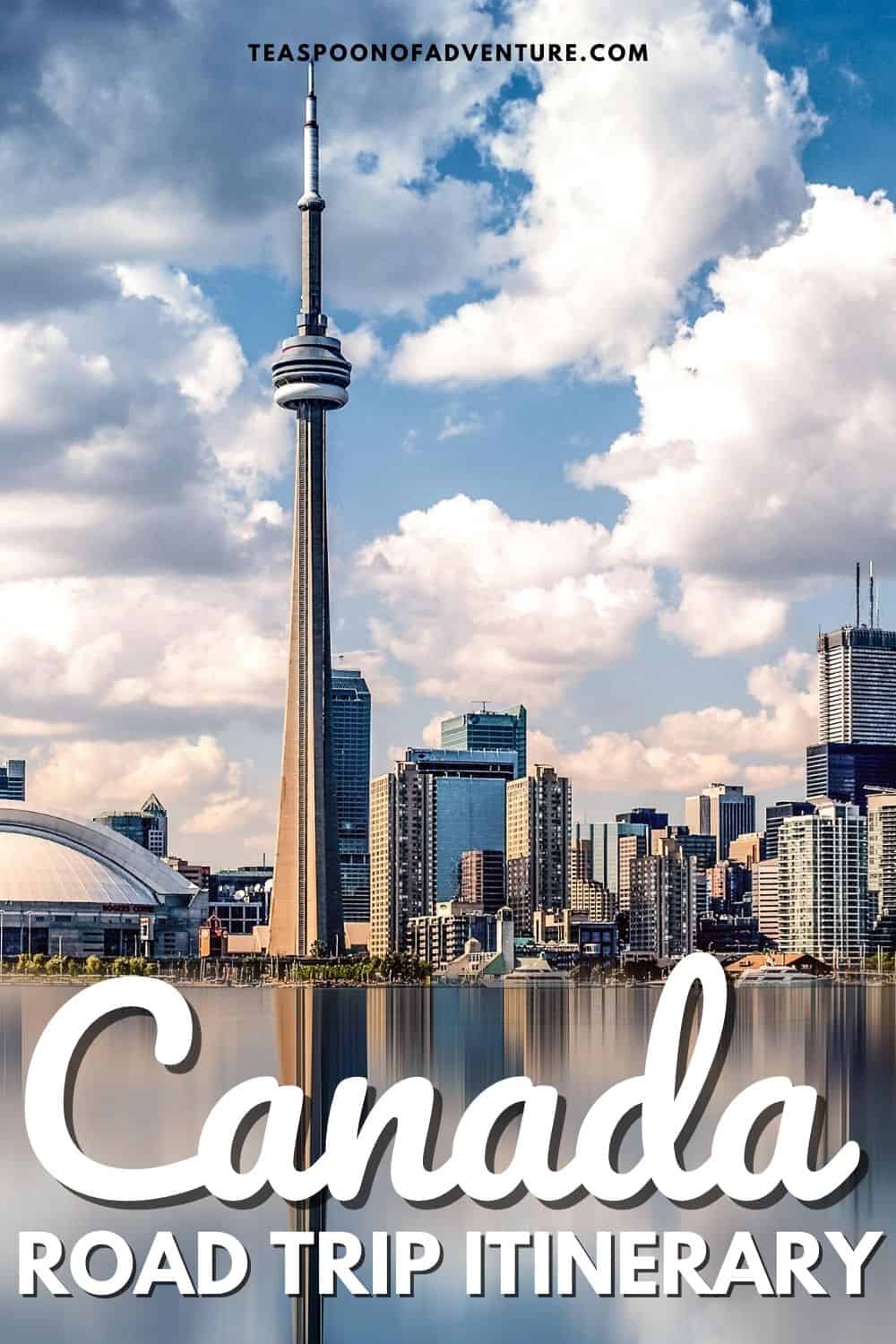
Riana Ang-Canning is a travel writer who has been sharing her global adventures as the founder of Teaspoon of Adventure since 2012. In that time, Riana has travelled to almost 50 countries on 6 continents, including interning in Eswatini, working in Tokyo, road tripping New Zealand and living abroad in Prague. Riana helps everyday travellers discover the world on a mid-budget, proving that you don't have to be athletic, wealthy or nomadic to have an adventure!
Similar Posts

Leaving Prague (Almost Three Months Early)

Traveller of the Month: Francesca from Little Lost Travel

We Day, Windsor and Wicked in London, England
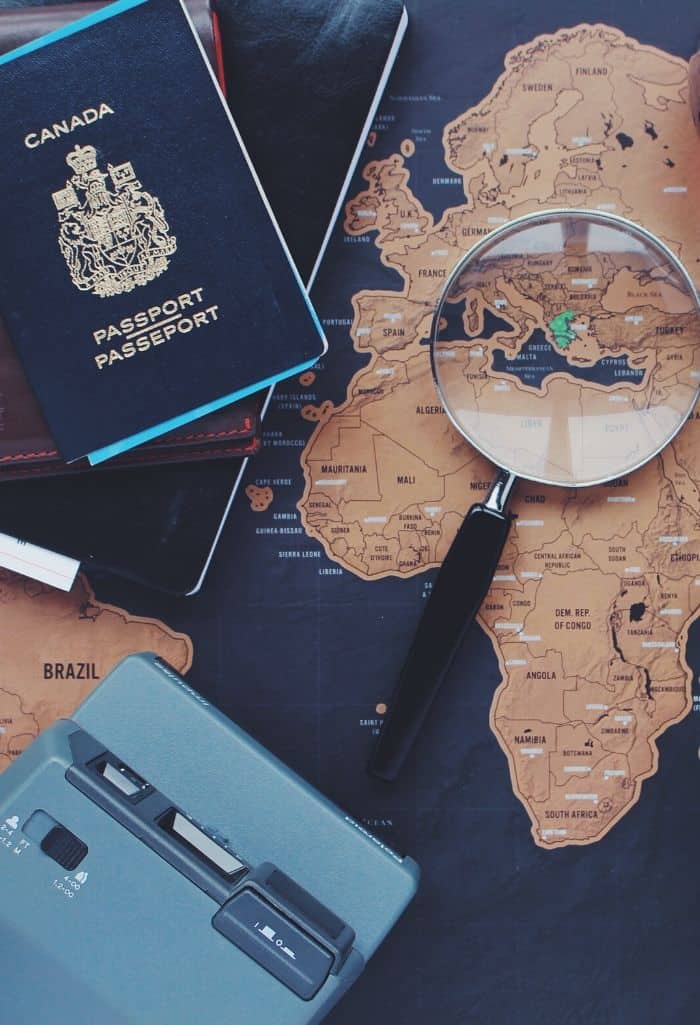
12 Reasons to Solo Travel

10 Things to Do in Siem Reap – Besides Angkor Wat
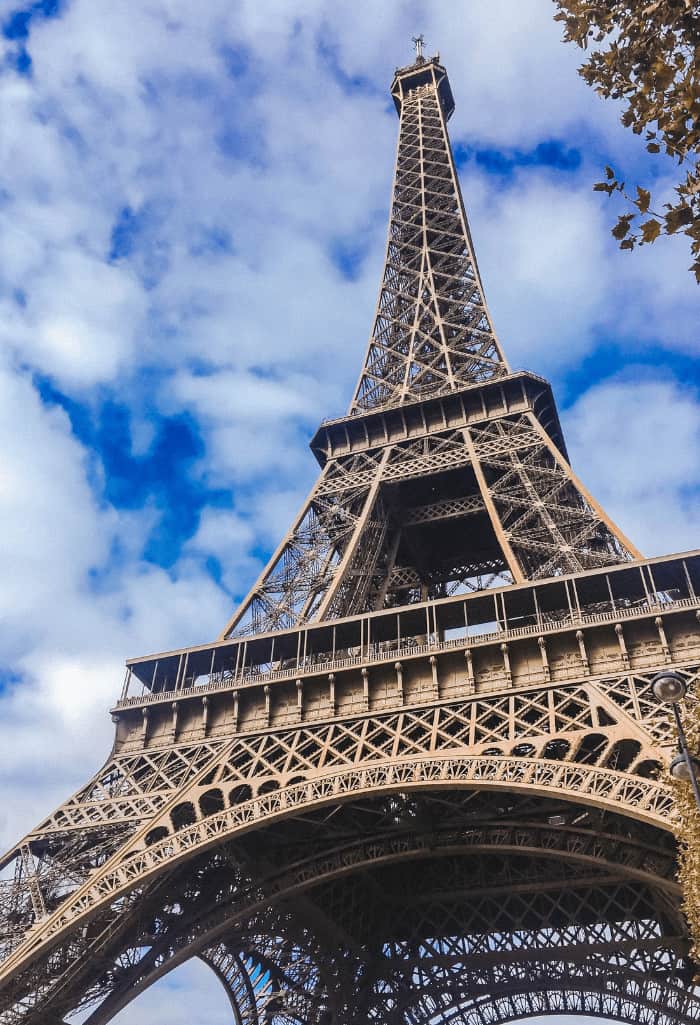
2 Days in Paris – Your Perfect Itinerary
22 comments.
What a great trip you have to look forward to! I took 9 weeks to do this trip (return) the summer of 2019 and it was amazing — mainly staying in motels and AirBnBs (pre van life). You have many of the same stops on your itinerary. Just make sure to leave time for serendipity — those things you learn about from a sign on the side of the road.
-Lyn |www.ramblynjazz.com
Thanks so much, Lyn! So cool that you’ve been on this trip and great advice. Definitely have to leave room for some spontaneous stops and detours!
Yes to long-form content! Well done on pulling toegther this insanely comprehensive guide and road trip across Canada. This is content I’d love to read and indulge in. Your stops not only have a great distance to another to not overwhelm oneself and exhaust the driver, but I found all stops to be very engaging and of interest. It shows how much there is to do and see in Canada within reasonale distance, once you are here, why not check out this place, only 1.5h away and this makes a road trip interesting and long-lasting for me. I also appreciate the cafes recommendations along the way. Keep it up Riana!
Thanks so much, Carolin! You are definitely my inspiration for well-researched, long form content. I’ll have to commission you to do the cafe companion post to this one some day!
What an amazing trip ! I love that you provided a shorter version also. However, I would love to do the longer one. I worked in Toronto one summer when I was a student and travelled around by train a little. I visit Montreal regularly as have family living there. But I have only visited a fraction of Canada so would love to explore further especially the West coast and mountain provinces.
Enjoy the trip and safe travels,
Thanks so much! I hope you get to explore more of Canada one day!
After reading this, I am so ready for a cross-Canada road trip! Growing up, my family regularly drove Ontario to BC and back as our summer vacation, and we also drove one summer to PEI and one summer to Newfoundland, so I’ve done it all in sections. (We usually opted for the detour through the States to skip Thunder Bay, sorry haha, but I’d like to give it another chance.) I’d looove to do it all at once as you’ve planned here, and there are a few places I’ve havent seen yet (somehow we skipped Fredericton, for example, and I’d like to see the new Canadian Museum for Human Rights in Winnipeg). I’d forgotten how beautiful Tobermory is. I appreciate the “What’s missing?” section because it’s impossible to see it all in one trip—we are too lucky in this country!
Aw thanks so much for checking out the post, Melanie! So cool that you’ve been all over Canada with your family and I hope you (and I!) get to do the full road trip soon.
Thank you for sharing your Canada road trip, which looks an epic road trip, I have wanted to visit Canada, but I wont be doing it all in one long road trip in stages would be lovely, this has certainly given me some ideas for the future 🙂
Thanks, Nic! I hope you have an awesome time when you visit Canada.
Great blog! I did road trips in other parts of the world but needed clarification about the itinerary in Canada. Now I know how to plan. Thank you so much!
Thanks for checking it out! Glad it was helpful.
This is an excellent read! I have visited most of the places mentioned (in parts, and before having kids) and I can definitely say this is very practical and comprehensive! Like you said, Canada is sooo big that it takes time to visit most of it. Thank you for all the tips and recommendation. I can definitely use them now that I am traveling with my family (ie kiddos).
Thank you so much! I hope you enjoy your next Canadian adventure!
We are planning to do the cross Canada trip this summer. We are really excited about it and appreciate you spending time describing different places to visit. We are really excited about it and now even more so.
That’s so exciting! I’m glad my post was helpful. I hope you have a great time this summer!
Good day Riana
We are planning to self drive in Canada on early fall but we have only 3 weeks to explore . We are from Asia country and we know probably is not enough to explore everything according to the itinerary you recommended . Possible can advise us which is most and must visit from Vancouver to toronto by driving . Really appreciated
Hi Stephanie, thanks so much for checking out my post and how exciting that you’ll be visiting Canada this fall! I would actually suggest two smaller road trips to make the most of your time and see some of the best of Canada. First, driving from Vancouver to Calgary with stops in Kelowna, Jasper and Banff (apx 10-12 days). Then from Calgary I’d fly to Montreal or Quebec City and road trip through Montreal/QC, Niagara and Toronto (apx 8-10 days). Both of those would be one-way road trips, so you’ll likely incur an extra cost for a one-way drop off. You’d also be missing out on the east coast, which is a shame because it’s beautiful. But maybe you can add that to your next trip. I hope that helps and happy adventuring!
Really thanks for the recommendation but may I know the place I will be missing out for the east coast maybe I can adjust for extension
No worries! I actually have a post with my recommended Atlantic Canada itinerary: https://teaspoonofadventure.com/atlantic-canada-honeymoon-itinerary/ . I’d say the main places to see would be Halifax, PEI and the Cabot Trail on Cape Breton. I think you could do that in about 7-10 days, though more time wouldn’t be bad. That could also be a round trip drive if you pick up and drop off your car in Halifax.
Wow, this article really got me excited to plan my next road trip! The diversity of landscapes and destinations mentioned here is truly inspiring. I’ve been to a few of these places, but there are definitely some hidden gems I can’t wait to explore. Thanks for putting together such a comprehensive guide with helpful tips and recommendations. Can’t wait to hit the road and create some unforgettable memories! Right now I’m exploring campsites with my toddler.
Thanks for checking it out, Caroline! Enjoy camping with your little one!
Leave a Reply Cancel reply
Your email address will not be published. Required fields are marked *

10 Days in the Canadian Rockies: The Ultimate Road Trip Itinerary
Discover the beauty of the Canadian Rockies with this in-depth 10-day itinerary.
A few years ago, I spent a blissful 6 months gallivanting around the Canadian Rockies. I was put on a work assignment in nearby Calgary, Canada, and every weekend I’d rent a car and drive out to admire and hike around the majestic peaks and evergreen forests of Canmore, Banff, Jasper, and Waterton Lakes.
And while some of my memories include run-ins with bears or gracefully getting caught in a thunderstorm while hiking above the treeline, the majority of my Canadian Rockies road trip days were pure happiness.
After my travels there, a lot of friends and readers asked me about my travel tips for a Canadian Rockies itinerary. Several readers even went there solely because they’d seen my photos on Instagram.
To be honest, I’m not surprised at all that people see photos of the Canadian Rockies and immediately book a trip.
Yes, it’s actually that beautiful.
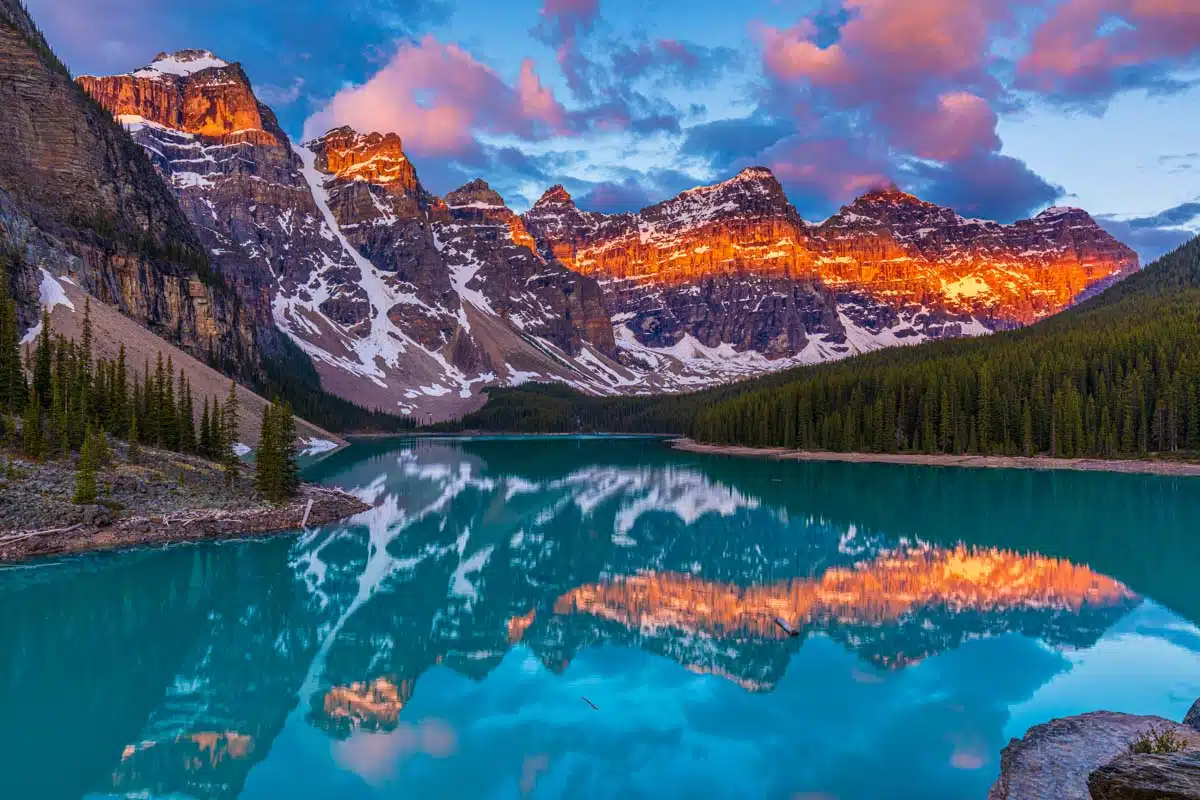
And that’s how this Canadian Rockies itinerary was born.
This itinerary is arguably the most spectacular Canada road trip, and it’s definitely one of the most naturally striking and totally out-of-this-world-beautiful trips you can take in the entire world.
But don’t take my word for it! Read on to learn all of my first-hand tips for planning the ultimate Canadian Rockies road trip.
For your information, this is a SUPER comprehensive guide (read: long and detailed sections to come)! I just wanted to make sure all of our best tips, guides, and resources for the Canadian Rockies were all in one place for you to access easily.
Soooo, grab a glass of your favorite adult beverage, cozy on up, and let’s chat by the crackling fireside about how to plan a kickass Canadian Rockies itinerary!
Travel Tips for Planning Your Canadian Rockies Road Trip
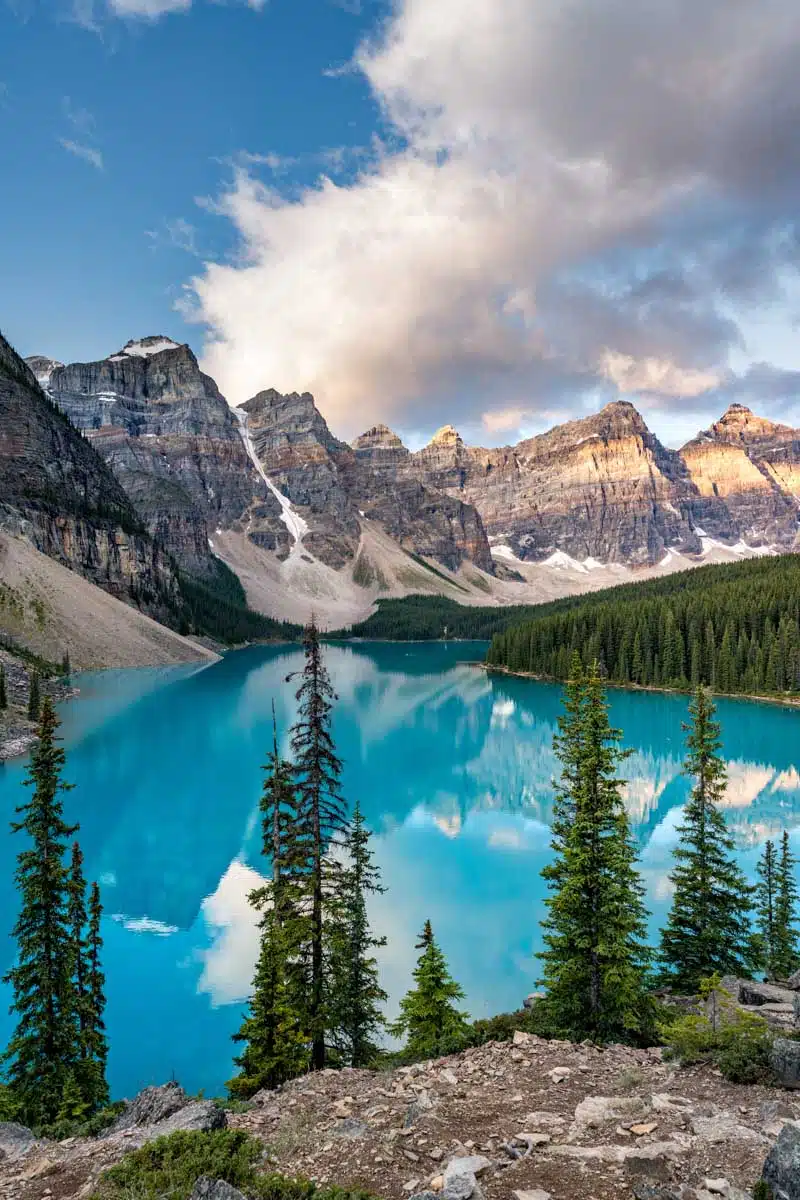
One thing that’s really important to keep in mind is that the Canadian Rockies is becoming a more popular travel destination every. single. year.
That’s why it’s crucial to plan your trip in advance.
If you’re planning on visiting the Canadian Rockies in the highest season (June through August), I’d recommend planning your trip and making all of your bookings AT LEAST 2-3 months in advance.
If you’re going in the shoulder season (May through early June or September through October), you can plan 1-2 months in advance.
From my own personal experience, here’s everything you need to know as you plan your Canadian Rockies road trip:
Important Tips to Know Before Traveling in the Canadian Rockies
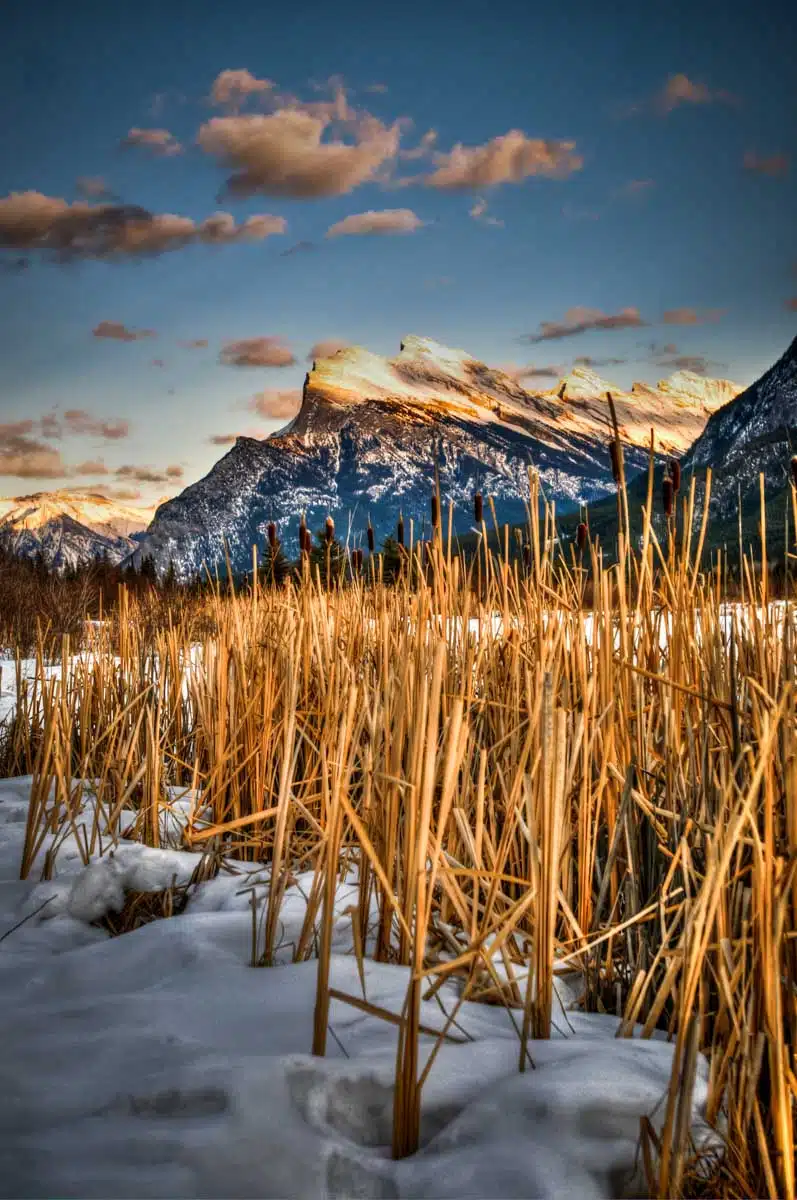
Weather conditions can be very unpredictable. One minute it’s blue skies and sunny and the next, it’s sleeting. This is normal life in the Canadian Rockies, and it’s something you’ll have to get used to if you’re traveling in from a more temperate climate.
Be sure to bring gear for both cold and warm weather (we’ve provided our favorite recommendations a little later in this post), and have waterproof shells for when the weather turns sour.
Accommodation books up very, very quickly. When I was planning my most recent trip to the Canadian Rockies, I noticed Banff and Jasper were already booked at over 80% capacity…2 months before my arrival.
As soon as you think you want to go to the Rockies, you should book cancellable accommodation (Booking.com is great for that!) to make sure you can secure something .
There’s wildlife everywhere. Talk to any local in the area and they’ll tell you wildlife is commonplace here. It’s not out of the ordinary to see a bear or an elk grazing on the side of the road.
You can absolutely admire these animals from a distance (and even go on a special tour to see them!). But whatever you do, KEEP A SAFE DISTANCE and DO NOT FEED ANY ANIMALS. This is their home and we need to respect and protect them.
You need to buy a ticket to enter the parks. While Canmore isn’t part of this, in order to enter Banff, Jasper, or Yoho, you need to pay the entrance fee. The fees are per person, per day, so depending on the size of your group, you’ll either want to pay individually or splurge for a family/group pass. You can see all prices and conditions on the Parks Canada page.
If you want to avoid the crowds, wake up early. This itinerary will be taking you to many different locations, some more popular than others. However, if you’re not a morning person, you miiiiight want to become one during this trip, as the early morning is a) the best time to avoid the crowds and b) the best time for photos of the park because of the lighting.
When to Visit the Canadian Rockies
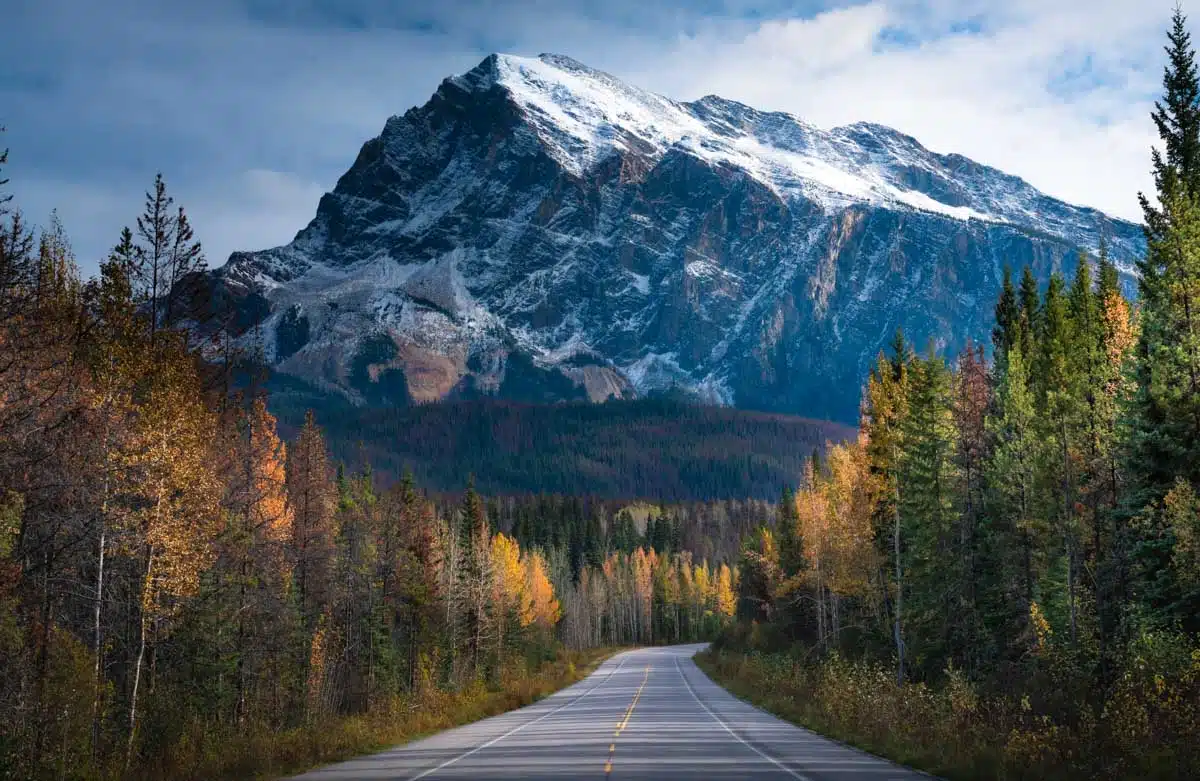
The Canadian Rockies are a year-round travel destination. This means that, yes, you can visit during any month of the year, but what you can do drastically depends on the weather. You’ll need to have the right expectations about weather and available activities.
Visiting in Summer or Fall
Summer and fall usually boast the best hiking and camping weather, but also attract the largest crowds.
Typically, all of the hiking trails and summer adventure activities are open and available during this time of year, meaning that the hotels and lodges are often almost completely sold out and there’s actually traffic.
If you’re planning on visiting the Canadian Rockies during the summer, you’ll need to plan a few months in advance to secure accommodations, car rentals, and tours.
Visiting in the Spring
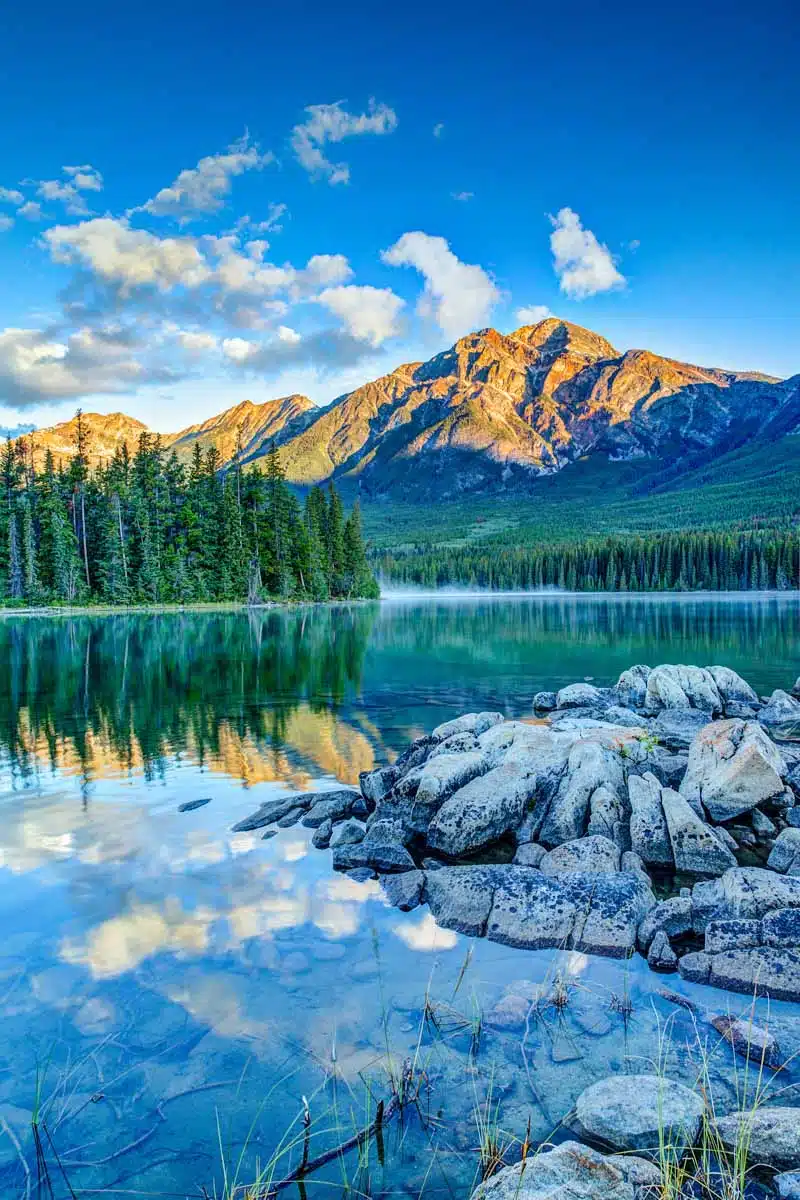
Spring is the shoulder season, especially after the ski slopes begin to melt but the trails are still covered in winter ice. Weather during this time of year can mimic winter or summer, depending on when in the season you visit.
The first time I ever visited the Canadian Rockies, we went in mid-May and, while not all of the hiking trails were open yet, we experienced very few crowds and even had Lake Louise completely to ourselves.
Not a bad trade-off if you’d prefer a more tranquil, quiet experience!
FYI, this Canadian Rockies itinerary is based on a spring, summer, or fall road trip.
Visiting in the Winter
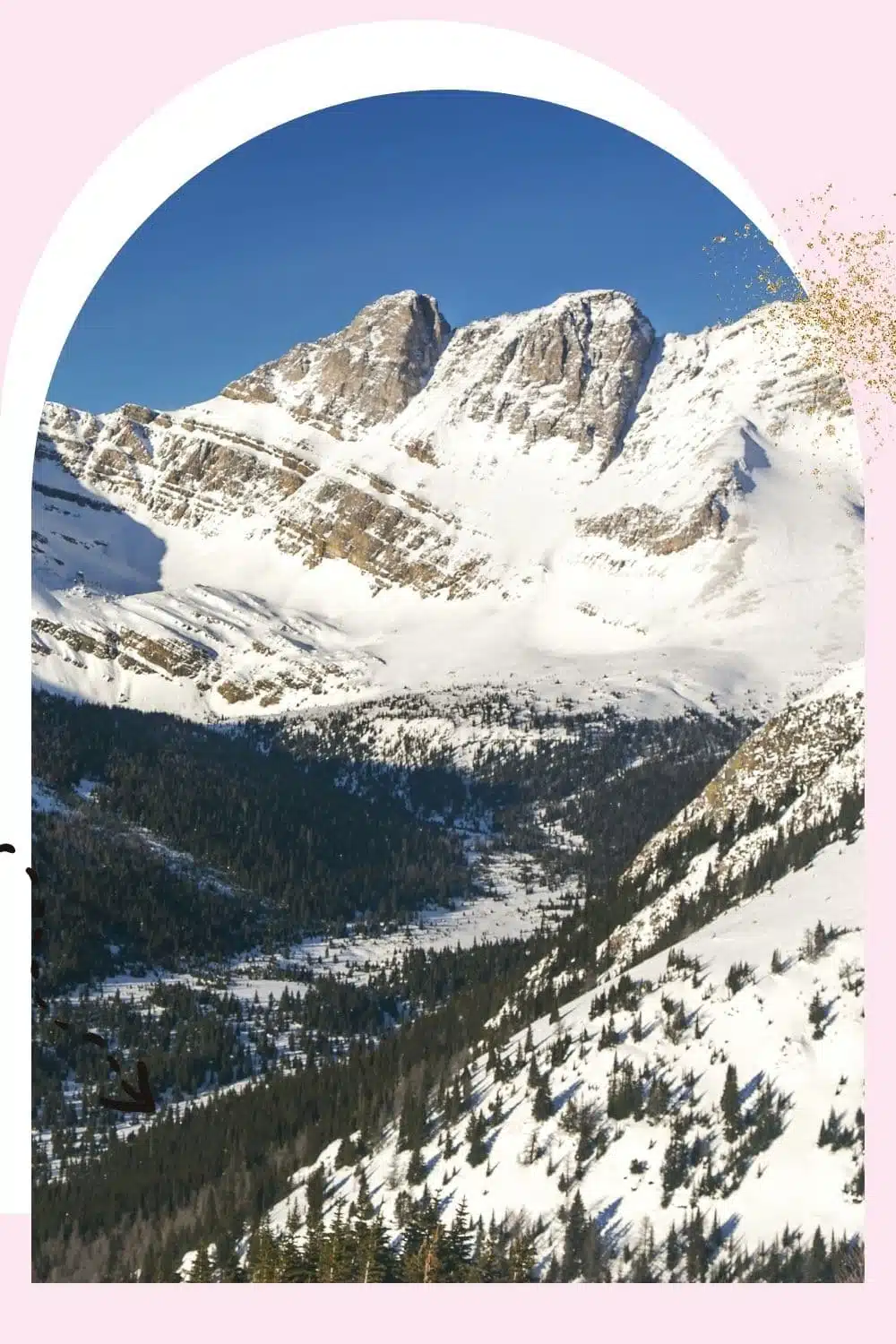
However, that’s not to say you can’t make a Canadian Rockies road trip in the winter. Winter is the least-crowded season in the area, but your activities will be limited to snow sports (e.g., skiing, snowboarding, tubing, etc.) and ice activities (like ice climbing and ice trekking, which are pretty cool, IMO).
If you’re planning on doing any of these outdoor winter sports, I recommend grabbing yourself a pair of crampons, a durable, insulated jacket , and thermal snow pants, as you’ll DEFINITELY need them. Also, make sure that you have all of the most important gear for hiking in winter .
If you’re going to take a road trip during the winter season, I’d strongly recommend having experience driving in snowy/icy conditions, and please make sure to have the right gear, like snow chains, ice scrapers, etc.
How to Get to & Around the Canadian Rockies
If you haven’t already guessed by the fact that this is a “road trip” itinerary, I strongly recommend driving yourself or renting a car to get to and around the Canadian Rockies. Why? Because having your own car gives you the most flexibility for where you can go in the park and what time.
How to Rent a Car in Calgary
Luckily, it’s pretty easy to rent a car at an affordable price from the nearby cities of Calgary, Edmonton, and even Vancouver. You can even rent a car in Banff town. If you’re not from the area, I strongly recommend flying into Calgary International Airport (YYC), as it’s the closest airport to this itinerary’s starting point.
You can rent a car from Avis, Hertz, and Enterprise directly from the airport. However, if you want to save some moolah, I’d recommend checking the prices at Calgary’s downtown car rental locations as well. I’ve found rental cars downtown tend to be cheaper, costing sometimes 20-40% less per day than renting at the airport. Plus, the taxi downtown from the airport only costs ~$15 USD one way.
Getting Around the Canadian Rockies
Once you’ve got a car, there are gas stations all over the Trans-Canada Highway and the Icefields Parkway (the two primary roadways you’ll be using in this itinerary). Before heading anywhere, I strongly recommend checking the Parks Canada road reports, so you know if there are any road closures or bad weather conditions ahead of time.
Where to Stay in the Canadian Rockies
There are places to stay in the Canadian Rockies for any budget level, from penny-pinching backpackers to luxury lovers.
To make planning your accommodations suuuper easy, for each day of this Canadian Rockies itinerary, I’ll be providing two recommendations for places to stay, one budget option and one mid-range option.
I’ll also suggest the most convenient campsite for each day of the itinerary.
However, if you’d like more suggestions or information on where to stay in the Canadian Rockies, we’ve got you covered with 2 complete accommodation guides (Banff and Jasper):
- Where to Stay in & around Banff National Park
- Where to Stay in Jasper National Park
And, for those of you interested in camping in the Canadian Rockies, we’ve got 3 complete and detailed guides on that as well:
The Ultimate Guide to Camping in Banff National Park
- The Ultimate Guide to Camping in Jasper National Park
- What to Pack for a Camping Trip: The Ultimate Camping Packing List
What to Pack for the Canadian Rockies
Clothing to pack for the canadian rockies.
- Waterproof hiking boots – While on a Canadian Rockies road trip, there’s a good chance you’ll be caught walking in mud, snow, and stream crossings. To keep my feet warm and dry during day hikes, I have a cozy pair of Ahnu waterproof hiking boots that always do the trick! My boots have been with me to Patagonia, Peru, Slovenia, and more, and they’re still kicking ( haha, get it?! ).
- Wool socks – You’ll want to bring some warm wool socks to pair with your hiking boots. Not only will these help keep your feet cozy and dry, but they can also help prevent blisters from your boots. We love our Darn Tough hiking socks for all of our outdoor adventures and literally bring them everywhere with us.
- Merino wool layers – It’s a really good idea to bring a merino wool baselayer , which will keep you cool in the summer and warm in colder weather. Merino is soft, sturdy, stink-free, and sweat-wicking, AKA the best fabric ever for staying warm and dry in the Canadian Rockies’ unpredictable climate.
- A waterproof rain shell – No matter what time of year it is, there’s a decent chance of a sudden downpour in the Canadian Rockies. Yes, it literally happens even when the skies are clear and blue minutes before. Bring a sturdy, waterproof rain jacket to stay warm and dry at all times.
- A compressible down jacket – Temperatures in the Canadian Rockies can be chilly even in the summer, especially as you gain altitude. For this reason, I always make sure to pack my thermal puffer, all rolled up into a tiny ball that I can shove into my day pack or clip onto the outside of my bag with a carabiner.
Toiletries & Personal Items
- Mosquito repellent, sunscreen, and sunglasses – Don’t forget these! Just like most other outdoor areas, the Canadian Rockies get lots of sunshine and mosquitoes in the summer, so plan ahead.
- Snacks – Whether you’re hiking, rafting, or driving, you’ll definitely want some snacks to carry with you. I strongly recommend purchasing packaged or resealable snacks as the food scents can be an issue with wildlife in the area.
- Good road trip playlists – You’ll be driving a LOT in the Canadian Rockies, so having a good car playlist downloaded to your phone is a must!
Other Helpful Things to Pack for the Canadian Rockies
- Bear spray – Like I mentioned before, there is a LOT of wildlife in the Canadian Rockies. Be sure to purchase a canister of bear spray if you plan on doing lots of hiking or camping. You most likely won’t have to use it (I never did in 6 months!), but it’s smart to have on you in the event of a chance run-in with a bear or a wolf.
- Head lamp – If you want to catch a stunning sunrise, a colorful sunset, or some epic stargazing, a good, comfortable head lamp is a MUST. Luckily, they’re not too expensive and once you buy one, you can just replace the batteries forever and ever (until the bulbs physically burn out). I like my Black Diamond head lamp for exploring in less-than-optimal lighting.
- Reusable water bottle & filter – We always bring our trusty reusable water bottle (Rafael and I both have Hydro Flask bottles that we LOVE) on our adventures to cut down on plastic waste and keep our water cold. Most of the time you should have plenty of access to clean, filtered tap water, but on long hikes you may need to refill at a stream or cascade. In this case, you’ll also want a water filter or purification system to ensure your water is always potable. We recommend the rechargeable SteriPen, which purifies your water using a portable UV light.
- Carabiners – These are always super useful to have while hiking or exploring. I use them to hang my water bottles, hats, shoes, wet clothes, etc. on the outside of my bag, and they work fantastically. You can literally just buy a pack of 20 carabiners and throw them in your hiking bag when you’re ready for an adventure.
Gear for Camping & Sleeping
- Durable camping gear – If you’re planning on camping, you’ll definitely want some high-quality camping gear to bring with you.
- Hammock – While definitely not a requirement, it’s really nice to have a hammock for relaxing after a long hike or at a riverside campsite. We have an ENO Double Nest (of course, in the brightest, most psychedelic colors they sell) and we basically live it in when we’re not in the car or the tent. It’s perfect for sharing between two people or snuggling up by yourself.
The Ultimate 10-Day Canadian Rockies Itinerary
Day 1: calgary to canmore.
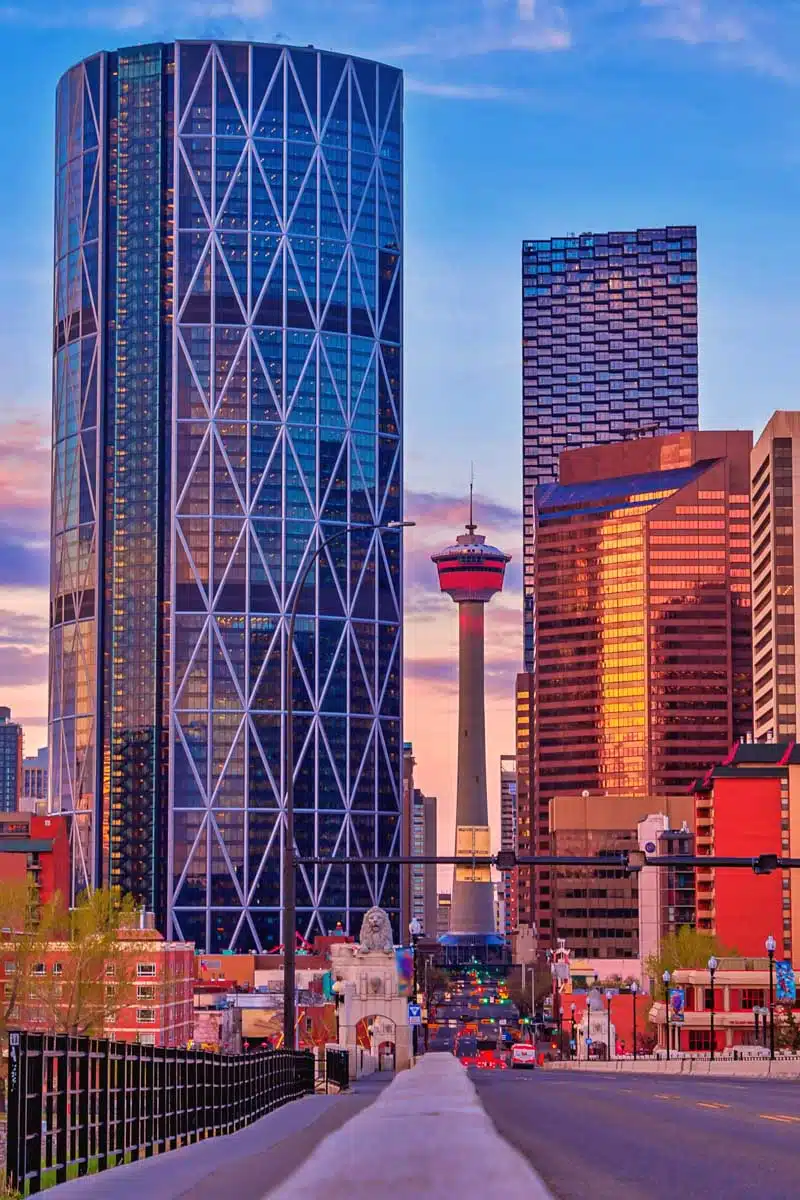
On this day, we recommend arriving in Calgary and driving to Canmore, which is the first stop of our Canadian Rockies itinerary.
You do have the option of staying in the for a day and doing some hikes (which could be a really cool option, especially if the Calgary Stampede is going on).
While many people opt to go directly from Calgary to Banff, I chose to include Canmore because it’s often overlooked by tourists, but it actually is home to some of my favorite hikes and viewpoints in all of the Canadian Rockies.
While often overshadowed by their northern neighbors (Banff and Jasper), Canmore and the Kananaskis area are, in my opinion, some of the most underrated adventure destinations in all of Alberta.
Striking mountaintops, amazing hiking trails, and beautiful alpine lakes will greet you as you explore Canmore, but you can expect smaller crowds here, even during the high season.
Morning: Arrival in Calgary
If you opt for a direct morning flight from anywhere in the USA or Canada, chances are you’ll most likely be arriving in Calgary Airport in the late morning or early afternoon. Once you’ve arrived, proceed through customs (if necessary) and grab your bags.
- For car rentals at the airport: From the arrivals area, follow signs to the main rental car area to pick up your car from your designated agency.
- For car rentals from downtown: Exit after baggage claim and grab a taxi (NOT a black car, these are 2-3x the price!). Make sure you have the address of your rental agency on hand and let the driver know where you’re going. If you’ve decided to rent from Avis (which we usually recommend), their shop is right next to the Calgary Tower.
Lunch in Calgary
After you leave the airport, I recommend grabbing some lunch in nearby Calgary before heading to Canmore.
Known for its ranching industry, Calgary is known around Canada for its meats. For some of the most delicious steaks in the city, Vintage Chophouse is a fantastic place to try. Since I’m not actually a steak person myself, my favorite dish there is the lobster mac and cheese , which is exactly the heavenly deliciousness it sounds like: large lobster chunks mixed in with a perfect blend of pasta and melted cheeses.
For a cheaper, vegetarian-friendly lunch option, The Coup is a fantastic choice. Their bright, open space and delicious, healthy lunch options are AMAZING. Share a Vegan Char”coup”terie board or order the Satay Bowl for lunch… you won’t be disappointed.
After lunch, if you have extra time to check out the city, explore some of the many things to do in Calgary !
Afternoon: Driving In & Exploring Canmore
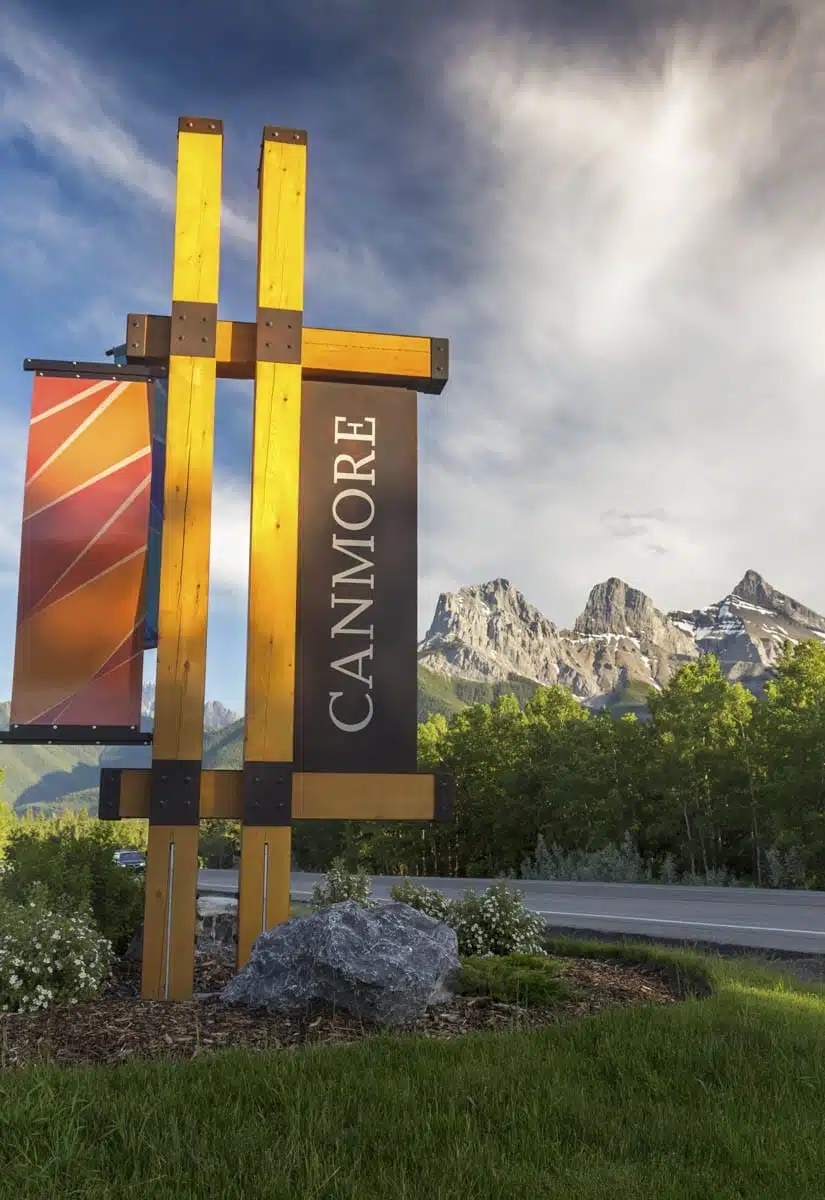
After lunch, you’ll drive ~1 hour down the Trans-Canada Highway (Highway 1) to Canmore. At first, you might think you’re in the wrong place, with flat farmlands for miles.
The plains eventually turn into rolling hills, and then…BAM… you’ll see it: the beautiful, majestic Canadian Rockies. At first just a faint outline on the horizon, they’ll eventually grow larger and bluer right before your eyes.
It’s, like, ridiculously magical.
For outdoor lovers, seeing the Canadian Rockies for the first time is kind of like the feeling you get when you see the Disney Castle. It’s magical, heart-wrenching, glorious. You might cry (I definitely did). Seeing the mountains and knowing that you’ll be spending the next 10 days there? Priceless.
Depending on how much time you have in Canmore before dinner, you can take a drive around the area and even hop on a short hiking trail (see the next section on Day 2 for some recommendations). You can also check into your accommodations (see below for our recommendations) and wander around the town center for a while.
Evening: Dinner at PD3 Blake Canmore
Full disclosure: I’ve never eaten at Blake Canmore . BUT I have a good excuse — the TWO times I tried to go, it was either full with a wait (and I was hangry from hiking) or it was closed. You can choose to dine at Blake Canmore’s more traditional dining hall, but I’d recommend going for the more casual PD3, which is a double decker bus converted into a local dining institution (and the food smelled absolutely heavenly ).
Whatever you choose, don’t be like me: plan ahead and eat your first Canadian Rockies dinner at Blake.
Not only does the food look super drool-worthy (I think I could literally inhale their “crack fries” in approximately 2 seconds), but it’s also reasonably priced and the atmosphere is among the most unique in the region. They also have homemade ice cream flavors and signature drinks/cocktails in case you want to end your day 1 with a sweet treat!
Overnight in Canmore
You’ll spend (at least) the first two nights in Canmore, where hotels and hostels tend to be significantly cheaper than staying in nearby Banff. Here are some of our top recommendations for places to stay in the Canmore area:
- Mid-Range Hotel: The Georgetown Inn – Imagine an old-time pub and inn that magically plopped down in the middle of Canmore and you’ve got The Georgetown Inn. This adorable home-style inn is the perfect landing place for you after long days of hiking, since they boast large, comfy rooms and there’s an attached restaurant.
- Budget Hostel: HI-Canmore – Currently Canmore’s only hostel, HI-Canmore is a fantastic place to stay for budget travelers, solo travelers, and backpackers. With dorms and private rooms, HI-Canmore caters to a wide variety of travel preferences and budgets, while offering typical amenities like laundry, kitchen, and cooking supplies.
- Campsite: Bow Valley Campground – Situated right next to the Bow River and the nearby hiking trails, the Bow Valley Campground is the perfect base in Canmore. The campsites are spacious, the rangers are attentive, there are all of the necessary amenities, and the views are totally epic.
Check Additional Accommodation in Canmore
Day 2: Hiking in Canmore
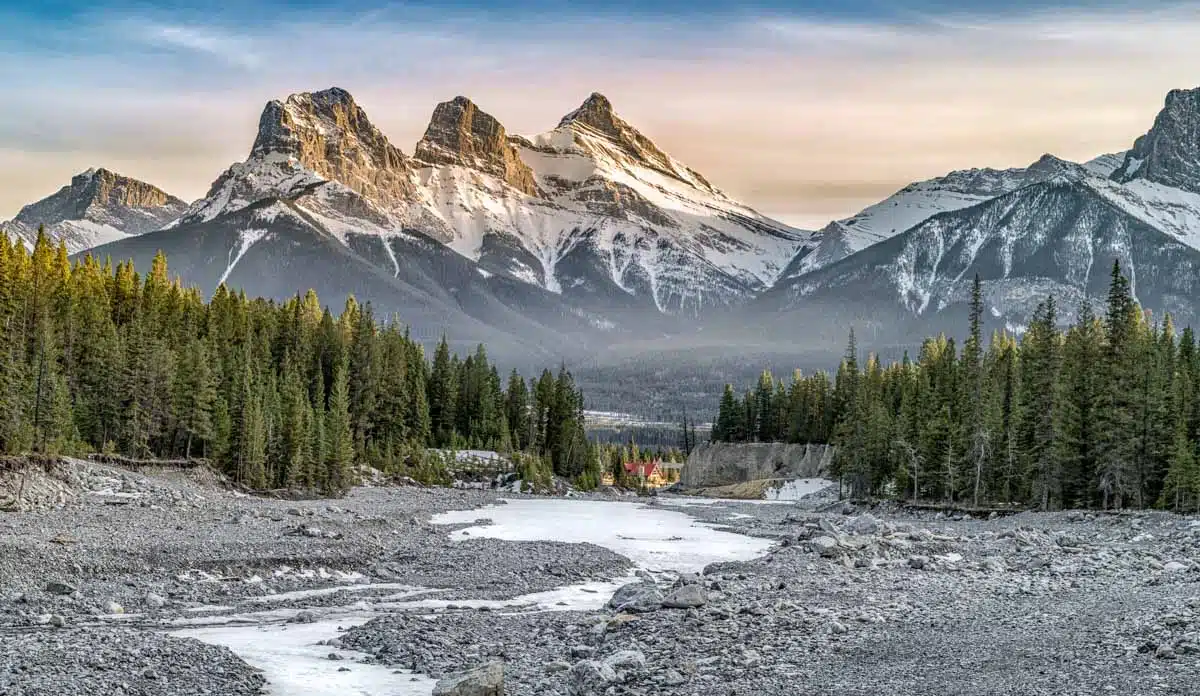
As I say whenever anyone asks me, hiking is the best way to experience the Canadian Rockies , even if you’ve never hiked before or get serious anxiety when you think about climbing uphill (*raises hand and blushes*).
Whether you’ve been hiking since your childhood years or are hitting the trails for the first time ever, there are tons of picturesque hikes in Canmore (and ALL of the Canadian Rockies) suitable for your skill level and preferences.
On day 2 of your Canadian Rockies itinerary, you have a few options: choose 1-2 short hikes in Canmore, or embark on a longer half- or full-day hiking excursion in the area. I’ve listed several hikes, ranging from easy to challenging, in each of the categories below so you have LOTS of options to choose from!
Pro tip: Get started with hiking EARLY. While it will definitely be a little colder outside in the mornings, the most beautiful views of the Rockies happen when the sun is low in the sky, and you definitely won’t want to miss those ideal morning mountain photo opportunities.
Short Hikes in Canmore
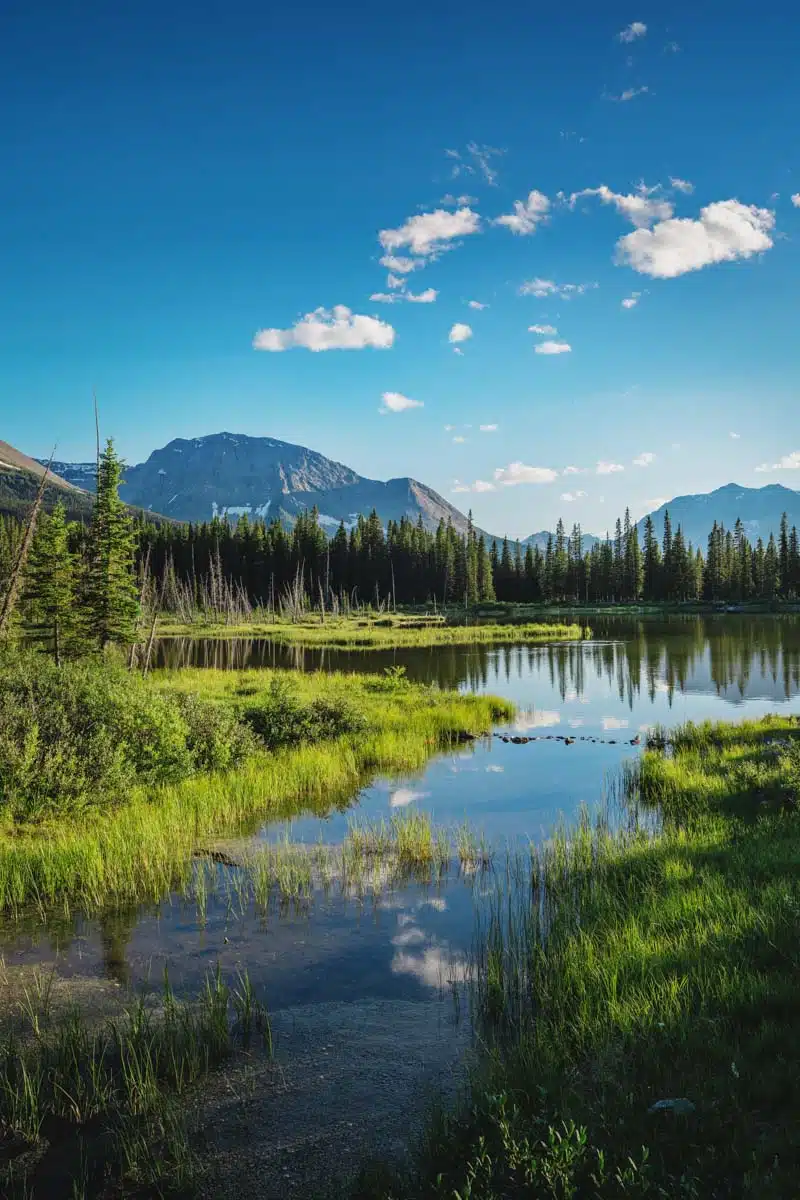
Bow River Loop – (3.5 kilometers, 1-1.5 hours) This is a nice little trail that starts in Canmore town center and loops around to the Bow River. If you’ve arrived in Canmore early enough on Day 1 for a short hike, this is a perfect one to try. Stunning views of the river, evergreen forests, and the surrounding mountains will greet you.
Grotto Canyon – (4.4 kilometers, 1.5-3 hours) One of the most unique hikes in Canmore, the Grotto Canyon trail takes you through huge rock structures where local climbers can often be found scaling the vertical rock faces. The trail is surrounded by large rocks and ends at a waterfall.
Grassi Lakes – (4 kilometers, 1-2 hours) Grassi Lakes is one of Canmore’s iconic hikes and is a local favorite that’s perfect for hikers of all levels. The trail takes you to two deep turquoise alpine lakes surrounded by evergreen trees, and it’s a super tranquil place to go for a short morning hike.
Quarry Lake – (3 kilometers, < 1 hour) This family-friendly loop trail winds around the banks of Quarry Lake, offering beautiful views across the water toward the mountains. You can also swim in the lake if the weather is warm enough!
Half-Day Hikes in Canmore
Ha Ling Peak ( CLOSED UNTIL FURTHER NOTICE ) – (5.3 kilometers, ~4 hours) This is arguably one of the coolest and most picturesque summits in Canmore. But don’t let Ha Ling Peak’s short trail distance fool you: the hike is actually quite difficult, as you’ll ascend well over 800 meters in less than 3 kilometers. The peak itself rewards you with breathtaking panoramic views of the Bow Valley below.
Lady MacDonald Tea House – (9 kilometers, 4-6 hours) This hike, named after a tea house that was never actually built, is a gorgeous trail that has beautiful views start to finish. One of the more popular hikes in Canmore, this moderately difficult hike is a perfect half-day adventure for hikers looking for a bit of a challenge and the reward of stunning photogenic viewpoints.
Full-Day Hikes in Canmore

Mount Yamnuska – (11 kilometers, 6+ hours) By far, Mount Yamnuska is one of my favorite adrenaline-pumping, muscle-throbbing hikes in ALL of Canada! This 11-kilometer trail takes you through an evergreen forest, up a steep rocky scramble, around a chain cliffhanger (seriously), and up to the summit of this iconic Canmore peak. It’s a whopping 900+ meters of elevation gain, so be ready for some SERIOUS uphills and downhills if you choose to tackle this one.
Heart Mountain Horseshoe – (11 kilometers, 6+ hours) I haven’t actually hiked this one, but I’ve heard awesome things about it from friends back in Calgary. This is a moderate to difficult trail that involves a bit of rock scrambling towards the top. The views from the trail and the summit are said to be absolutely incredible.
When You Get Hungry: Breakfast or Lunch at Communitea
Depending on your schedule, you’ll be hungry eventually, and if you need a great stop for breakfast or lunch, I strongly recommend Communitea . It’s a little coffeeshop/cafe hybrid with delicious, healthy dishes and a cute, colorful atmosphere.
Head there for breakfast for a caffeine fix before a big hike, or pick up one of their hot drinks and a delicious, filling savory bowl for lunch after hitting the trails in the morning.
Evening: Dinner at Rocky Mountain Flatbread Co
A Western Canada chain, Rocky Mountain Flatbread Co is literally the perfect post-hiking meal. They’ve got a HUGE oven they use to bake their flatbreads, which come out nice and piping hot to your table. If you’re planning on going during the height of dinner time, I’d strongly recommend making a reservation.
When you check out the menu, you’ll see they have DOZENS of pizza and pasta options to choose from (I may be biased, but you should definitely try the sundried tomato pizza ). You can also grab a Canadian craft beer or a signature cocktail with your dinner.
You’ll spend the night in the same Canmore accommodation you chose on Day 1.
Day 3: Banff Town & Iconic Sights
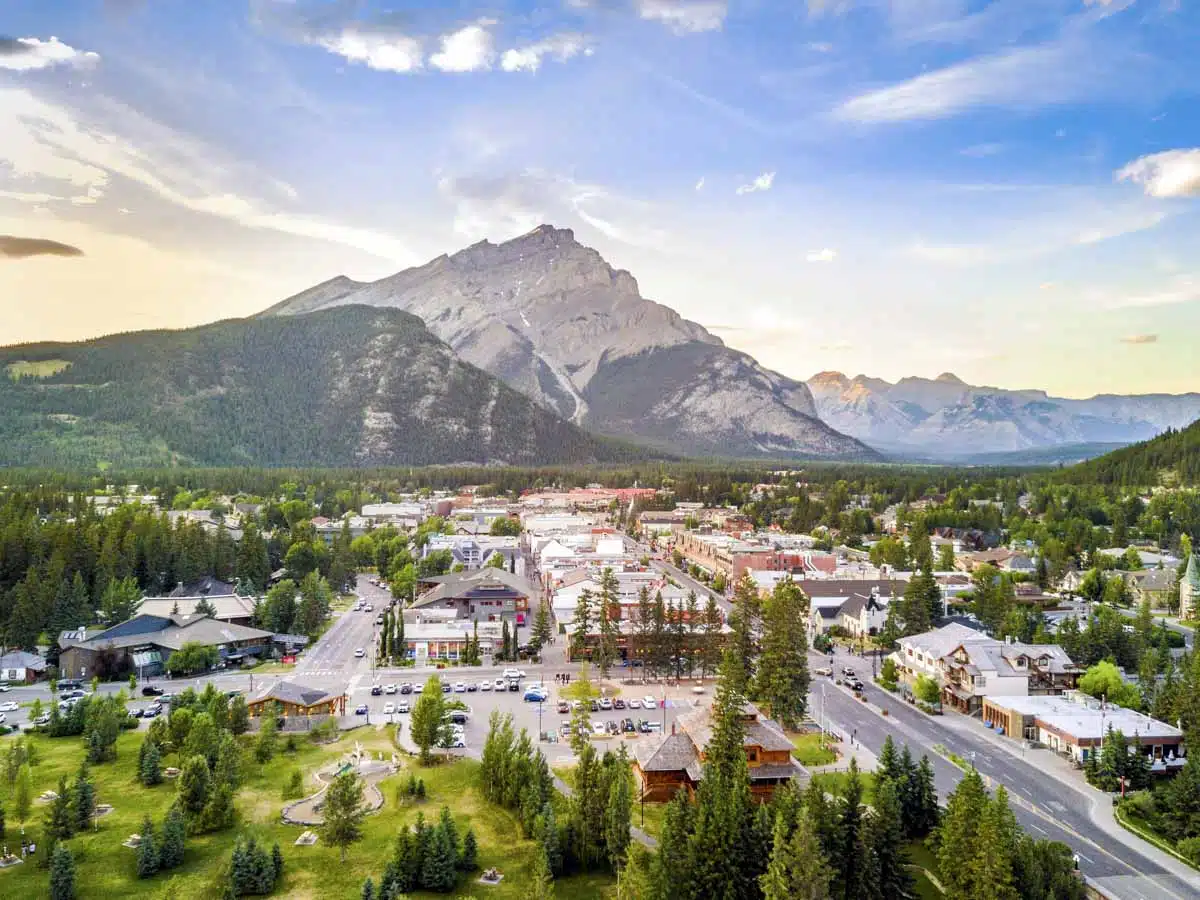
I know I gave you a day full of hiking yesterday, so today, you’ll be taking it a bit more easy on the legs. You’ll drive the short distance to Banff National Park, explore the Banff Town area, eat a delightful dinner at one of my favorite restaurants in Banff, and end the night with some stargazing if it’s clear outside!
Morning: Drive to Banff & Breakfast at Tooloulou’s
Since you’ll be exploring the area near Banff Town today, you can choose what time you’ll want to head out. ( Banff is about a 30 minute drive from Canmore, so make sure you are in the car driving before you get struck with the iron fist of breakfast hanger. )
You’ll continue down the Trans-Canada Highway until you reach the Banff Entrance (which consists of small huts on each lane of the highway where you pay your entrance fee). Pay the fee, which is $9.80 CAD per adult, then continue driving alllll the way to Banff town.
Along the way, you’ll catch a glimpse of Canmore’s stunning Three Sisters and Banff’s Mount Rundle.
Once you arrive in Banff, head to Tooloulou’s , arguably the best traditional breakfast place in town. It’s a Louisiana-style Cajun restaurant with a Canadian flair. Here, you can get french toast, omelettes, and hashbrowns in HUGE (shareable) portions. It’s delicious, especially since I know you’ll be hungry by the time you arrive in Banff.
Late Morning/Afternoon: Explore Banff Town & Surrounding Areas
After you’ve wrapped up breakfast, you’ll hop back in the car and explore the Banff town area. You might be thinking, Kay, I didn’t come to the Canadian Rockies to spend time in a town. But actually, Banff town is pretty small and picturesque, and it’s the town’s immediate surroundings that you’ll be getting to know on this day.
Depending on your energy levels and the amount of time you have, there are several options you can try. Here are a few of the main highlights in and around Banff Town:
Banff Gondola – One of the most fun and picturesque non-hiking activities in Banff is a ride on the Banff Gondola. While the ride is only ~8 minutes each way, the Gondola takes you up to a complex with an incredible panoramic observation deck, a cafe and restaurant, and amazing views for days. ( Pro tip: Head up on the Gondola later in the day when the sun is low in the sky for extra special views!)
Surprise Corner – The Surprise Corner is Banff’s worst kept secret, an unofficial viewpoint that has never *officially* been recognized as a landmark. As a roadside viewpoint just outside the city, the Surprise Corner is actually a popular place to stop off and admire views of the Bow Valley and the Banff Springs Hotel sticking up out of the trees. There are also several trails leading from the parking area around and into the valley below.
Fairmont Banff Springs Hotel – You’ve probably seen photos of the Fairmont Banff Springs all over the internet. If you’re looking for luxury and history all in one place, the Banff Springs Hotel is a fantastic landing spot for you. Situated in the scenic Bow Valley, the hotel boasts several restaurants, a spa, and several amenities for actual guests. However, if you just want to take a look, head there for a leisurely lunch in one of their dining spots.
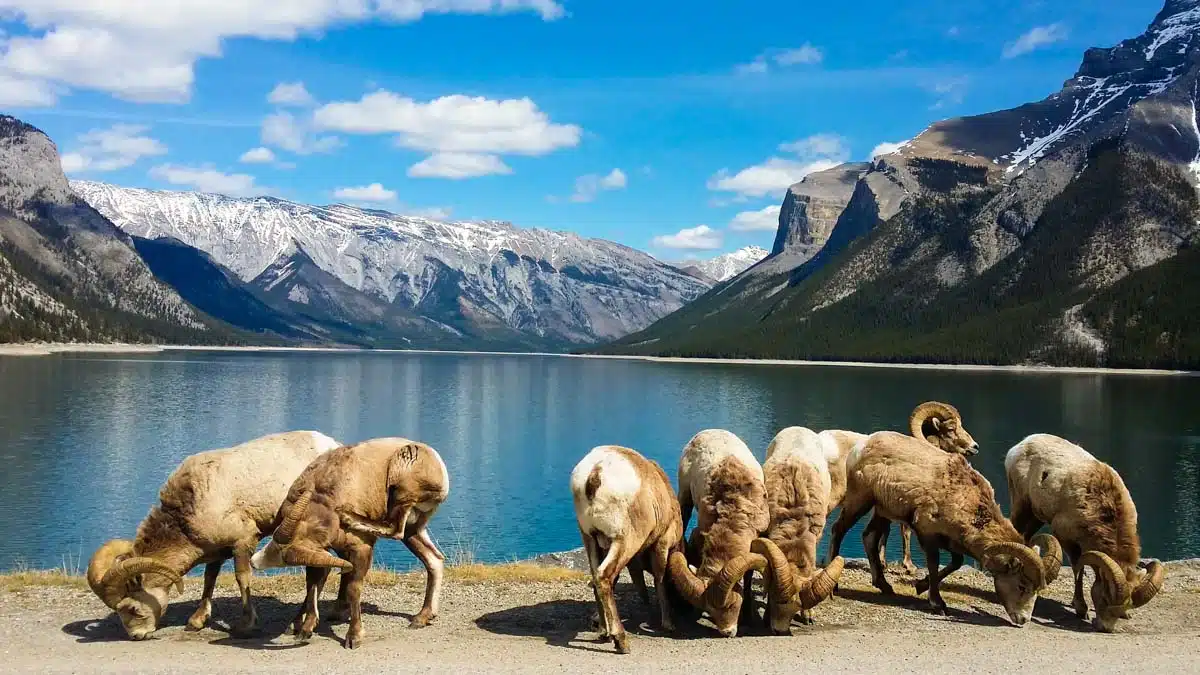
Lake Minnewanka – Lake Minnewanka is one of my favorite places in Banff, if not for the sheer fact that there is SO much to do there. You can rent a kayak or take a boat cruise, wander the lakeside trails or sit down for a picnic. In the night time, you can even stargaze here! I’d recommend heading over there and seeing where the day takes you…but beware: you might end up spending your ENTIRE day here!
Bow River Falls – This is a short, easy hike down to a wide waterfall on the Bow River. It’s a nice, scenic, paved trail that is family-friendly and will take you near Banff town down the river.
Banff town center – If the weather is bad or you’re just too dang tired to do anything, sticking around in Banff town center is NOT a bad option. There are scenic mountain views from the streets, as well as a handful of restaurants, shops, and museums that you can check out to learn more about Banff’s history, including the Whyte Museum of the Canadian Rockies.
If you have more than just 2 days to spend in Banff, here’s our complete guide to the park with a list of 23 amazing adventure activities to try:
Read our complete guide on the best activities & things to do in Banff
Evening: Dinner at Park Distillery & Stargazing
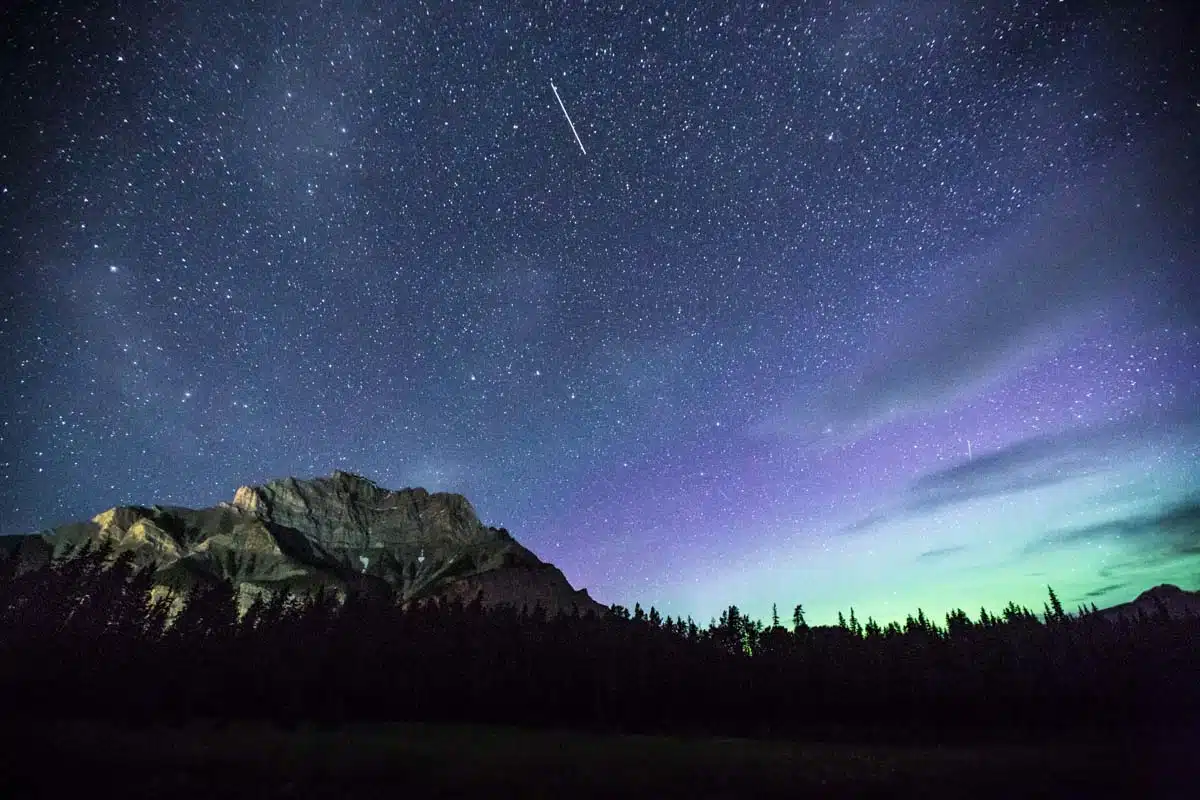
By the evening, you’ll probably be REALLY hungry and ready for a hearty, delicious meal in a relaxed place. I’ve got the perfect place to you: Park Distillery . Their mission is “campfire-inspired meals” and they really do play the part well, from char-grilled meats and steaks to the amazing smell of campfire inside and around the restaurant.
After your dinner, if you’re still a liiiiittle hungry, stop by Beaver Tails nearby for an amazing Canadian dessert: baked (fried?) dough topped with delicious sweet condiments like Nutella, M&Ms, cinnamon, and more.
If the sky is clear while you’re heading out from the restaurant, you can hop in the car and head to a nearby lake for some amazing stargazing opportunities. Outside of the town center, you can see a lot of stars and constellations in areas with little tree cover.
Here are a few beautiful spots in Banff I’d recommend for stargazing:
- Lake Minnewanka
- Vermilion Lakes
- Two Jack Lake
If it’s cloudy or rainy, just head back to your hotel/hostel and cozy up in your blankets. Tomorrow is a day of hiking so you can definitely use a good night’s sleep!
Overnight in Banff National Park
The blessing and the curse of Banff is that there are SO many places you can stay. And making a decision on where to stay in Banff can be a little overwhelming. So, here are my recommendations for a few popular places to stay (or you can read this post for the full list, from luxury lodges to budget hostels):
- Mid-Range Hotel: Moose Hotel & Suites – This is possibly the cutest lodge in Banff, with a big wood fireplace in the lobby and stunning views of the Rockies. If you’re looking for an affordable full-service hotel option in Banff, this one is arguably the best.
- Budget Hostel: Samesun Banff – A cozy hostel located in Banff’s downtown area, Samesun come highly recommend by budget travelers. People really love their laid-back atmosphere, low prices, and kitchen facilities (because, ya know, those restaurants can really add up!).
- Camping: Two Jack Lakeside – This is my #1 favorite campsite in the Canadian Rockies. Located right next to Two Jack Lake, the campsites offer stunning sunrise views of Mount Rundle, as well as amazing stargazing options. Campsites come with access to showers and running water, as well as fire pits (extra fee) and spacious areas to pitch your tent/hammock/whatever.
Click here to check reviews and prices for accommodations in Banff
Day 4: Hiking in Banff National Park
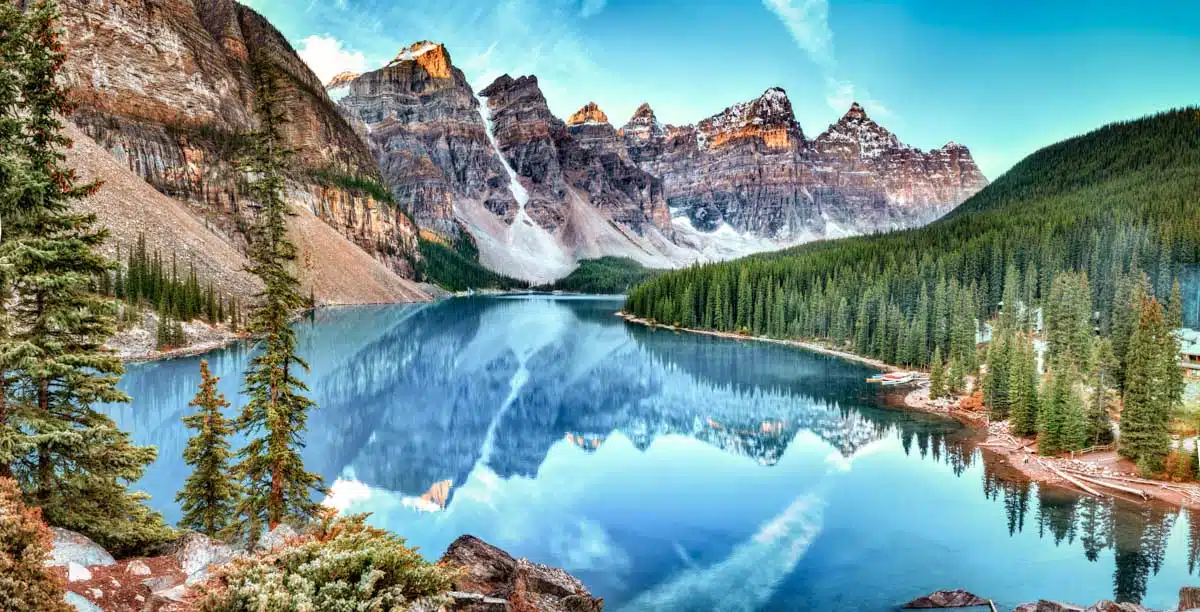
Yup, you guessed it: today is a full day dedicated to hiking! There are SO many fantastic trails in Banff, and it’s worth trying at least 1 or 2 of them before you leave. Before beginning any hike in Banff, it’s wise to check the Parks Canada website for updates on trail conditions and weather forecasts.
Morning & Afternoon: Go Hiking in Banff
Since we’ve got Moraine Lake, Lake Louise, and Johnston Canyon on the agenda for tomorrow, I’d recommend not choosing those for your hiking day today. Here are 3 other wonderful options for hikes in Banff that you can try on today’s itinerary:
Lake Minnewanka Loop Trail (Easy): An easy loop around one of the most beautiful lakes in the area, the Lake Minnewanka Loop is a fabulous day hike for beginner hikers or families. If you didn’t get over to Lake Minnewanka yesterday, I’d definitely recommend this option!
Cascade Amphitheatre (Moderate): Cutting through a valley with rocky mountaintop views, forested trails, and bubbling streams, this hike is a tranquil adventure into the woods. The Amphitheatre itself is a green valley surrounded by vertical rock faces and almost 360-degree views of the surrounding mountains.
Mount Rundle (Difficult): One of the most iconic mountains in Banff National Park, Mount Rundle is an amazing and challenging summit hike to the peak of this beast. If you’re planning to tackle this hike, be sure you’re fully prepared by reading this post and bringing all of the necessary day hiking items you’ll need.
For even more hiking recommendations, check out our complete guide to Banff’s most incredible hikes (for all levels of hikers!):
When you’re not hiking and need some food/refreshments, I recommend heading to Good Earth Coffeehouse in Banff’s town center. It’s a cute, cozy coffee shop that serves warm drinks and food all morning and afternoon.
Evening: Soak in the Upper Hot Springs & Grab Dinner at Banff Ave Brewing Co
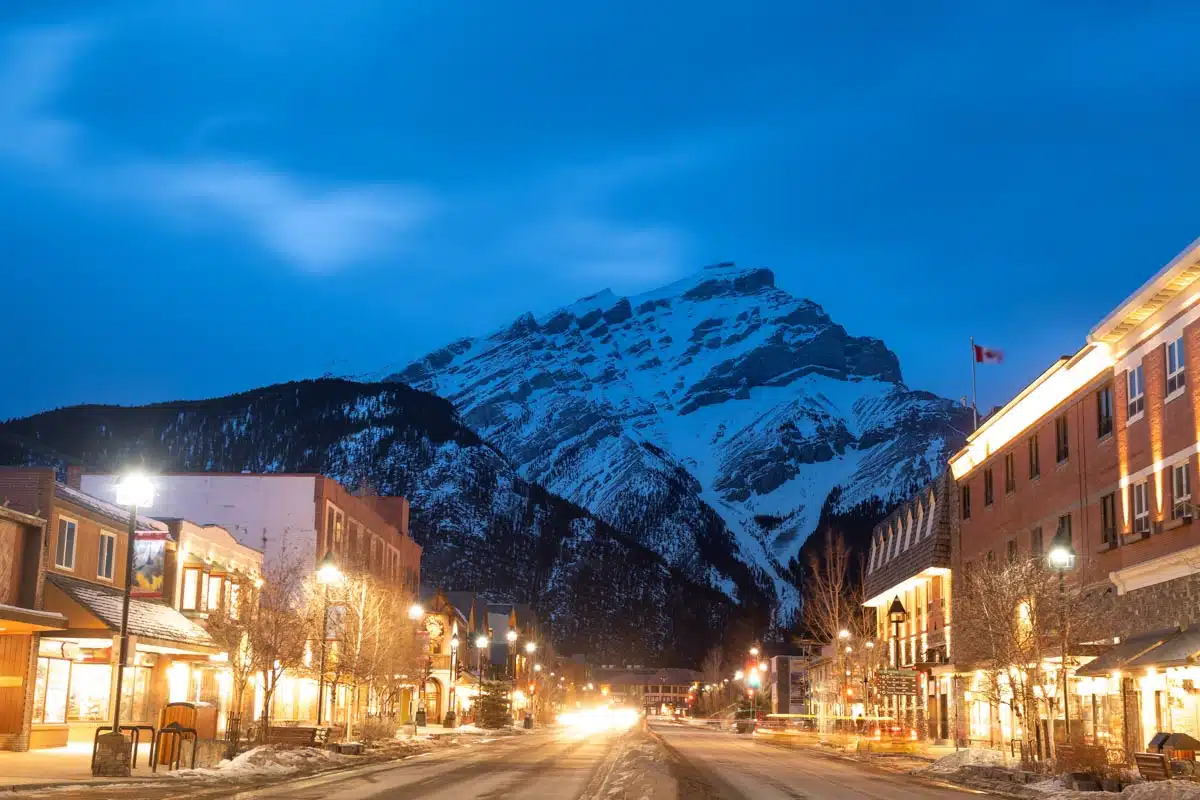
Once you’re done hiking for the day, head to the Banff Upper Hot Springs , which is just outside of Banff town. Here, you can kick back in the steaming hot pool and relax your muscles after a long day of hiking. The pool is clean and spacious, perfect for relaxing for an hour or two before heading off to dinner.
The Banff Upper Hot Springs costs $8.30 CAD for adults and you can rent a towel and/or swimsuit for $1.90 CAD each.
After your soak in the springs, grab some light eats and a beer at Banff’s craft brewery, Banff Ave Brewing Co . They serve up a delicious, affordable, vegetarian-friendly menu and a sizeable variety of beers, ranging from chocolatey darks (my style) to light, sour IPAs (Raf’s style). Get the crunchy fried broccoli and house nachos, or go for a heavier option like the Alberta Beef Burger or the Mushroom Gnocchi.
You’ll spend the night in the same Banff accommodation you chose on Day 3.
Day 5: Lake Louise, Moraine Lake, & Johnston Canyon
This is one of the most iconic days in the itinerary, where you’ll be headed to the famous Moraine Lake (yup, the one you see in all those Instagram photos of Banff), Lake Louise, and Johnston Canyon.
But here’s the catch: this day starts EARLY.
If you can be out of the house by 5:30 AM or before sunrise, that’s ideal.
This way, you’ll avoid the treacherous crowds at Moraine Lake and Lake Louise, and you can spend the afternoon strolling through Johnston Canyon (Or, like, napping in a tree from waking up so early. Both are acceptable.).
Early Morning: Moraine Lake

Set that alarm for 5 AM and grab a Clif bar to go for your breakfast as you leave your Banff hotel to drive ~40 minutes to the Lake Louise area.
You’ll see the iconic Lake Louise a bit later in the morning, but you’ll first want to drive up to nearby Moraine Lake to catch that epic sunrise view that EVERYONE AND THEIR MOTHER wants to see.
The parking lot for Moraine Lake is pretty small, which is why I’m recommending getting up so early. When Rafael and I went there for the first time, we arrived around 6 AM and, while we weren’t the only people there, we had the place largely to ourselves.
Park in the parking lot and go for a stroll around the lake, or up onto the famed Rock Pile to get that incredible view that everyone raves about (there’s a reason why this is one of the most Instagrammed places in Banff ).
Morning: Breakfast & Hiking at Lake Louise
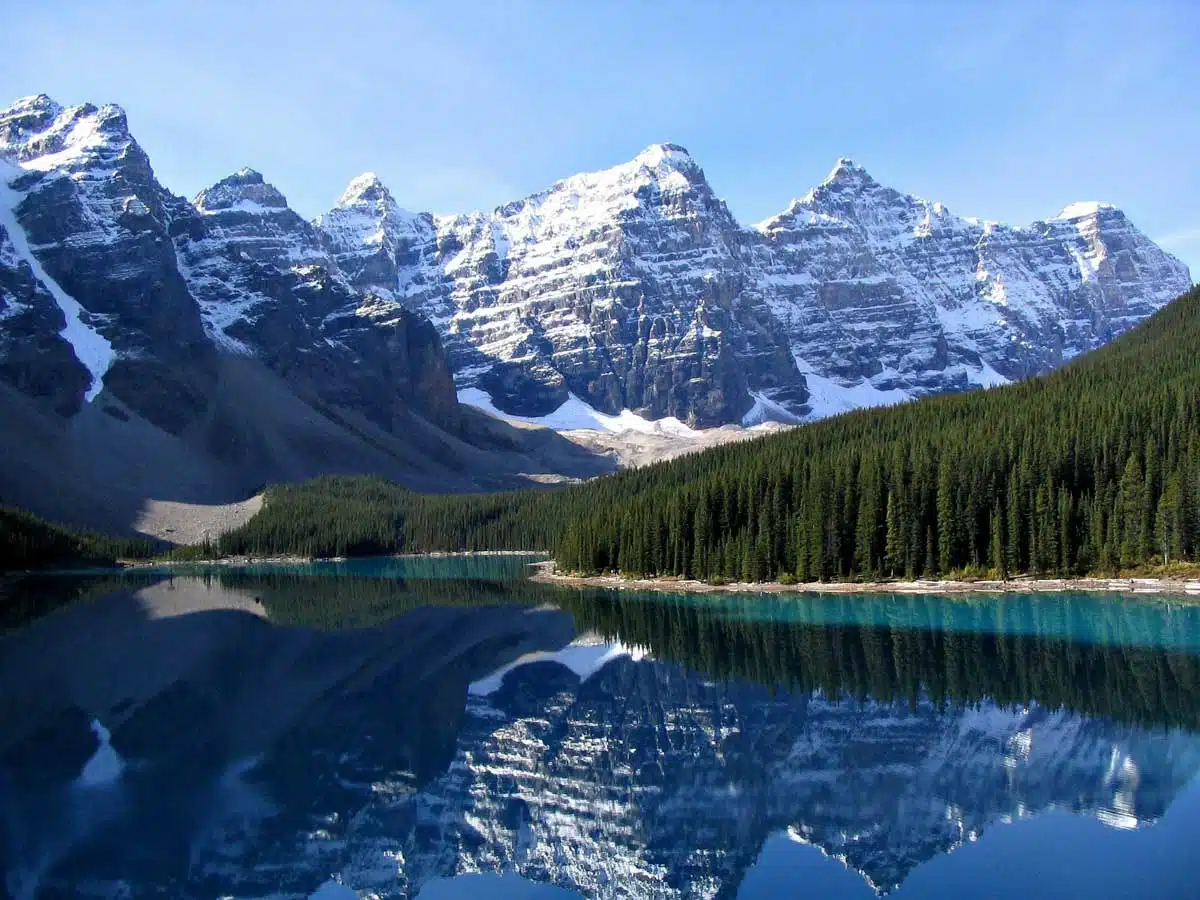
Once you’re finished at Moraine Lake, you can either head straight to Lake Louise or stop at Trailhead Cafe for a coffee and a bite to eat. Their “The Cure” sandwich is amazing to start (continue?) your day.
When you’re ready, head to Lake Louise and try to snag a parking spot as close to the entrance as possible. During the high season, the parking lot fills up and you have to park at a different one a few miles away and then shuttle in (which sucks, don’t do it).
If you get to Lake Louise early enough, you won’t have this problem. Instead, you can park right in front of the hotel and stroll right into the main lake area. Once you arrive at the lake, you’ll see the otherworldly turquoise water, the famous Fairmont Chateau Lake Louise, the amazing glacier, and striking mountains around you.
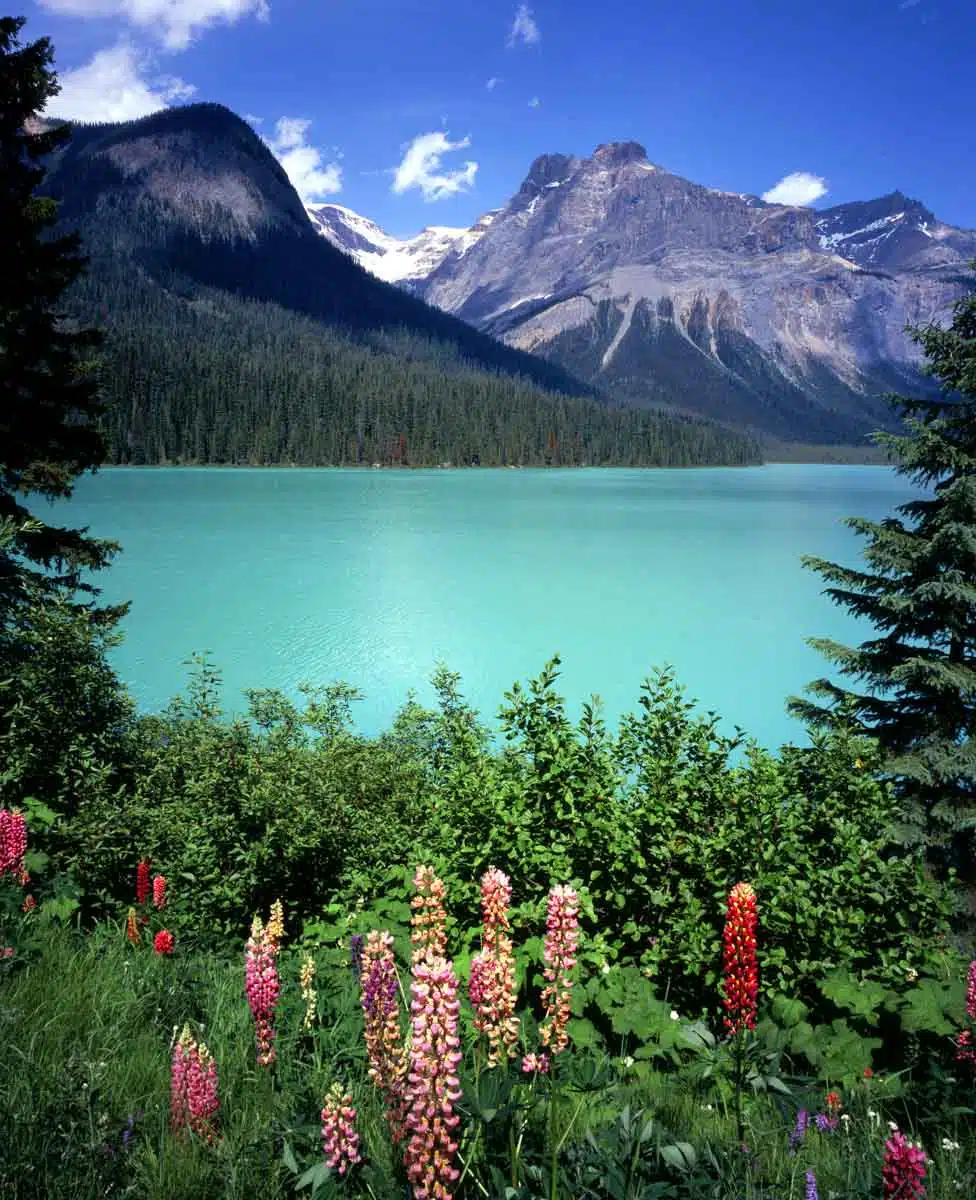
At Lake Louise, you have a few options. You can simply hang out around the hotel and the waterfront, or you can:
- Rent a kayak and explore the lake on the water
- Have brunch at Poppy Brasserie , the Fairmont’s breakfast restaurant which boasts table-side views of the lake and the surrounding mountains
- Do the Lake Agnes Tea House hike , which takes you up to a hidden alpine lake and a cozy tea house that serves warm drinks and snacks in the summer
- Embark on the Plain of Six Glaciers hike , which is a half-day hike that takes you to some pretty epic glaciers and landscapes around and above Lake Louise
If you’re planning on just stopping by Lake Louise, you won’t need more than an hour in the area. However, if you plan on doing any of the above activities, plan for 3-4 hours (5+ hours for the Plain of Six Glaciers hike).
Afternoon: Hiking at Johnston Canyon
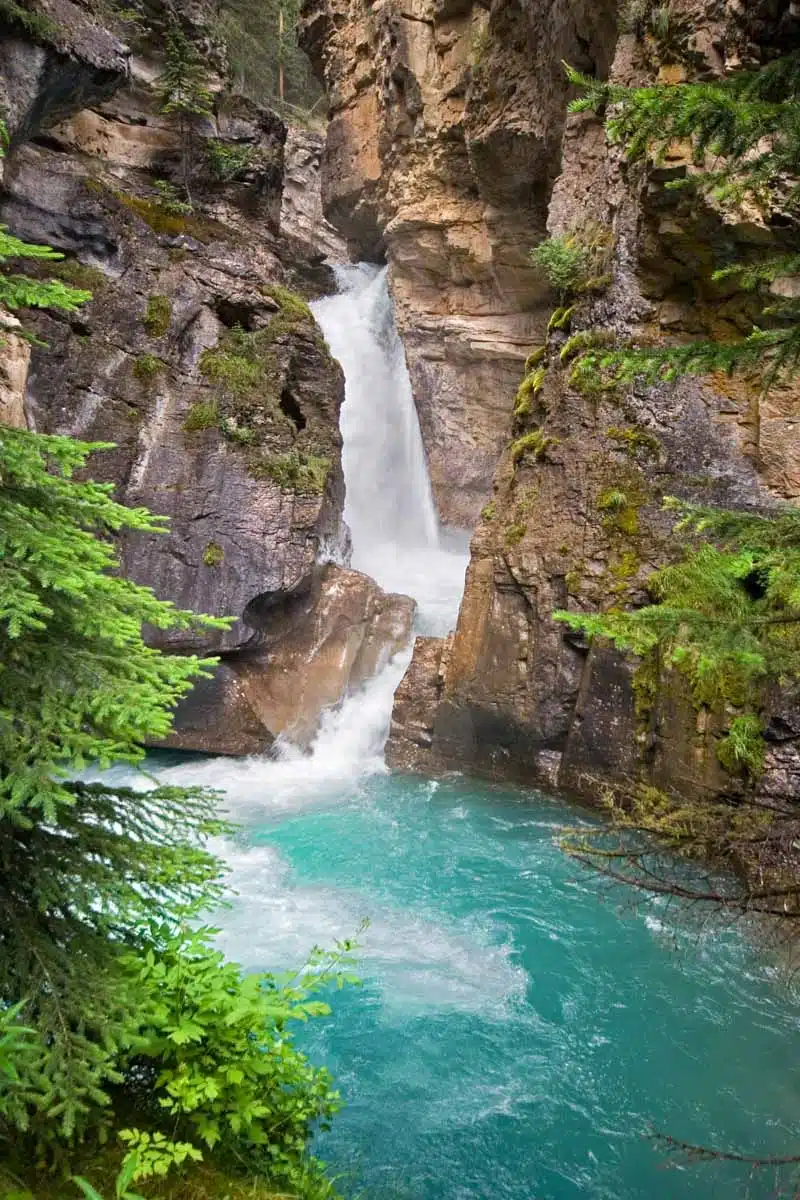
After you’ve wrapped up at Lake Louise, you can head towards Johnston Canyon, which is a nearby trail system that travels through a beautiful, stark canyon with teal rivers and waterfalls running through it. If you’re hungry, at the entrance is a small gift shop and cafe where you can buy soups and sandwiches.
On the trails, there are a series of catwalks that take you through the canyon to two sets of waterfalls – the Upper and Lower Falls – and a lake area called the Ink Pots. At the Ink Pots, you can see multicolored pools of water that look really unique and cool for pictures.
You can choose to only visit one or both of the falls, but keep in mind that the total Johnston Canyon trail from the start to the Ink Pots is ~11.7 kilometers round trip.
Evening: Dinner at Bill Peyto’s Cafe
After your busy, busy day in the northern part of Banff, there’s nothing better than sitting down for a big, warm dinner. Bill Peyto’s Cafe is an affordable and popular choice in the Lake Louise area for exactly that.
Full disclosure: I’ve actually never eaten here , but I’ve heard raving reviews about this place, which is actually attached to the HI-Lake Louise Hostel . After a long day (which this one definitely was), it’s a great place to enjoy hearty, affordable Canadian food and drinks.
Try the elk burger with a side of Canadian craft beer , and don’t forget to try their famous hot sticky toffee pudding cake .
Overnight near Lake Louise
On this night, you can choose to stay in your same Banff accommodation as the last two days, OR you can relocate closer to Lake Louise. I tend to prefer the latter because tomorrow, you’ll be heading north toward the Icefields Parkway, and it will eliminate over half an hour of driving for you the next day. Gotta make up for the sleep you lost last night!
Here are a few options for places to stay near Lake Louise:
- Splurge Resort: Fairmont Chateau Lake Louise – I know I haven’t been giving many “splurge” recommendations for this itinerary, but if you’re going to splurge for ONE NIGHT on your trip, this is it. I’ve been dreaming of spending a night or two in the Fairmont Chateau Lake Louise since the first time I visited, and I’ll be saving those pennies until I can do so one day. Anyway, if you’ve got the cash, there’s no better place to spend a night than this iconic hotel, which rests on the banks of Lake Louise itself.
- Mid-Range Hotel: Paradise Lodge & Bungalows – Perfect for larger groups, this family-friendly set of bungalows is located on the road to Lake Louise and offers large full kitchens in-unit. There’s no on-site restaurant, but the Lake Louise Visitor’s Centre isn’t far.
- Budget Hostel: HI-Lake Louise Alpine Centre – HI-Lake Louise Alpine Centre is located just outside of Lake Louise near the Visitor’s Centre. As another Hostelling International hostel, you can expect clean, cozy dorms and private rooms, large social areas and a kitchen, and affordable rates.
- Camping: Lake Louise – This tent camping spot is located right near Lake Louise and is the perfect place to spend a night in the area.
Day 6: Icefields Parkway
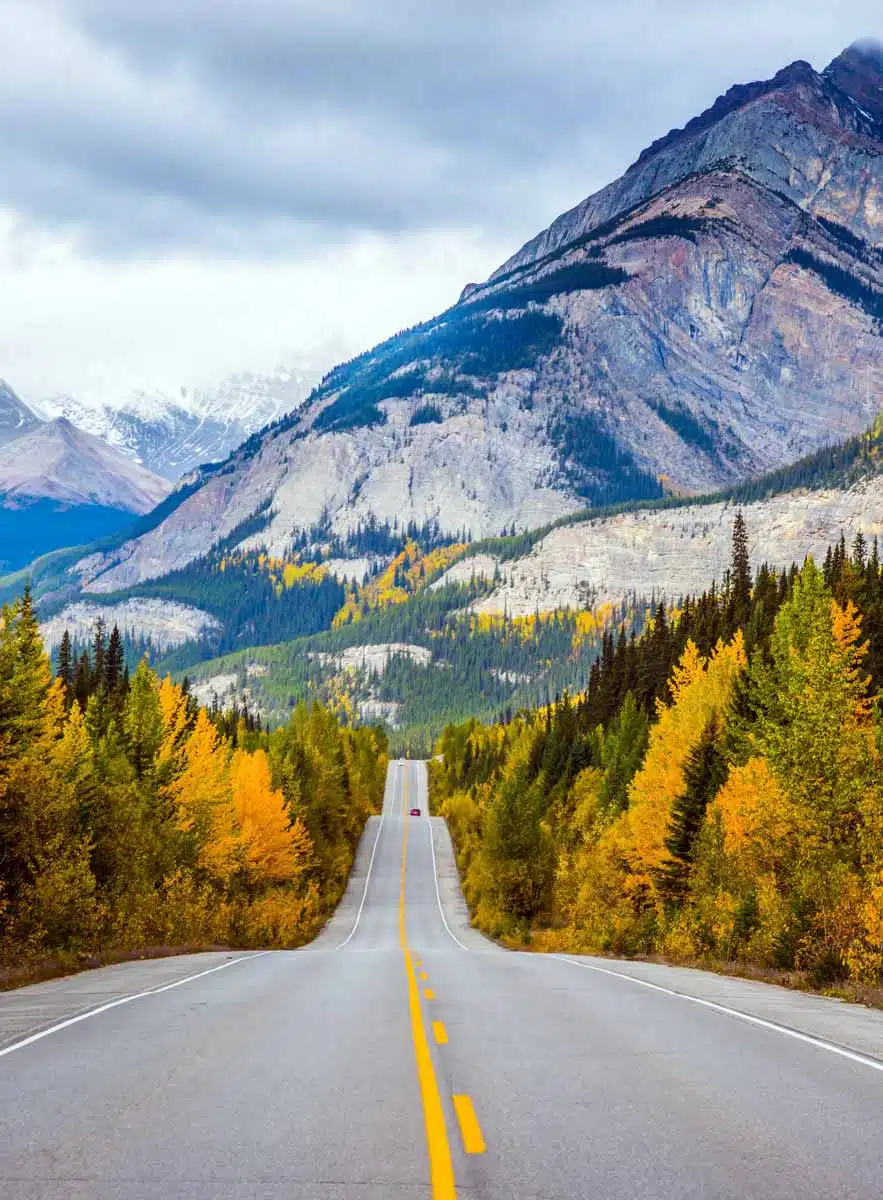
On Day 6, you’ll head up to Jasper via the most beautiful highway in the Canadian Rockies (and maybe in Canada…or the world…).
Nothing screams Canadian Rockies road trip more than driving its most scenic route, and today you’ll have the chance to do that, with a bunch of stops in between.
While the drive itself only takes ~3 hours, you’ll definitely want to stop for some photos, fresh air, hiking, and more. In this part of the itinerary, we’ve laid out all of your options for places to stop and things to do along the Icefields Parkway.
Morning: Alpine Lake Viewpoints
Grab an early breakfast to go at Trailhead Cafe in Lake Louise. I’d also recommend grabbing some extra sandwiches to go for lunch later, as you may not want to stop for food during your road trip.
Then, head out north on the Icefields Parkway towards Jasper. There are tons of amazing places to stop as you leave the Banff National Park area and turn into the Columbia Icefield.
First, stop at Peyto Lake, which is about 40 minutes from Lake Louise. Peyto Lake is a stunning turquoise lake that you can admire from its highway upper viewpoint, and it’s definitely worth at least a short photo stop before continuing onward.
Late Morning & Afternoon: Choose Your Own Adventure
After you’ve stopped at Peyto Lake, you have a TON of options for things to do along the way. Here are just a few of the many hikes, activities, and viewpoints you can stop at along the Icefields Parkway:
Columbia Icefield Discovery Centre – The discovery centre sits off of the icefields parkway about an hour and a half away from the Jasper Information Centre. Here you can get some scenic views from the top of the centre and you can book excursions out into the icefields. If you are feeling hungry, grab a bite in the attached Altitude restaurant. If you are just passing by on the way to Jasper, plan to spend 30 minutes here for a quick pit stop.
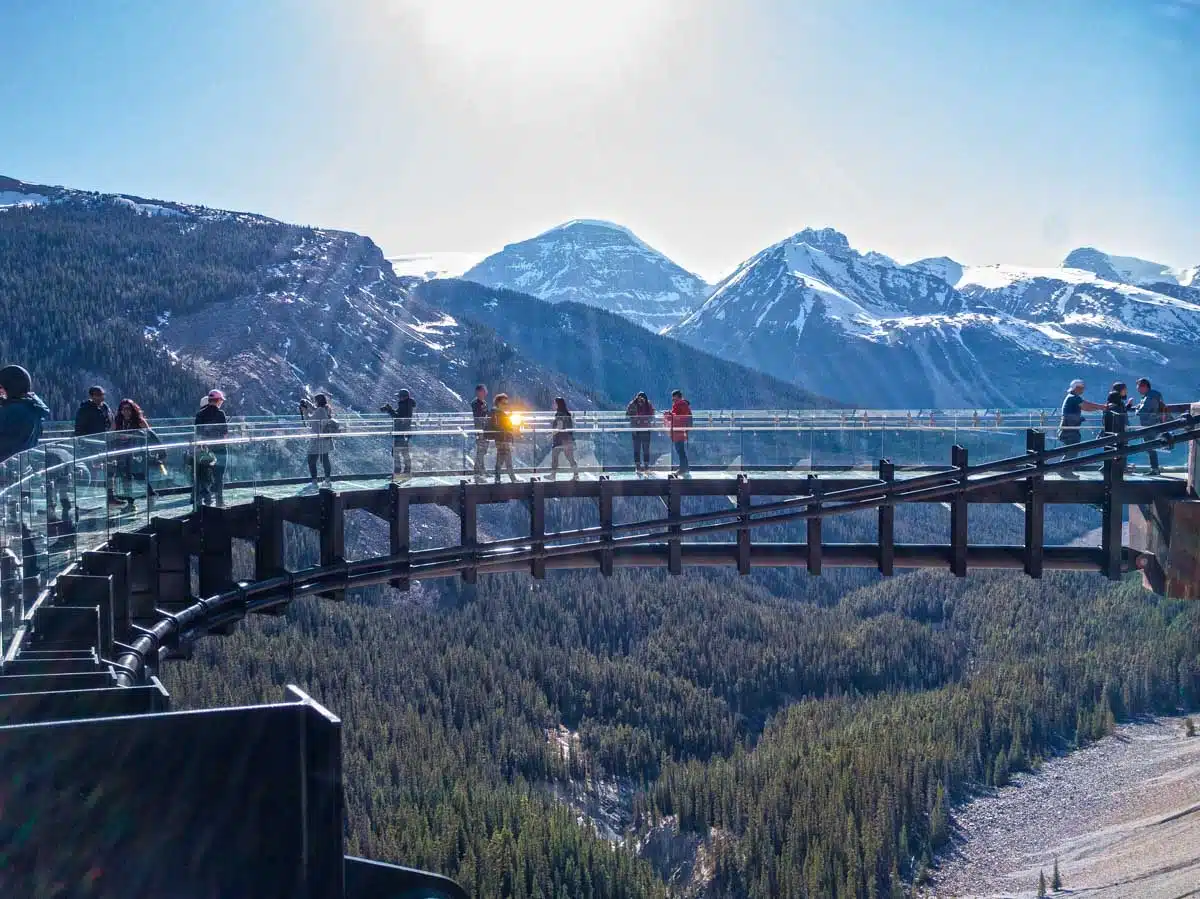
Glacier Skywalk – Take a 400 m walk along a glass-bottomed walkway that overlooks the gorgeous Sunwapta Valley 280 meters below. Tickets for the attraction can be purchased at the nearby Columbia Icefield Discovery Centre, which is about 6 km away towards Banff on the Icefields Parkway. Tickets cost $35 at the door, but you can pre-purchase them online for a slight discount. Plan to spend 30 minutes to an hour there.
Do a Glacier Walk – Take an Athabasca Glacier Tour where you can walk on and drink from the 10,000 year old sheet of ice. You’ll be taken out to the glacier on a huge all-terrain bus with a knowledgeable guide who will teach you about the area’s history. After arriving on the glacier, you’ll get to walk directly on the ice and explore crevasses and hills. Some tours are all day events (10 am – 5 pm), but you can find shorter trips at the Discovery Centre that are 3 hours in length.
Mistaya Canyon – If you are looking for a short half hour break while driving up to Jasper, consider stopping at Mistaya Canyon. Look for a small parking area about 5 km South from the Saskatchewan Crossing. You’ll take a short 10 minute hike that crosses a wooden bridge where you can see beautiful views of the mountains and waterfalls surrounding Mistaya Canyon. This spot is not as well known to many tourists, so it’s a good peaceful place to stop on your way to Jasper or Banff.
Herbert Lake – Herbert Lake is only 6 km away from Lake Louise along the Icefields parkway. Similarly to Mistaya Canyon, looks for a small pull-out area next to the highway where you can park your car. A short 5 minute trail will take you to a brilliant, scenic view of a tranquil, mirrored lake. You’ll have the option of following the trail around the perimeter of the lake if you choose, or simply enjoy the serenity and tranquility of this secluded area.
Chephren Lake – Stop off at the trailhead for Chephren Lake, one of my favorite lakes on the Icefields Parkway. You have to hike in ~3 hours round trip to get there, but I promise the views are totally worth it. By the time you finish up with Chephren Lake, it should be early afternoon and you’ll be ready to continue on to the rest of the Icefields Parkway.
Parker Ridge – About an hour and half from Lake Louise, Parker Ridge offers unparalleled views of the Icefields and Saskatchewan Glacier. The hike is a short 2.7 km that climbs 250 m. You’ll be above the treeline for the majority of the hike. Set aside about 2 hours for the entire round trip. Parking is limited.
Evening: Dinner at Evil Dave’s Bar & Grill in Jasper
For a cozy dine-in experience, Evil Dave’s Bar & Grill is a local favorite. With eclectic decor and delicious, large dishes, it’s a really awesome choice for a post-road trip dinner in Jasper.
They serve up Western Canadian favorites, like Tenderloin and Grilled Chicken sourced from Alberta, but they’ve also got a whole list of amazing vegetarian and vegan options as well.
Overnight in Jasper
- Mid-Range Hotel: Pyramid Lake Resort – This resort looks like a giant log cabin from the outside and sits right next to a lake. Guests will have scenic views of the mountains and can dip their feet in the water just a couple of feet from the hotel.
- Budget Hostel: Jasper Downtown Hostel – With dorms and private rooms, the Jasper Downtown Hostel is the best place for backpackers in Jasper. It offers all the proper amenities of a hostel, including common areas, a shared kitchen, and laundry machines on-site.
- Campsite: Wapiti Campsite – Wapiti is located next to the Athabasca river and offers gorgeous views of the mountains. The site includes access to hot showers, electricity, and fire pits. It is also close to the main town so you can make quick runs for supplies.
Day 7: Hiking in Jasper
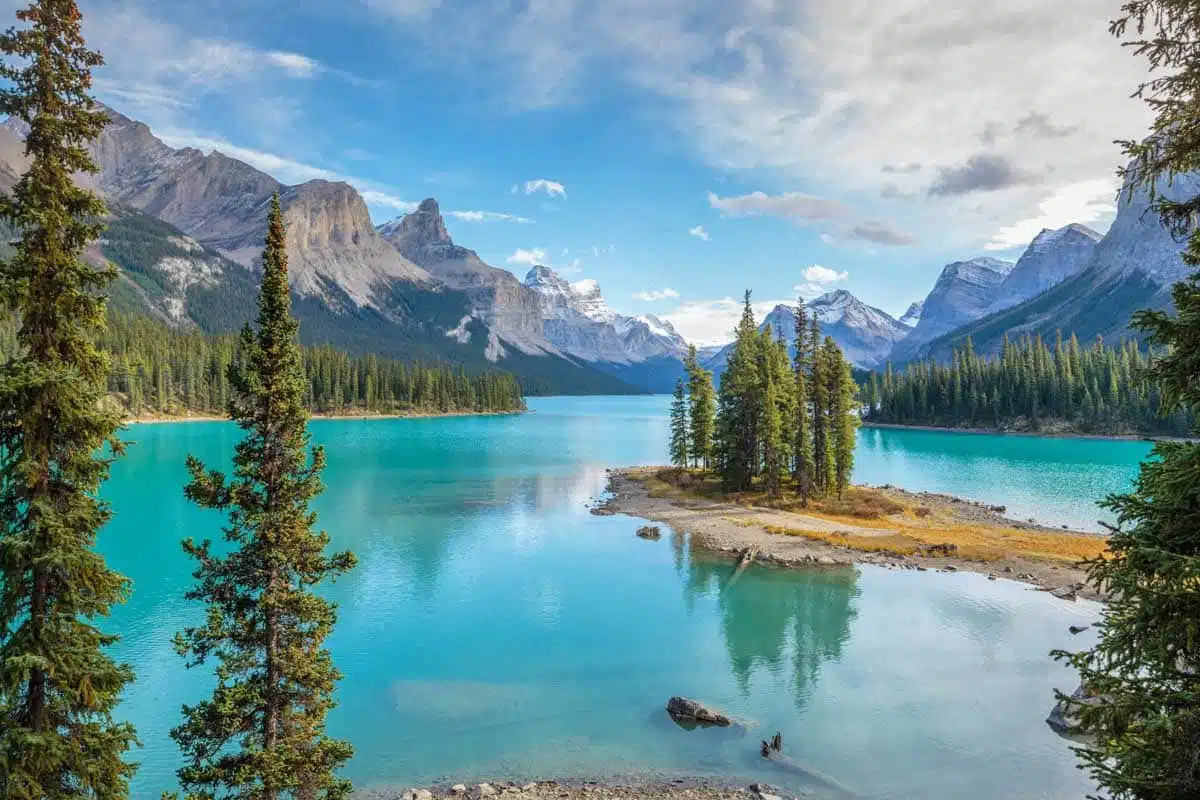
Day 7 is all about exploring Jasper by foot! ( Do you like how I’ve left a whole day in every destination on this itinerary for hiking? Yeah…I kind of like hiking… ) There are several hikes in Jasper for hikers of all levels, from “never hiked before” beginners to experienced mountaineers.
Today, you’ll spend most of the day hiking, then you’ll relax in the hot springs before treating yourself to dinner in one of Jasper’s best restaurants.
Morning & Afternoon: Hiking in Jasper
Like I mentioned, there are dozens of hikes you can try in Jasper ranging from easy, flat trails to rock scrambles. I’ve listed out some of the most popular ones for you here so you can choose 1-2 and plan your day:
Easy Hikes in Jasper
Maligne Canyon: (Easy, 3.9 kilometers) An easy, short hike, Maligne Canyon brings you through a striking canyon, passing by ranging rivers and breathtaking waterfalls in the process. Perfect for families or beginner hikers wanting to see some of the most awesome views in the park!
Valley of the Five Lakes: (Easy, 4.5 kilometers) The magic of the Valley of the Five Lakes trail is exactly what it sounds like: five gorgeous, picturesque lakes with the Canadian Rockies lying majestically in the background. It’s perfect for beginner hikers wanting an easy half-day adventure on one of the most tranquil and iconic Jasper hiking trails.
Moderate/Challenging Hikes in Jasper
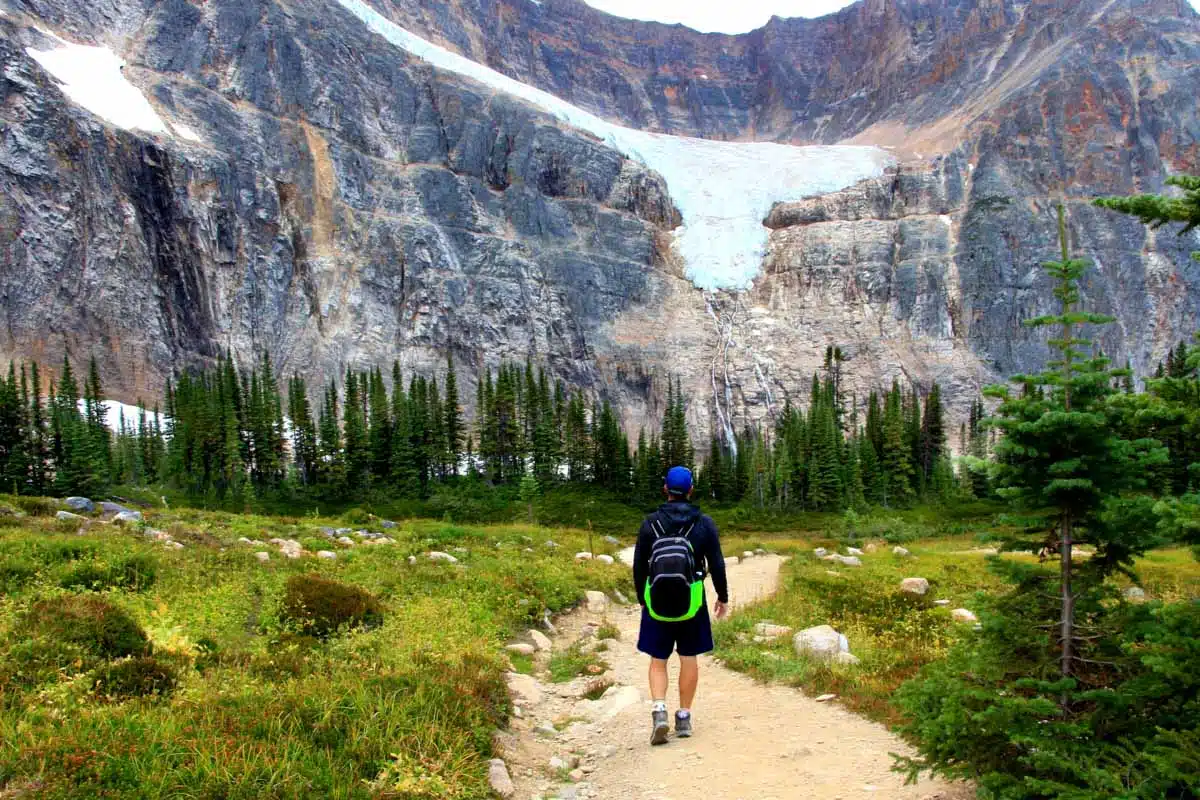
Edith Cavell Meadows: (Moderate, 6 kilometers) Edith Cavell Meadows is one of the most popular trails in Jasper, and for good reason – it’s got a bit of everything, from mountain views to alpine meadows to hanging glaciers and more. The first part of the path is paved, leading you to a lookout point over Angel Glacier. After the lookout point, the trail continues ascending, and the path leads to two more viewpoints – most people (myself included) choose to stop at the second one.
Bald Hills: (Challenging, 13.2 kilometers) As one of the most popular full-day Jasper hikes, Bald Hills is an amazing and challenging trail that will bring you up to some of those drop-dead gorgeous views you see in the postcards. This summit hike is one of the best hikes you can do in the park, and we highly recommend it if you’re up for the challenge.
If you’re in need of some food for fuel or relaxation, head to Coco’s Cafe in downtown Jasper. They serve amazing coffee beverages and snacks for hungry hikers (including some seriously mouth-watering vegetarian and vegan items), and their prices are affordable.
Evening: Dinner at Maligne Canyon Wilderness Kitchen
For the perfect smoky, rich, locally sourced meal, there’s no better place in Jasper to try than the Maligne Canyon Wilderness Kitchen . Located next to the Maligne Canyon trailhead, this small, charming restaurant embodies the spirit of Canadian Rockies gastronomy, with locally sourced meats and produce.
If you’re super tired from the trails, you can also grab their mouth watering dishes to go, but why not stick around and enjoy the fresh smells and flavors in-house?
You’ll spend the night in the same Jasper accommodation you chose on Day 6.
Day 8: Jasper Town & Iconic Sights
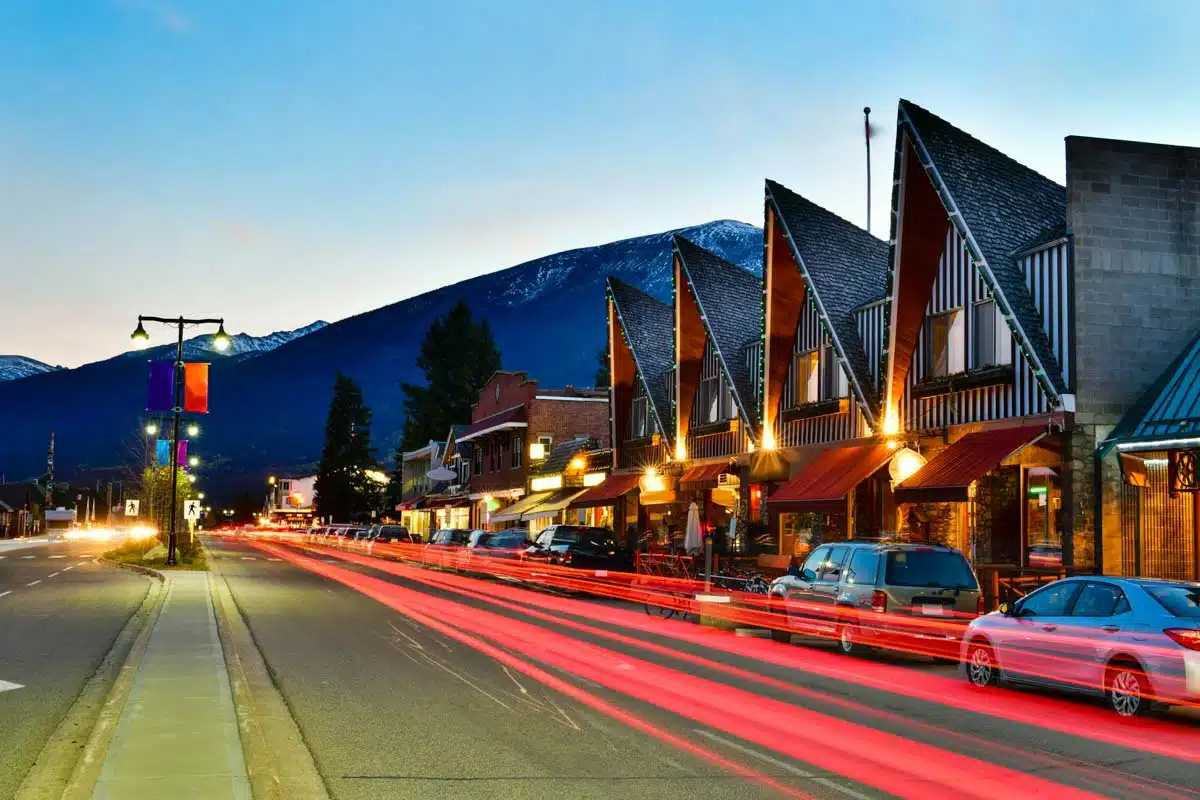
After your big day of hiking yesterday, you’ll take it a little bit easier on Day 8. However, you’ll start your morning super early with a beautiful sunrise view, head to one of the most picturesque lakes in ALL of Jasper, and then explore the area surrounding Jasper town before heading toward Yoho National Park.
Early Morning: Sunrise at Pyramid Lake
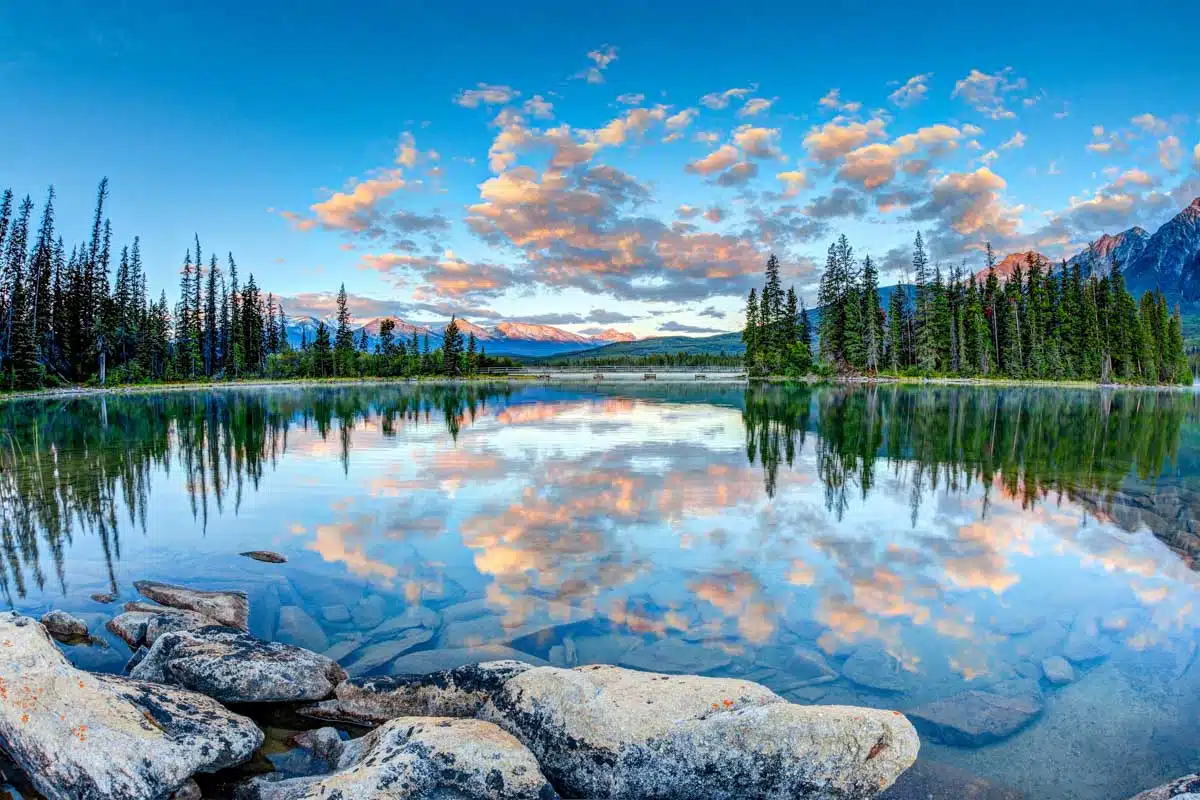
You’ll head out before 6 AM (check the sunrise forecast on your Weather app for a more accurate departure time) to Pyramid Lake.
This dramatic lake is home to a towering mountain peak, a beautiful blue lake, evergreen forests, and a large wooden lodge.
You should get there when the sky is still a deep navy blue, but just bundle up and wait for the sunrise. If it’s clear enough outside, you should start to see the faint hues of pink and red slowly start to paint the mountain face (like the photo I took a few years ago below).
If you’re looking for an alternative view, nearby Patricia Lake is also a really lovely place to watch the sun as it peeks over the horizon. Patricia Lake’s water is a lot more still than the water at Pyramid Lake, creating a gorgeous “mirror lake” effect.
Head back to Jasper town center to grab a quick coffee and breakfast at Coco’s Cafe (or another one of Jasper’s coffeeshops!).
Morning: Maligne Lake
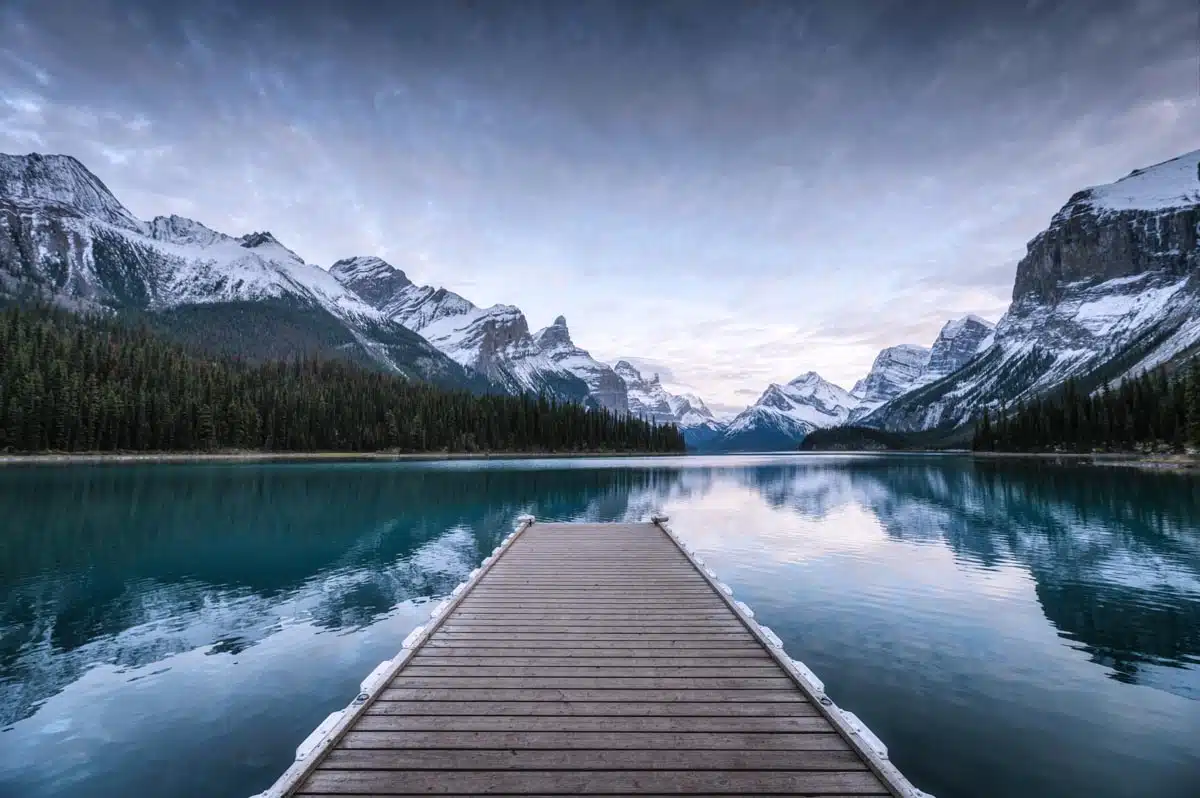
From Jasper town center, it’s a bit of a drive to arrive at Maligne Lake. However, once you’re there, you can spend the rest of the morning simply wandering around the area, doing a nearby hike or getting out on the water.
Here are a few ways to spend your morning in Maligne Lake:
Admire Spirit Island – One of the famous views in Jasper is Spirit Island, a tiny, evergreen-filled island jutting out into the middle of Maligne Lake. It’s super picturesque amidst the backdrop of the clear, turquoise waters of Maligne Lake, and makes for a super picturesque spot to spend the morning.
Take a boat tour – There are a handful of motorized boat tours that travel through the Maligne Lake area, and you can book one very easily. If you’re feeling tired from all of your travel (I understand, this itinerary is SUPER jam-packed!), opt for a relaxing boat cruise around the beauty of the lake.
Kayak around the lake – If you’re looking for an active alternative to the boat cruise, you can rent a kayak and explore around the lake yourself!
Go hiking – There are tons of trails and hiking areas that extend from Maligne Lake up into the nearby mountains.
Early Afternoon: Explore the Jasper Town Area
Now that you’ve spent virtually the entire morning outside, you’ll return to Jasper town center and enjoy some of the more laid-back attractions in the area.
Since you won’t have a TON of time to do things in Jasper town, here are a few suggestions for things you can do with 2-3 hours:
Ride the Jasper Skytram – The Jasper Skytram brings you close to the top of Whistlers Mountain. There’s a sizeable observation deck and an area where you can grab food and drinks. Or, if you’re feeling more adventurous, hop on the hiking trail near the platform to reach the summit of the mountain.
Go cycling on Jasper’s bike paths – Rent a bike at Vicious Cycle Canada and hit the trails! There are plenty of bike trails in and around Jasper’s town center where you can explore on wheels.
Visit the Jasper-Yellowhead Museum – Located in the center of Jasper, the Jasper-Yellowhead Museum discusses how Jasper’s community began, and provides important historical context to the area that’s now largely known for its natural beauty and adventure activities.
For our entire list of things to do in and around Jasper town, check out the complete guide:
Click here to read our complete guide to things to do in Jasper
Late Afternoon & Evening: Drive to Yoho National Park
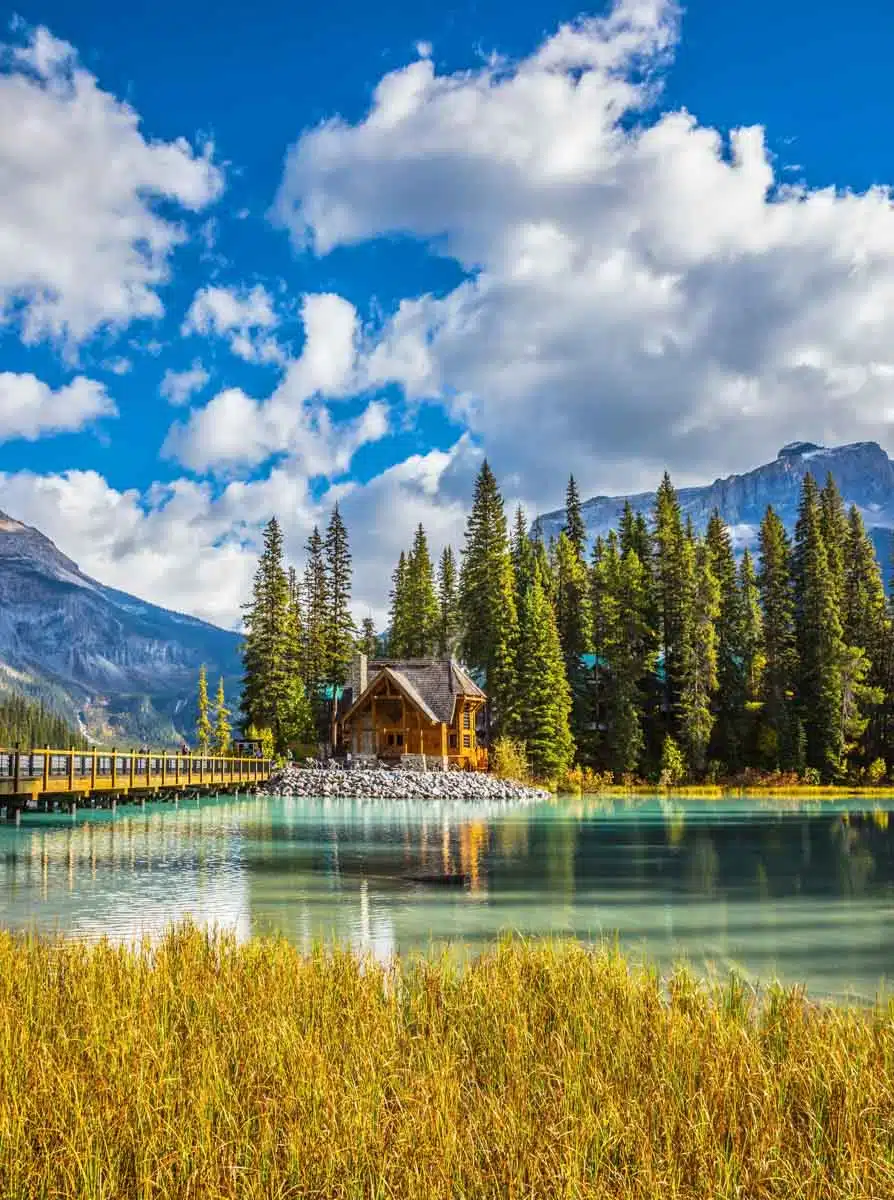
The drive to Yoho, your next stop, takes 3.5-4 hours, and since you’ve already made your stops on the Icefields Parkway, you can drive it straight. However, I’d plan to leave Jasper no later than 2 PM to make sure you have plenty of daylight to drive all the way to Yoho.
Once you’re in Yoho, you’ll actually stay in Field, the town of Yoho. There, you can grab dinner (I recommend Truffle Pigs Bistro & Lodge ) before settling in to your accommodation for the night.
Overnight in Field (Town of Yoho National Park)
- Mid-Range Hotel: Truffle Pigs Lodge – This 12-room inn is a small, comfortable, mid-range hotel option. With private rooms and bathrooms and an attached restaurant, it’s the perfect full-service accommodation option for Yoho. It’s also located in the heart of the tiny town of Field, perfect for access to all of the main park attractions.
- Budget Hostel: Fireweed Hostel – Built into a two-story log cabin, this cozy hostel is the perfect backpacker lodge for budget travelers in Yoho. Located in the town of Field, it’s an easy drive from most of the park’s main attractions, and there are typical hostel amenities like communal hangout space and a kitchen. It’s perfect for backpackers and solo travelers!
- Campsite: Kicking Horse Campground – A well-maintained, quiet campsite in Yoho National Park, Kicking Horse Campground offers campers a place to rest their heads (and shower, and get access to running water) from late June to October.
Day 9: Hiking & Sightseeing in Yoho National Park
Today is your full day in Yoho National Park, which is the smallest Canadian Rockies park and one of the most easily overlooked stops on any Canadian Rockies itinerary.
It’s actually in British Columbia, so it’s often not listed on “places to visit in Alberta” lists. But it’s equally, if not more, beautiful than its neighbors.
In fact, the word “yoho” in Cree, a local indigenous language, means something like “WOW!!!!” When you see it, you’ll probably agree that Yoho National Park is definitely deserving of such a high honor.
On Day 9 of your Canadian Rockies road trip, you’ll take the full day to explore Yoho. Banff is just a short drive (~40 minutes) away, so you can hang out here until about dinner time and then head over to Banff to spend the night.
FYI: Yoho doesn’t actually fully open all of its roads until late June, so you may need to modify your Canadian Rockies road trip plans if you come earlier in the season.
Morning: Takkakaw Falls and Emerald Lake
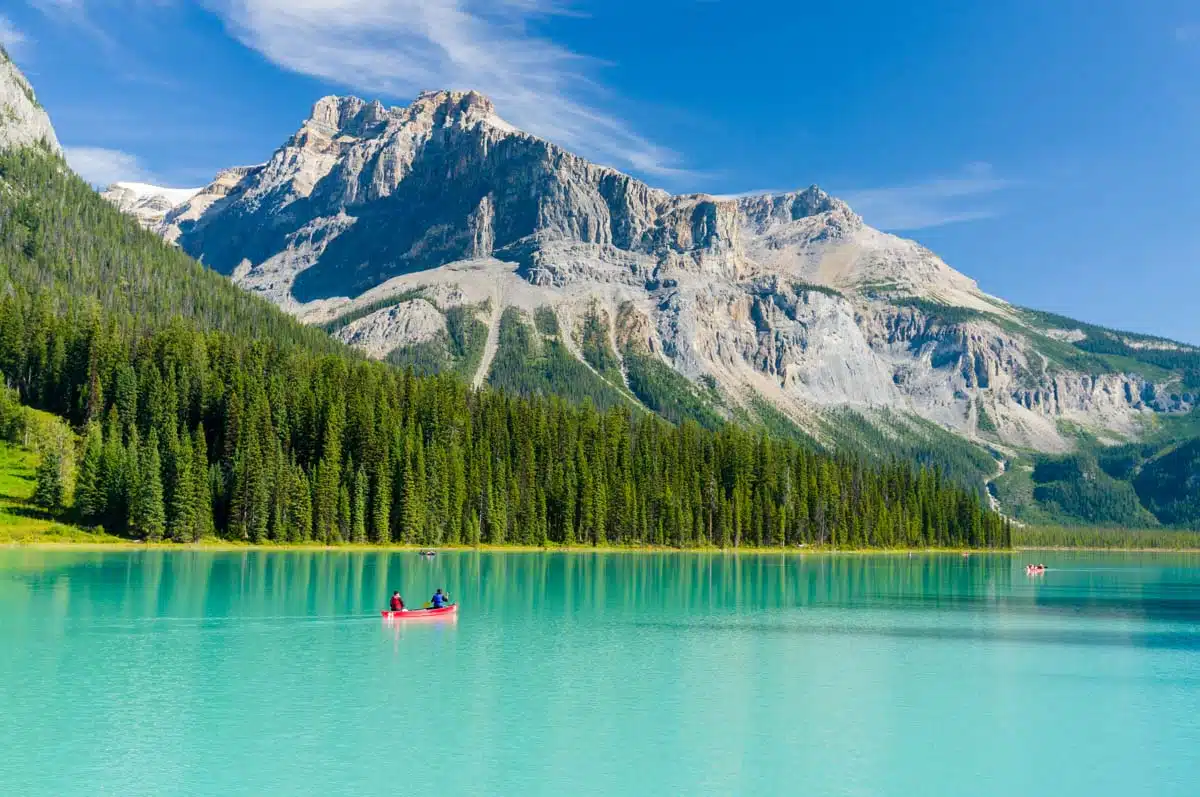
Takkakaw Falls is the second highest waterfall in Western Canada and is a super spectacular spot to head to in the morning. The access road is only open from June through early fall, so unfortunately if you are headed to the Canadian Rockies in the spring, you won’t be able to see the fall at that time.
To get to the end of the falls, you’ll need to take a trail, which is only ~1.5 kilometers. Once you arrive at the base of the falls, you can stand close enough to feel the cool water sprinkle your face. Cool (literally), huh?
Next, head to Emerald Lake, a stunning alpine lake in Yoho not far from Field. Here, the f ine sediment from the glaciers sits in the water and gives it its characteristic emerald color after which it is named. You can rent a kayak here or hike the 5.3 kilometer loop trail around the lake!
Afternoon: Lake O’Hara
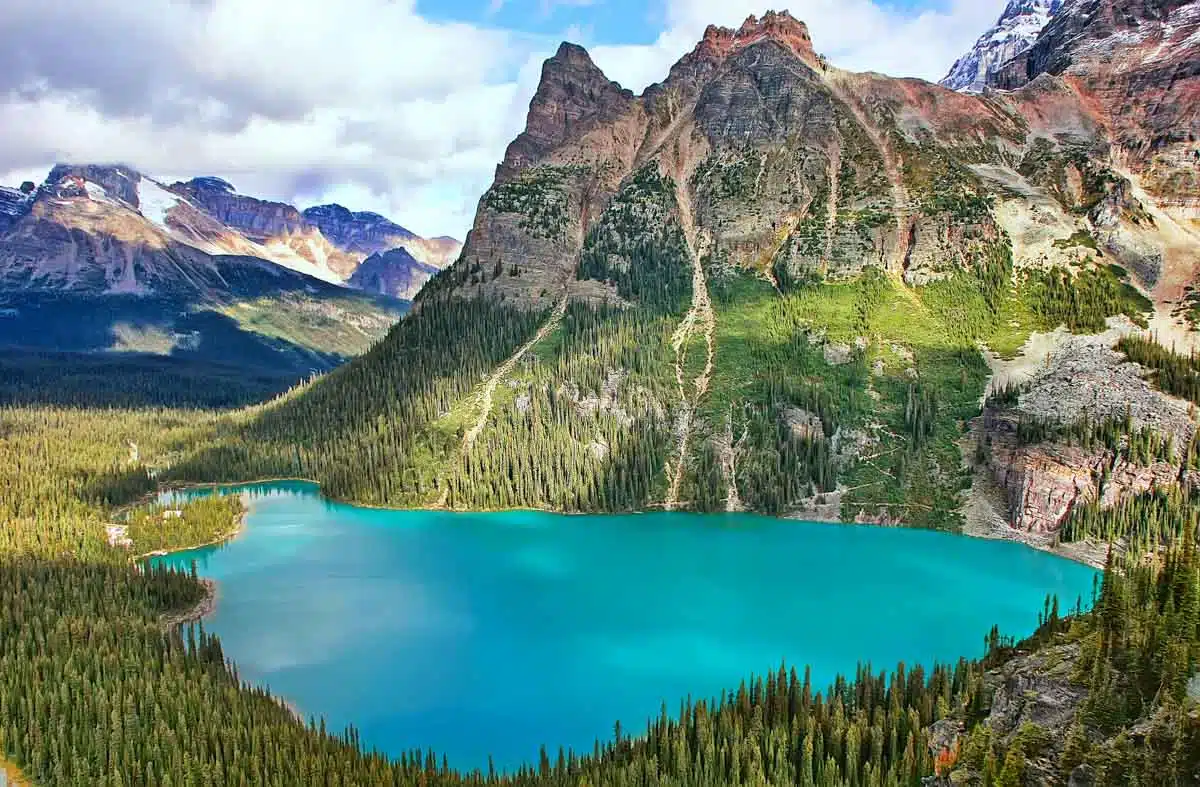
Lake O’Hara is an alpine lake, and is one of the main sights in Yoho National Park. It’s definitely worth the long journey it takes to get there.
Situated at 2000m in elevation, you need to hike up a trail in order to get there (but you may be able to pay to take a shuttle down back to the parking lot during the summer months. Note, however, that this is not a guarantee!)
Advance reservations are required to go up to the lake, however, you are still able to hike the 11 km up to the top even if you weren’t able to get a bus reservation.
If you don’t get a bus reservation, you will have to hike back down the 11 kilometers you came (which means this will easily turn into a full-day excursion!). However, if you are able to take the bus back down, plan to be around Lake O’Hara for 4-5 hours. (If you have to hike both ways, plan for 6-7 hours.)
Evening: Dinner in Banff
For your last dinner, you’ll head back to Banff’s town center. You can eat at one of your favorite restaurants from before, or opt for a bit more of a “fine dining” experience at one of these Banff local restaurants:
Saltlik – Enjoy a nice quality steak dinner at one of Banff’s premier steakhouses. There is a separate bar area for drinks. The restaurant has a great selection of side dishes. Try the mac and cheese!
The Bison – This picturesque dining establishment features wood-fired inspired food, and their dishes are LITERALLY to die for. For meat lovers, choose between ribs, bison, duck, or trout. Vegetarian dishes are also available. And, of course, before you leave Canada, you’ve got to try their poutine!
You’ll be back in Banff for your final night of this Canadian Rockies itinerary, so enjoy it! Again, here are my recommendations – the same ones as before – for a few popular places to stay (or you can read this post for the full list, from luxury lodges to budget hostels):
Day 10: Return to Calgary
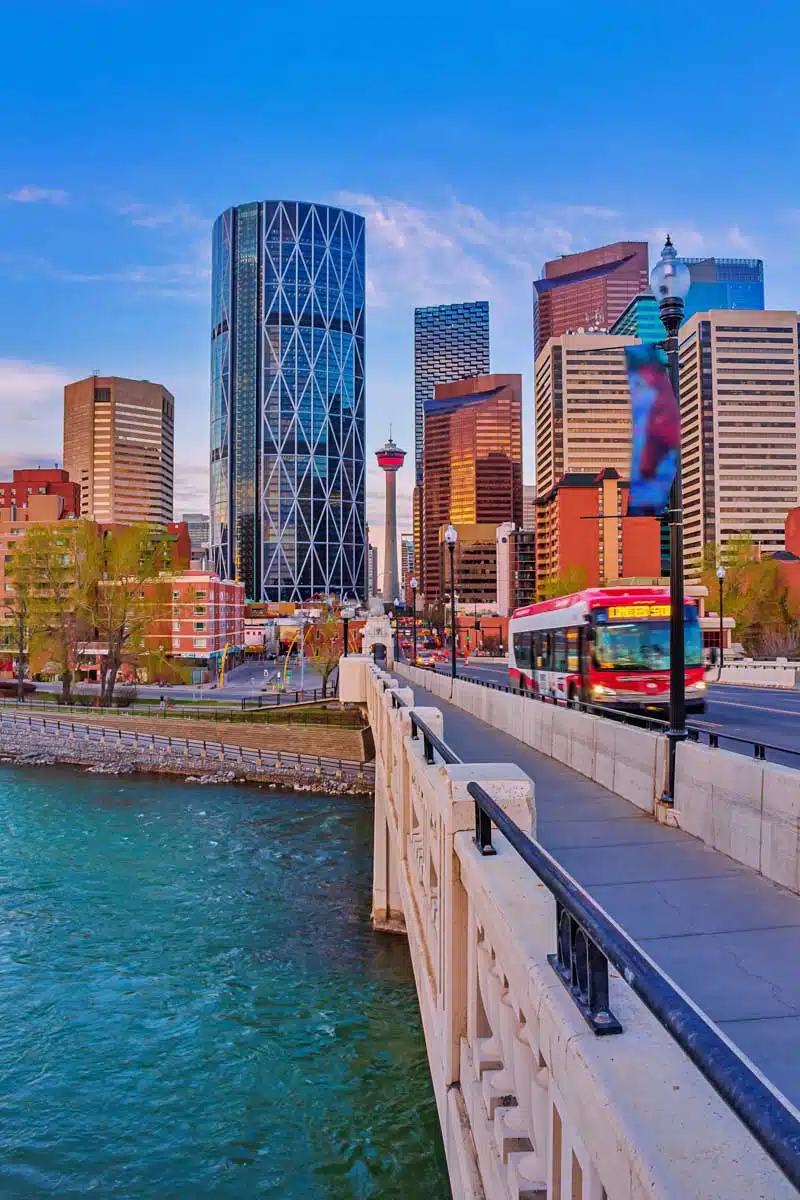
It’s the last day of your Canadian Rockies itinerary, and sadly you’ll have to return back to your normal life soon. But before you go, you’ll spend one last blissful morning amidst the peaks and forests before heading back to Calgary.
Morning: Sunrise at Vermilion Lakes
Wake up early (before 6 AM) and head to Vermilion Lakes for your final morning in the Canadian Rockies. This is THE sunrise spot, and we left this for the last day so that you can enjoy one last morning of tranquil mountain magic before heading back to the real world (*sobs*).
Even on misty mornings, the sunrise here can be quite beautiful, so I’d recommend going even if it looks cloudy outside. Park in the parking lot at Vermilion Lakes and walk into the shore area, where you can sit and enjoy a warm drink or just listen to the sounds of the morning.
It’s here where you’ll bid farewell to Banff and the Canadian Rockies and all of your amazing memories you’ve just made over the last 10 days. From personal experience, I will say that this place really sticks with you, forever. The landscapes of the Canadian Rockies have truly made an impression on me that my heart will always yearn for.
Returning to Calgary
You’re finally reaching the end of your Canadian Rockies road trip. (Sad face emoji!)
Depending on what time your flight is scheduled to depart, you’ll need to make your way back to Calgary. When you’re ready, dry your eyes and hop in the car, taking the Trans-Canada Highway all the way back to the city. Drop off your rental car wherever you picked it up, head back to the airport, and bid those incredible mountain vistas adieu .
Feeling some serious post-Rockies depression already? Well then you’ll just have to plan another trip up here! There are LOADS MORE things to do in the Canadian Rockies than we had time for in this itinerary, and until then, you can drift off to sleep at night with visions of the snow-capped rocky peaks and magical turquoise lakes dancing around in your mind…
Other Places to Visit on a Canadian Rockies Itinerary
If you’re one of the lucky ones who actually has more time in the Canadian Rockies than 10 days, read on for a few more areas you can add to your Canadian Rockies itinerary:
Waterton Lakes National Park
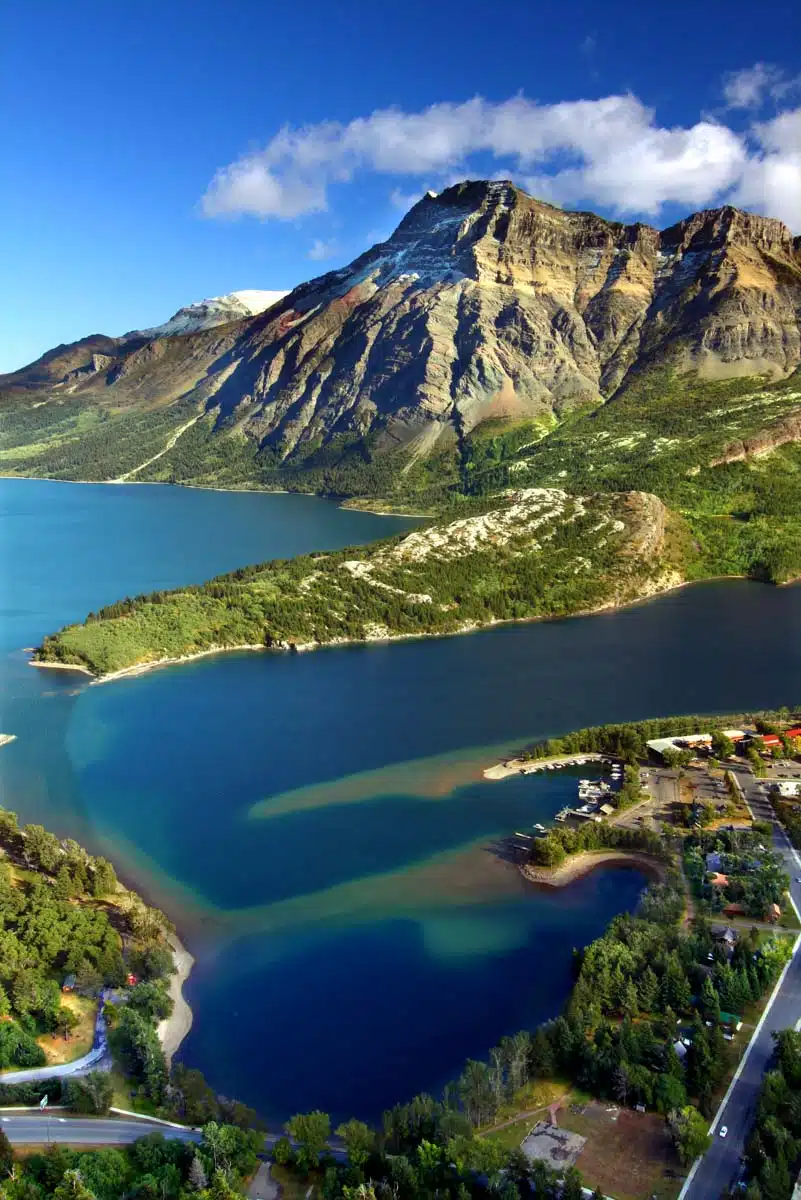
Waterton Lakes National Park (along with its US neighbor, Glacier) is a UNESCO World Heritage Site and International Peace Park. This Alberta national park consists of a giant glacial lake system surrounded by mountains, and it rests on the Canadian border with Montana. Its a bit far from the rest of the parks on our itinerary, but it’s definitely a worthwhile addition to any Canadian Rockies road trip!
Like its northern neighbors, Waterton Lakes is full of amazing, spectacular views and hiking trails, including its famed Triple Crown hiking challenge. To learn more about Waterton Lakes and the hiking trails there, visit our complete guide:
Kootenay National Park
Kootenay National Park , located in British Columbia, is another lesser-known Canadian Rockies national park. Located southwest of Banff National Park, you can experience all kinds of beautiful hiking trails here, with amazing, breathtaking alpine lakes and mountain passes to explore. It’s not far from the rest of the places on this Canadian Rockies itinerary and would be the perfect addition if you have a few extra days to spend in the region.
I haven’t actually personally been to Kootenay National Park, but this guide to 25 things to do in Kootenay is an excellent starting point if you’d like to explore the area.
Additional Canadian Rockies Travel Resources
Phew! If you’ve made it this far, congratulations. You’ve literally gotten your hands on all of the information you need for all of the stops on this itinerary. However, we do have even MORE detailed guides on each of the stops in the Canadian Rockies on our website and beyond.
The below resources (both our guides and the external ones) are all really helpful for learning more about the attractions at each stop on this itinerary, or for adding activities and extending your trip.
Have a look and remember — these are ALL just our recommendations. Doing more research on the area enables you to make your Canadian Rockies itinerary the perfect one for YOU!
Our favorite (external) Canadian Rockies travel resources:
- Lonely Planet: Banff, Jasper, and Glacier National Parks – If you’re into physical guidebooks to take with you when you travel, this is the ultimate companion to our Canadian Rockies itinerary. The Lonely Planet guide to Banff, Jasper, and Glacier has all the information you need to get around, find a nice place to stay, and book tours for the adventures you want to try.
- Moon Canadian Rockies – Another comprehensive print guidebook about Banff, Jasper, and more! It never hurts to have more than one, right?
- Parks Canada Website – This website is the ultimate resource for up-to-date information about the national parks in Canada. Here, you can find out about road and trail closures, construction occurrences, weather warnings, and more.
- To Banff and Beyond – A wonderful Banff-focused travel blog which includes several tips, hikes, and activities to do in the Canadian Rockies area!
10 Days in the Canadian Rockies Itinerary: Read Next
All of our own guides, tips, and misadventures in the Canadian Rockies
- Incredible Hikes in Canmore
- 23 Incredible Things to Do in Banff National Park
- Where to Stay in Banff National Park
- 17 Spectacular Things to Do in Jasper National Park
Love This? Save and Share on Pinterest
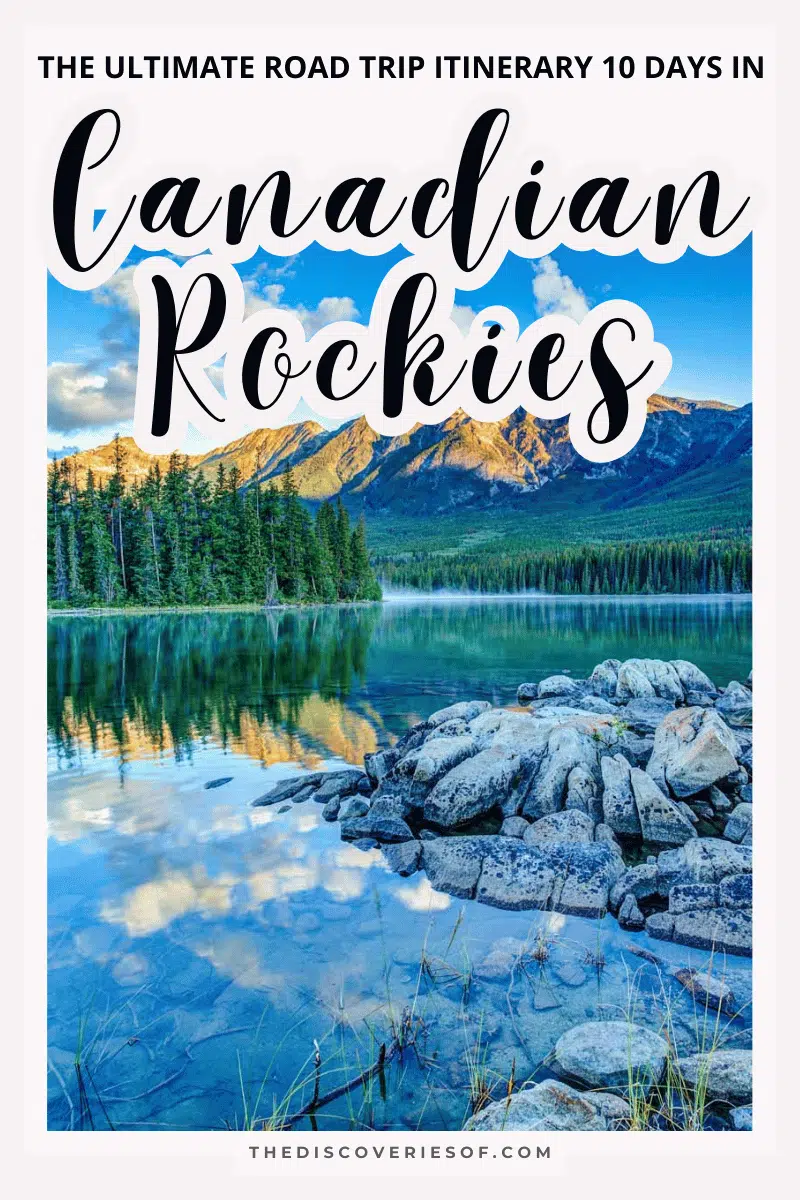
I’m Kay. I’m originally from small town Virginia, but have moved all around the East Coast and the United States for basically my entire life. I spent my childhood days blissfully wandering through the Blue Ridge Mountains, rolling in leaves, playing in creeks…you know, the usual overly adventurous 5-year-old stuff.
But those early years spent outside gave me a real problem: I’m now an adventure addict. Basically, if I’m not at my computer banging out articles or photos, I’m probably out hiking, biking, or camping somewhere beautiful.
Related Posts
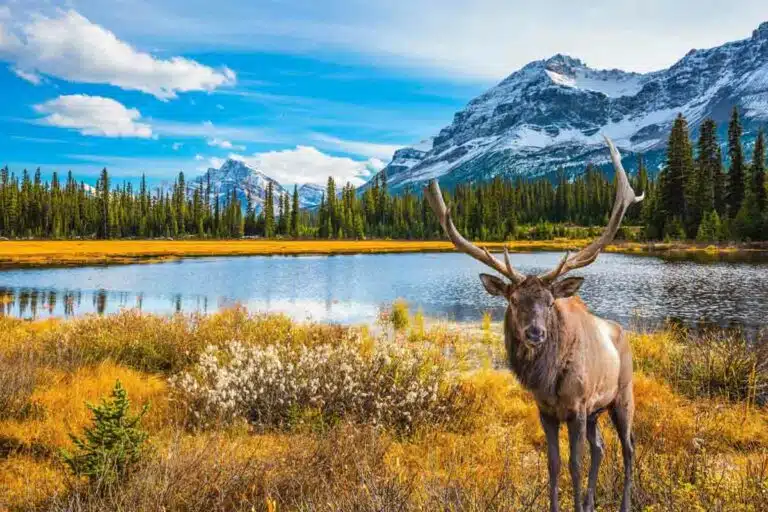
6 Epic Canada Itineraries for The Perfect Adventure
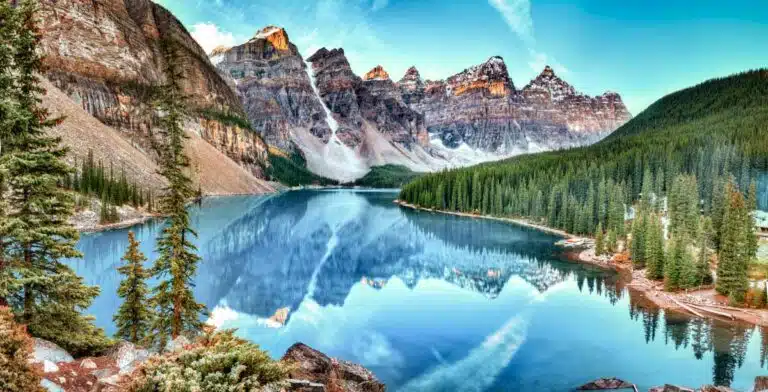

The Best Things to do in Canada: 27 Unique Adventures Up North
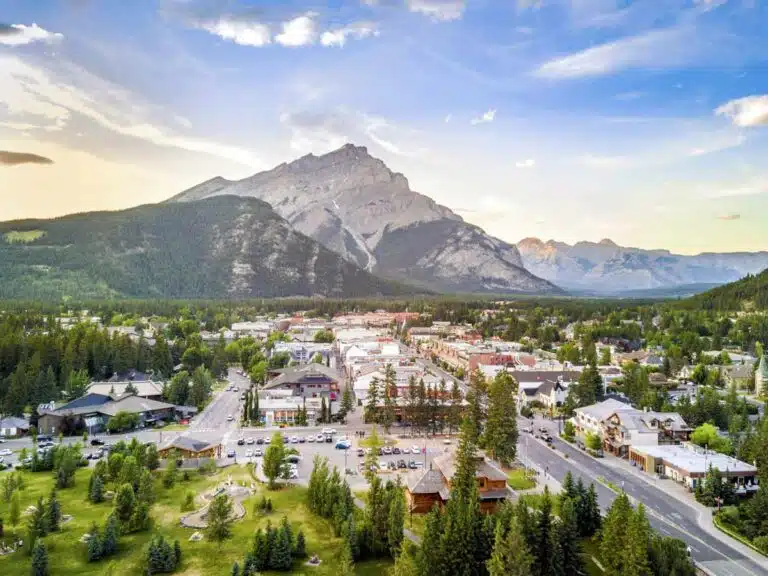
The Best Time to Visit Banff National Park
Hey – What an amazing blog, thank you so much.
If you had an extra 3-4 days, where would you spend them? Additional destinations or adding more days to places like Banff and Jasper?
Thank you SO MUCH (!) for putting this together. I am planning a canadian rockies road trip with my dad this summer and this is perfect. I honestly dreaded planning a bit because I know how much there is to do / see and to think of but this just made my life so much easier and now I can’t wait!
Leave a Reply Cancel reply
Your email address will not be published. Required fields are marked *

Follow me on Instagram for travel inspiration, tips, and guides.
- Toll Free: 1-800-347-7126
- Intl: 1-403-259-5447
- Online Check-in
- Agent Portal
Rental Vehicles
- Maxi Travel Camper (TCA)
- Deluxe Van Camper (DVC)
- Super Van Camper (SVC)
- Compact Motorhome (MHC)
- Midi Motorhome (MHB)
- Maxi Motorhome (MHA)
- Maxi Plus Motorhome (MHX)
Special Offers
- Relocation Offers
- 2025 Early Booking Deals
- Free Night Offer
- My CanaDream
- Liability Reduction Options
- How To Videos
- Travel Extras
- Temporary Accommodation
- Payment Options
- Book with Uplift 0% Financing
- Free Winter E-Book
- CanaDream Cares
- Go Global with THL
- 30 Years of CanaDream
Be Inspired
- Trip Planner
- Destinations
- Itineraries
- Ski Safaris
- Guide Books
Download Our Guides
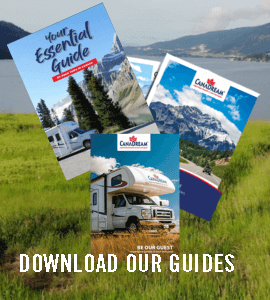
Photo Contest!

- Free Summer E-Book
- Gift Certificates
CanaDream Club
- Hotel & Parking Offers
- Ski Resort Specials
- Premium Partners
- Fuel Savings
- Club App Booking Offers
- Campertunity
- Sustainability
Join the Club
- Be a Campground Partner
- Be an Attraction Partner
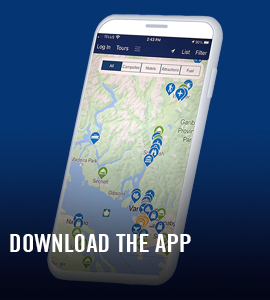
- Club Savings
- Discovery Pass
- Explore the Club
- Solis Mobile Hotspot
- View Inventory
- RV Financing
- RV Sales FAQ's
- CanaDream Club for Owners
- Rent Before You Buy
RV Sales Locations
- Truck Camper
- RV Specials
- Certified Winter Ready RVs
Click to Learn More

- Financing your RV
- Certified Adventure Ready
Service & Parts
- Calgary RV Storage
- Halifax RV Storage
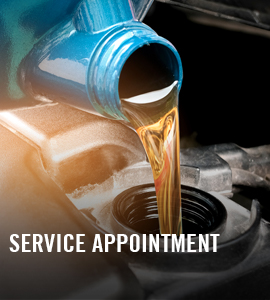
- Vehicles Back Vehicles
- Maxi Travel Camper (TCA) Back Maxi Travel Camper (TCA)
- Deluxe Van Camper (DVC) Back Deluxe Van Camper (DVC)
- Super Van Camper (SVC) Back Super Van Camper (SVC)
- Compact Motorhome (MHC) Back Compact Motorhome (MHC)
- Midi Motorhome (MHB) Back Midi Motorhome (MHB)
- Maxi Motorhome (MHA) Back Maxi Motorhome (MHA)
- Maxi Plus Motorhome (MHX) Back Maxi Plus Motorhome (MHX)
- Saver 2 Back Saver 2
- Saver 4 Back Saver 4
- Saver 6 Back Saver 6
- Winter RV Back Winter RV
- Vancouver Back Vancouver
- Calgary Back Calgary
- Toronto Back Toronto
- Montreal Back Montreal
- Halifax Back Halifax
- Edmonton Back Edmonton
- Whitehorse Back Whitehorse
- Hot Deals Back Hot Deals
- Relocation Offers Back Relocation Offers
- Winter Vacation Deals Back Winter Vacation Deals
- Rewards Back Rewards
- 2025 Early Booking Deals Back 2025 Early Booking Deals
- My CanaDream Back My CanaDream
- How To Videos Back How To Videos
- Travel Extras Back Travel Extras
- Temporary Accommodation Back Temporary Accommodation
- Book Now Pay Later Back Book Now Pay Later
- Payment Options Back Payment Options
- Liability Reduction Options Back Liability Reduction Options
- About Back About
- Contact Us Back Contact Us
- Careers Back Careers
- CanaDream Cares Back CanaDream Cares
- CAA Travel Insurance Back CAA Travel Insurance
- FAQs Back FAQs
- Go Global with THL Back Go Global with THL
- 30 Years of CanaDream Back 30 Years of CanaDream
- Blog Back Blog
- Destinations Back Destinations
- Itineraries Back Itineraries
- Camping Back Camping
- Trip Planner Back Trip Planner
- Ski Safaris Back Ski Safaris
- FAQ's Back FAQ's
- Gift Certificates Back Gift Certificates
- CanaDream Guides Back CanaDream Guides
- Explore the Club Back Explore the Club
- CanaDream Club Welcome Video Back CanaDream Club Welcome Video
- Hotel & Parking Offers Back Hotel & Parking Offers
- Premium Partners Back Premium Partners
- Fuel Savings Back Fuel Savings
- Download our App Back Download our App
- Club App Booking Offers Back Club App Booking Offers
- Discovery Pass Back Discovery Pass
- Solis Mobile Hotspot Back Solis Mobile Hotspot
- Campertunity Back Campertunity
- Sustainability Back Sustainability
- Be a Campground Partner Back Be a Campground Partner
- Be an Attraction Partner Back Be an Attraction Partner
- RV Sales Locations Back RV Sales Locations
- RV Financing Back RV Financing
- RV Sales FAQ's Back RV Sales FAQ's
- CanaDream Club for Owners Back CanaDream Club for Owners
- Truck Camper Back Truck Camper
- Class B Back Class B
- Class B+ Back Class B+
- Class C Back Class C
- Trucks Back Trucks
- Certified Winter Ready RVs Back Certified Winter Ready RVs
- Service Back Service
- Parts Back Parts
- Calgary RV Storage Back Calgary RV Storage
- Pricing Back Pricing
- Lot Map Back Lot Map
Get RV Rental Pricing & Availability
- {{pickup.Value}}
- {{dropoff.Value}}
- {{country.CountryNameEnglish}}
Get RV Sales Pricing & Availability
- All RV Types
- {{rvType.Name}}
- All Locations
- {{location.Name}}
- {{sleepCapacity.Name}}
- {{maxPrice.Name}}
Province British Columbia
Province alberta, province saskatchewan, province ontario, province quebec, province newfoundland and labrador, province new brunswick, province nova scotia, province prince edward island, territory yukon, canada trip planner.
- All regions
- {{region.Value}}
- {{duration.Value}}
- All seasons
- {{season.Value}}
Keep Exploring Canada

Experience Canada at your Own Pace

- Create an account / Login
Road trips in Canada
Western conquest.
Explore the must-sees of Western Canada. The natural beauty of Vancouver Island, the waterfalls of Wells Gray Park and the awe-inspiring peaks of the Rockies will blow your mind!
Explore Toronto, Niagara Falls, the charm of the Eastern Townships and Charlevoix on this captivating road trip through Ontario and Quebec.
The West by RV
From nights under the stars in Rocky Mountain campsites to the beauty of Vancouver Island, come and enjoy a unique experience in the heart of Canadian nature.
Legendary landscapes
Embark on an unforgettable escape along Canadian roads from the Rockies to Vancouver. You'll be captivated by the natural treasures at every turn...
West with the family
Embark on unforgettable family adventures from Vancouver to the authentic charm of historic Hat Creek Village. Finish your road trip in style in the heart of the majestic Rockies.
Passionate by nature
Drive from the Rockies to Wells Gray Park, soak up Vancouver Island and taste the delights of the Okanagan. Immerse yourself in the nature of Western Canada !
Legendary splendour
By car! The spectacular roads of this road trip through the varied scenery and must-see attractions of Western Canada are sure to leave a lasting impression on you.
The Rockies by train
Cross the majestic Rocky Mountains from Vancouver to Jasper aboard the Rocky Mountaineer. From snow-capped peaks to lush valleys, you'll enjoy an unforgettable experience.
Ontario & Quebec
From Toronto to Niagara Falls, experience Ontario's bustling cities and explore Quebec's wilderness. The perfect adventure between culture and nature.
Wonders of Canada
Each stage of this escapade reveals unique wonders, from captivating metropolises to natural splendors, creating an unforgettable adventure in the heart of America.
Dream destinations
Discover breathtaking landscapes and majestic mountains in unspoilt wilderness. Each day offers a new dream destination for an unforgettable experience.
The Maritimes by RV
Discover the tides of the Bay of Fundy and Kouchibouguac and the breathtaking scenery of Cape Breton on this road trip that promises rich experiences and a memorable maritime escapade.
Discover the Lakes Route. From the unspoiled beauty of Waterton to the iconic village of Banff, you'll experience a real immersion in Alberta's dreamy scenery.
Authentik Quebec by the sea
Discover Gaspésie and the Côte Nord, combining ecotourism and maritime discoveries, and stay in eco-responsible accommodation for an authentic adventure in the heart of Québec maritime.
- Eco-friendly
From Toronto to New York, explore the culture of Montreal, the charm of Quebec City and the energy of Boston. Each stop adds a new dimension to this journey to the heart of North America's cities.
The great explorer
Explore unlimited Montreal, the majestic Niagara Falls, the historic streets of Quebec City, and the famous Gaspésie. An unforgettable journey between Ontario and Quebec !
Immerse yourself in the unspoilt nature of Parc des Grands Jardins and Parc du Fjord du Saguenay, and explore Île aux Lièvres. Destinations that invite you to reconnect with nature!
Destination Maritimes
From the city of Halifax to the beaches of Kouchibouguac, via the beauty of Cape Breton Island, experience an adventure rich in coastal landscapes, warm encounters and culinary discoveries.
From glaciers to geysers
From glaciers to geysers, dense forests to endless meadows, this road trip crosses borders, soaking up the majestic grandeur of the Rockies from country to country.
The New World
Travel through Ontario and Quebec by motorhome. From picturesque villages to the calm of nature and the authenticity of the Gaspe Peninsula. A fascinating mix of scenery across our wide-open spaces.
The Green Odyssey
Quebec's ubiquitous nature awaits you on this road trip, where Quebec's most beautiful parks reveal their charms and their finest treasures.
Explore Western Canada aboard the Inside Passage. A delightful blend of fjords, lush forests, typical villages and unique natural scenery, each stop reveals an unforgettable adventure.
Once in the West
Explore Western Canada from Calgary to the majestic Rockies, from Wells Gray to Vancouver, ending at legendary Lake Louise! An epic journey through the heart of Alberta and British Columbia.
Welcome to Canada
Explore Canada with your family from Niagara to Quebec City! Discover the majestic Falls, the excitement of Toronto, the authenticity of Seigneurie du Triton, and the splendor of the Saguenay Fjord.
Back-country roads
Travel the scenic backcountry roads from the comfort of your motorhome. At every turn, the diverse landscapes of the Rockies will leave you in awe!
Indian summer
Travel to the rhythm of the colors of Indian summer. An enchanting journey where each destination reveals the splendor of the vibrant colors of this unique autumn season.
Canadian treasures
Discover Canadian treasures, from Niagara Falls to Forillon National Park. On the road, let yourself be charmed by the wide-open spaces and picturesque villages of Charlevoix and Gaspésie.
Trekking in Quebec
Put on your hiking boots and explore trails with breathtaking panoramas, from National Gaspesie Park to majestic Rocher Percé. Each step will guide you into the wilderness.
Vancouver Island
Explore Vancouver Island, from the charming city of Victoria to the wild beaches of Pacific Rim. You won't remain indifferent to the authenticity of Telegraph Cove and the beauty of Quadra Island.
Nomad spirit
Enjoy a touring adventure through Quebec and Ontario in your motorhome. From Montreal to Niagara, explore the Thousand Islands, Mauricie, Tadoussac and Jacques Cartier National Park.
Large as life
From emerald lakes to the Pacific coast, the majestic landscapes of Western Canada will captivate you on this memorable road trip.
Wild refinement
Between national parks, towns and unexpected encounters, this mountain epic promises moments of pure emotion and wild adventure.
From the Rockies to Yellowstone
From the majestic Rockies to the mythical Yellowstone Park, nature reveals a show without borders, with exceptional landscapes and captivating natural diversity!
Family adventure
Board the Inside Passage, crossing majestic fjords. Discover history-filled villages in Prince Rupert, Stewart and Smithers, before concluding in the heart of the Rockies.
La Belle Province
Explore La Belle Province. Discover spectacular coastal landscapes, picturesque villages and enjoy an authentic adventure in the heart of Québec maritime.
Family vacation in Canada
Discover the treasures of Quebec with your family on this road trip that offers authentic immersion and rejuvenation in an exceptional natural setting.
Gaspesie road trip
Enjoy the ultimate adventure in Quebec: from the forests of Mauricie to the Saguenay Fjord, from the whales of Tadoussac to the Gaspesie National Park, each stage promises an unforgettable experience.
Canada by Motorhome
Travel the roads of Quebec in a motorhome and discover the diversity of the province, from the charms of Quebec City to the natural beauty of Mauricie and the Saguenay Fjord.
Wilderness trail
Discover lakes and forests, where mountains and river intertwine. An unforgettable getaway, revealing the majestic Saguenay Fjord and the unspoiled nature of Quebec !
Heart of Quebec
This convivial trip will let you discover the authenticity of Quebecers at every step, celebrating the beauty, culture and hospitality of Quebec.
Indian summer by RV
Breathtaking panoramas await you in the jewel of Quebec autumn: from the splendor of the Mauricie region to the colorful valleys of Jacques Cartier Park, you'll be amazed by these majestic sceneries.
The nature of Quebec
Explore the diversity of Québec au naturel with this compendium of varied adventures, from the Jacques Cartier trails to the whales of Tadoussac, from Lac Saint-Jean to Parc de la Mauricie.
The grand seduction
Experience the essence of Gaspesie with outdoor activities and rich local cuisine. A perfect fusion of seafood delights and Gaspesian authenticity awaits you.
Family zone
Discover Quebec with your family: its wilderness, wide-open spaces, whales and lush flora and fauna are sure to delight everyone !
Us, ye, and the Islands !
From the beaches of the Islands to the charms of Gaspésie, discover picturesque villages and soak up the rhythm of the waves. A journey that connects us, you and these enchanting islands.
Gaspesie family vacation
Bring the whole family and discover the region's treasures: beaches, picturesque villages and the famous Rocher Percé.
My custom road trip
Authentic quebec: gems to visit during indian summer, the best western canada tour, the best vancouver island road trip, the best 10-day itinerary in canada, the best 2-week road trip for exploring quebec and ontario, the best van road trip in quebec, how to use the google maps gps offline while travelling , western vs eastern canada : which to choose , 5 ideas to entertain the kids on a canada road trip, the best 2-week quebec road trip, the best 10-day itinerary in the canadian rockies, 5 good reasons to opt for an rv for your family road trip, the quebec beer route, the ultimate quebec family road trip, the best road trip to experience indian summer, top 10 scenic routes in western canada (with maps + photos), the ultimate quebec rv road trip, top 10 attractions in banff national park, travel guide to the canadian rockies, faq on road trips in canada, when to go on a canada tour .
The best time to go on a Canadian Rockies road trip or Eastern Canada adventure is during the summer months, between mid-June and mid-October .
The high touristic season is between mid-July and mid-August . There are a lot more travelers and the prices are higher.
From mid-September to mid-October , the trees are adorned with red, orange and yellow to offer quite a spectacle. You can sometimes still get nice temperatures. We call it the Indian Summer.
Whatever option suits your desire, make sure to check out our section " When to visit Canada ? " before booking your travel dates.
Driving in Canada
Before leaving for a road trip aboard your Canada car rental, it is best to be aware of the particularities of the Canadian highway code. We have gathered for you the most important information on our " Driving in Canada " page.
When should I book my Canada tour ?
The best time to book your Quebec road trip or Western Canada tour is to book at least 6 months in advance to ensure availability, especially if you plan to travel in July or August.
Indeed, if you book your Canada road trip at the last minute, you risk limited availability , not to mention that you can expect the most beautiful places to be full.
Finally, the earlier you book, the more money you will save . There is no good reason to wait before booking your trip.
Consult our section " When to book my trip? " to know more.
What is the Authentik roadbook ?
The Authentik roadbook is a fully personalized Canada travel guide tailored to your individual Canada tour . Your Authentik advisor will start preparing your roadbook as soon as you book your trip.
The roadbook can be delivered to your home prior to your departure or given to you upon your arrival in Canada.
See it as your personal assistant that will help you discover the most beautiful places in the country so that you don't miss a thing on your trip with us.
See our " Roadbook " section for more information.
Which destination to choose between Eastern and Western Canada ?
Are you planning a Canada self-drive holiday and hesitating between Eastern Canada and its warmhearted Quebec or a Canadian Rockies itinerary ?
Consult our " East vs West" section to help you see more clearly.
Should I choose a Canada tour by RV or by car ?
You are wondering if you should explore our great outdoors aboard a Canada RV rental or a car ?
Both types of travel have their pros and cons.
And contrary to popular belief, it is not always true that an RV trip costs less.
Consult our section " Car or RV " to know more.
See all FAQs on road trips in Canada
Check out our comprehensive road trip FAQs or our practical information FAQs on traveling to Canada in general.

East Coast Canada Road Trip | 2 and 4 Week Itineraries
A trip to Canada’s East Coast is all about sea breezes, fresh lobster, colourful fishing villages, sweeping swathes of sandy beach, weathered lighthouses and majestic ocean panoramas.
Connecting them all are winding coastal roads, sometimes only a crash barrier away from the water itself.
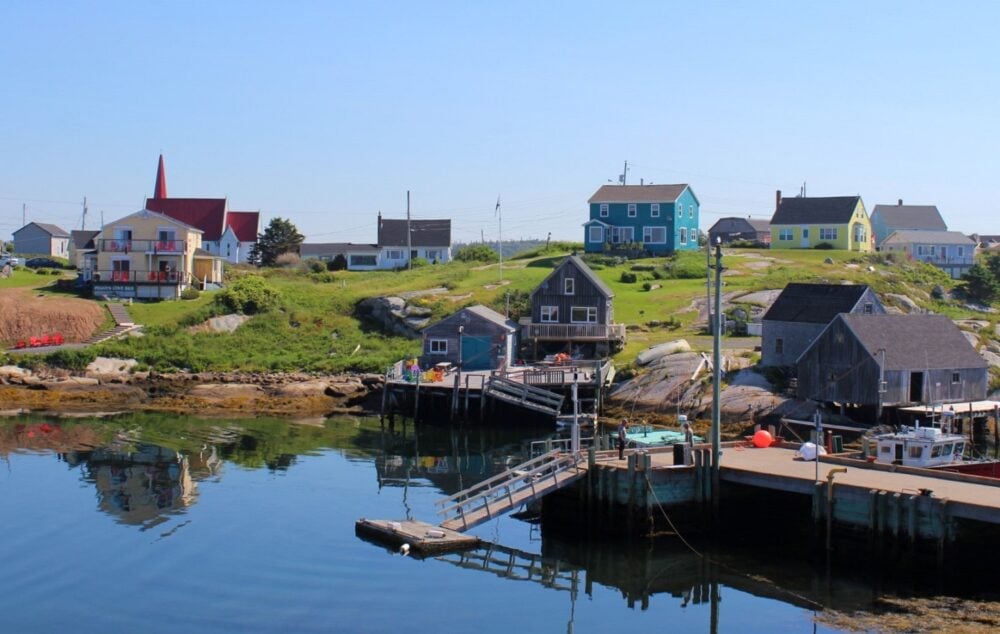
A road trip on Canada’s East Coast is an exciting and unforgettable adventure, with beautiful views and interesting experiences almost everywhere you go.
Read on and create your own perfect East Coast Canada road trip itinerary. Here’s what to expect:
Day 1, 2, 3 and 4 – Halifax and Nova Scotia’s South Shore
- Day 5, 6, 7 and 8 – Cape Breton Island, Nova Scotia
Day 9, 10 and 11 – Prince Edward Island (PEI)
Day 12, 13 and 14 – new brunswick, days 1 to 6 – new brunswick, days 7 to 13 – prince edward island, days 14 to 19 – cape breton island, days 20 to 30 – mainland nova scotia.
- General road trip advice
- Essential items to bring
- History and culture of the Canadian Maritimes
This post includes affiliate links. If you make a qualifying purchase through one of these links, I may receive a small percentage of the sale at no extra cost to you.
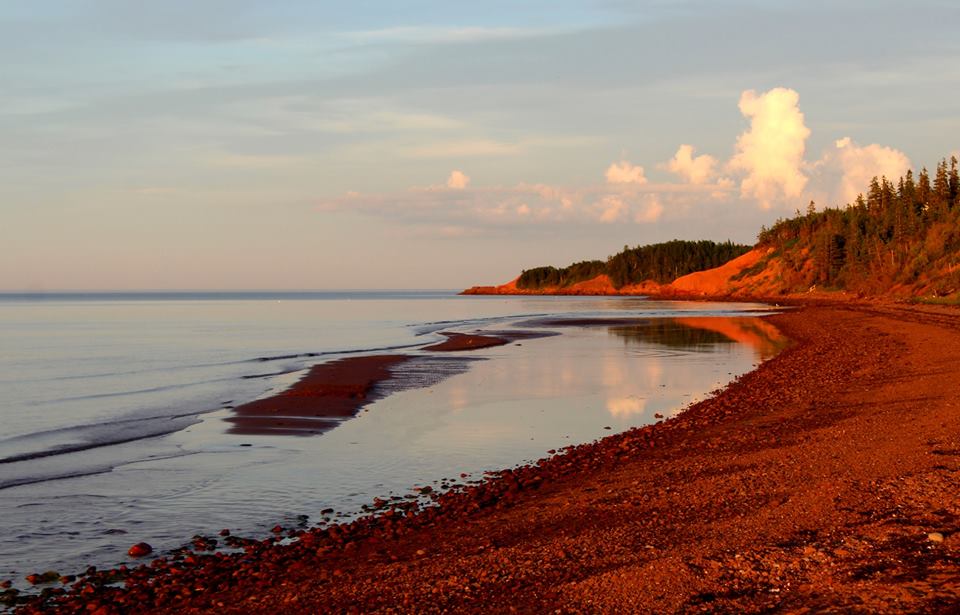
Planning the perfect East Coast Canada Road Trip
Spending the best part of five months exploring the Maritimes gave us plenty of time to reflect on what would be the ‘ultimate’ East Coast Canada road trip.
The truth is, there’s no such thing. It completely depends on your time limit and personal interests.
For that reason, I have created a two week East Coast Canada road trip itinerary that features all the highlights and a four week beyond the beaten path route with more suggestions of things to do.

See which of the beyond the beaten path activities peak your interest. Then chop, change and add to the standard itinerary as you like according to your own interests and time restrictions.
The key to making the most of your East Coast Canada road trip is to not overload your itinerary.
Despite the provinces on the East Coast being some of Canada’s smallest, the driving distances are probably longer than you may expect. We spent a week driving Prince Edward Island from coast to coast and our mileage topped 2000km.
Please note – Newfoundland is not included in any of the following suggested East Coast Canada road trip itineraries.
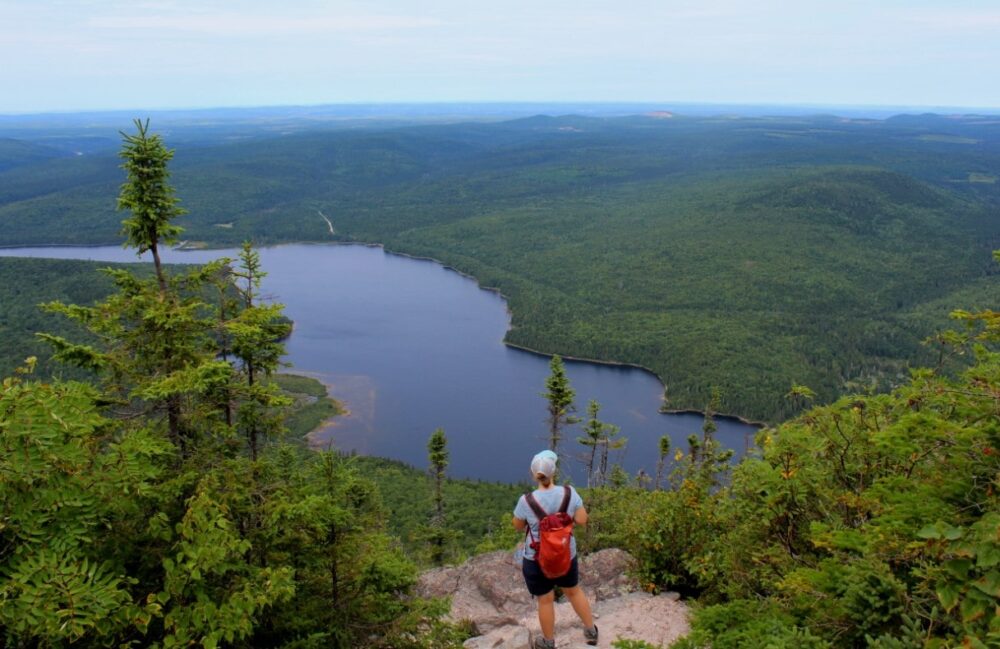
Two Week East Coast Canada Road Trip Itinerary
Road trip length: Approx 2200km
Ideal length of time: Two weeks
This road trip is ideal if: You want to visit all of the iconic places shown on social media and talked about by family and friends. It’s also a great route for those short on time. This road trip can be condensed to ten days if necessary with the removal of a few activities and sights.
Road trip overview: For a varied, fun and beautiful overview of the Maritime provinces, concentrate your time in these four areas – Halifax and Nova Scotia’s South Shore (3 nights), Cape Breton Island (4 nights), Prince Edward Island (3 nights), New Brunswick (3 nights). This road trip itinerary starts and ends in Halifax.
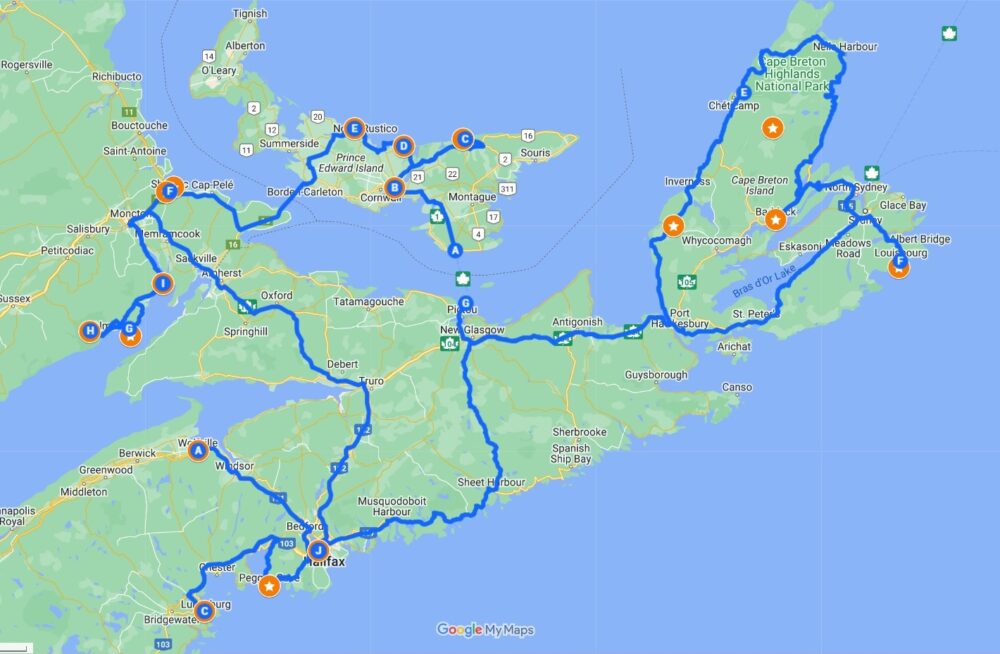
The first destination of this East Coast Canada road trip is Halifax. A compact city situated on a picturesque harbour, Halifax is a great place to visit even if you don’t usually like cities. It’s also an ideal base for a wide range of day trips in the area.
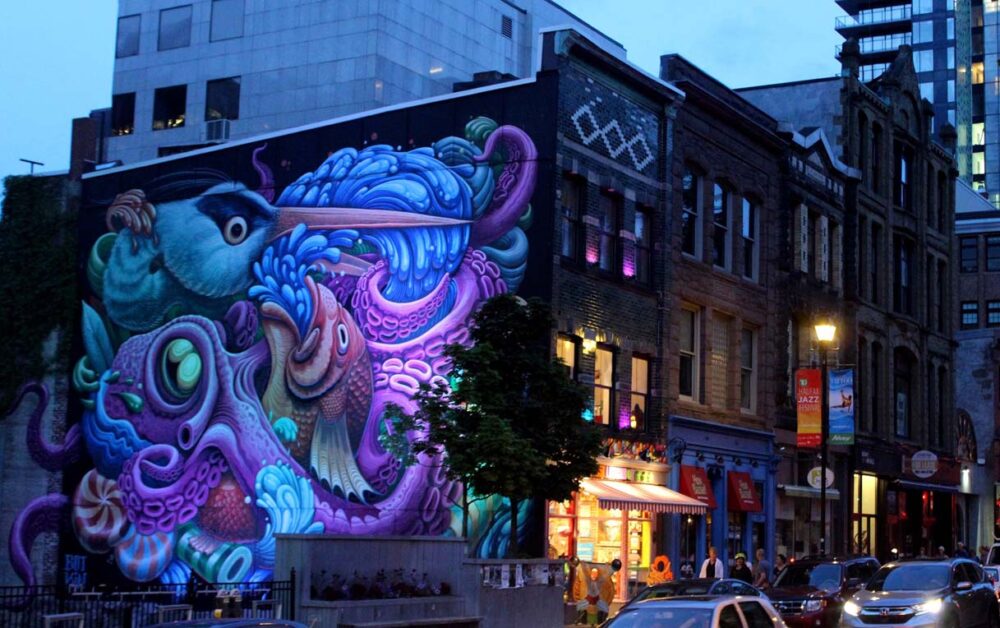
What to do in and around Halifax
- Halifax’s waterfront is a joy to walk and features several world class museums ( Pier 21 and the Maritime Museum ). Just behind downtown is the Halifax Citadel , a 19th century star shaped fort. Raise a glass and enjoy some local music on the excellent Alexander Keith’s Brewery Tour .
- Just south of Halifax are two of East Coast Canada’s most quintessential sights – the granite rocks and lighthouse of Peggy’s Cove and the colourful port town of Lunenburg . The latter is ideal for an overnight stay. If you don’t have wheels, consider a guided day trip .
- If you have time, continue on along the South Shore to see more authentic fishing villages and rugged coastline.
- The artsy yet regal small town of Wolfville is another welcome overnight or day trip excursion. Whether you choose wine tasting or history ( Grand-Pré ), be sure to see the beautiful view from nearby Look Off .
Where to stay in and around Halifax
The Prince George Hotel – Fabulous downtown location
Granville Hall Residence – Great value for summer visitors
Smugglers Cove Inn – Ideal location in Lunenburg
Micro Boutique Living – Modern and comfortable lodgings on Wolfville’s main drag
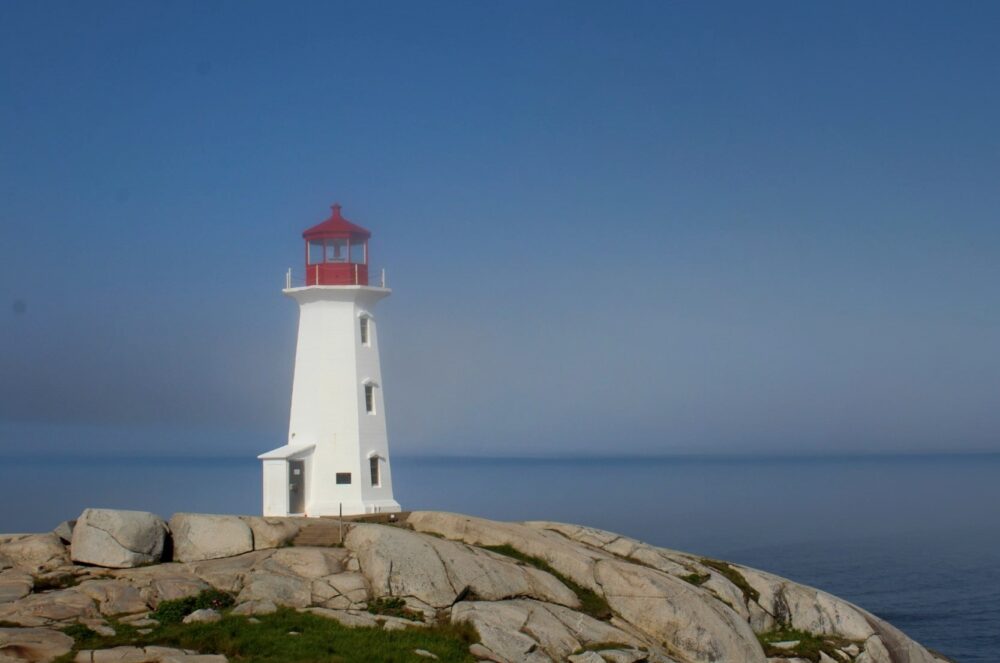
Day 5, 6, 7 and 8 – Cape Breton Island, Nova Scotia
Cape Breton Island, and specifically the Cabot Trail, offers some of the most magnificent views in the Maritimes.
Here, Nova Scotia’s highest mountains meet the sea. It’s a paradise for nature lovers. After exploring Cape Breton Island, head to Pictou to catch the ferry to Prince Edward Island.
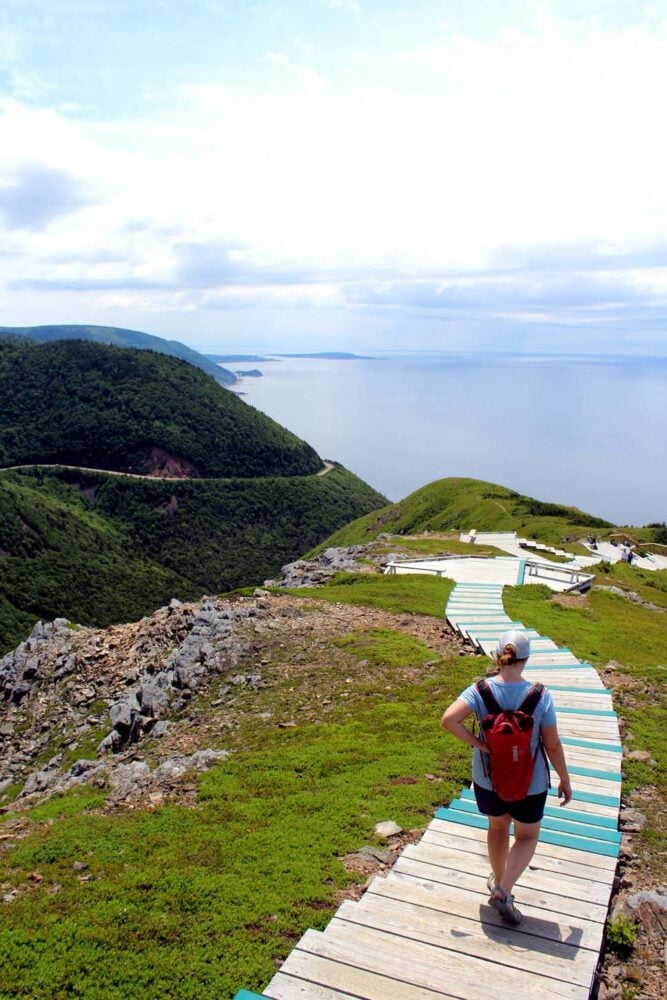
Things to Do on Cape Breton Island
- The Cabot Trail is a East Coast Canada road trip highlight for many. This scenic roadway across the Cape Breton Highlands may only be 298km in length but you’ll want at least a couple of days to take it all in.
- From the Cabot Trail, you can go whale watching, hiking, camping, kayaking and also try local Acadian, Canadian and Scottish cuisine .
- Other popular activities on Cape Breton Island include attending a cèilidh in the Mabou area and visiting Alexander Graham Bell’s adopted home in Baddeck.
- Fortress of Louisbourg , a living museum portraying French colonial life in the 18th century, with costumed actors and restored barracks, shops, restaurants, blacksmith and bakery.
Where to stay on Cape Breton Island
Gillies By the Sea – Comfortable waterside B&B in Port Hood
Auberge Doucet Inn – Good value option in Chéticamp
The ZzzzMoose & Zzzz Moose 2.0 – Cute cabins with private beach, south of Ingonish
Cape Breton Highlands National Park – Six frontcountry campgrounds and one backcountry option
Read Next: 7 of the Best Road Trips in Nova Scotia
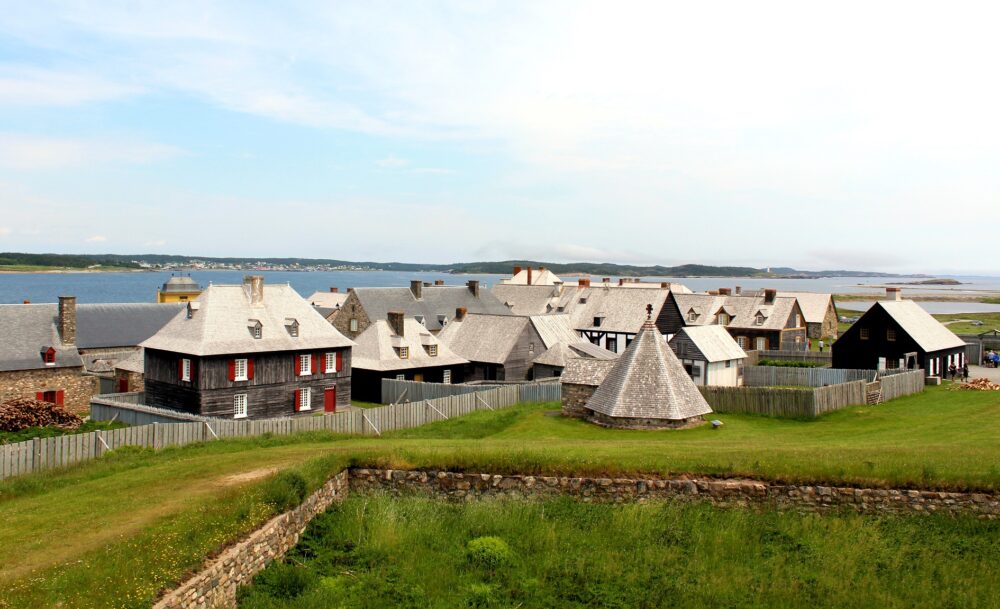
Prince Edward Island is the East Coast’s archetypal sun, sea and sand holiday destination. Enjoy the slower pace of life on the island and short driving distances plus fresh, local cuisine and friendly locals.
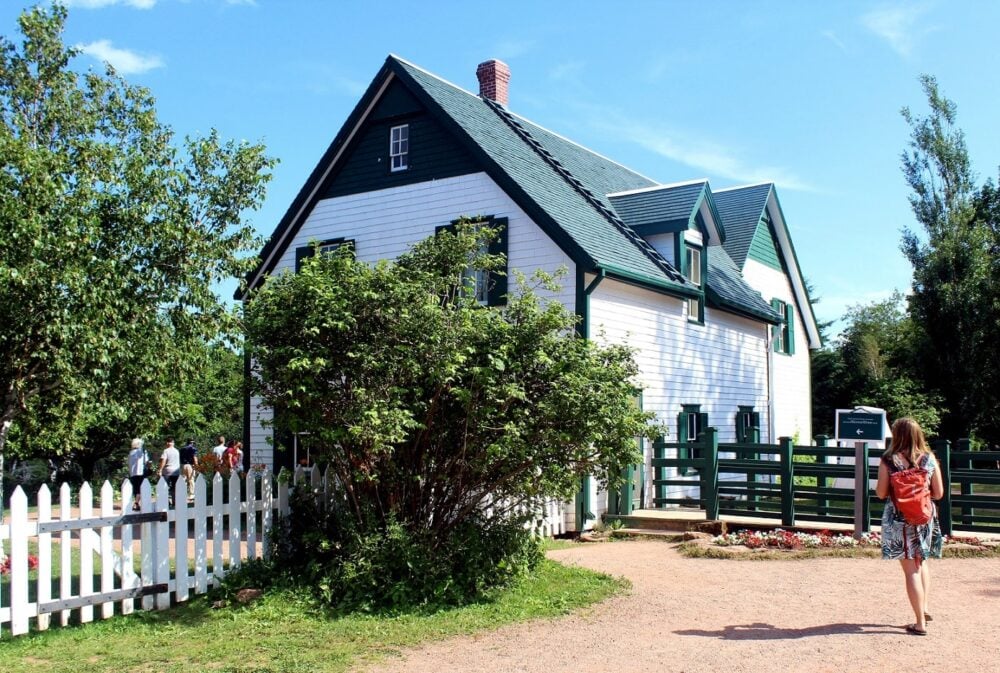
Things to Do on Prince Edward Island
- One of the highlights of visiting PEI has to be the white sand beaches of Prince Edward Island National Park. Situated along the northern coast of the Island, there are various access points to this national park.
- A quieter sections of the park is Greenwich , featuring unique dune formations.
- For culture, head to quaint Charlottetown and discover the birthplace of Canadian confederation. Consider a guided bus tour to learn more about the city’s history from a local guide ( walking tour also available)
- Back towards the coast, visit the the house that inspired Anne of Green Gables in Cavendish
Where to stay on Prince Edward Island
1 West Inn Waterfront – Beautiful location in central Charlottetown
Around the Sea Rotating House – Unique property by the ocean not far from Cavendish
Prince Edward Island National Park – Camping and oTENTiks available at two large waterside campgrounds
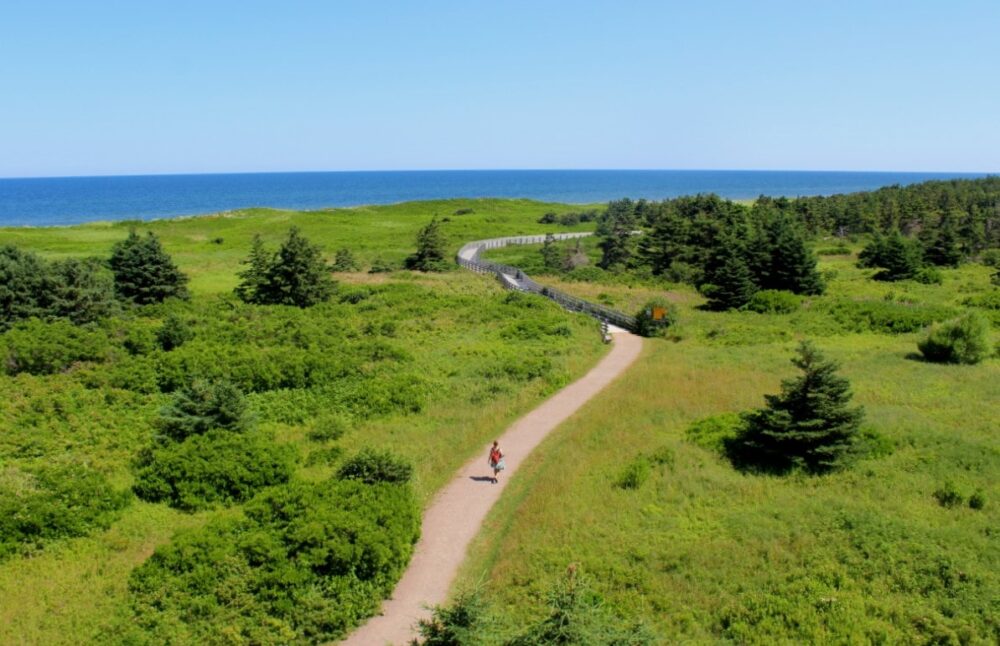
New Brunswick is Canada’s only officially bilingual province and is best known for its coastal attractions.
The Bay of Fundy experiences the highest tides in the world and is simply awe inspiring.
On Day 14, leisurely drive back to Halifax to finish your epic East Coast Canada road trip.
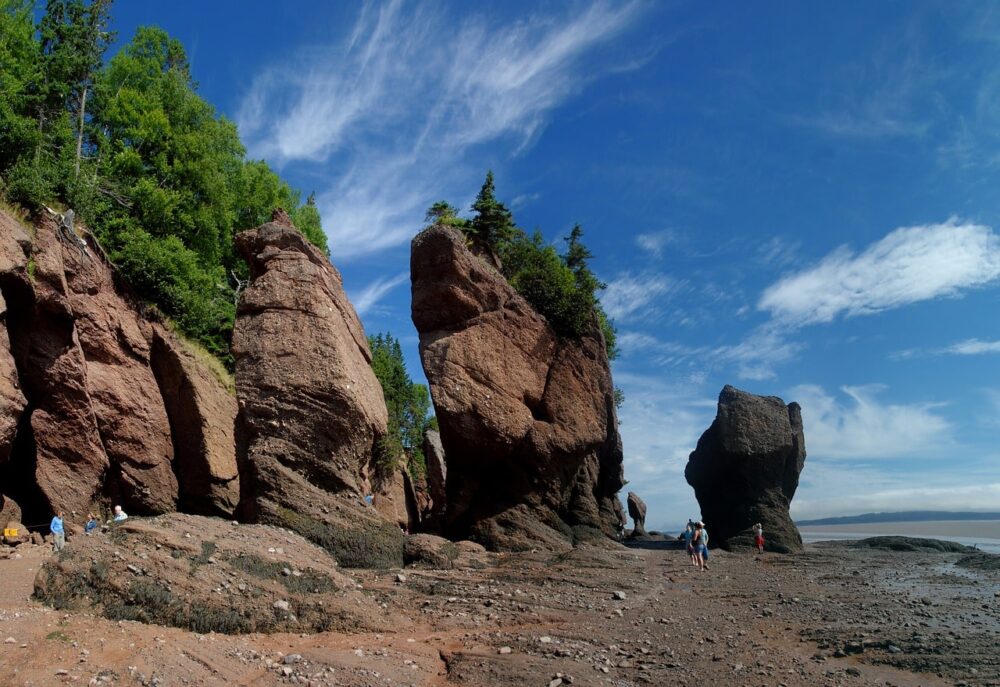
Things to Do in New Brunswick
- After crossing the Confederation Bridge from Prince Edward Island, check out the Giant Lobster in Shediac (welcome to Lobster country!) and have a swim at beautiful Parlee Beach, home of the warmest saltwater in Canada.
- Cape Enrage is your next stop. Take in the panoramic views of the Bay of Fundy and visit the light station that has been in operation since 1838.
- Just a little further south is Hopewell Rocks , where it is easy to see the power of the huge Bay of Fundy tides (the world’s biggest). Time it right, and you can walk on the ocean floor next to the unique ‘flower pot’ rocks.
- Fundy National Park is something of a condensed version of New Brunswick, offering both dramatic coastal scenery and dense forest landscapes to explore. Take a day hike in the woods or along the beach. Check out the cute coastal village of Alma and cross an iconic covered bridge at Point Wolfe.
Where to stay in New Brunswick
1854, the Maplegrove Inn – Great location half way between Hopewell Rocks and Fundy National Park
The Artisan Suites – Close to Hopewell Rocks, highly rated on Booking.com
Fundy National Park – Choice between four front country campgrounds plus wilderness campsites
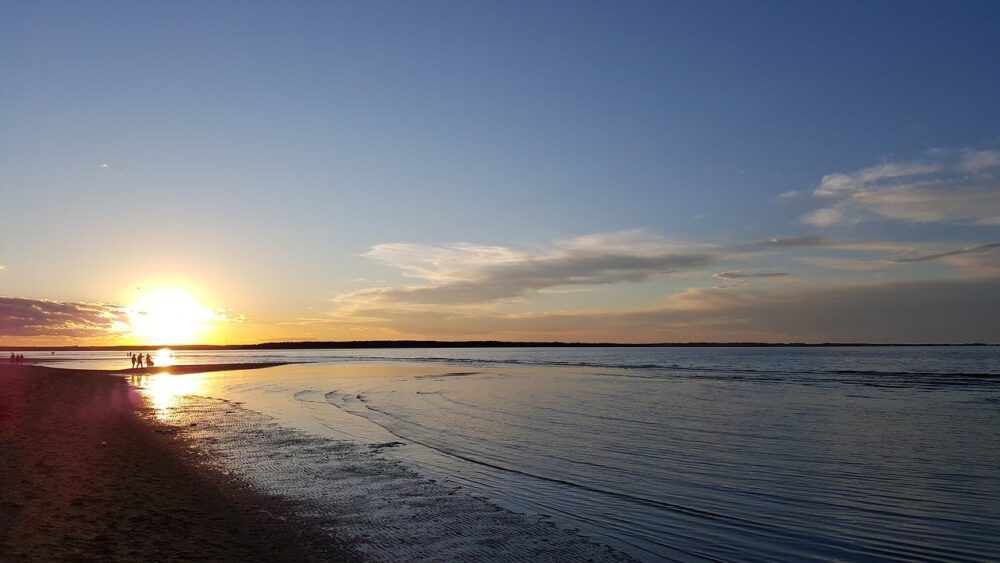
Four Week Beyond the Beaten Path East Coast Canada Road Trip
Road trip length: 5000km
Ideal length of time: Four weeks (28-30 days) minimum, six weeks is more relaxed
This road trip is ideal if: You want to see beyond the highlights of the East coast Canada, get a deeper experience of the area and also get away from the crowds. This offers a little bit of everything for a well rounded East Coast Canada road trip at a slower pace than the two week itinerary.
Road trip overview: The required month may sound exaggerated but trust me, it is needed to truly give justice to this beautiful area of the world. Included in this East coast Canada road trip is hiking, paddling, panoramic lookouts, caves, boardwalks, beaches, historic sites and offbeat places.
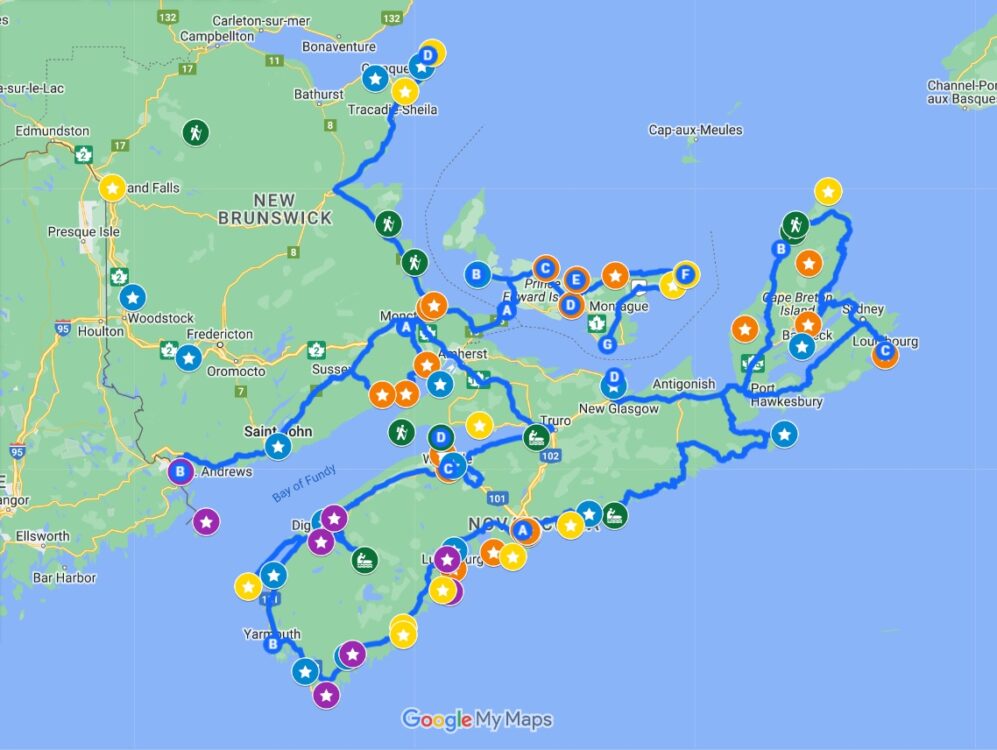
In addition to the previously mentioned sights, consider adding these destinations and activities to your itinerary –
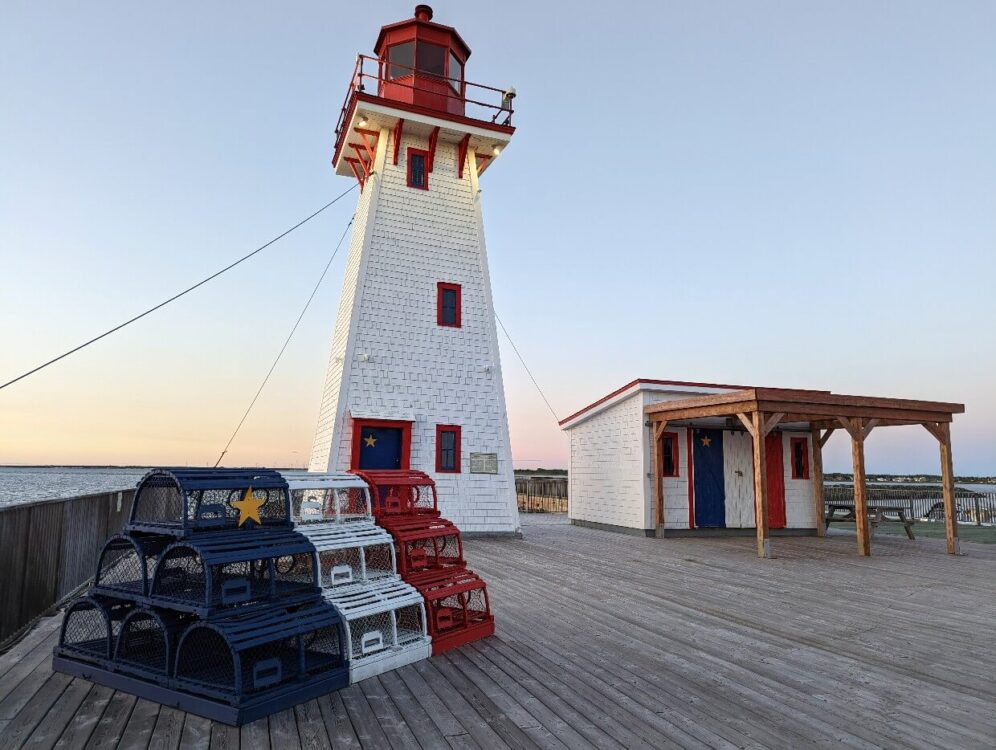
- Choose between exploring the lagoons and forests of Kouchibouguac National Park or the Irving Eco-Centre coastal boardwalk at Boutouche. Or just do both!
- Head to northeast New Brunswick and take a drive on the Acadian Coastal Drive and discover a culture that many people have never heard about. Travel through quiet fishing towns, marsh, beaches and peat moss, spotting the distinctive Acadian tricolour flag (with yellow Stella Maris star) as you go.
- Be sure to check out the Village Historique Acadian which brings the 19th century to life with costumed actors, period food and interactive exhibits.
- Inland from the Acadian Peninsula is Mount Carleton Provincial Park , home of Atlantic Canada’s highest mountains. New Brunswick’s 5.8km Mount Sagamook Trail offers views of 10 million trees and the highest peak, Mount Carleton (820m).
- Make a stop at seaside resort town St Andrews By the Sea for waterfront cycling trails, cute boutiques, vibrant art galleries and general genteel feel.

In addition to the previously mentioned sights on the two week East Coast Canada road trip itinerary, consider adding these destinations and activities to your route –
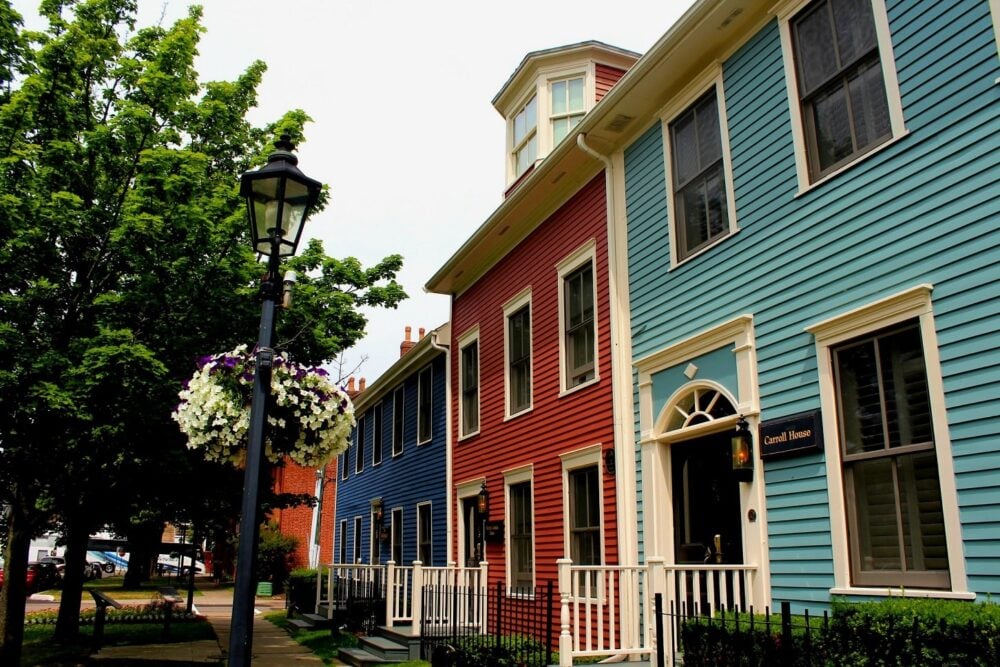
- Travel to Prince Edward Island’s most easterly point via gorgeous beaches and laid back country roads. Basin Head is a particular highlight, nicknamed the ‘singing sands’ beach. No, really, the sand actually squeaks when you walk on it! The water is also fairly warm here, making it an ideal place to have a beach day.
- Over on PEI’s west coast, explore more about Acadian culture at the Village Musical Acadien in Abram Village. There are two free music shows every day in the summer, performed by local Acadian artists. You can even try some authentic Acadian cuisine too, available in the on-site cafe at very reasonable prices.
- When driving around the Island, be sure to keep an eye out for lobster suppers being served. These are a PEI tradition and usually include chowder, mussels, lobster, potatoes, bread rolls, salad and a dessert. The latter is often a piece of home baked lemon meringue pie.
For the ultimate beyond the beaten path adventure, consider a side trip to the gorgeous Magdalen Islands . Part of Quebec, this interconnected group of tiny islands sits in the Gulf of St Lawrence, a five hour ferry from Souris
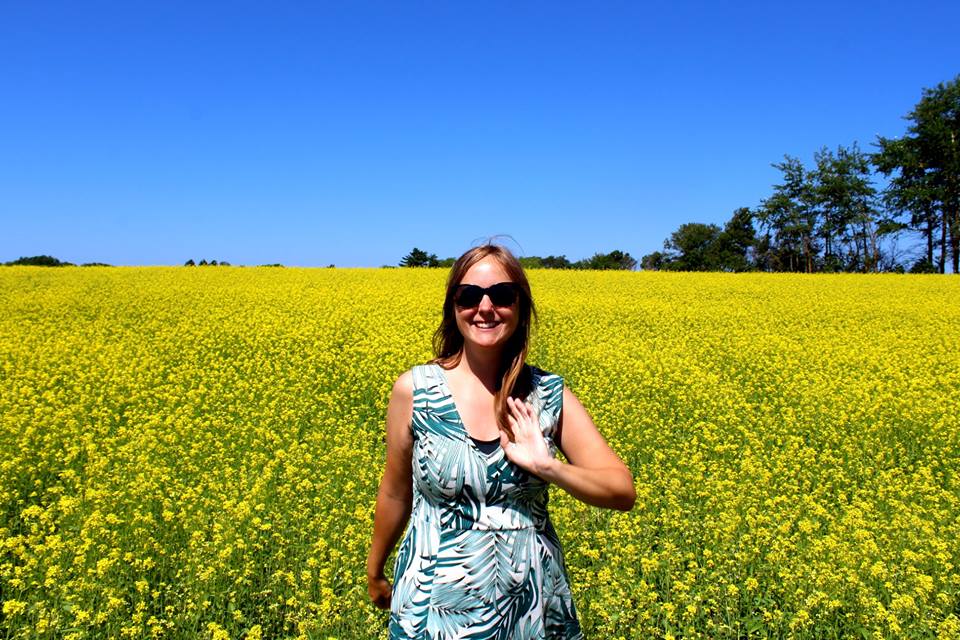
Cape Breton is a surprisingly large island. It is easy to fill road trip days with historical sites, day hikes, live music, local cuisine and lookouts.
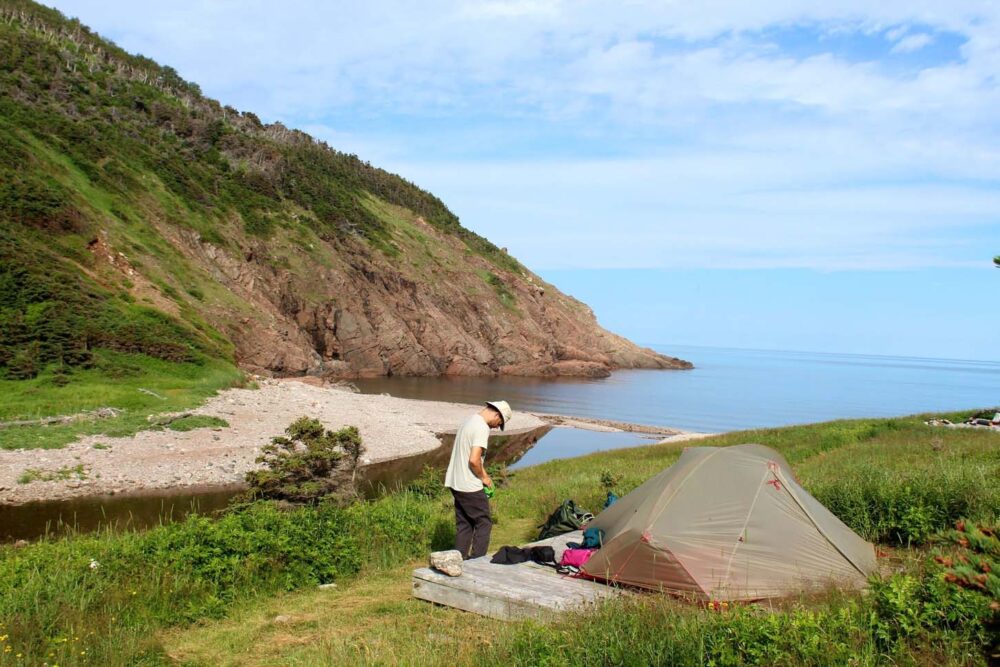
- One of the day hikes you should not miss is the Skyline Trail on the Cabot Trail. This 6.5km out and back route culminates in epic ocean and highland panoramas. Moose are often seen in the area so have your camera ready.
- Consider camping at Cape Breton Highlands National Park’s only wilderness campground at Fishing Cove. This waterfront campground is reached by the short but sweet 12km return Fishing Cove trail.
- The adventurous should definitely not miss a detour to Meat Cove , almost at the very northern tip of Cape Breton Island. A rustic campground perches on a cliff above the ocean, providing panoramic views along the rugged coast and onto the pebble beach below.
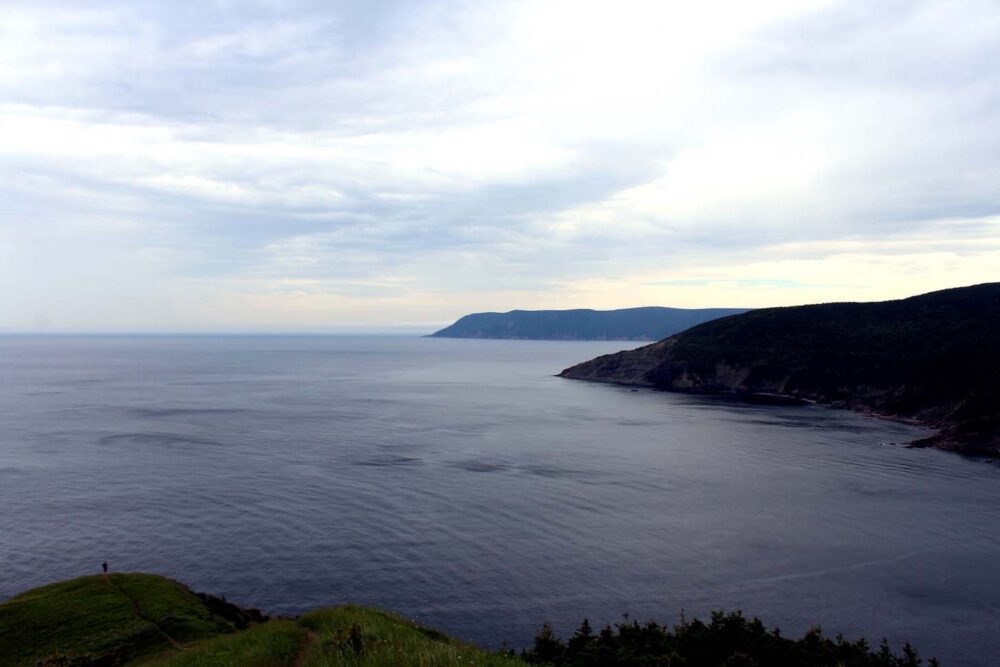
Mainland Nova Scotia has an incredible amount to offer travellers who are looking to go beyond the beaten path.
The easiest way to do so is to take a circular drive from Halifax along the Southern Coast and then back up along the Bay of Fundy, exploring the bountiful Annapolis Valley on the way back to the city.
Here are some of my top recommendations along this circular route of mainland Nova Scotia, plus a few others within each reach. For even more suggestions, check the map above.

Interesting towns
- Only accessible via two car ferries (unless you happen to have a boat that is), Brier Island sits at the end of a long peninsula striking out into the Bay of Fundy. This isolation provides a wonderful environment for migrating birds and whales watching. Nature lovers looking to get firmly off the beaten track will love Brier Island.
- Hidden just off the highway in a river valley, Bear River is a tiny tidal village with a distinctive feature. Many of the rustic houses and shops are on stilts. It’s a lovely little place for a drive or a walk, perhaps even a tasting at North America’s oldest winery .
- When driving along Nova Scotia’s coastline, be sure to leave the main highway and explore the small roads connecting tiny fishing communities. Cape Sable Island was a favourite and we also loved the LaHave Islands area (especially the local fishing museum in the latter). And, of course, seafood is usually plentiful in these areas.
Read More: Brier Island, Nova Scotia’s Hidden Gem

Outdoor adventure
- The Cape Chignecto Coastal Trail is the Maritimes’ premiere backpacking route. The 51km circular trail leads hikers along the Bay of Fundy to the top of towering cliffs and dramatic rock formations, to sandy beaches and rocky coves tinged with red. You’d definitely need to extend your four week East Coast Canada road trip to include this hike
- Much like the Skyline Trail on Cape Breton, the Cape Split trail (16km return) has a similarly dramatic finale, with the rugged tip of the cape falling into the Bay of Fundy
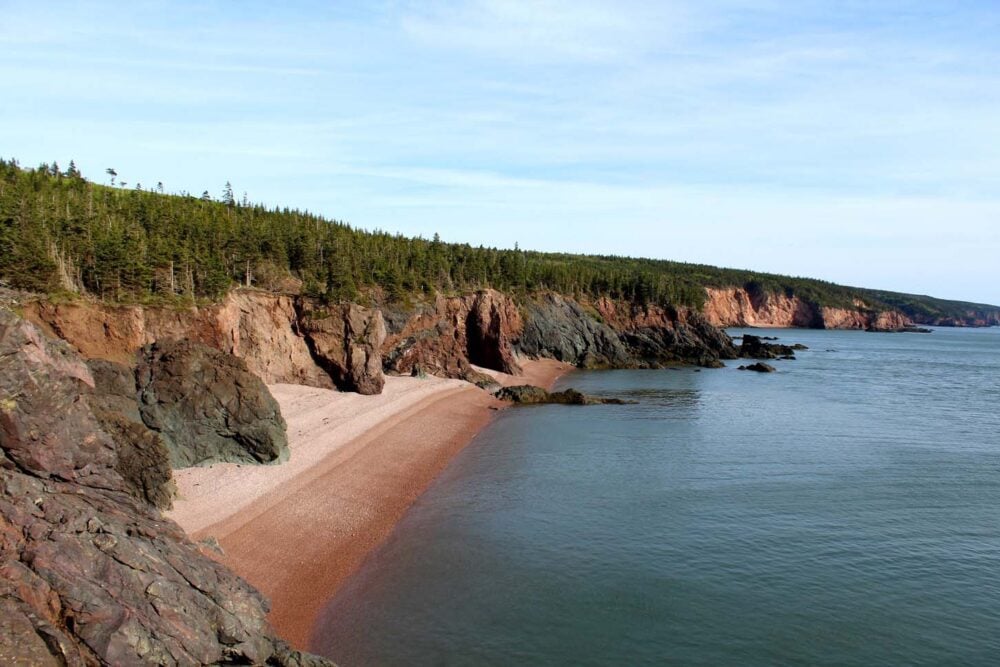
- The rugged coastline of Nova Scotia is particularly interesting for paddling, especially when as untouched as the 100 Wild Islands region on the Eastern Shore
- Inland, canoeists can explore quiet, interconnecting areas of lakes and rivers. The most easily accessible in Kejimkujik National Park , where canoe rentals and guided tours are also available
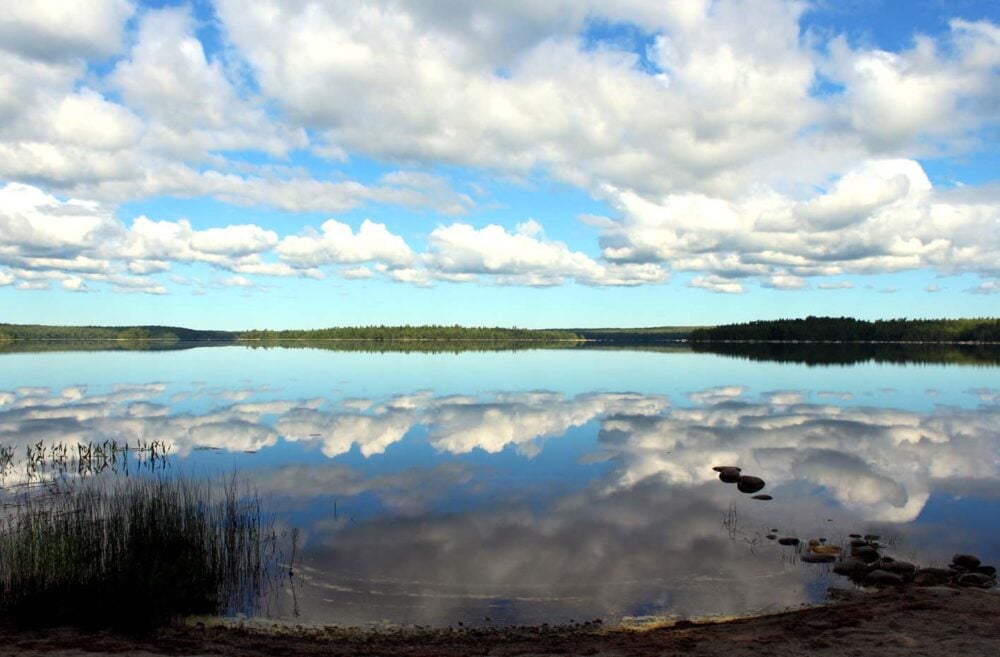
History and culture
- Found at the very end of Nova Scotia’s Eastern Shore, Canso is the site of the oldest fishing port in North America. Due to the strategically important location, the area was subject to numerous raids and used for as a base for preparation in the 18th century.
- The powerful tides of the Bay of Fundy continually reveal new geological wonders, including an incredible variety of fossils. Geologists have long been flocking to the Joggins Cliffs to make new discoveries, even before the fossil of the earliest known reptile (the Hylonomus lyelli) was found here.
- A visit to the Grand-Pré National Historic Site in Wolfville is an essential stop to help comprehend the devastation of the Acadian deportation.
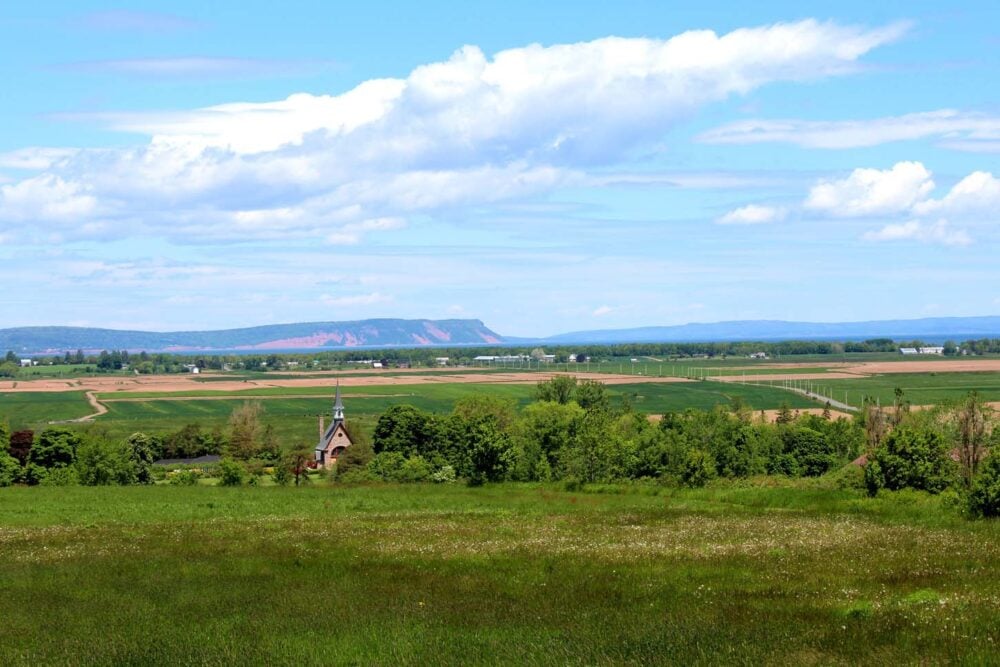
- The Port-Royal National Historic Site with replica Habitation building recreates France’s first settlement in North America. Nearby Annapolis Royal played a pivotal role during the early colonisation of Canada. The town still features many historic buildings and a fort.
- Located on Nova Scotia’s South Shore is the Black Loyalist Museum , one of the most eye opening places we visited anywhere on Canada’s East Coast.
- Closer to Halifax is the Oak Island Visitor Centre , a must visit for anyone fascinated by the famed ‘money pit’ on this tiny island (reservation required tours).
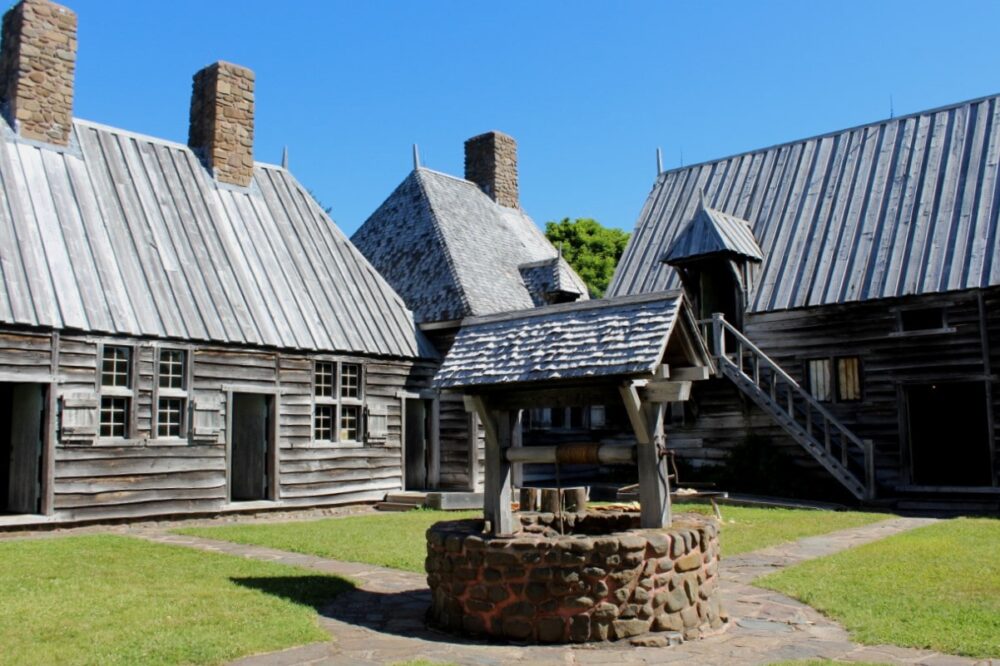
General road trip advice for travelling Canada’s East Coast
Slow down . In general, the pace of life on the East Coast is relaxed.
- Though it may be tempting to try and rush around to see everything, take a lesson from the locals and take things slow.
- This is also important to remember when driving. While there are some high speed highways, many of the roads on the East Coast are winding and fairly narrow coastal routes.
- Short on time? If you only have a week to travel Canada’s East Coast, consider limiting your trip to just one province or two at a maximum. You’ll probably have way more fun not rushing about!
- Large animals (such as moose) may be on the road at any time, but more likely at dusk and dawn.
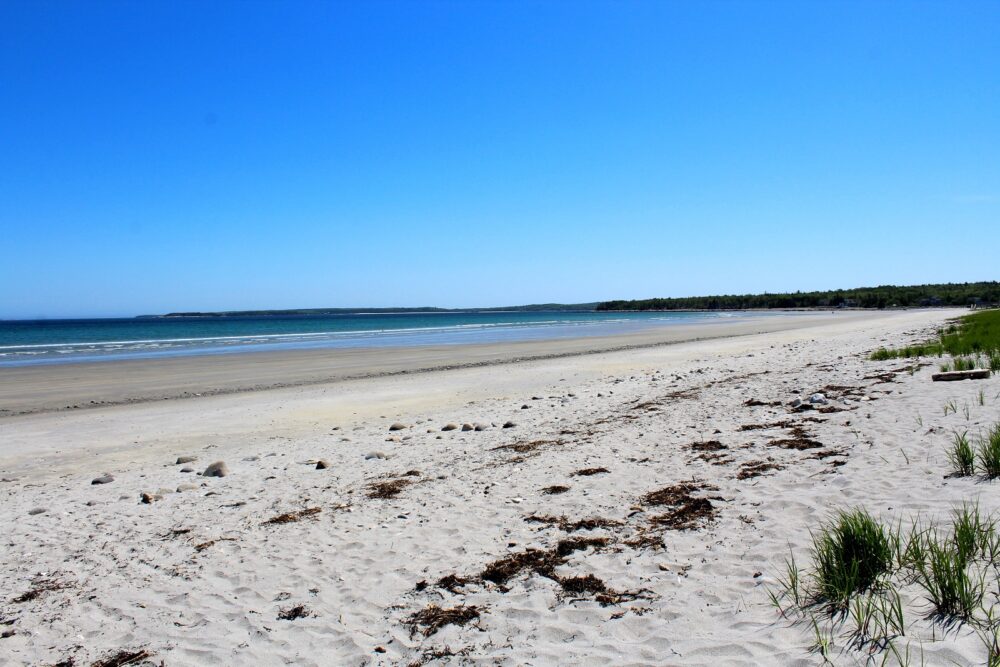
The locals are friendly. It may sound like something strange to point out but most Canadians on the East Coast are genuinely considerate and obliging folks. You may experience this in a few different ways.
- We were regularly offered warm welcomes, road trip advice, destination tips and even free food and overnight hosting.
- Something else we noticed was vehicle drivers stopping to let pedestrians (or other vehicles) cross roads, even in busy places.
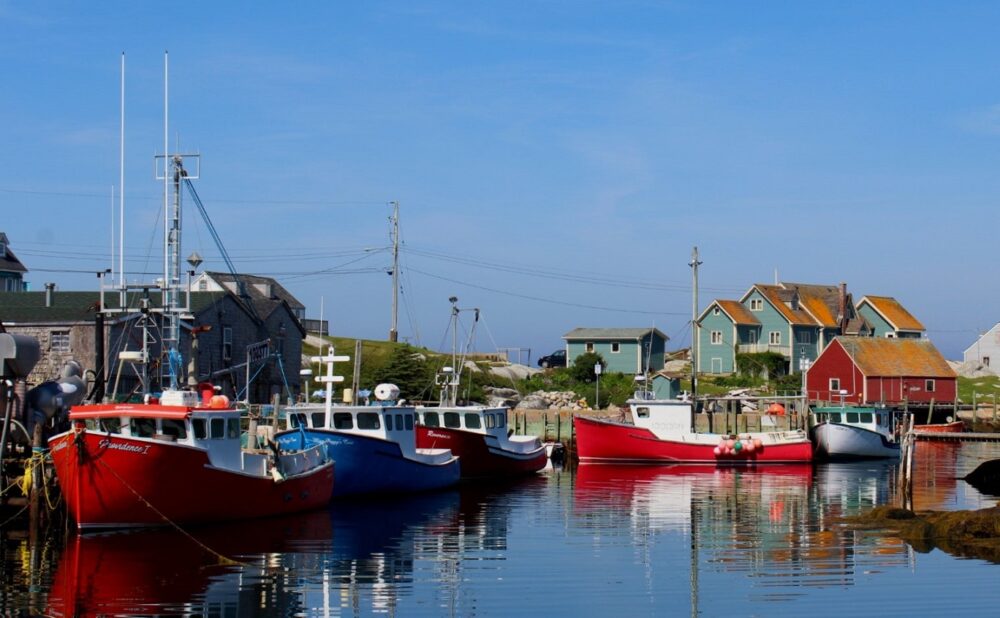
The peak season is short. The main tourism season on Canada’s East Coast is only two months long – the summer months of July and August.
- Even then, in some areas of Nova Scotia only five weeks of that period (late July and August) is actually considered ‘the busy time.’
- This does mean that June and September are great months to visit with generally good weather and fewer visitors. On the other hand, some attractions and accommodation will not be open yet.
- If you’re planning to camp in any of the East coast National Parks, make a reservation early.
Read Next: 27+ of the Best Beaches in Nova Scotia, Canada
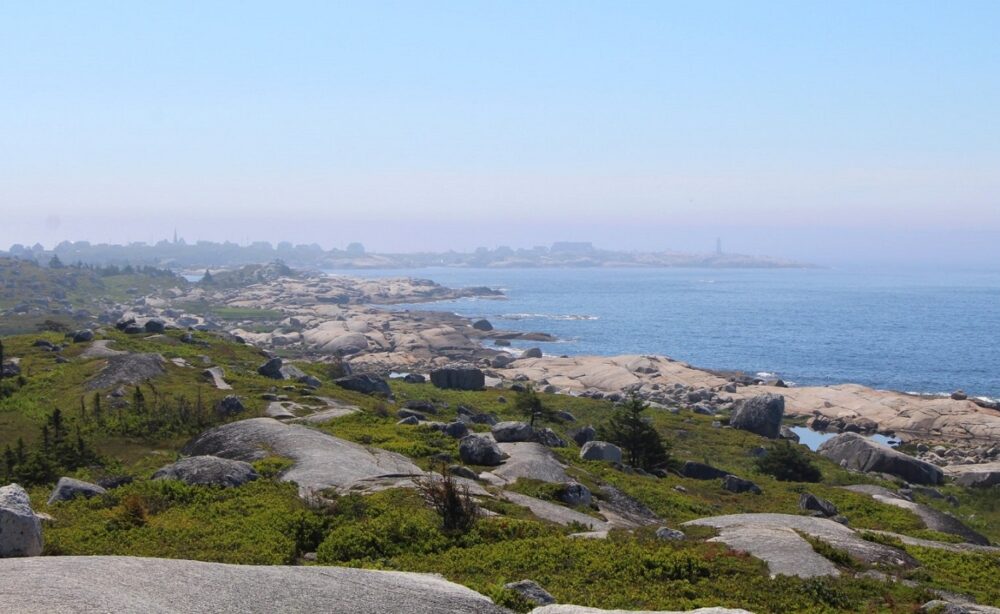
Essential items to bring on your East Coast Canada road trip
- Bug spray. The East Coast is a favourite with mosquitoes. Alongside insect repellent , it is also a good idea to bring or buy some kind of after bite lotion too . It’s never fun to be driven crazy with itching. If camping, I’d suggest a Thermacell repellent applicance or at least some mosquito coils to burn
- A Parks Canada Discovery Pass. To get the most out of your visit, I’d recommend getting Parks Canada Discovery Pass. This offers free entry into all National Historic Sites and National Parks in the Maritimes. It pays for itself pretty quickly when travelling Canada’s East Coast.
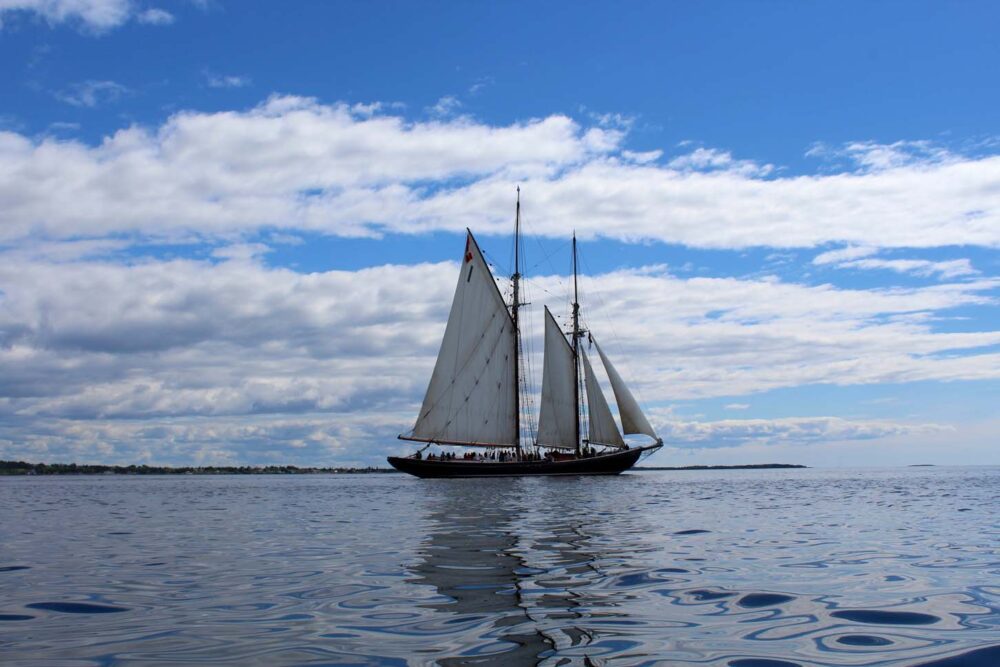
- Backroad Mapbooks . The most comprehensive guides I have found for navigation and travelling across East coast Canada are the Backroad Mapbooks series. They feature ALL the local roads (gravel ones included) as well as trails, camping spots, must see sights and more. The Nova Scotia edition is particularly useful.
- Ferry or bridge fares. The Confederation Bridge is located towards the western side of Prince Edward Island and crosses over to eastern New Brunswick. The ferry to PEI leaves from just north of Pictou in Nova Scotia to Wood Islands, on the western side of PEI. Ferry and bridge fares are only charged when leaving Prince Edward Island by whichever means you choose (the bridge is cheaper).
- Canadian dollars. Some of the more remote places in the Maritimes will only accept cash. My second related piece of advice may seem more obvious, but we noticed quite a few American visitors trying to use American dollars in Canada. A few shops will take them begrudgingly, but trust me, you won’t get good value for money at all.

History and Culture of the Canadian Maritimes
The history of the Maritime provinces is probably more varied than you may expect. Here’s a brief lowdown; it will undoubtedly help put some of the experiences on your East Coast Canada road trip in perspective.
The Mi’kmaq were the predominant residents on the East Coast until they were joined by the French in the early 17th century.
Fertile areas in Nova Scotia were quickly claimed by French immigrants. They called the land Acadie ( idyllic place) and themselves Acadian . The British eventually deported the Acadians, fearing their tentative alliance with the French ( click to read more about Acadians )
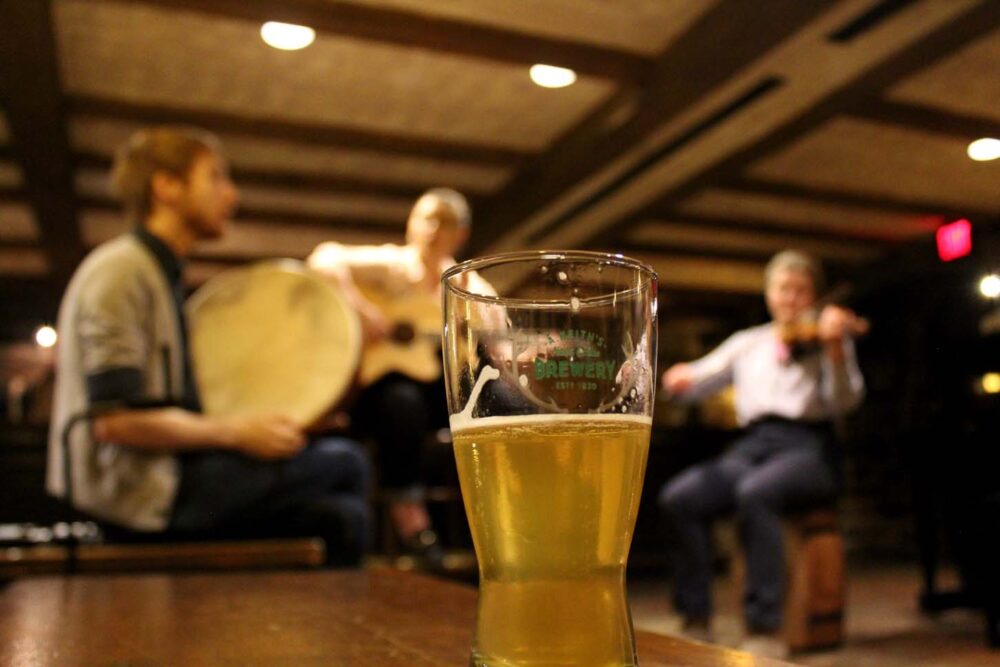
The French and British fought over this land for over a century, with the latter eventually succeeding to drive the other out.
The revolution in America brought thousands of Loyalists to the shores of the Canada’s East Coast, including a large continent of former black slaves (Black Loyalists) , who were promised freedom in exchange for fighting for the British.
Scottish and Irish immigrants arrived in huge numbers in the 19th century, attempting to escape famine, overcrowding and discrimination. The Gaelic influence is particularly obvious in Halifax and around Cape Breton – think bagpipes, fiddles, tartan, whiskey, céilidhs and bilingual signs.
Planning an East Coast Canada road trip? Tell me your plans in the comments below!
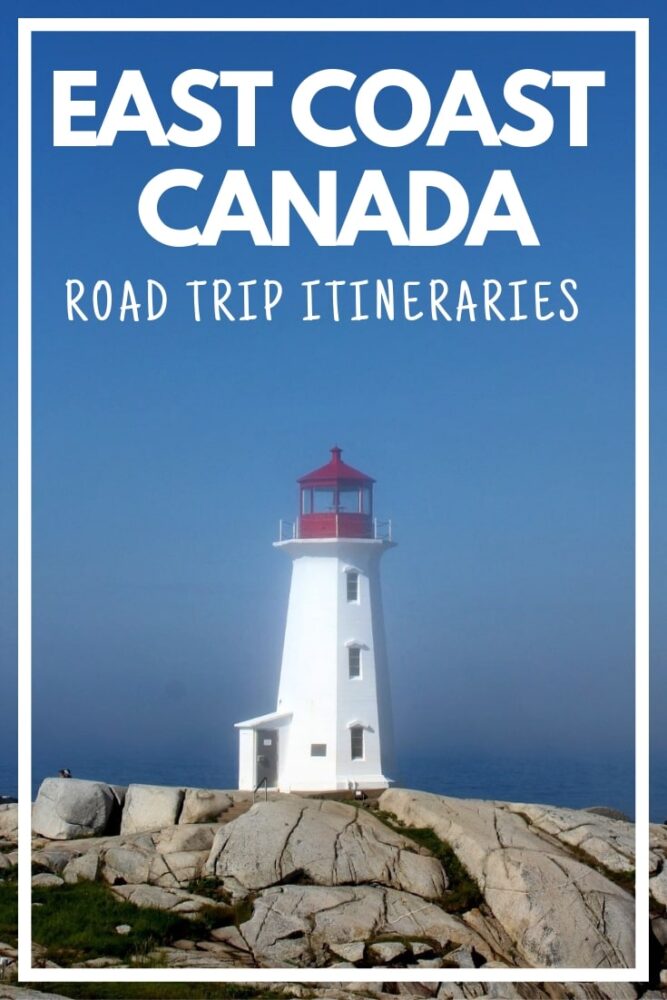
Adventure in your inbox
Subscribe to our monthly email newsletter and receive a round-up of our latest outdoor adventures plus other exciting beyond the beaten path destinations
We never share your information with third parties and will protect it in accordance with our Privacy Policy
Check out these recently published posts:
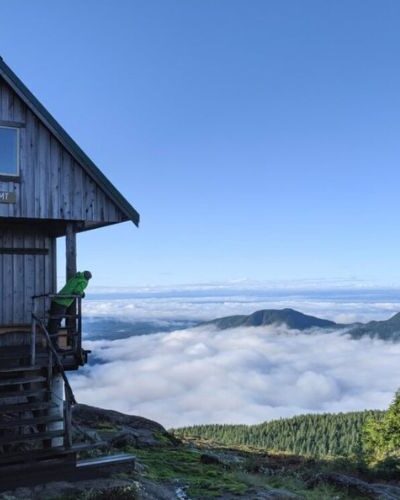
Sunshine Coast Trail Huts Guide: The Best Places to Stay
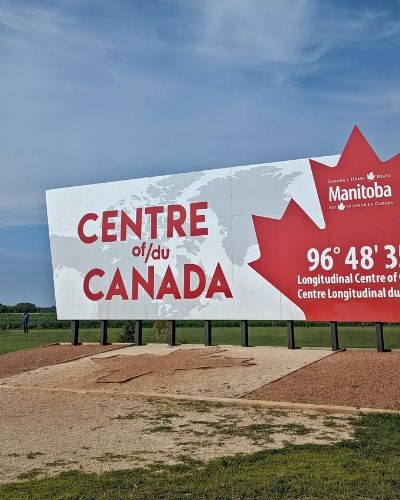
Toronto to Vancouver Road Trip: 24+ Great Places to Stop
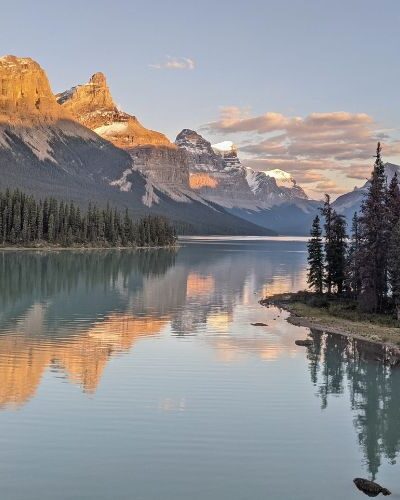
Spirit Island: Complete Guide with Map, Paddling Details, Boat Tour + More
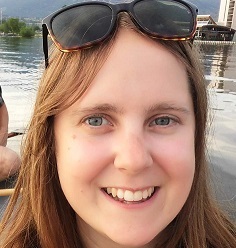
One half of the Canadian/British couple behind Off Track Travel, Gemma is happiest when hiking on the trail or planning the next big travel adventure. JR and Gemma are currently based in the beautiful Okanagan Valley, British Columbia, Canada
Monday 29th of January 2024
Really helpful ideas and tips. Planning a 3-4 week trip fall of 2024 with 4 other sisters (ages 51-74). Mostly interested in seeing how people live, quaint villages, trying seafood everywhere. Should be interesting and lots of laughs (if we don't kill each other). Thanks for sharing!
Hi Jackie, sounds like a fun trip! I hope you have a great time. I'm glad you found this guide useful (and let me know!)
Krista Hall
Tuesday 15th of August 2023
Looking to spend 4-5 days in PEI or New Brunswick with four Seniors(me included). Any thoughts or suggestions mid Septmeber 2023?Thanks so much, Krista Maryland USA
Friday 18th of August 2023
Hope you have a good trip! I suggest three days in New Brunswick and three on PEI in the two week itinerary, so for five days, I'd suggest three on PEI and two on New Brunswick. I personally think PEI has more to offer and with three days, you'll be on 'PEI time' for longer! I'd stay along PEI's northern coast and explore from there. In New Brunswick, I'd stay along the Bay of Fundy coastline.
Monday 15th of May 2023
Hello Gemma My husband and I plan to do the east coast, for 4 weeks, leaving the Toronto area around May 29th. We have a 45 foot RV. Can we do your 4 week trip, in a 45 foot RV? Look forward to hearing from you!
Monday 22nd of May 2023
That is a good question. We have never travelled in anything close to a 45 foot RV so I wouldn't want to mislead you or give you inaccurate information. I know for sure that many people travel the Cabot Trail (on Cape Breton Island) in RVs, including larger ones.
Choosing campgrounds that would accommodation your rig is, of course, very important. I don't believe you would be able to stay at Meat Cove Campground, as mentioned in this itinerary (it is very compact). Brier Island does not have a campground.
The national park attractions usually have larger parking lots with space for RVs, so I would prioritise them. Some hiking trails on Cape Breton Island will be inaccessible due to the smaller lots.
Sunday 16th of April 2023
I would like a 3 week rv itinerary for 2 in a 20 fy camper with our small dog starting mid august to the end of September.
Wednesday 19th of April 2023
Sounds like a great trip! We don't currently put together custom itineraries but I would suggest looking at our 2 week itinerary as mentioned in this post and then choosing 2/3 places you'd like to spend additional time at.
Sunday 26th of March 2023
Hi Gemma I am looking to do a road trip from Peterborough Ontario to the east coast. leaving around the 14th of May to mid June. Any suggestions?
thank you for your time.
Tuesday 4th of April 2023
@Lori, it seems that Gemma is helping a lot of us.
I would be interested in that information as well.
From Toronto for a month. Be back in Toronto fist week of June.
Tuesday 28th of March 2023
I received the email from you and have now replied :)
Plan Your Trip
Travel tips & resources for your visit, getting here, getting around, border crossing, know the ins and outs of crossing the border, accessibility, guide to parking in niagara falls, additional information, check out our visitor's guide.

How to Plan an Epic East Coast Canada Road Trip
By: Author Lora Pope
Posted on March 7, 2024
This post may contain affiliate links. By clicking and making a purchase through the links, I earn a small commission at no extra cost to you. See my disclaimer for more information. This and display ads allow me to keep the site up to date and give back .
Planning an east coast Canada road trip? Let me help! I grew up in St. John’s, Newfoundland, and lived in New Brunswick for years. I’ve road-tripped the East Coast more times than I can count !
It’s one of my favorite parts of the world, so I created this guide to share all my favorite hidden gems with you.
While not as popular to visit as the Canadian Rockies, an East Coast Canada road trip should not be overlooked.
Humpback whales dancing below towering cliffs, fresh seafood, epic hiking trails, and the friendliest people you’ll ever meet are just some of the reasons to plan an eastern Canada road trip.
This guide will share all the best places to visit on an East Coast of Canada road trip to help you maximize your time.
It’s made for outdoor lovers and packed with incredible nature and wildlife experiences such as coastal hiking trails, boat tours, and wildlife watching.
The truth is, there’s no such thing as a ‘perfect’ itinerary – It entirely depends on the time you have available and the activities that interest you most.
You would need at least two months to road trip around all the places I’ve suggested below. But don’t fret if you don’t have that much time – simply choose the ones that interest you most.
I’ve also included some sample routes at the end to help you create a perfect Canadian East Coast road trip itinerary.
Having a car is the best way to explore Eastern Canada! I use and love Rentalcars.com to find the best deals on car rentals in Canada.
New Brunswick Road Trip
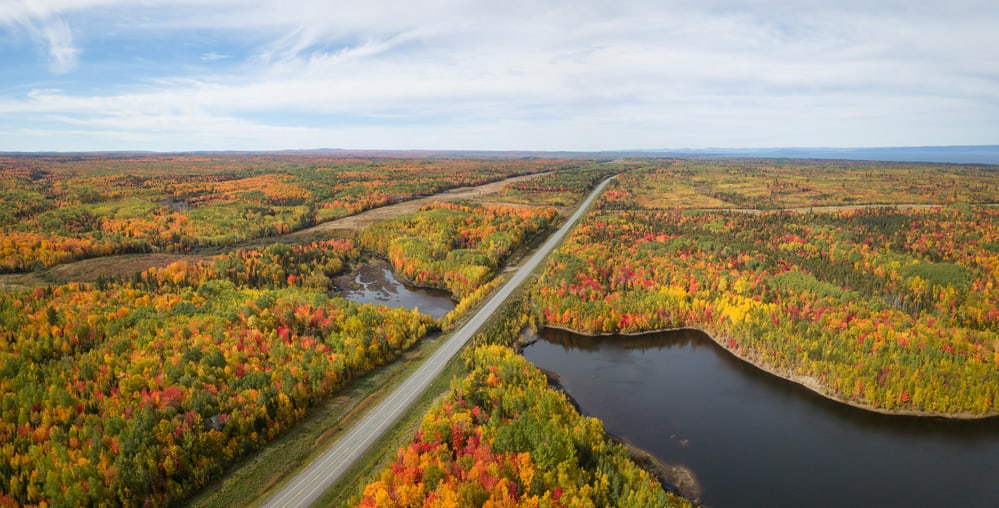
Hooray, you’ve made it to your first Maritime province! Many people call New Brunswick a ‘drive-through’ province, but after living here for 18 months, I couldn’t disagree more.
New Brunswick has plenty to see, and it should be part of your East Coast Canada itinerary.
Québec City to Fredericton (593 KM)
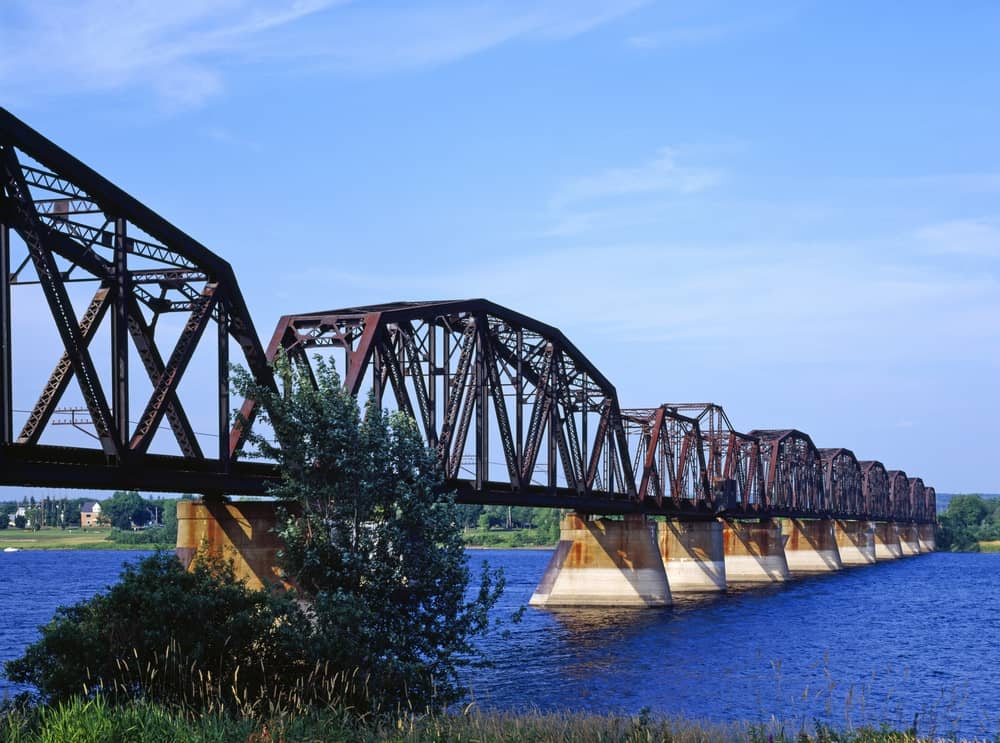
Coming from Quebec, your first destination will be the capital of New Brunswick and my favorite city in the province, Fredericton.
Driving from Québec City to Fredericton takes an entire day, so plan to spend a night or two here to enjoy the city’s offerings.
🏠 Staying overnight in Fredericton? The Carriage House Inn is a super cozy, beautiful, and authentic old Victorian Downtown House to retreat after a day of exploring the city.
Visit the Garrison District, which hosts summer outdoor concerts, movie nights, and guided history tours. Then, walk across the Fredericton Railway Bridge.
No longer a train route, the bridge has become a sanctuary for pedestrians and cyclists. You can get spectacular views of the city and Saint John River below from it.
In the evening, enjoy a cold brew at one of the city’s craft breweries.
🚶♀️If you’re short on time, this two-hour historical tour of Fredericton is a great way to get acquainted with the city.
Fredericton to Saint John (112 KM)
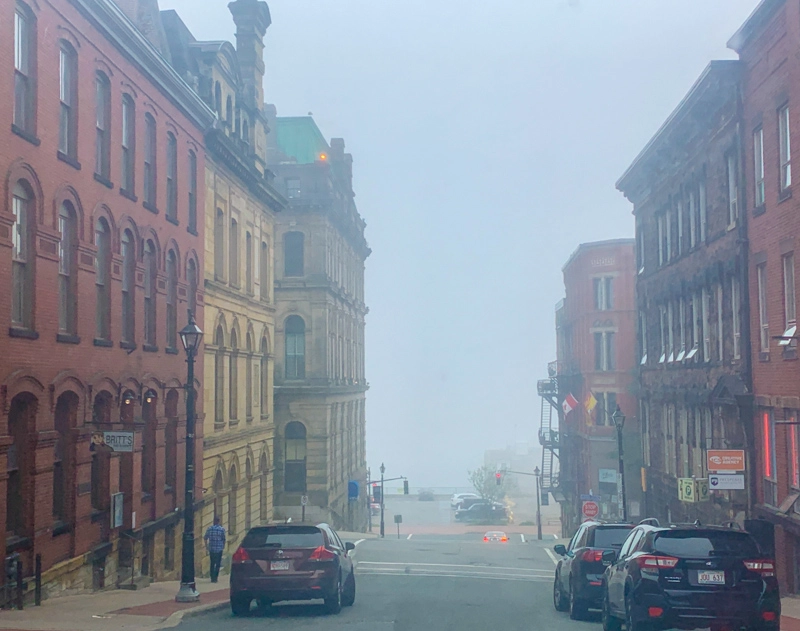
After a night in Fredericton, head to Saint John ( not to be confused with St. John’s, Newfoundland ).
It’s just an hour’s drive to reach this charming coastal town. You can either stop in for lunch or spend the night in town.
The Chateau Saint John offers tastefully appointed rooms in a primate location for exploring the city’s historic landmarks.
One fun thing to do in Saint John is to take a boat cruise to see the reversing falls, a unique natural phenomenon where the Bay of Fundy collides with the Saint John River.
Or you can join this walking tour of Saint Johns to discover the city’s most interesting streets and central market – the oldest continuing farmers market in Canada!
Saint John to Fundy National Park of Canada (111 km)
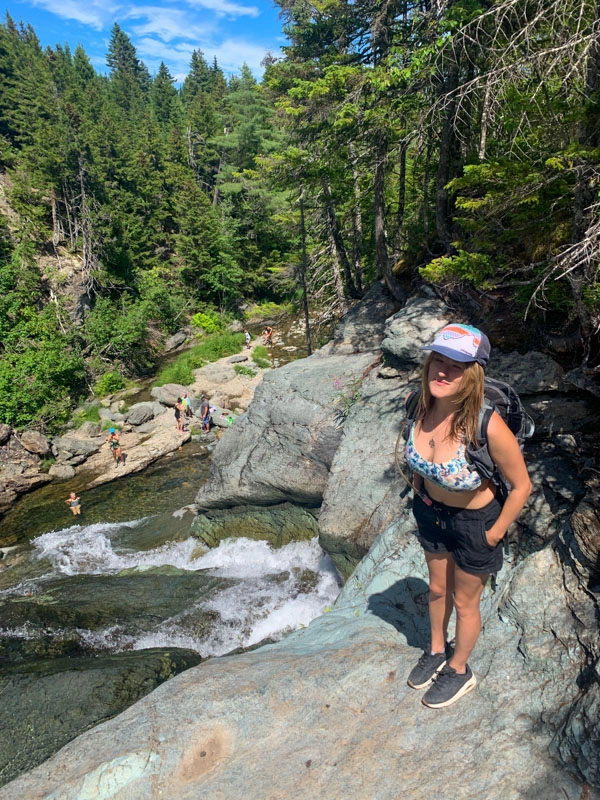
From Saint John, it’s an easy hour’s drive to my favorite place in New Brunswick, Fundy National Park .
You’ll want to spend at least two days here, camping or in a hotel near the park. It’s a paradise for hikers and waterfall chasers – I love hiking here during the summer time.
Fundy National Park to Hopewell Rocks (45km)
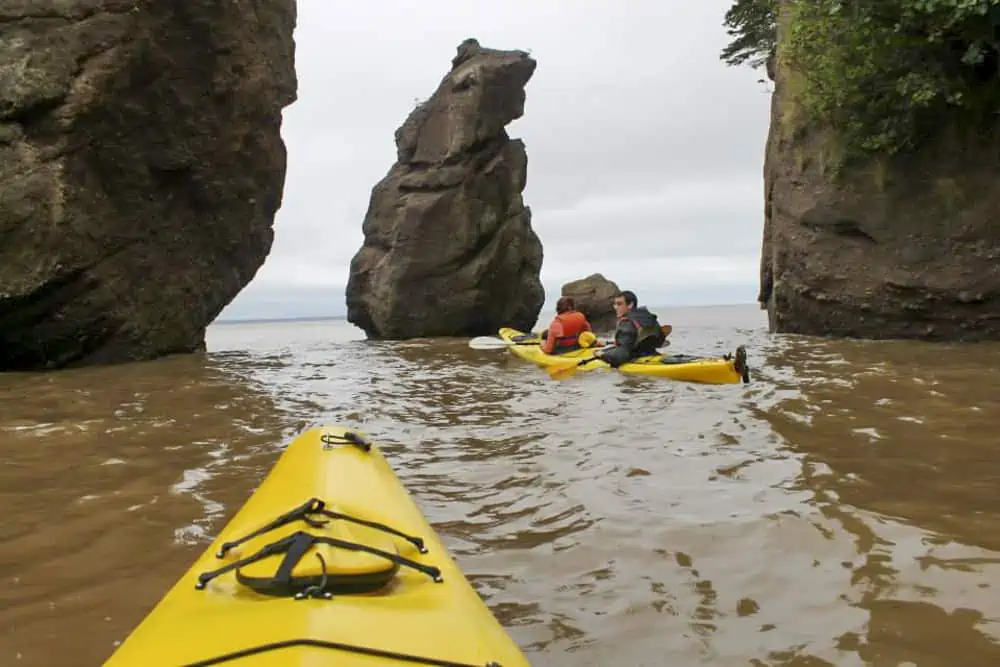
One of New Brunswick’s most famous attractions is Hopewell Rocks , home to the world’s highest tides . The tide rises and falls 40 feet or so – twice daily!
To fully appreciate this phenomenon, visit Hopewell Rocks at low tide to walk around on the ocean floor and see the unique rock formations up close. At high tide, take an ocean kayak tour. It was incredible to see the difference in just one day!
🎟️ Save time and get skip-the-line tickets to Hopewell Rocks here
Hopewell Rocks to Moncton (31 km)
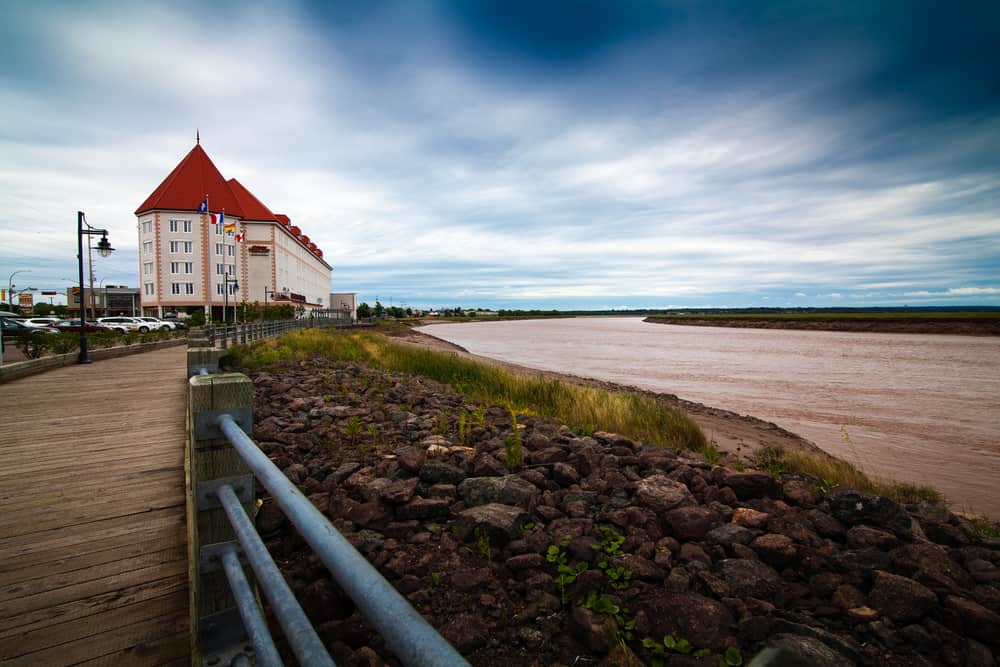
After leaving Hopewell Rocks, take a half-hour drive to Moncton, New Brunswick’s most populous city.
You can spend the night here or stop for a few hours. An excellent spot for lunch is the Tide and Boar Gastropub, one of my favorite restaurants in New Brunswick.
Sray in the middle of Moncton’s entertainment district at this gorgeous boutique hotel. You’ll be steps away from the city’s best restaurants, entertainment, and bars.
While in Moncton, be sure to take a drive up Magnetic Hill. Park at the bottom of the hill, put your car in neutral, and it will start reversing up the hill on its own. It’s magic! Okay, really, it’s just an illusion caused by the landscape, but it’s a cool thing to experience, and kids will love it. There is also a water park near Magnetic Hill.
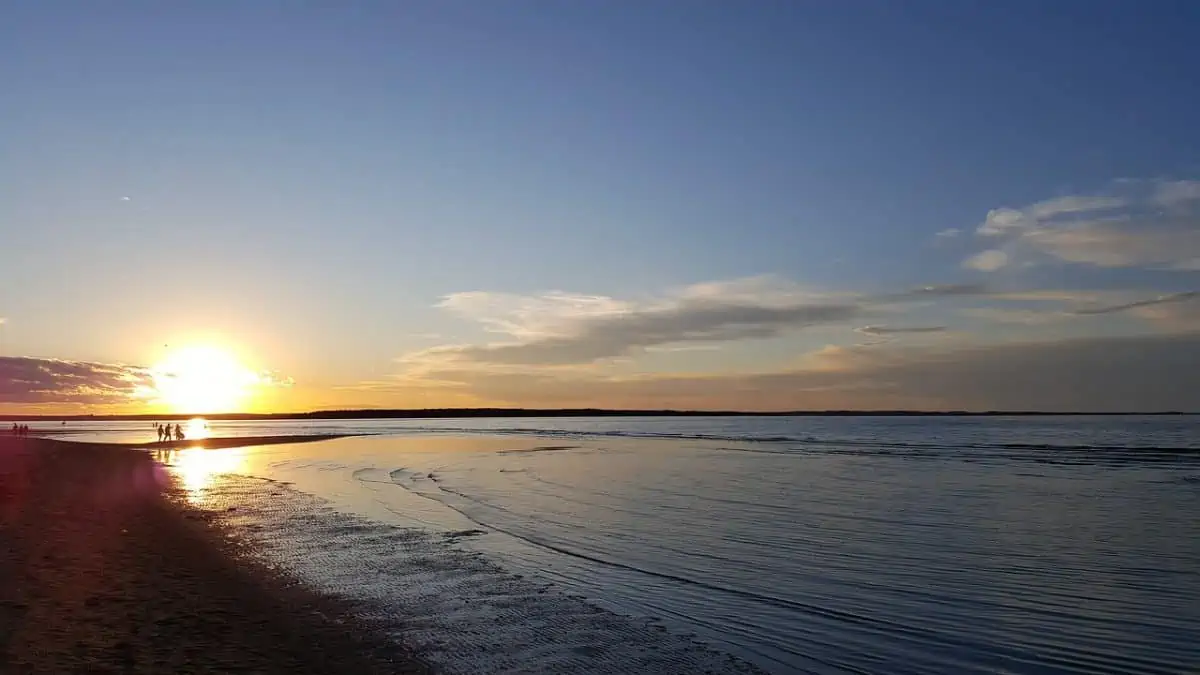
A great day trip or alternative destination to Moncton is Shediac; it’s just 20 minutes away. Shediac is home to Parlee Beach, which has the warmest salt water in Canada.
It’s known as the “lobster capital of the world”; this is the best place to get your first taste of fresh lobster.
For a taste of the local cuisine, check out this this small-group food tour in Shediac. You’ll sample everything from scallops to chocolates!
After you’ve filled up on seafood, head to Parlee Beach to watch the sunset.
Optional Route: Acadian Coastal Drive
If you have extra time on your east coast road trip in Canada and want to see an alternative side of New Brunswick, keep heading North.
New Brunswick is the only officially bilingual province in Canada, and the northern part of the province is where you can fully experience French Acadian culture.
Moncton to Kouchibouguac National Park (101 km)
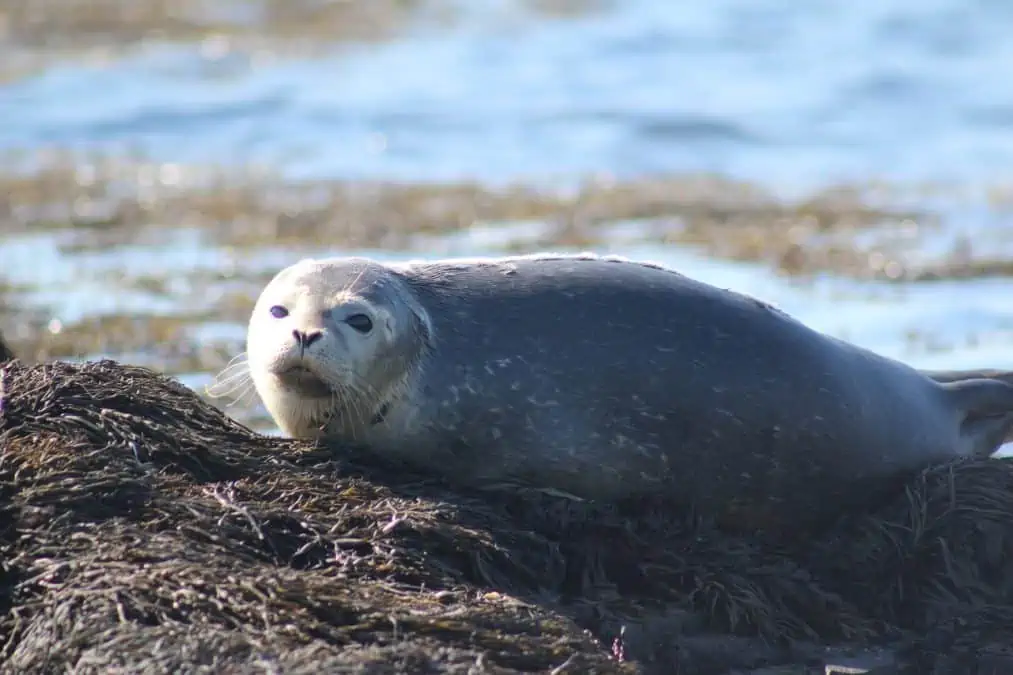
From Moncton or Shediac, head North towards Kouchibouguac National Park. Spend a night or two here camping to soak in the pristine wilderness. The park has beautiful beaches, canoeing, hiking trails, and wildlife, including an adorable seal colony.
I had so much fun spending the night here camping with friends – we saw a huge colony of seals!
Kouchibouguac National Park to Miramichi (51 km)
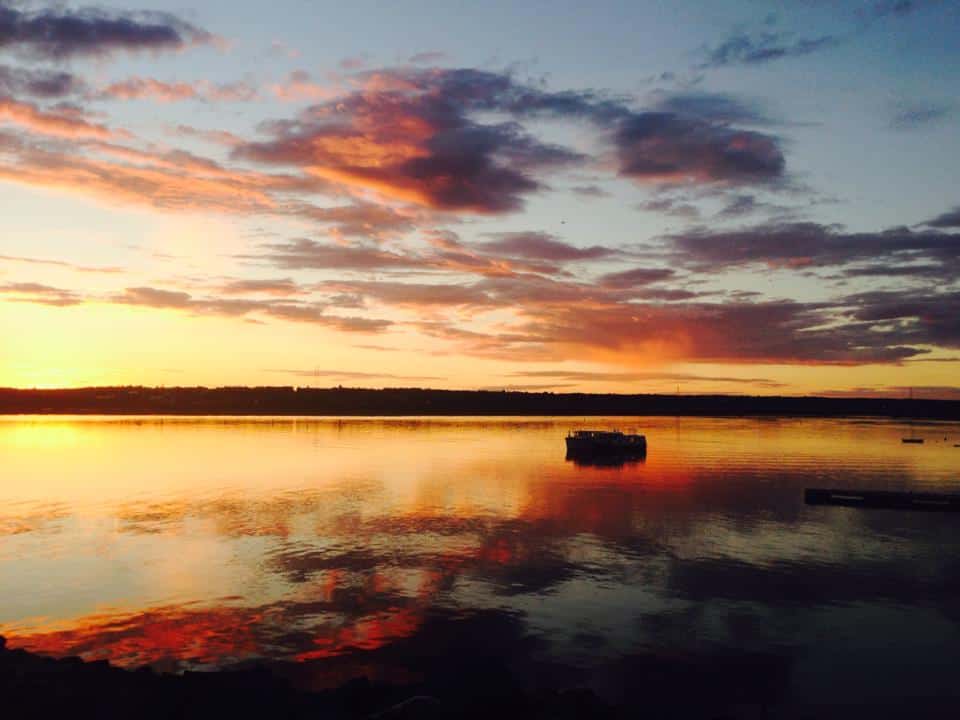
Just half an hour from Kouchibouguac National Park is the town of Miramichi, which was my home for a year and a half. Miramichi is most famous for its fly fishing opportunities on the river.
Another fun thing to do in the summertime is to go on a tubing adventure down the river. In the evening, be sure to soak in the incredible sunsets.
One of the best places to stay in Miramichi is The Rodd. It’s set right on the river, where you can soak in the breathtaking river sunset. Plus, it’s a 5-minute walk from O’Donaghue’s Irish Pub – one of the best pubs in the city!
Miramichi to Miscou (138 km)
Keep heading North from Miramichi to Miscou, a beautiful island at the northern tip of New Brunswick. There, you can visit a picturesque white lighthouse.
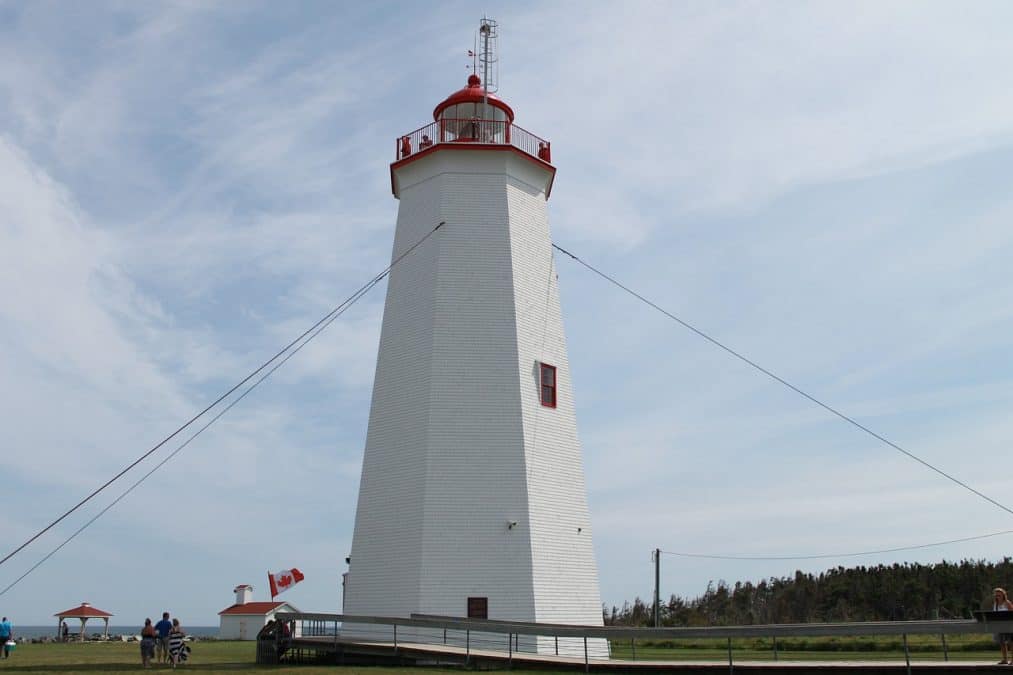
Miscou to Caraquet (60 km)
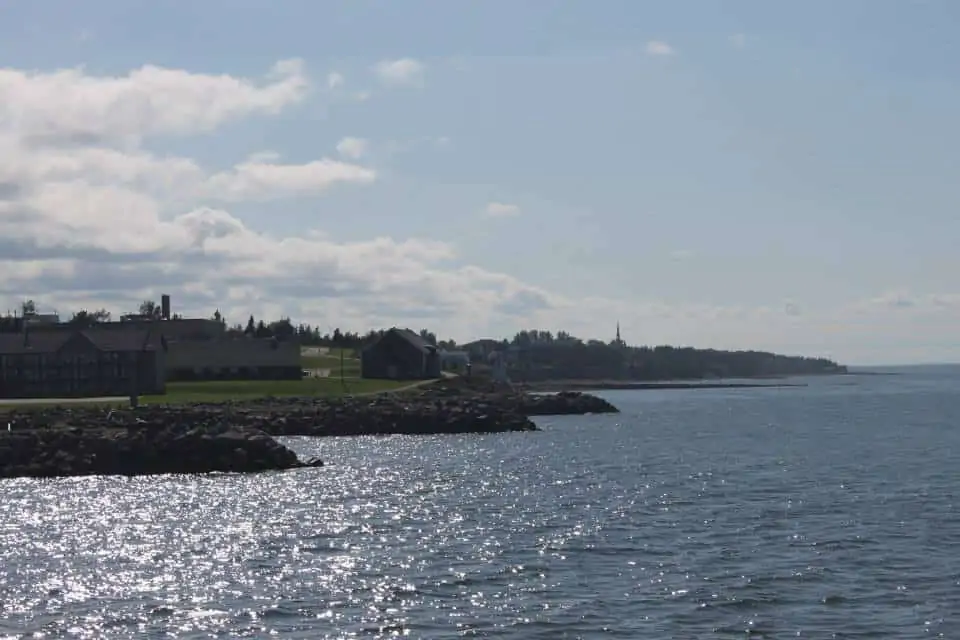
Make your way to Caraquet, the heart of Acadian country. If your visit coincides with August 15th, you’ll be able to take part in some of the National Acadian Day festivities, which are sure to be fun .
There are several quaint B&Bs in Caraquet where you can spend the night. While there, be sure to visit the Acadian Historic Village just outside of Caraquet, where you can learn what life used to be like there.
🏨 Conveniently located off Route 145, this Caraquet property boasts quant rooms with a shared terrace. Acadian Historical Village is just 5 minutes’ drive away.
If you opt for the Acadian Coastal Drive, you’ll have to return south to Moncton/Shediac, which takes about three hours from Caraquet.
From there, continue your east coast trip to Prince Edward Island.
Prince Edward Island (PEI) Road Trip
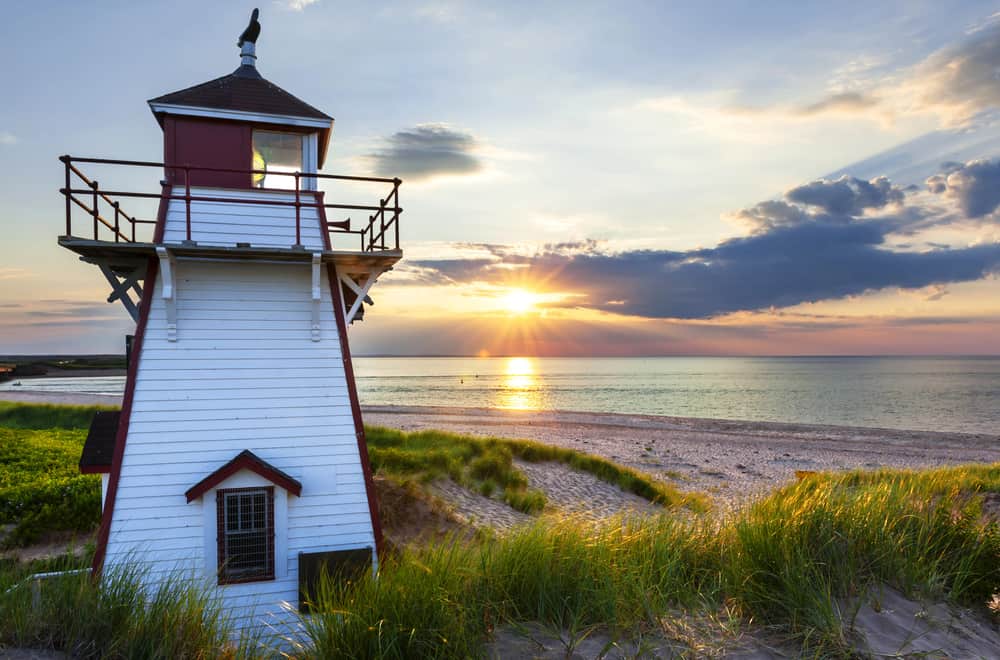
At just 224 km long and 64 KM wide, Prince Edward Island (PEI) is Canada’s smallest province. But don’t be fooled by the size; PEI has some of Canada’s most beautiful landscapes.
Red cliffs along the blue Atlantic Ocean, golden sand dunes, and picture-perfect white lighthouses are just some of the gorgeous scenes you will find here.
PEI connects to New Brunswick via the Confederation Bridge. It’s a 45-minute drive from Shediac to the start of the bridge, and it takes about 20 minutes to cross over which is a really unique experience.
While driving over the ocean, be sure to appreciate the undertaking it took to build this bridge. It’s an impressive example of architecture and engineering.
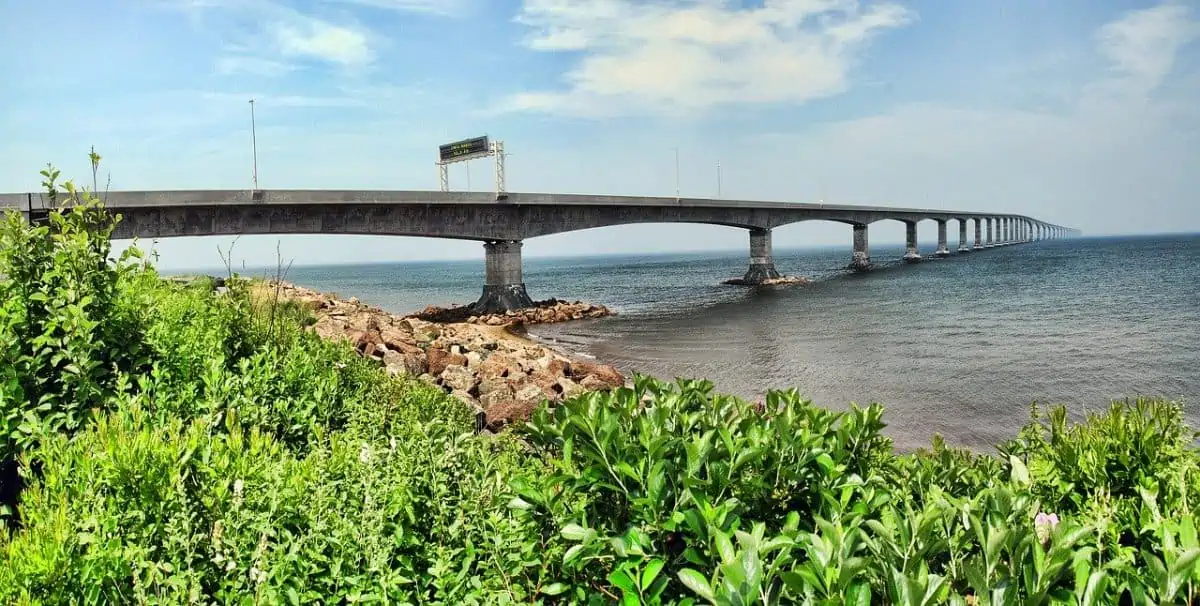
PEI is a small island; you could see the main highlights in one day if you really wanted to. But I suggest staying at least a couple of nights as there are some wonderful things to do here.
The province is roughly divided into three sections, with three coastal routes you can make: North Cape Coastal Drive, Central Coastal Drive, and Points East Coastal Drive.
You’ll enter the province from New Brunswick at Boredon-Carleton, which is smack dab in the middle of the province, so you could do these scenic routes in any order.
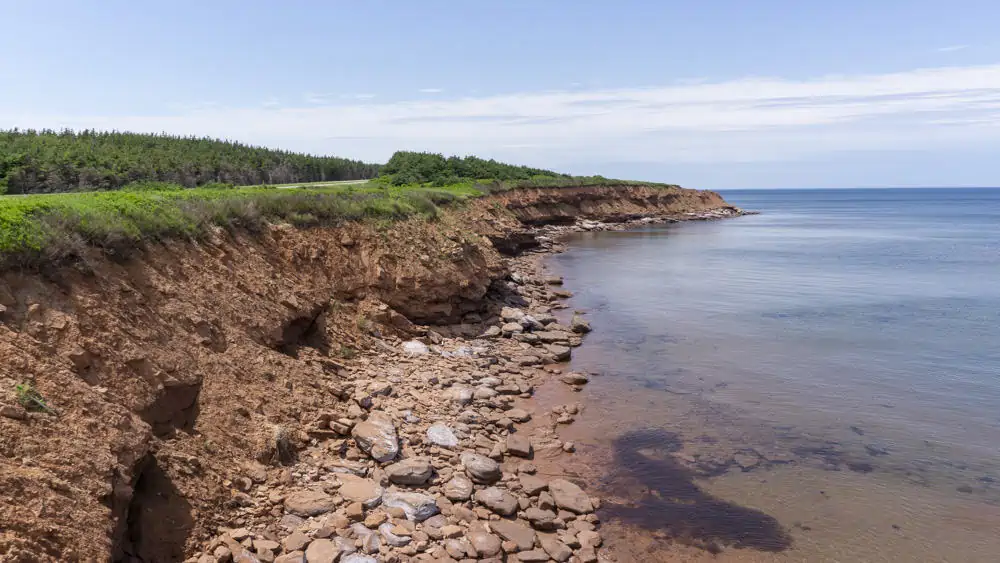
Borden-Carleton to North Cape (121 km)
The North Cape coastal drive is 350 km and features a Canadian potato museum you can visit in O’Leary. PEI is very serious about potatoes! Cedar Dunes Provincial Park is another place worth checking out and a good option for camping overnight.
If you prefer to stay indoors, the West Point Lighthouse Inn and Museum is a unique place to spend the night in the North Cape.
PEI has 63 different Lighthouses, each one with a unique history. You could fill your whole time in PEI just searching for lighthouses; at least a few should be on your itinerary.
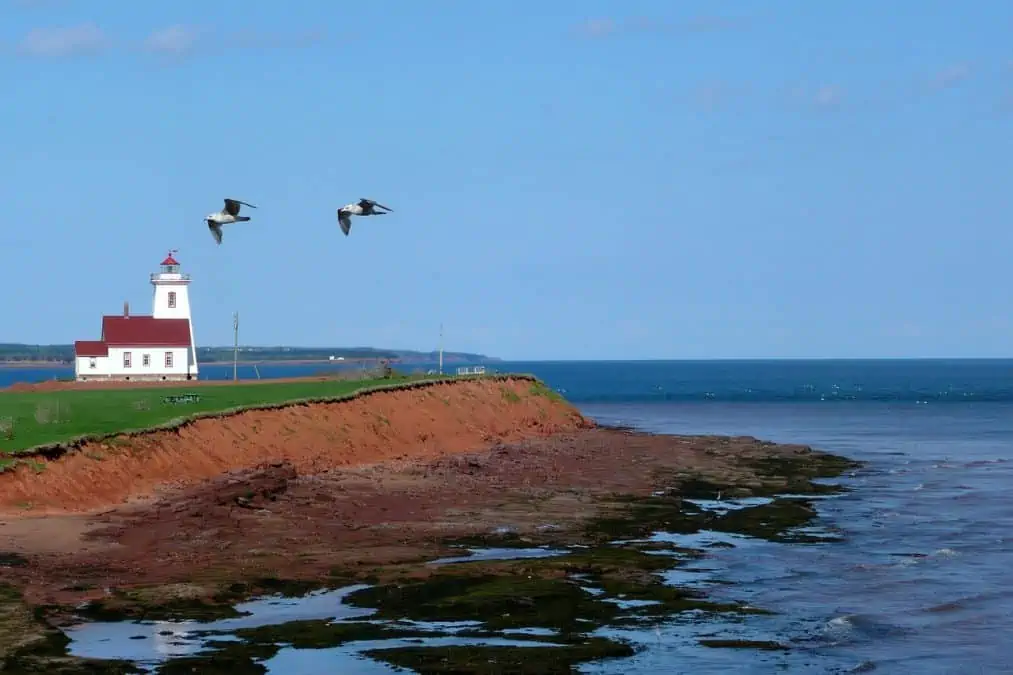
North Cape to Cavendish (129 KM)
After exploring the North Cape, head over to Cavendish, home of Anne of Green Gables. While that has never been an interest of mine, I know it’s a big attraction of PEI, so I can’t write this guide without mentioning it!
See the Green Gables House on this highly-rated tour, followed by a stop at a riverside restaurant with artisan preserves, fine teas, local pottery, and more.
Cavendish is home to Green Gables Heritage Place, which inspired the setting of the beloved tales.
Cavendish is also famous for its beautiful sandy beaches and red stone cliffs. The cliffs here are the best place to take in these stunning landscapes.
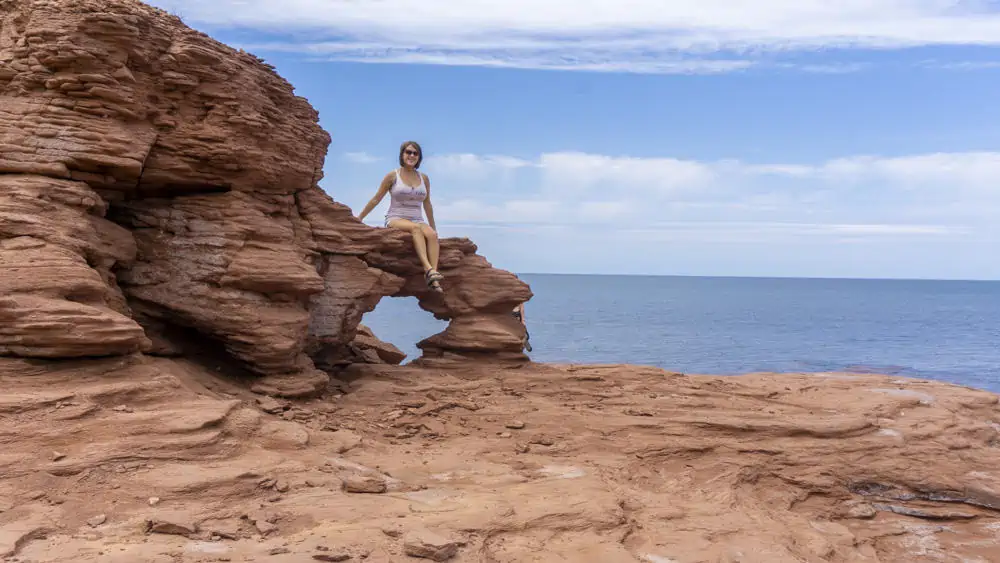
Afterward, head over to Cavendish Beach to soak in the sun along a 37-mile stretch of red sand. The red color comes from the high amount of iron in the island’s sandstone, which oxidizes and rusts when it comes in contact with air.
Cavendish to Charlottetown (38 KM)
After taking in the stunning natural landscapes of PEI, head to the capital of the province, Charlottetown.
Don’t expect big city lights; the population of Charlottetown is under 40,000. But that’s all part of its charm! There are several accommodation options in Charlottetown for spending the night.
Staying overnight in Charlottetown? Just two blocks from downtown, The Habour Inn features charming guest rooms , shaded patios, breakfast, and friendly staff to help you with anything you need.
Start your day in Charlottetown with an ice cream cone from Cows Creamery. It was voted Canada’s best ice cream spot and is one of my most treasured childhood memories.
In the afternoon, explore the local farmers market (it runs on Saturdays all year plus Wednesdays in the summer) or take a bike ride by the sea.
Later that evening, head out to Victoria Row. This pedestrian-only street is lined with a mix of bars, shops, and restaurants.
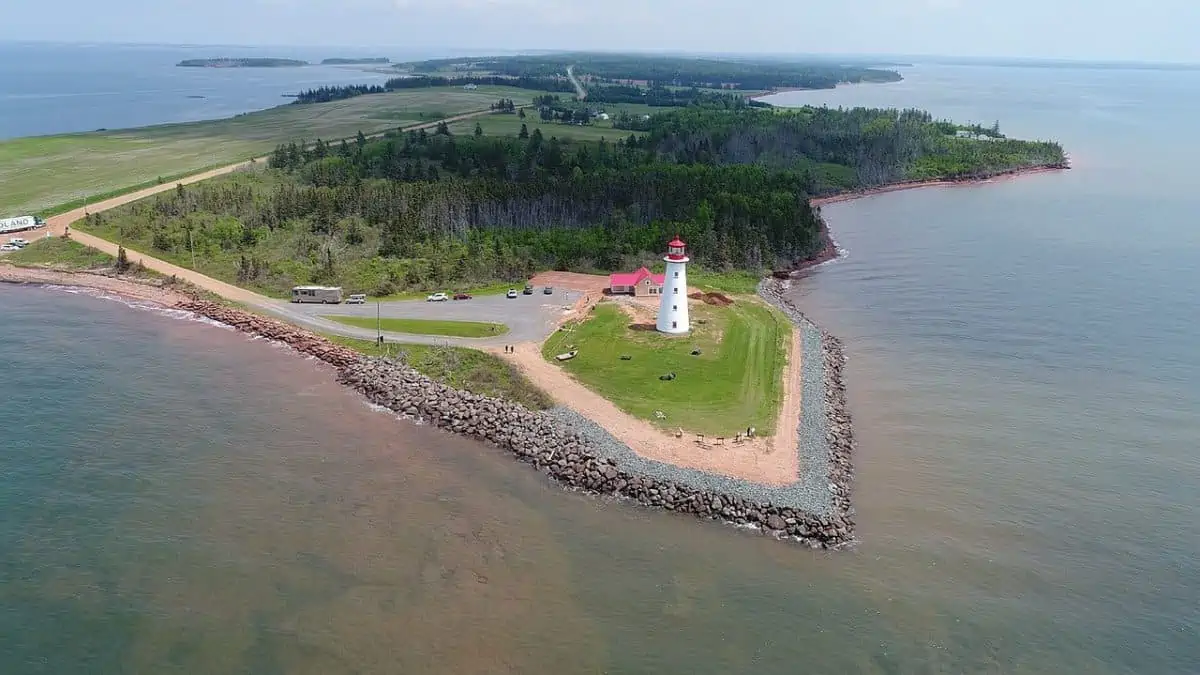
Charlottetown to Greenwich (58 KM)
Spend your last day in PEI exploring the Points East Coastal Drive. Be sure to stop in Greenwich, which is part of the PEI National Park.
This section is home to some incredible dunes and an extensive floating boardwalk that leads to a white-sand beach.
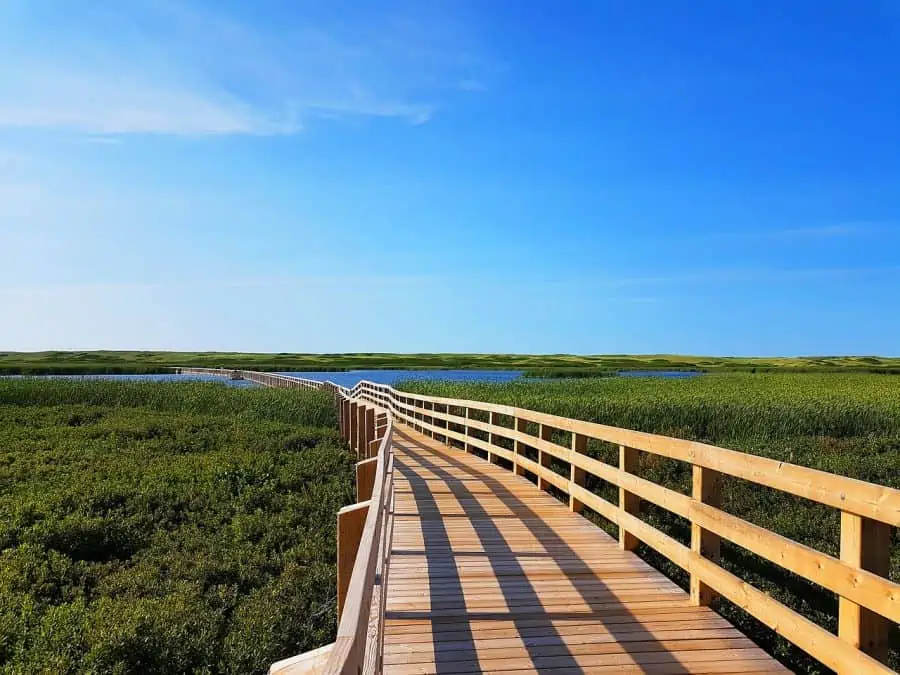
After a few days in Prince Edward Island, it’s time to visit Nova Scotia!
There are two ways to get to Nova Scotia from PEI. You can either go back via the Confederation Bridge through New Brunswick or take a 75-minute ferry from Wood Islands to Caribou, Nova Scotia.
I’ve always taken the Confederation Bridge because I find it more convenient, but the choice is up to you!
Nova Scotia Road Trip Itinerary
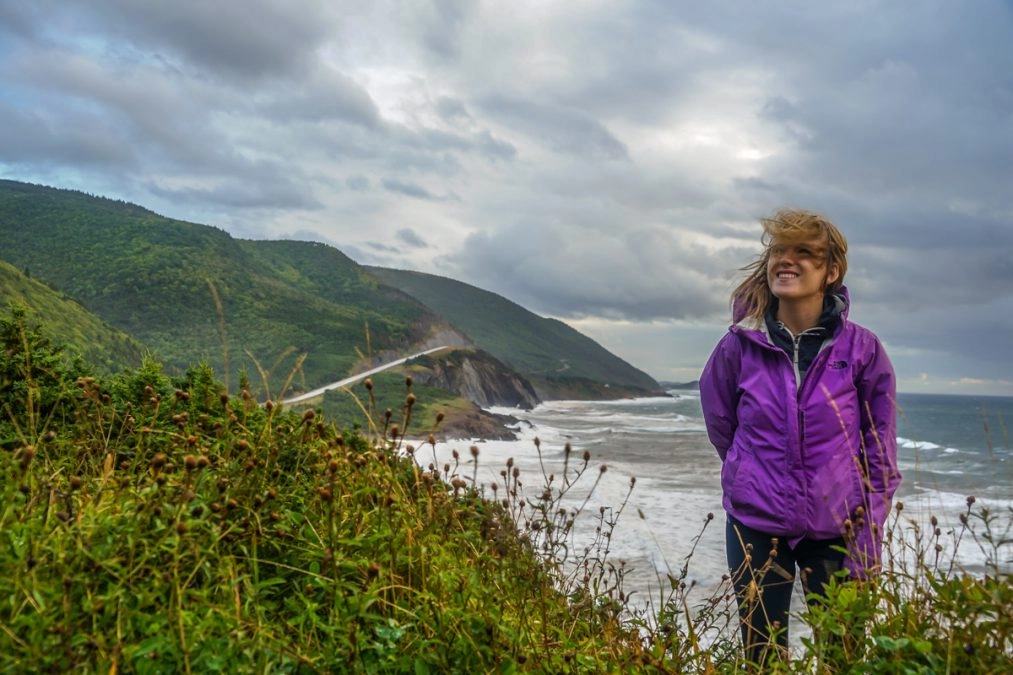
Nova Scotia, known as ‘Canada’s ocean playground,’ is a paradise for outdoor activities. Kayaking, hiking, and rafting are just some of the ways you can enjoy the natural beauty of this stunning province.
Charlottetown To Halifax (325 KM, via Confederation Bridge)
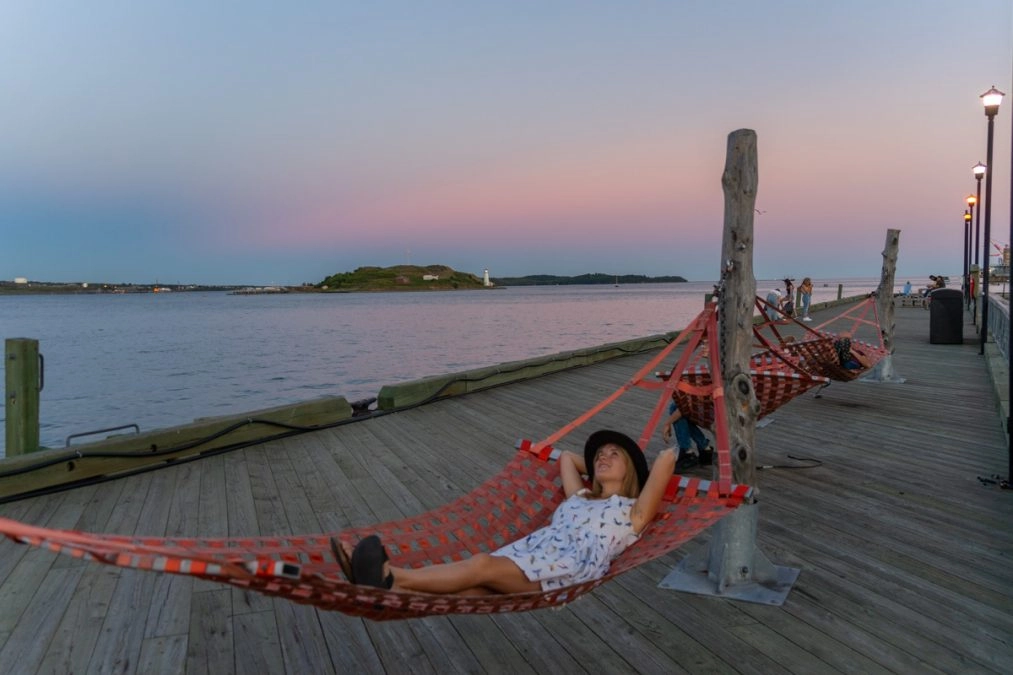
Start your journey in Halifax, the capital city of Nova Scotia. Spend at least a night or two exploring this vibrant city using this Halifax itinerary.
Staying overnight in Halifax? I loved my time at The Westin. It’s centrally located, across the street from the Halifax farmers market, where you can grab a delicious breakfast to go.
You can soak in the views of the harbor from the second floor of the Halifax farmers market and then head outside to walk along the pier.
The harbourfront comes to life during the summer with street performers, public art displays, and restaurants with outdoor seating.
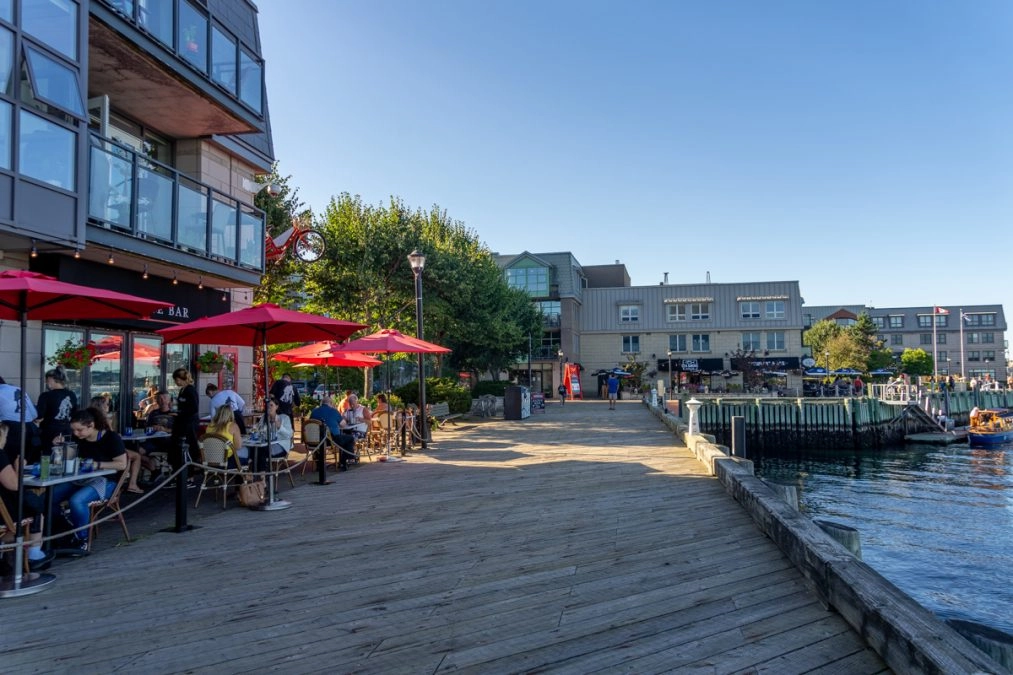
Enjoy lunch here, and head up the hill to Citadel National Historic Site. From the top, you’ll get gorgeous views of the harbor below.
Rather than wandering around alone, get the most out of your visit to Halifax by joining a small-group tour and exploring the city in the company of a guide who can fill you in on the fascinating history.
In the evening, head out to Argyle Street for some live music and rest your head at one of these wonderful places to stay in Halifax.
Halifax to Peggy Cove’s (75 km)
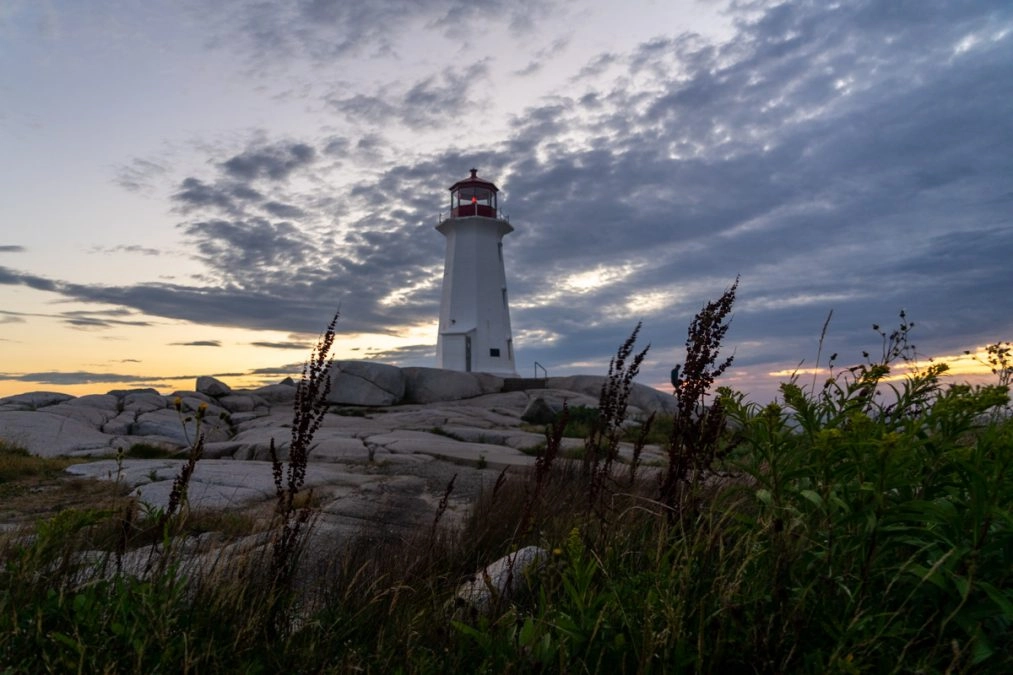
The first stop after Halifax is just 45 minutes away. Peggy’s Cove is a quaint fishing village with a stunning white lighthouse.
It’s a paradise for photography, with the lighthouse that often reflects in the pools of water. The best time to visit Peggy’s Cove is during sunrise to avoid the crowds. Plus, the light is incredible during the golden hour. Some of my favorite photos from my time in Nova Scotia was my visit to Peggy’s cove at sunset!
If you’re tired of driving, join this Peggy’s Cove sunset tour from Halifax instead! Get a fully guided experience, with hotel pick-up and drop-off included.
Peggy’s Cove to Lunenberg (100 km)
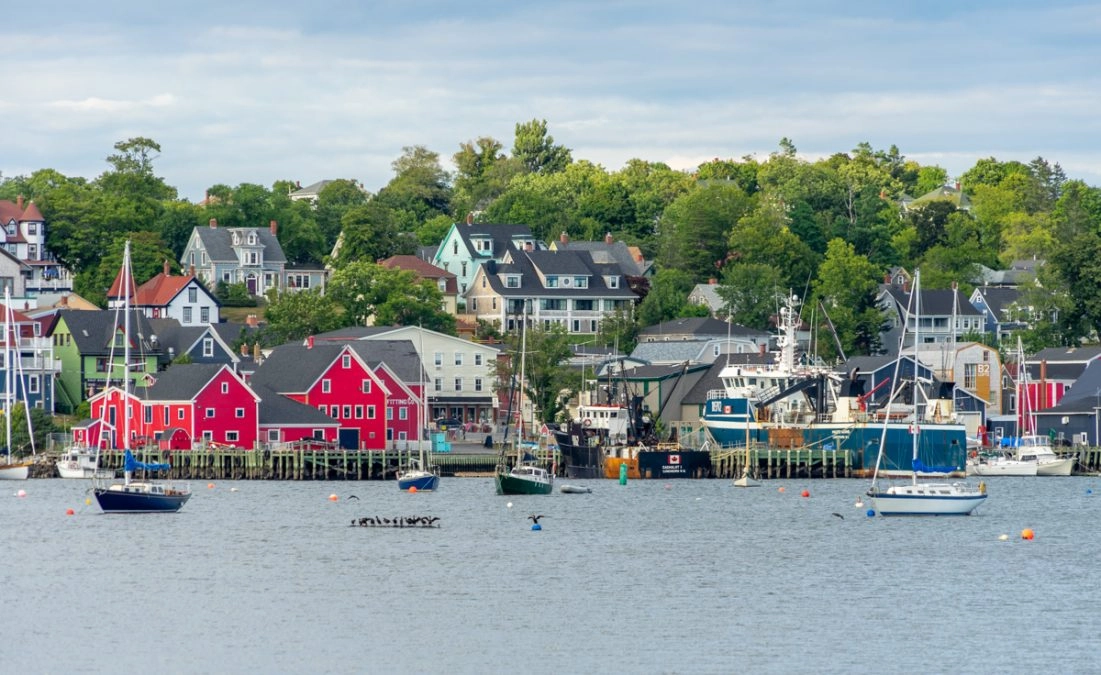
Next up is Lunenberg, a UNESCO world heritage site and one of the most colorful towns in Nova Scotia.
Dating back to the 18th century, this historic town is full of charming architecture and gigantic tall ships docked in the harbor. Head over to the golf course across the harbor for the best views and photo ops of this picturesque town.
Lunenberg is the perfect place to spend the night relaxing by the sea. I loved my stay at the the Sail Inn – a turn-of-the-century bed and breakfast just 35m from the waterfront.
A more off-the-beaten-path place to explore nearby is Blue Rocks, a small fishing village just outside of the Lunenberg. Head there for sunrise – you won’t be disappointed.
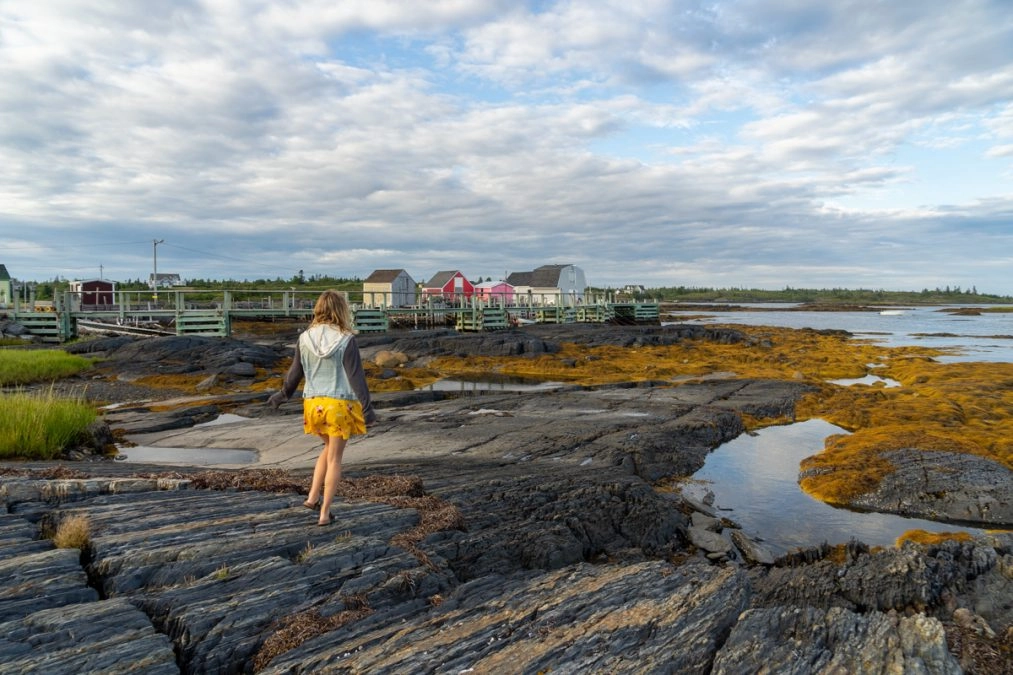
Lunenberg to Kejimkujik National Park (90 KM)
Next up, make your way to Kejimkujik National Park for some of the most pristine kayaking opportunities in eastern Canada. Kejimkujik is also a great place to go camping and stargazing if you want to spend the night.
Kejimkujik National Park to The Shubenacadie River (308 km)
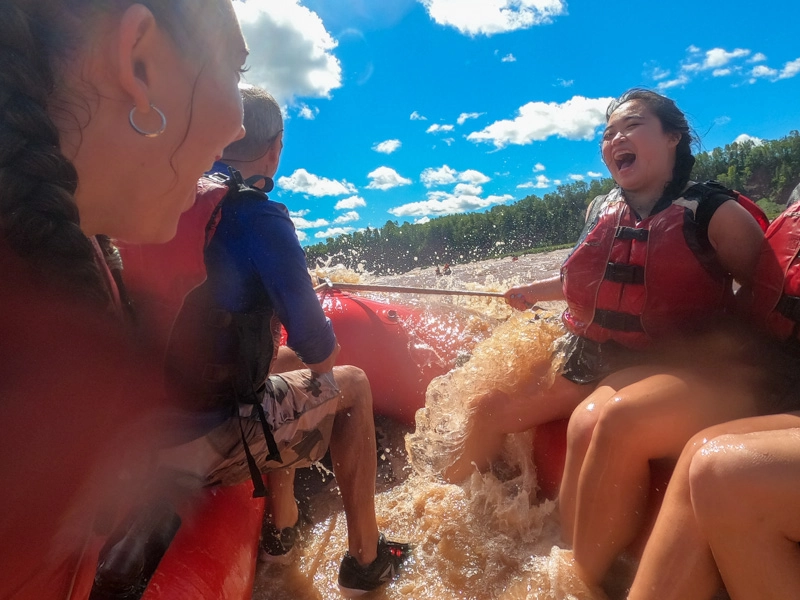
If you love adventure, you must try Tidal Bore rafting on the Shubenacadie River. I’ve been river rafting all over the world, but this is one of the most unique rafting experiences I’ve tried!
Twice a day, when the tide changes, the tidal bore temporarily reverses the flow of the river, creating incredible high-speed rapids. It’s the only place in the world where you can experience this! There’s even a Tidal Bore Rafting Resort where you can spend the night.
Shubenacadie River to Cape Breton Island (338km)
Although Cape Breton Island is part of Nova Scotia, it’s so unique that it almost feels like its own province.
After leaving the Shubenacadie River, head 338 km east (approx four hours of driving) to Cape Breton Highlands National Park of Canada.
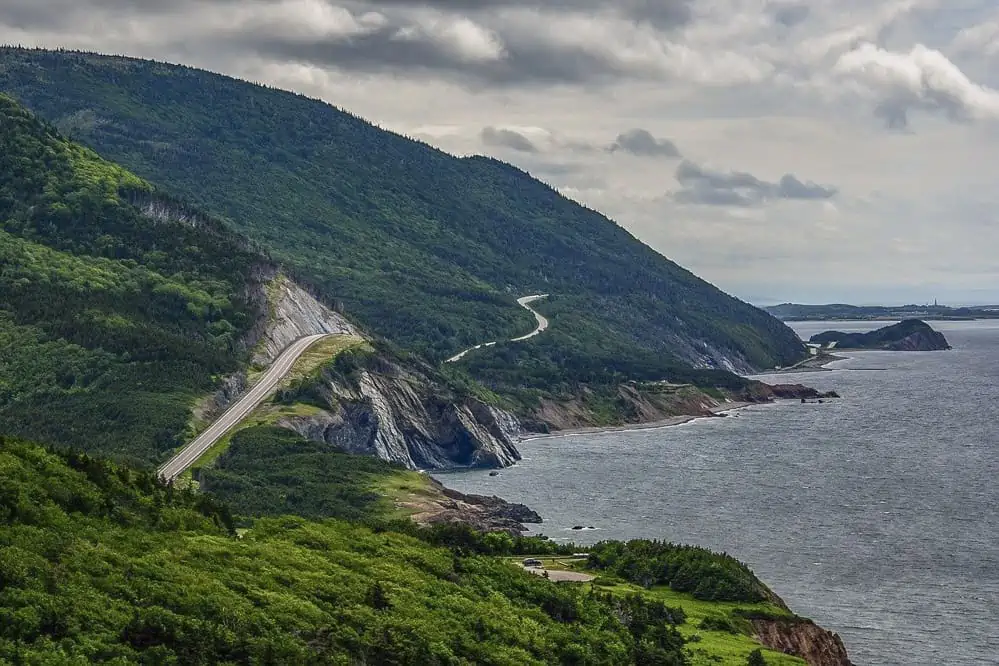
Cape Breton Highlands National Park is home to the Cabot Trail, which is continuously named one of the most beautiful drives in the world.
It’s only 298km in length, but you’ll want at least a couple of days to take it all in. Thankfully, there are plenty of unique places to stay along the Cabot Trail.
🏩 One of the most beautiful places to stay on the Cabot Trail is the Keltic Lodge at the Highlands . It’s got stunning views from the property and is right next to Ingonish Beach.
One of the most beautiful places to stay on the Cabot Trail is the Keltic Lodge at the Highlands . It’s got stunning views from the property and is right next to Ingonish Beach.
With such incredible views along the Cabot Trail, you’ll be stopping every five minutes for photos. Plus, there are a ton of hiking opportunities along the way. Be sure to hike the Skyline Trail for sunset – it was my favorite hike on the island!
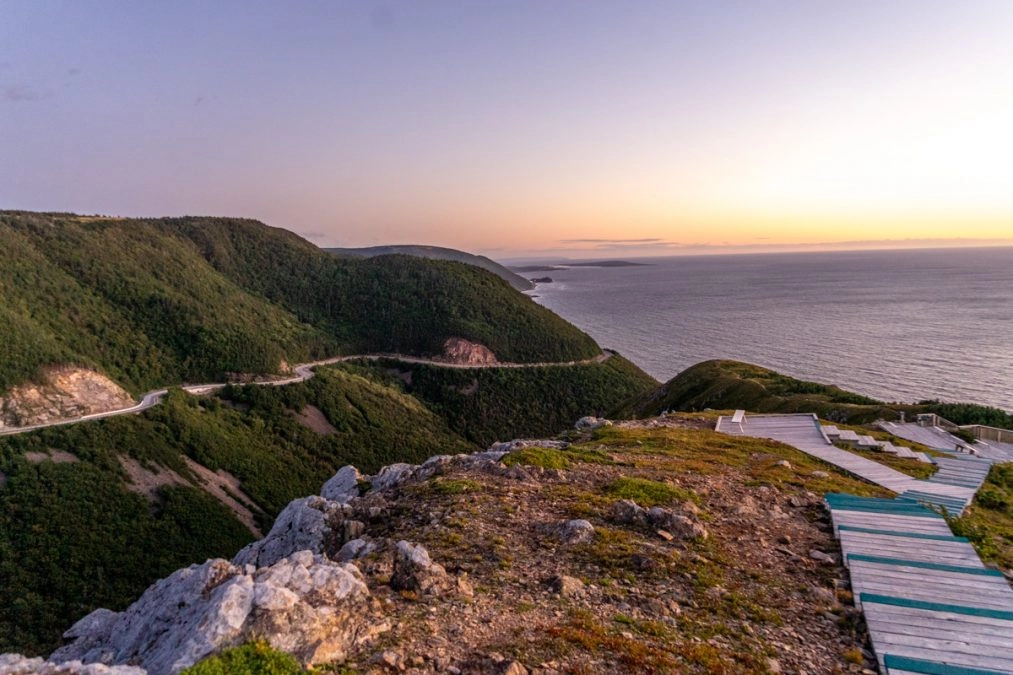
Cape Breton Highlands National Park to North Sydney (114 km)
After a few beautiful days in Cape Breton Highlands National Park, drive to the North Sydney ferry terminal.
This is where you’ll say goodbye to the mainland of Canada and catch an overnight ferry to the island of Newfoundland.
Newfoundland Road Trip

Many people don’t include Newfoundland on their trip t Eastern Canada, but it absolutely should be. I may be biased, but I truly believe Newfoundland has its own identity, unlike anywhere else in Canada.
While out of the way, it will be worth making the trip there. Here’s everything you need to know about planning a road trip through Newfoundland.
There are two ferry options for getting to Newfoundland from the mainland. Both depart from North Sydney, Nova Scotia. One goes to Argentia on the East Coast of Newfoundland, and the other goes to Port aux Basques on the West Coast.
I recommend taking the Port Aux Basque ferry because it’s shorter, cheaper, and more reliable. The other ferry only runs during the summer months and is often canceled due to weather.
Port Aux Basque – Corner brook (219 km)
You’ll arrive in Port Aux Basque early in the morning, around 7 am (assuming the ferry is on time). Drive two hours East to Corner Brook, the largest city on the West Coast.
The next few days will be camping in Gros Morne National Park , so stock up on supplies at a grocery store in Corner Brook. Sobeys or Dominion are the best options. There are some small stores in Gros Morne national park, but they are limited in supplies and more expensive.
Corner Brook to Gros Morne national park (85KM)
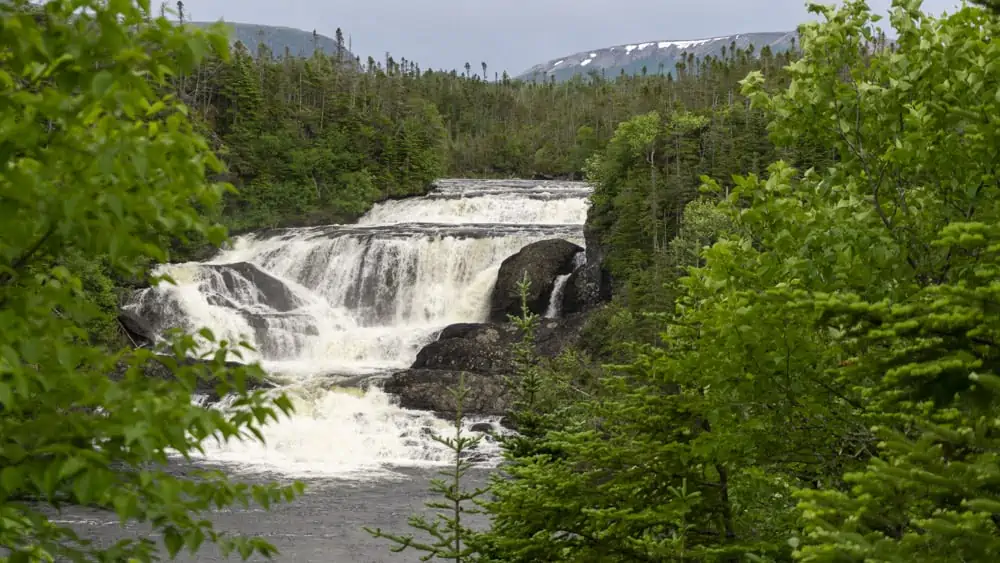
From Corner Brook, it’s just an hour’s drive to Gros Morne National Park , one of the main highlights of Newfoundland. Spend at least two nights here either camping in the park or at lodging nearby.
Rocky Harbour is the most convenient place to stay in the park if you aren’t camping. I recommend Bambury’s Hillside Chalets, cute saltbox homes with a 9.5+ rating.
With over 100 kilometers of pristine trails, Gros Morne is the perfect place to take a hike. Challenge yourself to go 800 meters up to the summit of Gros Morne mountain!
This hike is no easy feat, as the last two hours involve climbing up steep rocks. The views at the top are worth it – this is one of my favorite hikes in Newfoundland. It’s an all-day hike (16 km) that will take you between 6-8 hours.
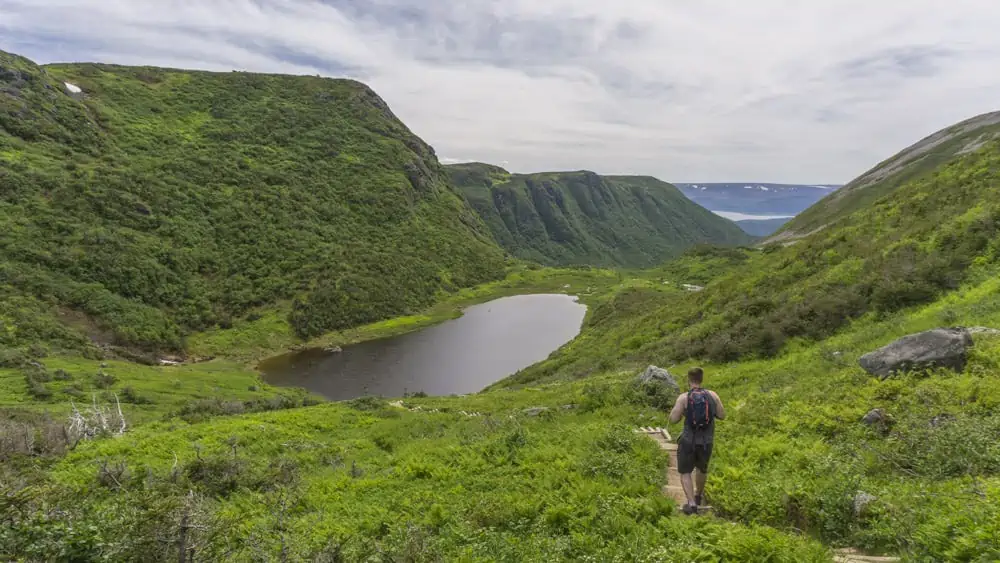
If you want a real adventure, try backpacking the long-range traverse. This epic hike takes four nights but will take you to one of the most sought-after photos in Newfoundland. This trek is not for beginners – you must attend a backcountry briefing to receive a backcountry hiking permit for this trek.
For a less strenuous activity, take a boat tour through the fjord s and marvel at the beauty carved out by the work of glaciers over thousands of years.
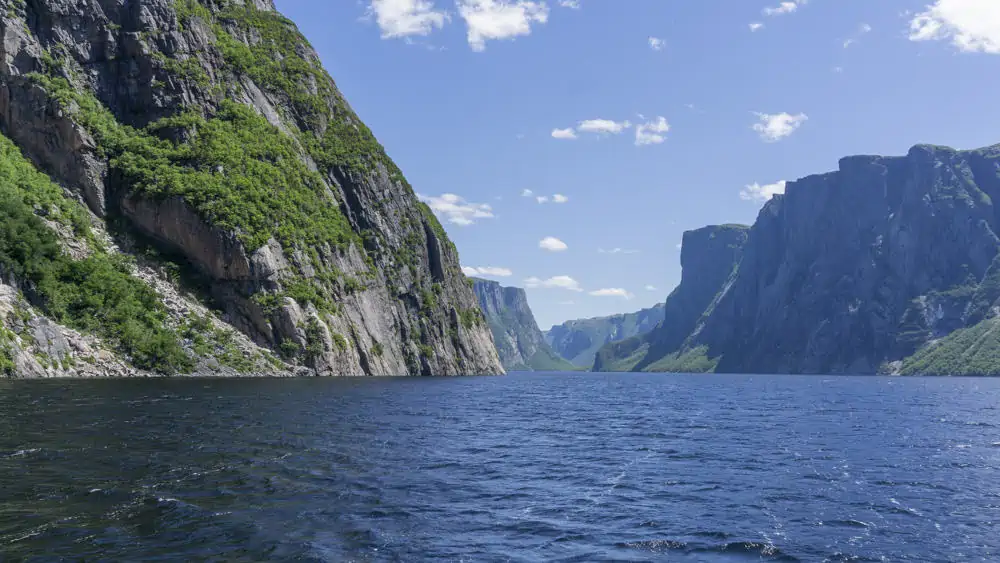
Optional route: Viking Trail
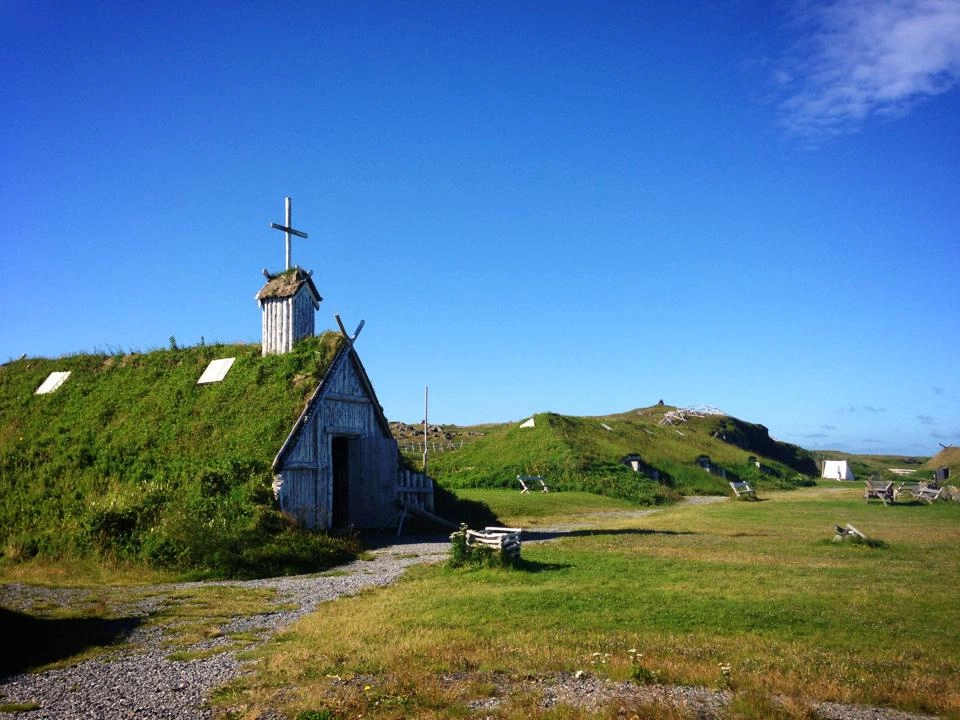
Another option is to continue your journey on a scenic drive down the Northern Peninsula, also known as the Viking trail , to the UNESCO world heritage site of L’anse Aux Meadows . Here you’ll find remains of an 11th-century Viking settlement.
I’ve done this route before, and it’s stunning, but you’ll need an extra couple of days. It’s about a three-hour drive from Gros Morne each way.
I recommend spending the night in St. Anthony, the largest town on the peninsula. It’s one of the best places to see icebergs in the spring!
Grenfell Heritage Hotel & Suites is a historic hotel in St. Anthony, centrally located in town. It offers fully equipped kitchens in the apartment rooms – we stayed here for a week and loved it!
Gros Morne National Park to Bonavista Peninsula (406 km)
After a few glorious days on the West Coast, you’ll continue your journey towards Newfoundland’s east coast through the Trans-Canada Highway (Route 1).
It’s an easy drive as there is only one main highway across Newfoundland – just look out for moose along the way.
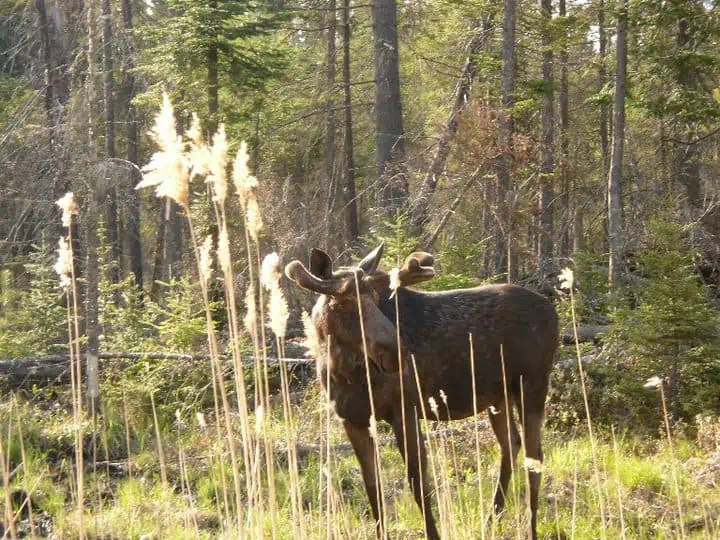
If you’re craving more adventure along the way, stop along the way in Grand-Falls, where you can go whitewater rafting on the exploits river. This is a great place to stop for lunch or spend the night to break up the journey.
Optional route: Central Newfoundland and Fogo Island
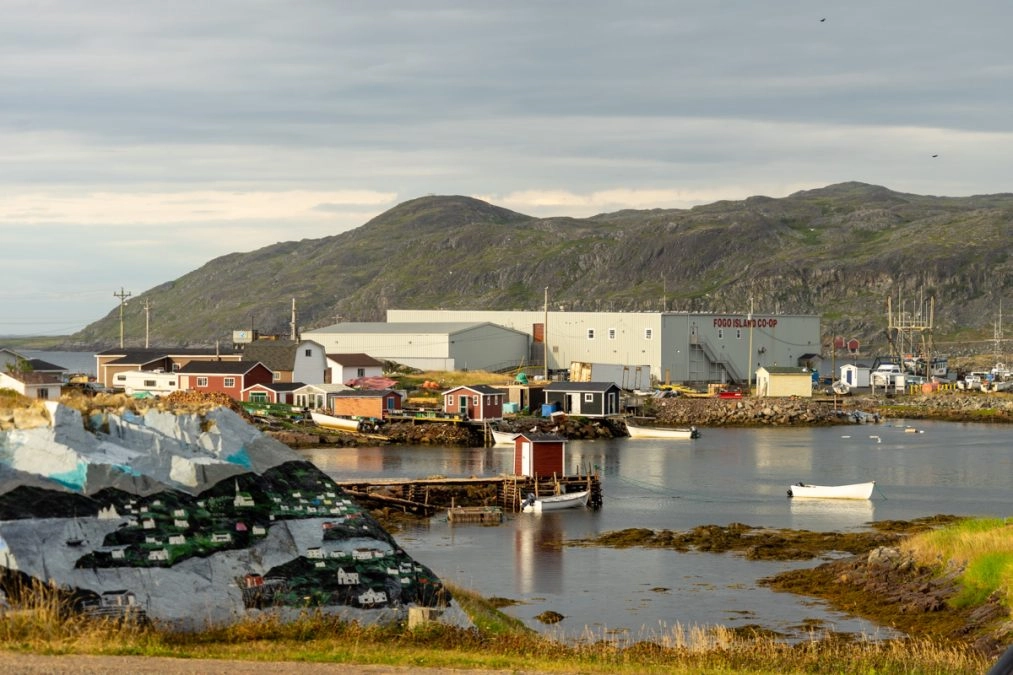
While driving across the province, you could take an optional detour to Twillingate and Fogo Island, home to some of the cutest small towns in Newfoundland. Fogo island has become a popular spot in recent years with the addition of the 5-star Fogo Island Inn.
We all wish we could stay at the Fogo Inn, but it’s not in most people’s budget. Instead, stay at one of The Old Salt Box Co. locations and enjoy sunsets over the ocean from your room.
There’s so much adventure in Central Newfoundland you could easily spend another week exploring this region!
Bonavista Peninsula
The Bonavista Peninsula is one of my favorite parts of Newfoundland.
With endless picturesque fishing villages, a lively arts scene, fantastic puffing spotting opportunities , and gorgeous hiking trails , you’ll be sure to love it here. Check out this video of some friendly puffins I met there last summer!
@explorewithlora Found in Elliston, Newfoundland #puffins #explorenl #newfiecheck #nlwx #newfoundlandersoftiktok #newfoundlandandlabrador #wildlifelover ♬ Fantasy – Alina Baraz / Galimatias
Trinity is a perfect place to spend your first night here, with several homey guesthouses to stay.
The Eriksen Premises is one of Trinity’s historic homes and a great place to spend the night. Antique wood décor is featured in all individually decorated rooms, and it’s next to restaurants and shops.
After a good night’s rest, take a harbor kayak tour where you can come up close with whales and icebergs, depending on the season.
Trinity is also home to some great hiking trails. Try the Skerwink trail, a 4.7-kilometer loop with beautiful coastal views.
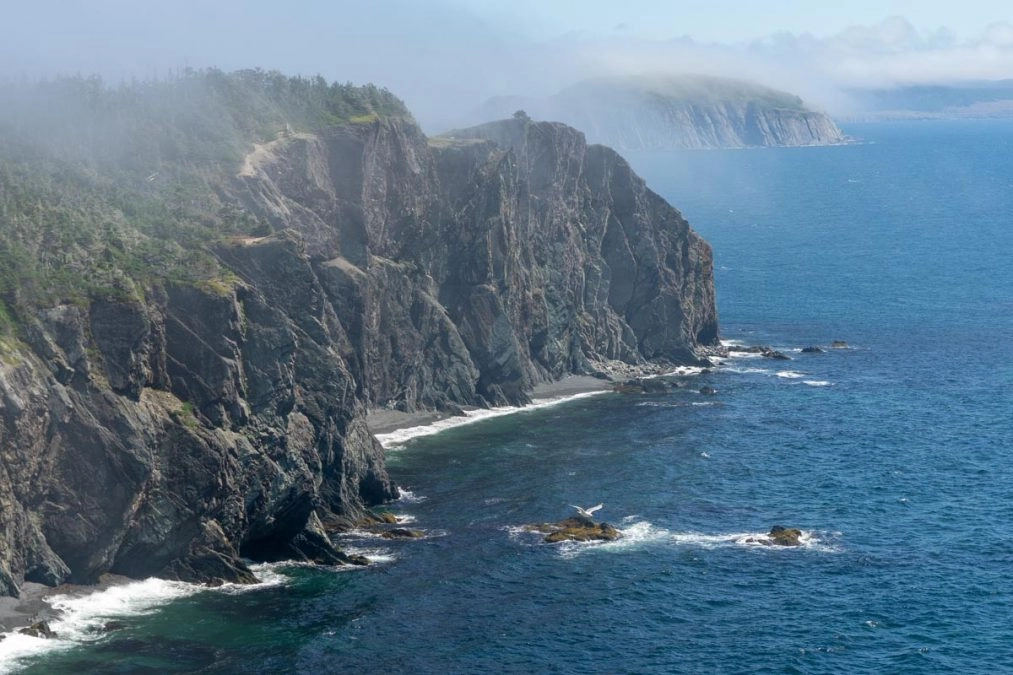
Trinity to Bonavista (50 km)
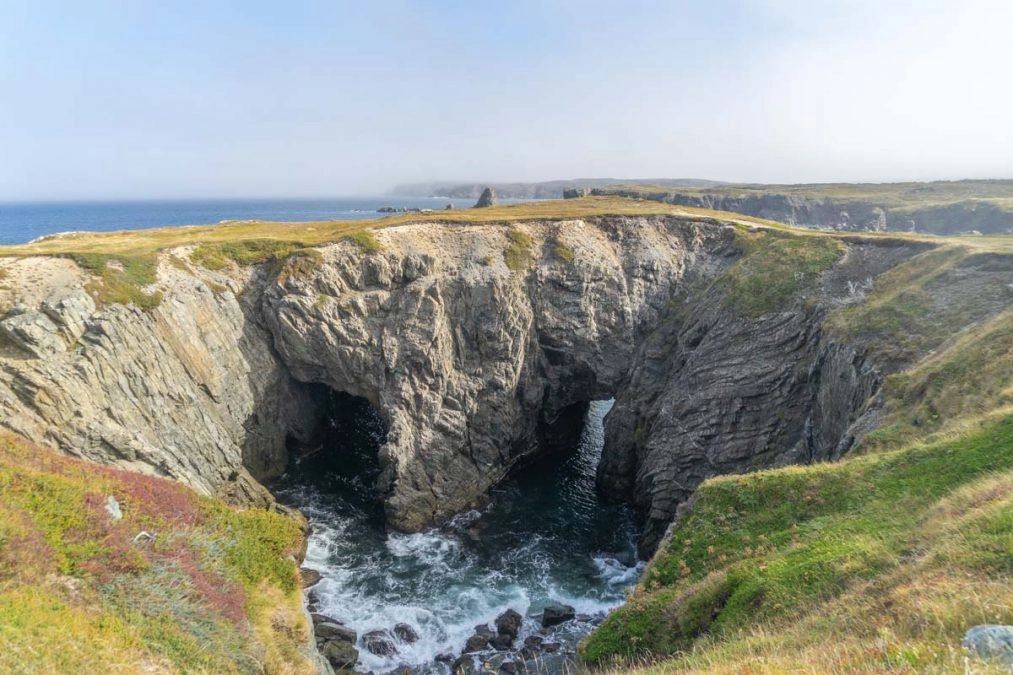
Take a day to drive around the Bonavista peninsula or spend another night. Along the way, opt to visit Port Rexon Brewing for a delicious craft beer.
In Bonavista, take a hike in the stunning Dungeon provincial park, grab a cone at Sweet Rock Ice Cream, or head to nearby Elliston to spot puffins .
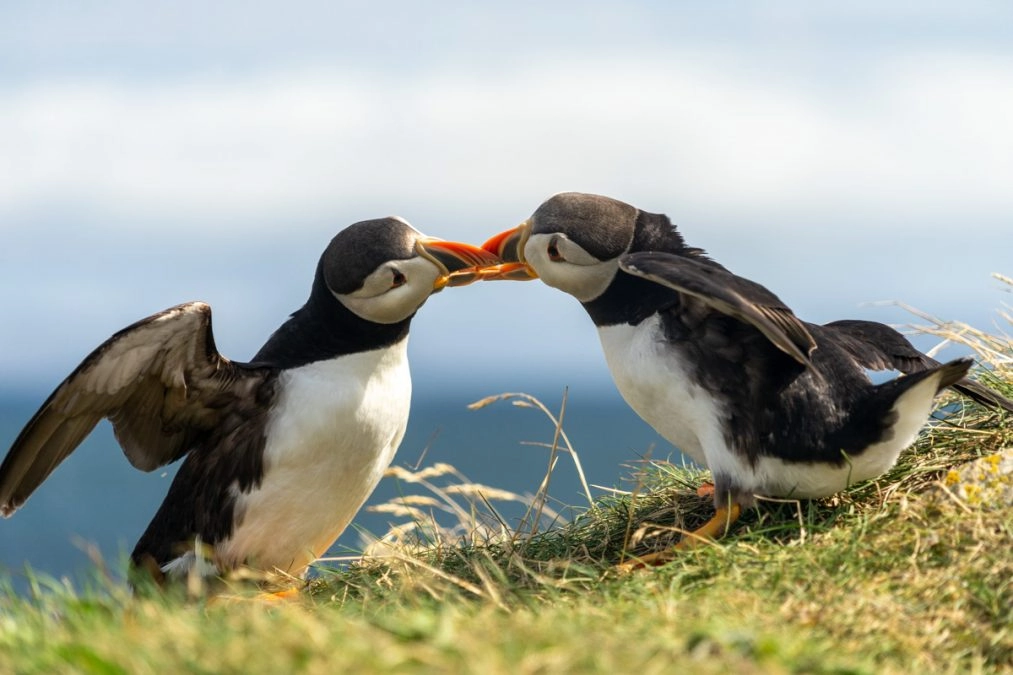
In the evening, enjoy a locally-sourced dinner at the Bonavista Social Club.
Trinity to St. John’s (258 km)
Continue driving east to St. John’s, the capital city of Newfoundland, and my hometown. It’s one of the oldest cities in North America!
Celebrate the end of your east coast Canada road trip by driving to Cape Spear and soaking in the ocean views. Congratulations, You’ve made it to the most easterly point in North America!
One of the most beautiful places to stay in downtown St. John’s is Blue on Water. This 4-star accommodation features beautiful interior designs and is steps away from top attractions.
Another option is the Cabot Guest House i n Georgetown, a charming neighborhood I used to live in. If you stay here, be sure to grab your morning coffee and bagel at the Georgetown Bakery.
St. John’s is a great city with tons of fun things to do. Hike up to historic Signal Hill, where you can get sweeping views of the St. John’s narrows.
Take a walk around downtown St. John’s, or visit the picturesque fishing village of Quidi Vidi, which has a brewery that you can tour.
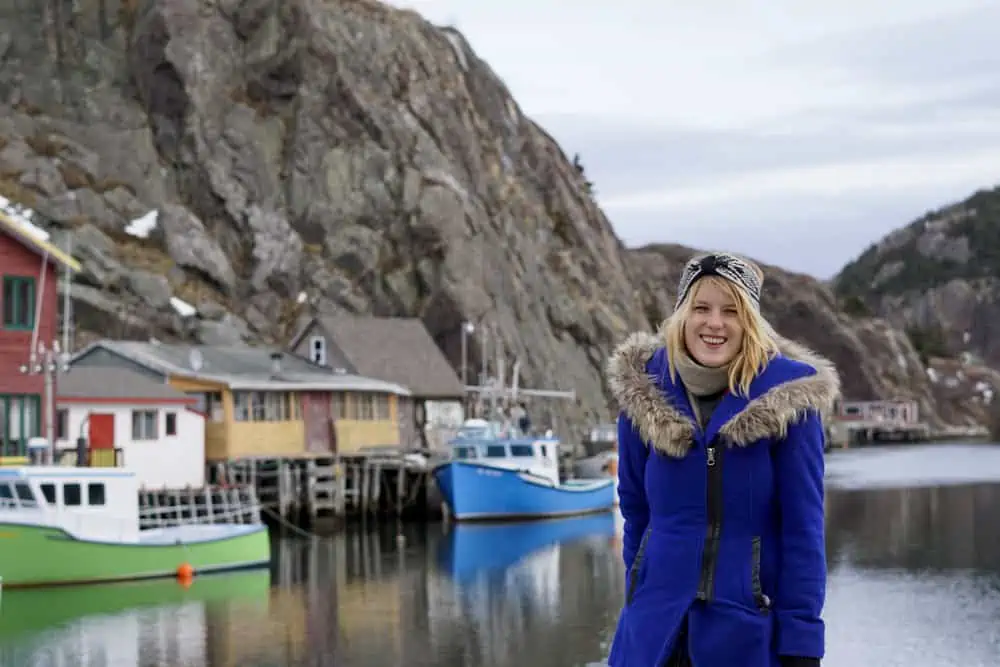
In the evening, head to The Duke for the best fish and chips in the city, then George Street for a night on the town. With the most bars per capita in Canada, St. John’s has a lively nightlife and a great local music scene.
As a visitor, you must get screeched in to become an honourary Newfoundland. Christians Bar on George Street is a perfect place to do that.
The next day (assuming you’re not too hungover), take a stroll along a section of the East Coast trai l – there are over 336 kilometers of trail to explore that will take you through breathtaking towering cliffs with beautiful views.
During the summer months, the world’s largest population of humpback whales makes their way to Newfoundland’s coast to feed. It’s one of the best places to go whale watching in the world !
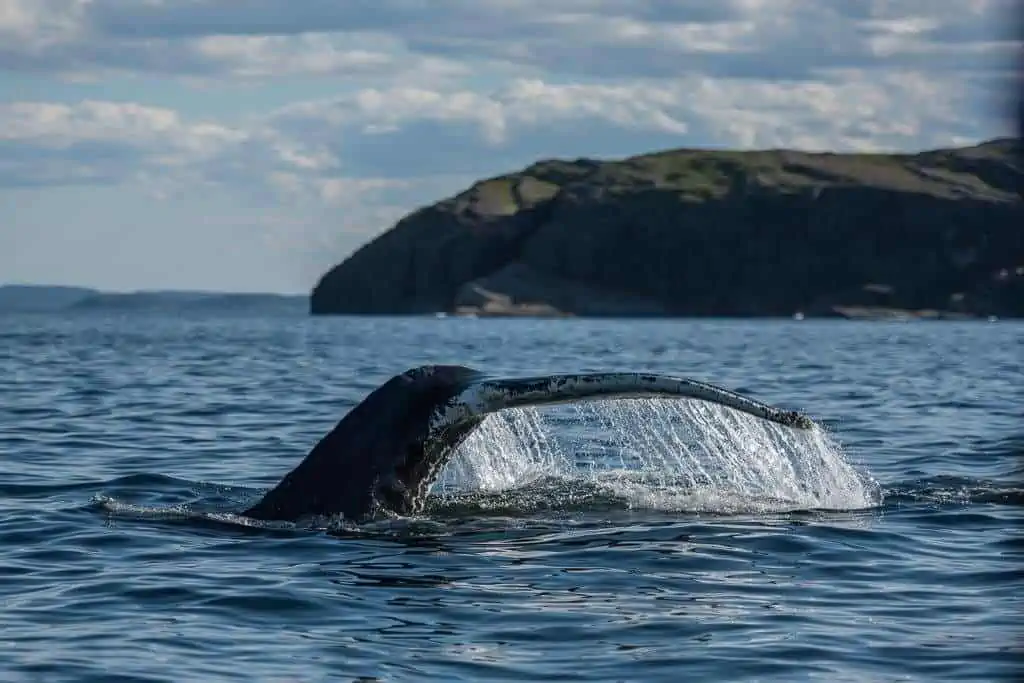
Whales can often be spotted while hiking on the East Coast Trail but for a closer look, join a whale-watching tour.
Want to see whales? I loved this boat tour that takes you to Witless Bay ecological reserve to see the world’s largest population of humpback whales, icebergs that are over 10,000 years old, and the charismatic Atlantic puffin.
If you’re a diver, you can also join a diving tour to see WWII shipwrecks, reefs, wall dives, and more! Diving is a unique way to explore Newfoundland from the ocean floor.
Toronto to East Coast Road Trip
The focus of this post is on the Maritime provinces and Newfoundland. But since I know many of you will be planning an east coast canada road trip itinerary from Toronto, I’ve made a few suggestions for places to stop on the way below through Ontario/Québec before reaching New Brunswick.
There are MANY more amazing places to visit than outlined here, but they need a post of their own (and it’s coming).
If you’re starting from Toronto , make your first stop in Ottawa (a four-hour drive) or Montreal (a six-hour drive). Opt to stop at Thousand Islands National Park along the way.
Spanning across the border between Canada and the U.S., this park is one of the most beautiful places to visit in Ontario .
You can either spend the night in the park or just stop on the way to see the islands.
There’s no better view of the thousand islands than from the sky! This 5-star rated tour takes you on a scenic twenty-minute helicopter ride over the islands. Perfect if you’re short on time!
After touring the thousand islands, continue on to either Ottawa or Montreal. They are just two hours apart, so either make a great place to spend the night if you’re coming from Toronto. It just depends on how much driving you want to do in one day!
I love Montreal because of its exciting nightlife and overall atmosphere. However, if you prefer a quieter city with beautiful parks and historic sites, Ottawa is a great option.
Staying overnight in Ottawa? Don’t miss the chance to stay at the Fairmont Chateau Laurier – it’s one of Canada’s most iconic hotels, adjacent to the Parliament Buildings and Rideau Canal. Reserve early, as it does book up!
Leaving Ottawa or Montreal, continue your drive towards the province of New Brunswick.
Fredericton (capital of New Brunswick) is about 8 hours East of Montreal, so you could get there in a day if you drove all day. But if you prefer to do more sightseeing along the way, a great option is to spend the night in Québec City.
With its picturesque cobblestone streets lined with bistros and boutiques, you’ll feel like you’ve been transported to Europe.
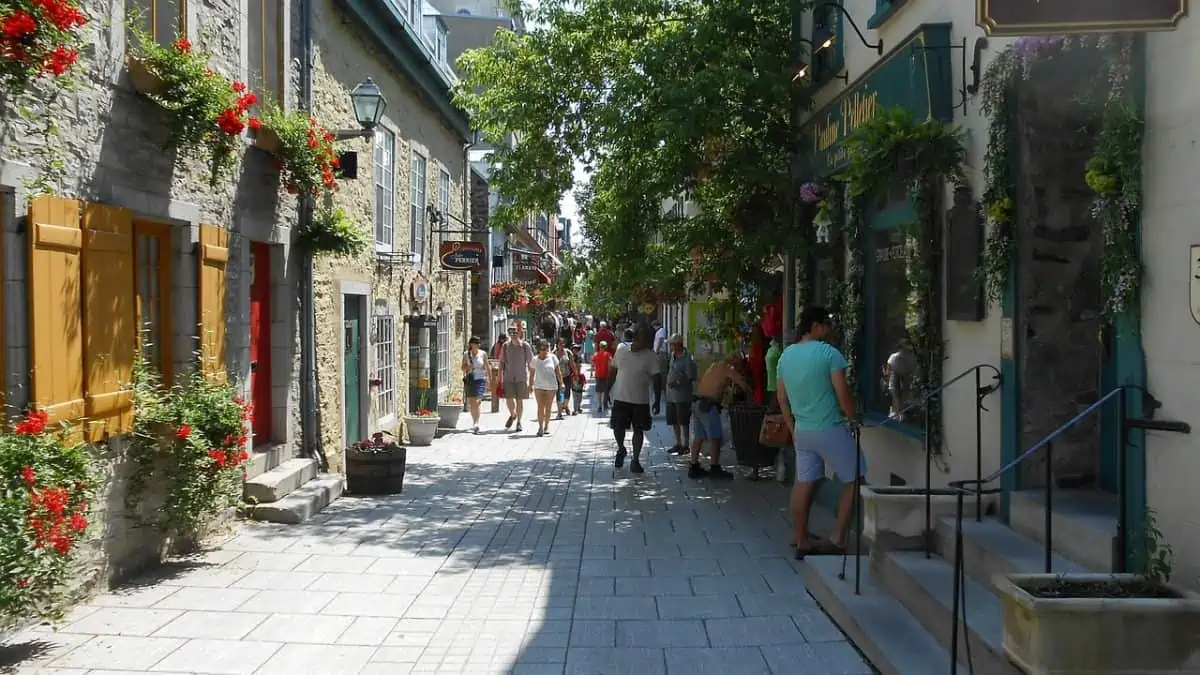
If you didn’t get the chance to stay at the Fairmont in Ottawa, there’s another opportunity in Quebec City! The Fairmont Le Chateau Frontenac is situated in Old Quebec, boasting gorgeous views of the St. Lawrence river in a fairytale setting.
Itineraries for Best Road Trips to Canada’s East Coast
With two months, you would be able to road trip all of this Eastern Canada itinerary, including the optional routes I mentioned.
You could visit the main highlights in a month, but the trip would be very fast-paced with a lot of driving.
14-Day East Canada Road Trip Itinerary
- Days 1-3: New Brunswick – Start your journey in the picturesque province of New Brunswick. Spend your nights exploring the charming cities and natural wonders, including the Bay of Fundy, known for the world’s highest tides.
- Days 4-6: Prince Edward Island (PEI) – Cross the Confederation Bridge to PEI. Enjoy the island’s red sand beaches, visit the Anne of Green Gables house, and indulge in fresh seafood.
- Days 7-9: Halifax and Nova Scotia’s South Shore – Head to Nova Scotia, starting with its vibrant capital, Halifax, then explore the scenic South Shore, including Lunenburg, a UNESCO World Heritage Site.
- Days 10-13: Cape Breton – Venture to Cape Breton Island, where the Cabot Trail awaits with its stunning coastal views. Enjoy hiking, local culture, and the Gaelic heritage of this unique region.
- Day 14: Return to Halifax – Conclude your trip with a leisurely drive back to Halifax, perhaps stopping at any spots you missed on your way to Cape Breton.
Alternatively, you could do Cape Breton (4 nights) and Newfoundland (8 nights).
If you just wanted to visit Newfoundland, you could fly into the province to save time. St. John’s has an international airport where you can rent a car .
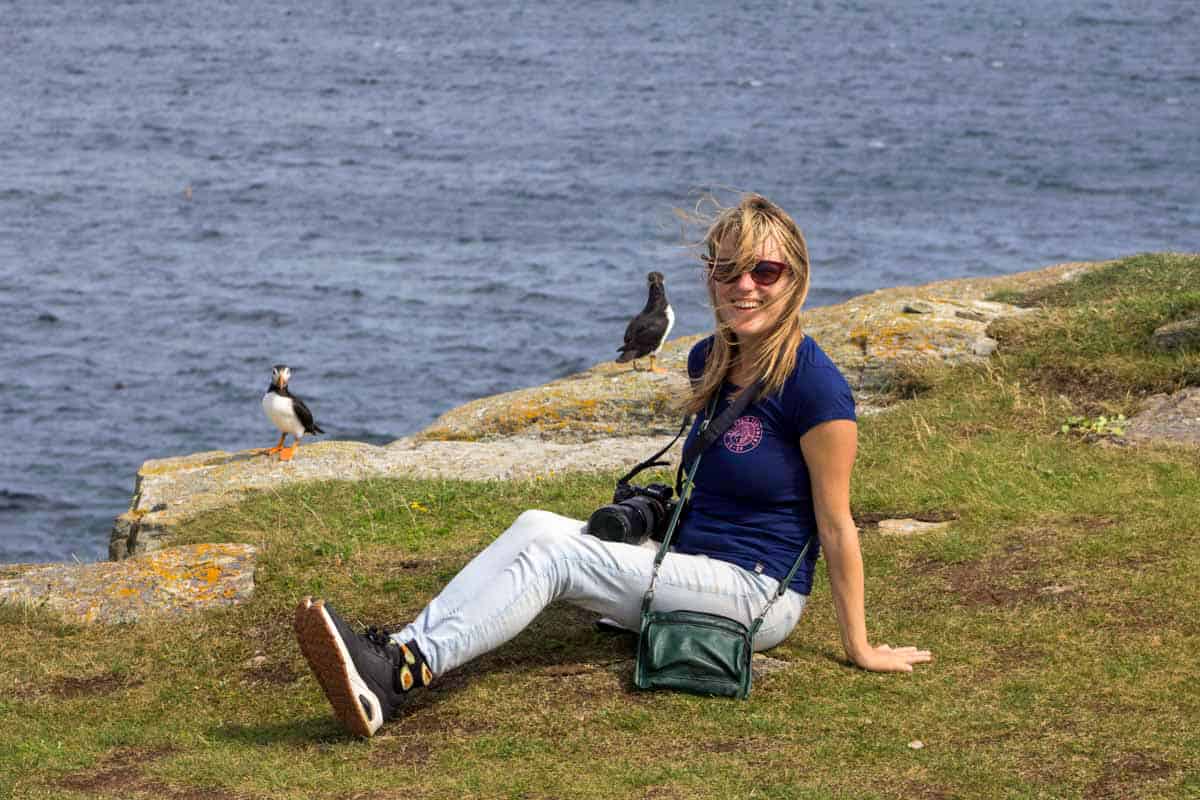
Ten Days: Nova Scotia and Beyond
10-Day East Coast Canada Road Trip
- Days 1-3: Halifax and Surroundings – Explore Halifax’s rich history and vibrant culture before heading to the picturesque towns along the South Shore.
- Days 4-6: Cape Breton Island – Drive the Cabot Trail, immerse yourself in the island’s natural beauty, and experience the local music scene.
- Days 7-8: Prince Edward Island – Discover PEI’s lighthouses, beaches, and culinary delights.
- Days 9-10: New Brunswick – Visit the Hopewell Rocks and enjoy the coastal beauty before heading back.
Seven Days: A Province-Specific Journey
7-Day East Coast Canada Road Trip Itinerary
- Option 1: Nova Scotia – Dedicate your week to exploring Nova Scotia, from Halifax to the South Shore, and up to Cape Breton.
- Option 2: Newfoundland – Fly into St. John’s, rent a car , and explore the Avalon Peninsula, Bonavista, and perhaps a day trip to Terra Nova National Park.
Five Days: Quick Escapes
5-Day East Coast Canada Road Trip
- Nova Scotia Focus – Spend your days exploring Halifax, the Annapolis Valley, and part of the South Shore for a quick taste of Nova Scotia’s charm.
- PEI and New Brunswick – Combine these two provinces for a whirlwind tour of the Maritimes, focusing on the highlights like the Bay of Fundy and PEI’s central coast.
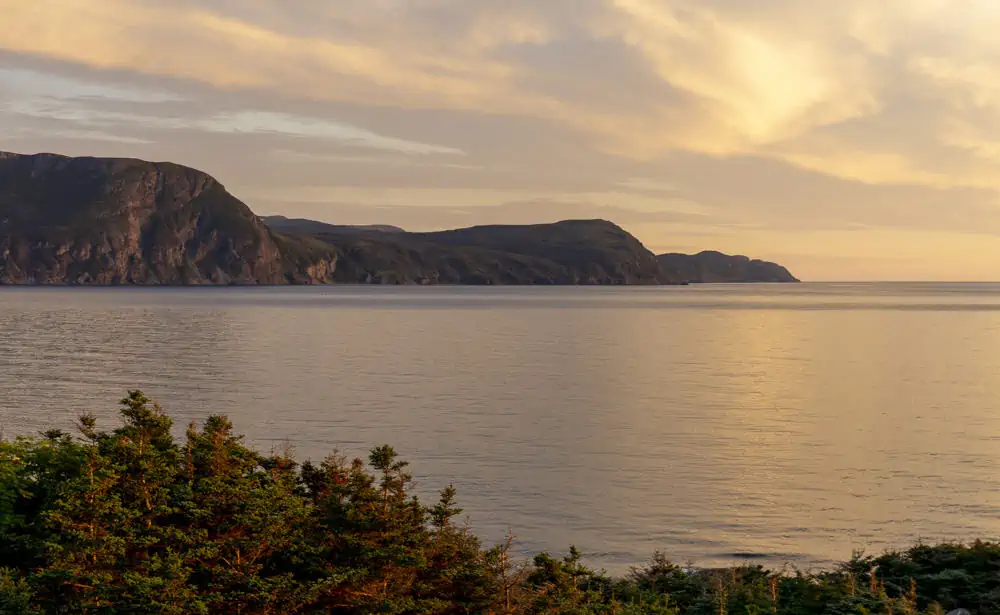
What is the best time of year to visit the East Coast of Canada?
While it’s possible to visit the East Coast year-round, I would not advise planning a Canada east coast itinerary around the winter months in Canada (November-April – yes, it can really go that long!), simply because the road conditions could be dangerous.
The Atlantic provinces are famous for their horrible winter storms making a maritime road trip unpleasant. Plus, the ferry to Newfoundland often gets delayed in the winter.
Summertime is the ideal time for a road trip, but it is also the most popular. The shoulder seasons are also great options. During the springtime, you will have fewer tourists and the possibility to see icebergs in Newfoundland.
During autumn, you can see beautiful fall colors, which will make the drive breathtaking, especially on the Cabot Trail. That said, you can expect some cold nights, and even days, if you are visiting the East coast during October.
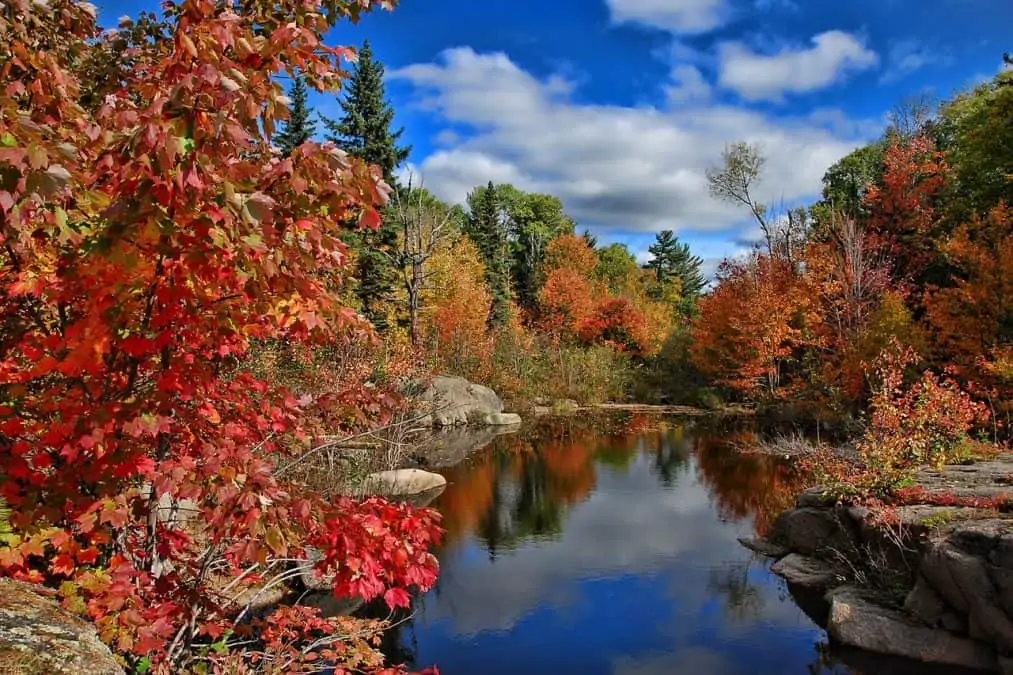
Booking A Car Rental for an East Coast Canada Road Trip
If you’re booking a car rental for your road trip around the east coast, make sure you do early. Car rentals do book up in the summertime (especially if you’re picking it up in Newfoundland)!
I use and love Rentalcars.com , which searches local and international providers to find you the best deal. Plus, you can buy insurance directly through them, so you’re fully protected!

BEST CANADA CAR RENTAL COMPANY: Rentalcars.com
When booking your Canada car rental online, I recommend using Rentalcars.com. They search both international and local Canadian companies to find the best price.
Essential Items For an East Canada Road Trip
For your Eastern Canada trip, don’t forget to bring these items with you.
- Parks Canada Discovery Pass – This will get you unlimited admission for 12 months at over 80 parks across Canada. This may be worth it if you plan to visit a lot of the national parks.
- Insect Repellant – they are fierce in the summertime!
- Road trip snacks
- Canadian cash – Most places accept major credit cards and debit but in smaller communities, you may find places that only accept cash. Bring Canadian dollars as these places will probably not exchange American money.
- Roadside emergency kit
- Canada Road Map
- First Aid Kit
- Blankets and Pillows – it gets cold in Canada, even in the summertime! You never know when those will come in handy.
- Audiobooks for the road. I love Audible for this.
- A car charger for charging your devices
- A GPS or download Google offline maps for your phone. Many rural places you will be driving through in Canada do not have cell phone reception.
FAQ: East Coast Canada Road Trip
Where should i go on the east coast of canada.
There are so many places to visit on Canada’s east coast! Some of the best places are Halifax, Peggy’s Cove, Gros Morne National Park, and Fundy National Park – check this guide for more information.
What is East Coast Canada known for?
It’s known for its friendly locals, fantastic seafood, incredible whale watching, the Atlantic Ocean, and beautiful landscapes.
Is Eastern Canada worth visiting?
Absolutely! While many people overlook the east coast for the Rockies, they are two completely different experiences. The east coast of Canada has some of the most breathtaking scenery in Canada, along with fantastic cuisine, friendly people, and endless outdoor adventure.
How long do you need to travel the East Coast Canada?
The duration of the East Coast Canada trip depends on your itinerary and interests. A minimum of 1-2 weeks is recommended to cover key highlights, but longer trips allow for a more immersive experience.
How to plan an East Coast Canada road trip?
To plan an Atlantic road trip, start by deciding on your must-visit destinations (read this post), create a flexible itinerary, book accommodations in advance during peak seasons, and ensure your vehicle is in good condition for the journey.
Where is the best place in East Coast of Canada?
The East Coast of Canada is filled with amazing places, but Cape Breton Island in Nova Scotia is often considered among the best destinations due to its stunning landscapes.
Is it worth going to Nova Scotia?
Yes, Nova Scotia is definitely worth visiting. It boasts a beautiful coastline, rich maritime heritage, charming towns, and numerous outdoor activities that make it a captivating destination.
How long should you spend on PEI?
To fully experience Prince Edward Island, it’s recommended to spend at least 2-3 days. This allows time to explore the island’s beautiful beaches, scenic drives, and cultural attractions.
What is the largest city on East Coast of Canada?
The largest city on the East Coast of Canada is Halifax, which is the capital of Nova Scotia.
What cities are in East Coast Canada?
The East Coast of Canada includes cities such as Halifax (Nova Scotia), St. John’s (Newfoundland and Labrador), Charlottetown (Prince Edward Island), Fredericton (New Brunswick), and others, each offering its own unique charm and attractions.
Final thoughts: Road Trip East Coast of Canada
Embarking on a road trip along Canada’s East Coast is an adventure filled with awe-inspiring natural beauty, captivating history, and warm hospitality.
From the vibrant city life of Halifax to the rugged coastline of Newfoundland, this journey promises to be an unforgettable experience for any traveler.
As you traverse the scenic highways, immerse yourself in the rich maritime culture, savor the freshest seafood, and engage with the welcoming locals who make this region truly special.
Whether you’re a nature enthusiast, a history buff, or a foodie looking for culinary delights, the East Coast of Canada has something to offer everyone.
Allow the beauty of the coastal vistas, the charm of the small towns, and the tranquility of the Atlantic waves to leave a lasting impression on your heart. Happy travels!
Planning a trip to the east coast of Canada? Check out these posts!
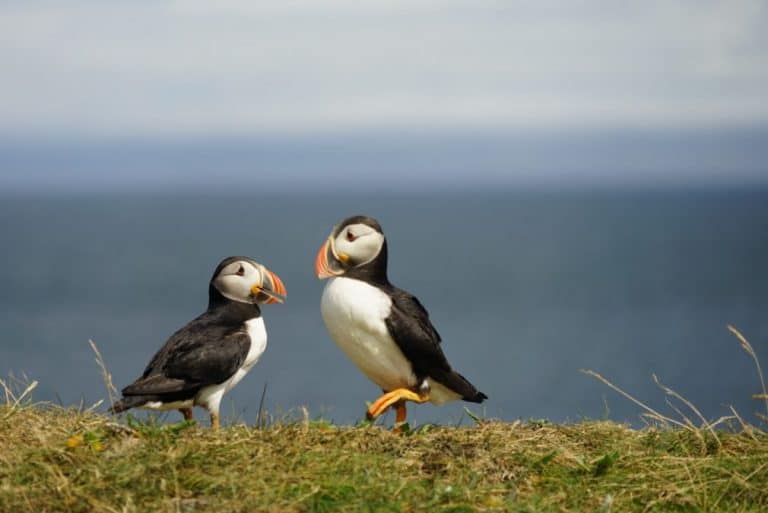
The Best Things to Do in Bonavista Newfoundland
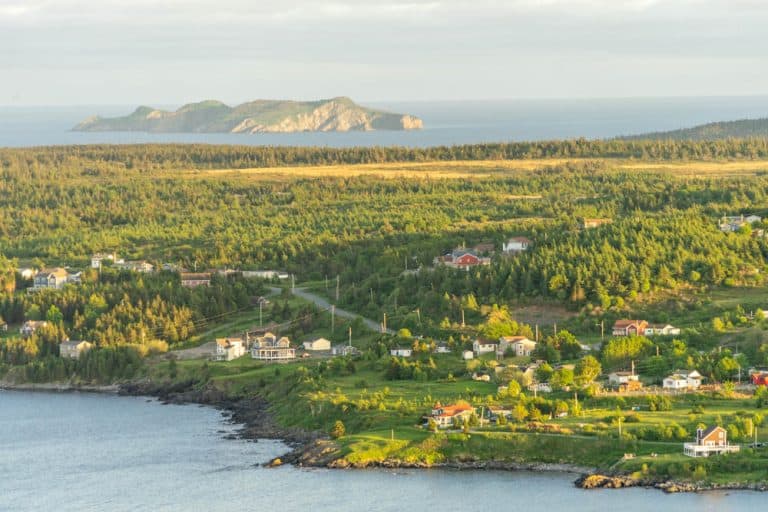
11 Stunning Places on the Irish Loop Newfoundland
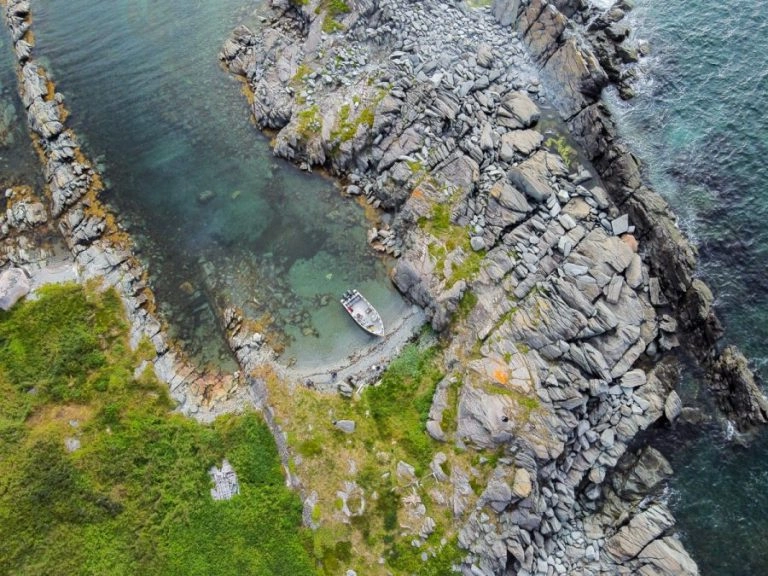
How to Plan a Newfoundland Road Trip Itinerary in 2023
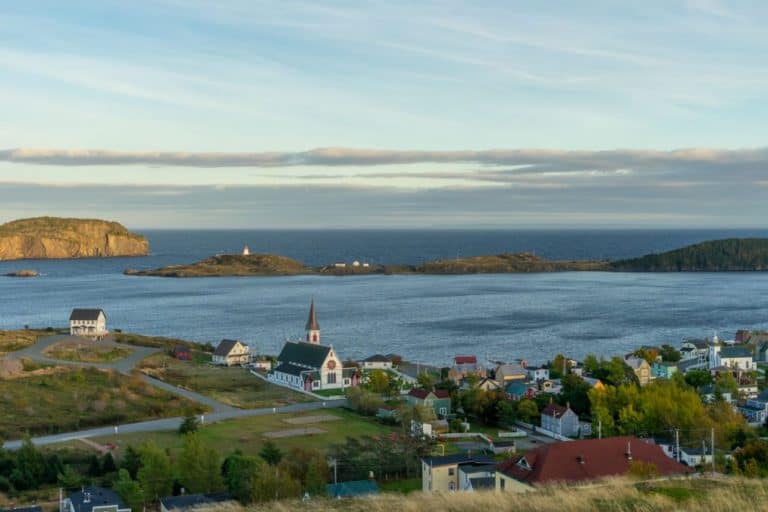
Unique Places To Stay In Newfoundland
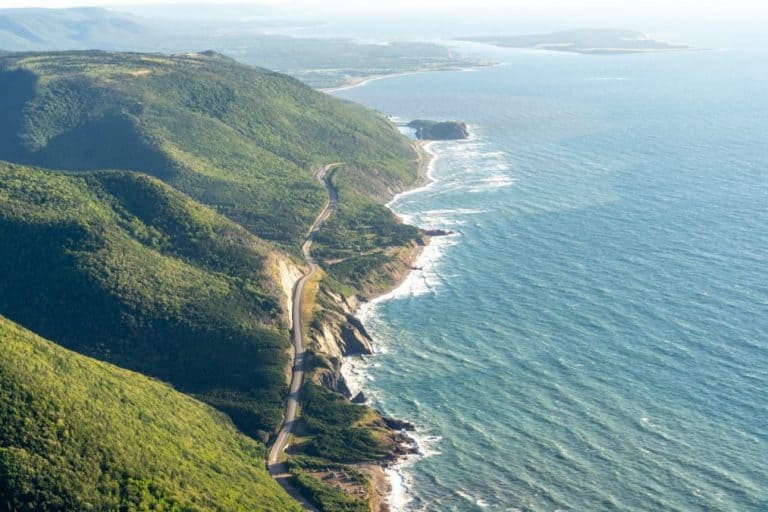
A Perfect Cabot Trail Itinerary in Cape Breton Nova Scotia
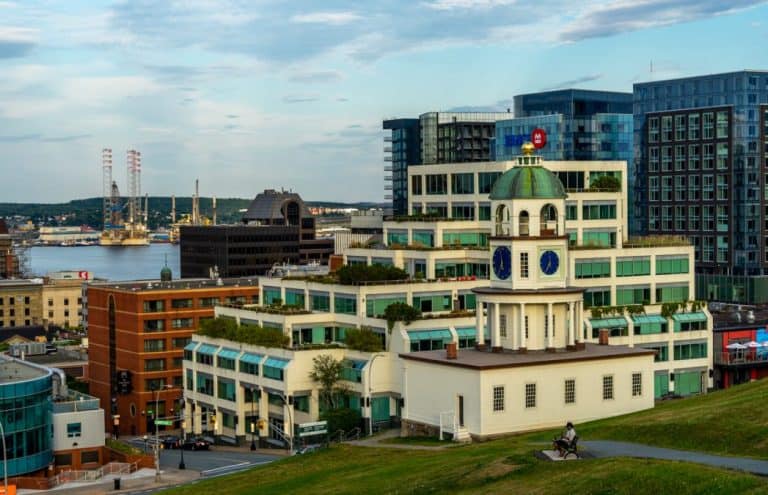
Where To Stay In Halifax Nova Scotia
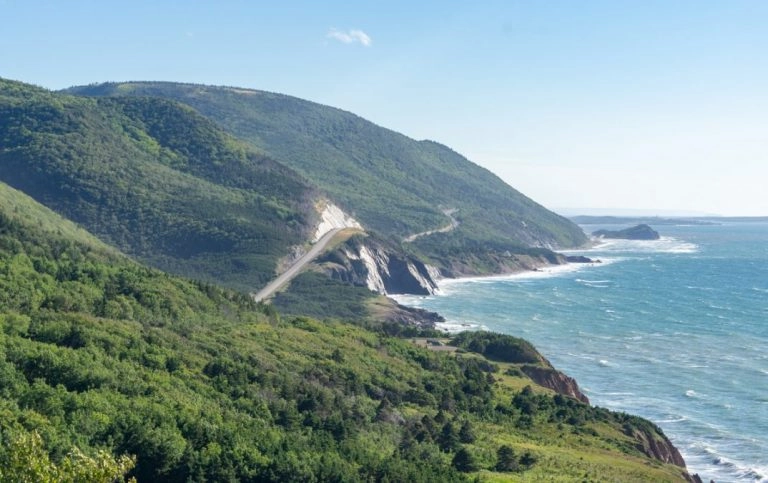
The Best Places to Stay on the Cabot Trail
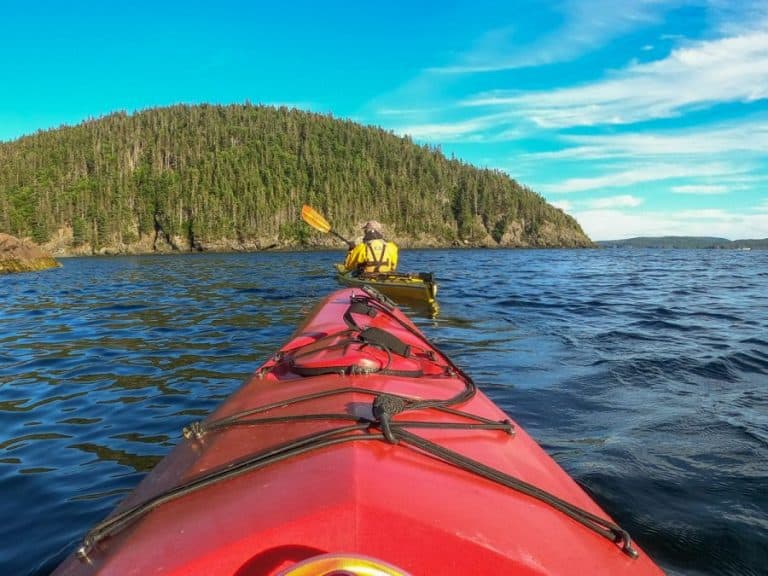
5 Best Places for Sea Kayaking in Newfoundland
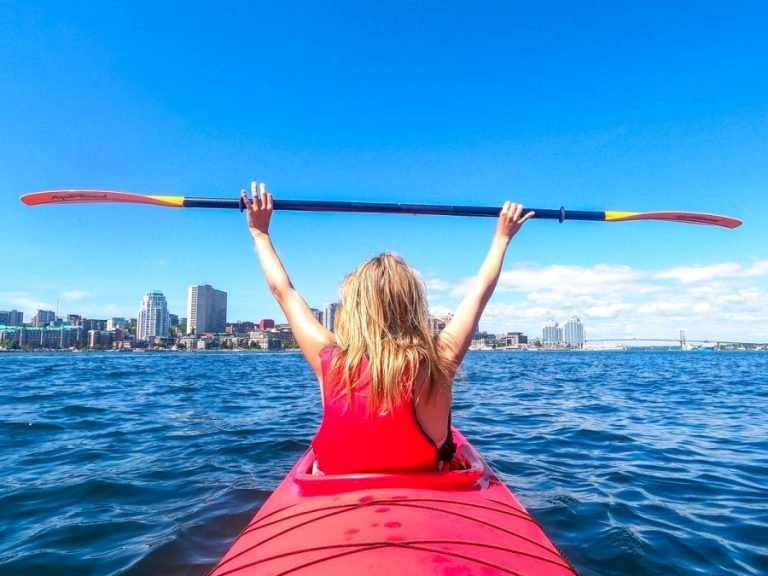
A Perfect One to Three Day Halifax Itinerary
Found this post helpful? Share the love and pin !

Lora is a full-time digital nomad on a quest to visit every country in the world and pet as many dogs as she can along the way. Over the last 15 years, she has traveled to 70+ countries and six continents solo. She currently calls Puerto Vallarta, Mexico home and enjoys ending each day with sunset and tacos on the beach.
View all posts
Leave a comment Cancel reply
Your email address will not be published. Required fields are marked *
Thankyou for this detailed itinerary! My sisters and I are planning an east coast road trip (around 19 days) next fall and the information you’ve provided is awesome.
Hi, How long did this trip take you? Thanks for all the intel!
Thank you for all of your excellent suggestions. We are planning an Eastern Canada road trip for September 2024. We are looking forward to the scenery, food and activities. We will be driving up from Louisiana and plan two weeks. Will there be plenty of options for decent hotel accommodations? Thank you!
Yes, there are many great hotels along this route that I have suggested.
Hi Lora, My 2 friends and myself would like to take a road trip for about 2 weeks next year (2023) to the East Coast and visit all four(4) lovely provinces. We all work together in the hospital and after the last couple years (with the COVID Pandemic) we all decided we REALLY need a break and a nice vacation. This road trip has been on our bucket list for quite a while now. We are hoping to save enough money by next year to do this amazing trip. A trip to be remembered!!!! Questions: (1) to visit all those wonderful places you mentioned and stay in nice B&B’s in all 4 provinces and really spend time with all the wonderful folks out East. Approx $$ for each person with our own single rooms. Just an approx $$. We will not hold you to that $$, just wondering and hoping we can make the trip re: our budget. (2) Approx in gas? (3) Do we stay in a motel/hotel/B&B along the way? Would you be able to plan our trip for us and do the bookings at the B&B or hotels? (4) We are thinking in May/June? Would you recommend those months? Oh … I should mention, we all live in the GTA area in Ontario and will be leaving from there. We are planning to rent a vehicle. Please help us make this trip a “dream come true” Thank You Lora!! :-))
Thanks for this info Lora! I am going to use this when I cycle and driveEast in a few days. All the best to you!
travelling in an RV, my main concern is heading over to NL, will the ferry take an RV, and any good parks in NL stay? And is the ferry wheel chair accessable?
Hello! And thank you for such detailed info for the East Coast .My husband and I are planning a short 9-10 day road trip to east coast. this coming week. We were planning to drive straight to New Brunswick. Any suggestions on where to go for camping that I don’t have to make reservation? possibly in the Saint John, we’re planning to go all the way to Nova Scotia with this 9 days trip. Please let me know just the important places that we should see. Hope you can help. Thanks in advance……..
Hi Lora, Thanks for such a wonderful travel guide. I am planning a road trip from Toronto to St. Johns or NFL by end of June. I will be traveling with family including Kids. I will leave the city on Thursday evening and so far I am planning the following Thursday | Home->Montreal Friday | Montreal->New Brunswick Saturday |New Brunswick->North Sydney, NS Sunday 7 AM | Channel-Port aux Basques, New FoudnLand Monday Tuesday Wednesday Thursday Friday (11 AM Ferry) | Channel-Port aux Basques->North Sydney, NS B2A 3V2 Friday | North Sydney, NS-> Moncton, New Brunswick Saturday | Qubic City Sunday | Home (Pickering)
So I will have a total of 5 days in NFL and I need your help to plan these 5 days (Sunday, Monday, Tuesday, Wednesday, and Thursday). We both can drive so driving is not an issue. We are interested in Whale watching and icebergs if still, we can see them.
Please guide me how I should plan these 5 days.
Hi Lora, I’m curious about your quoted time of 2 hours from Hopewell Rocks to Moncton? Google maps says it is a 30 minute drive, and now I’m worried I’m missing something? Thank you
Hi Lisa! Thanks so much for your comment. You are right, it’s just over half an hour to get between them so that was just an error on my part. Thanks for bringing it to my attention, it’s been fixed!
Do you have any other whale watching recommendations? We will only have a week with our 3 kids and are thinking of flying in to NB from Toronto to save time on the drive through Ontario & Quebec. We will likely just end up doing NB and PEI…maybe NS…think we’ll have time?
There is good whale-watching in New Brunswick by Saint Andrews by-the-sea! One week is enough to visit them but it will be rushed. I would spend at least half the week in Nova Scotia!
This is great – I may have missed this and will re-read your post, but how long did it take you to road trip across the east coast and as woman would you safe it is safe if I do it alone? Thanks for sharing this post and it is really very intresting east coast Canada road trip.
I’ve done it many times as short as 3 days to as long as 3 weeks, it just depends on how much you want to see! Yes, the east coast is extremely safe to travel I’ve done it solo many times.
Great article! I am planning about a 2 1/2 month trip for next summer and hoping to hit most of what you suggested. We will be traveling with a truck and trailer from about mid June to early September. Based on weather and crowds, I have two questions for you. Any idea for camping if reservations will be needed for National or provincial parks? And what would be your suggested order for the provinces coming from Maine? Was thinking of NB, NF, NS then PEI? Thanks, great article!
Hi Darlene, if you’re planning to visit the parks over the long weekends (Canada day, the first weekend of August, and labor day), I would make reservations as they can get really busy then. Otherwise, a few days in advance should be fine and the provincial parks usually have walk-in space (national ones can get busier in the summer). The order you suggested sounds perfect to me!
In the middle of October, are leaves still on trees on the east coast in NB and NS?
Yes they should be!
Hello and thank you for sharing your experiences. I’m planning a last minute roadtrip the first three weeks of Sept 2021.
I’m looking at starting from TORONTO and making my way out EAST and then driving back of course. Will be using personal vehicle and travelling with my spouse ( no kids )
Any recommendations itinerary wise ? I believe 3 weeks should be enough time to see and do a fair amount.
Thank you in advance for your time
3 weeks is enough time to see all four provinces! I would spend a week in Newfoundland, one in Nova Scotia and the other split between PEI and New Brunswick.
Hi Lora, thanks a lot for this information – it already helps me a lot 🙂 I will go to Canada in October and will spend there 4 weeks. I would have more time, but I think, it would get cold in November. What would you think? Yes it really depends on mother nature … 🙂
As the temperature is getting low during my trip from beginning October till end of October, could you recommend me a good starting point? Is it better to start in Toronto or in Newfoundland? Or doesn´t it make a difference?
I will come from a one-month-trip in Iceland, so I would get used somehow to colder weather, but maybe you have some advice for me ? 🙂
Hi! So glad you found the post helpful. It can definitely be cold in Atlantic Canada by November – even in October! It stays warmer in Ontario longer (I’ve experienced 20+ degree at end of October in Toronto), so I would actually start in Newfoundland and end in Toronto to make the most of the weather 🙂
Thanks so much for this perfect article, I’m planning for a small group 17 people 1st time ever driving from Toronto to Atlantic. This article perfectly giving me all ideas we can explore. Thanks
Thanks so much for your nice comment! I’m so glad you found it helpful.
Hi Lora, great article. We are thinking of taking a 2 week family road trip this summer from Toronto, do you think that’s enough time to explore the east coast? Thx
Thanks! Two weeks is absolutely enough time – there’s an example two week itinerary in the guide 🙂
Hi Lora, Excellent presentation and very nicely explained all relevant issues for travelling. I have sent you an email also seperately for guidance but I know you are very busy. In fact I want to visit Nova Scotia, New Brunswick and PEI with a friend from Brampton. We will fly from Toronto to Sydney and back from Halifax. We will get a car rental for visiting other provinces. My preference is Cabot trail and other areas to be covered in 8 days. Kindly guide.
Hi, I would spend at least 2-3 days to drive the Cabot Trail – it’s so scenic you’ll want time to stop and soak it in. PEI is a very small province, you could see a lot in just two days. If you take the bridge from New Brunswick you’ll be close to Moncton, although I personally prefer Fredericton. It’s worth spending a day or two in Halifax as well, but that’s about all you could fit in!
Hi Lora, we are planning to visit Atlantic from Aug 14-Aug22(must be back to Toronto Aug 22), we are planning to stay 1 night in Quebec for example leaving Toronto to Quebec city on Saturday Aug 14 morning, stay a night in Quebec, then leave Quebec around afternoon Sunday, please advise the next beautiful stop we should stay for 1 or 2 nights? group of 20 people 8 kids ranging from 3-11 years old. Thanks so much
Thanks for so much great info! We are planning an -unfortunately- fairly rushed road trip in our camper van next month. Leaving from Muskoka on the 19th and we have to be home on the 29th. Staying near Quebec City the first night, somewhere close-ish to Fredericton the second night, then the weekend visiting friends in PEI. Monday morning we will board the ferry to NS and do a couple days on Cape Breton Island. We pretty much have to start heading towards Ontario on Thursday, or at the very latest, Friday. Two questions: 1) Is it fairly easy to “free camp” in PEI and Nova Scotia, or do we really need to book campsites? We are self-sufficient with a solar fridge, stove and composting toilet in a 19′ van. 2) If we do Cape Breton (Cabot Trail) over Monday-Tuesday, what’s the #1 thing you’d suggest for Wednesday/Thursday? Do we go west to Halifax/Lunenberg area? My concern is we might be burnt out from driving so much, but we also want to make the most of our time out there. Leaving from Halifax instead of closer to NB means a few extra hours of driving overall. I have been to Halifax/Peggy’s Cove/Lunenberg but my partner has not. Thanks in advance!
Hi Ashley, I have only camped at campsites but if you are a resident of Canada and self-sufficient you could camp on crown land for up to 21 days. I’m sure there is lots of it there, but I’m not an expert in this area.
If you have been to Halifax/Lunenberg and don’t want to add on the extra driving I would just stay on Cape Breton Island. Two days isn’t a lot of time there, the cabot trail is so beautiful I spent a week on it! Inverness or Baddeck are two nice spots on either side of where it starts. I am not super familiar with the part of Nova Scotia between Halifax and Cape Breton Island so can’t make specific recommendations for there, but I think you could easily spend more than two days in Cape Breton and enjoy yourself!
Hi Lora, thank you for all the information you have provided. We are from Alberta and have planned to visit the East Coast Aug 26 – Sept 7th and hoping to see highlights in all provinces. Will check out your article on vaccination status for all provinces. Quick question – is it worth the long drive from Montreal to New Brunswick or should we fly? Thanks for any info you can provide.
If you are flying anyway I would just go to New Brunswick. Montreal is a great city and Quebec City is a nice stop along the way but if you are limited on time and want to see all four provinces it’s better to just fly.
Hi Lora, Thank you so much for this great article. I would love to start planning a short east coast trip to Nova Scotia, Newfoundland and PEI at the end of august (August 19-29). I live in Ontario. Do you maybe have any more specific information about the border restrictions for people from other provinces? Thank you!
Hi Cloe, I just updated the article with the latest information. Border restrictions depend on your vaccination status – fully vaccinated travelers can visit all four provinces, but you will have to apply for a PEI Pass for PEI.
This is great – I may have missed this and will re-read your post, but how long did it take you to road trip across the east coast and as woman would you safe it is safe if I do it alone? Thanks.
I’ve done it in as little as 3 days and as long as a month! It really depends on how much you want to see but I’d recommend at least one to two weeks. It is safe to travel there as a woman alone – I did last summer! Atlantic Canadians are extremely friendly and helpful 🙂
Hi, thank you for all of the info. Ten of us rented an RV and have booked our trip for Sept 3-10. We want to eat fish, do a lot of water activities and sightseeing. Since we have only a week and have no wish to see Montreal. Can you help me choose best places. We are from Toronto and are so tired of being on lockdown.
Hi! Without stopping somewhere in Quebec it will be a long drive to New Brunswick (14 hours) but doable if you guys don’t mind a long day of driving. I would recommend spending most of your time in Nova Scotia by the coast, they have tons of water activities and delicious seafood.
Hello Lora! Your blog is so informative and what beautiful pictures! I want to plan an East Coast trip this summer but I’m waiting (and hoping) for some travel restrictions to loosen up so we can visit from Ontario. If not, then I will save this information for 2022! I have a question for you. I know you said that Newfoundland shouldn’t be missed but we only have 3 weeks and when I followed most of your itinerary that didn’t leave me much time for Newfoundland. Is there a place for whale watching in the other 3 provinces?
Thanks so much! Yes for sure, there are lots of places to go whale watching on the East Coast. You can go in St. Andrews by-the-sea in New Brunswick, as well as Cape Breton Island in Nova Scotia. I do think Newfoundland is the best place for it though! Really hope you can make it out to the east coast this summer!
This is very informative.
Was just wondering if you could suggest a perfect Canada East Coast road trip itinerary with RV Camper that last up to 16 days (3 adults)? I have seen and read many but l just don’t know how to manage that. The idea is to do a road trip from Montréal – Nova Scotia (16 days) or just Nova Scotia (16 days) suggesting probably “must see” places and camping possibilities. The road trip is planned for next year 2021 summer (hopefully by then the pandemic is under control). Wouldn’t mind if you can email me your ideas also per email.
Thanks for your time.
Cheers Mitch
Hi Mitch. You can definitely plan a great road trip from Montreal to Nova Scotia with 16 days. You’ll have to drive through New Brunswick anyway so I suggest spending a night or two there on the way and back. Fundy national park is a great place to visit! That should still leave you with 10 or more full days in Nova Scotia, so for the rest of your itinerary, it depends on what you are interested in seeing. I love Cape Breton island for the Cabot Trail, I’d recommend 3-5 days to do that. The Halifax area is great too, and there are a lot of fun day trips to small towns you can take from there.
Hi Lora, Thank you for such an informative post! You’ve helped me narrow down most of the places I wanted to go as I’m currently planning an Eastern road trip! I wanted to know what your estimated budget was for the entire trip, if you don’t mind my asking. Thank you again 🙂
That’s awesome, glad to hear! That’s so variable depending on how long your trip is, if you’re renting a car, camping or staying in hotels, solo etc. If you give me more details I can try and help!
I live in Vancouver and have never been to the east coast so this is all high on my bucketlist! Looks beautiful 🙂
Vancouver is a beautiful spot too!! Hope you can visit the East Coast sometime 🙂
I love all those rugged coastal views with the reflections in the waters and the lighthouses. I already love the West side of Canada, but I do really like the idea of exploring the Eastern coast as well. It looks like SUCH a fantastic area to hike, and then eat icecream.
p.s. My mum loves Anne of Green Gables…I wonder if telling her that would be a good way to lure her to Canada!? 😉
I love the West coast of Canada too, but the East coast is a completely different experience! Haha I think that would definitely get her there if PEI is on the itinerary!
This is a very informative guide. Definitely will refer to it in future when I go.
Glad you found it helpful! 🙂
Yay for road tripping! I haven’t had a chance to explore too much of Canada but would love to someday! I wanna visit the national parks!
Hope you can someday! We are lucky to have so many beautiful national parks 🙂
Your photos alone make me want to pack a bag and hit the road! I’d love to do a coastal drive of Eastern Canada and PEI has always been on my radar!
Happy to hear that!! PEI is gorgeous, hope you can visit sometime!
- South Africa
- Philippines
- New South Wales
- Northern Territory
- South Australia
- Western Australia
- Switzerland
- United Kingdom
- Netherlands
- New Zealand
- Solomon Islands
- Itineraries
- About Travel2Next
- Hotel Reviews
- Travel2Next TV
- Travel Shop
- Explore Canada
- Things To Do
Driving Across Canada
How to Plan a Canadian road trip: After a 6-week trip across Canada, these two Roadies have insider’s tips you'll find extremely useful. Additional text by Eric Fletcher.
- This post may contain affiliate links. Read our disclosure.
With images of “Easy Rider” and freedom dancing in our heads, my husband Eric and I had fun planning then enjoying a six-week Canada road trip from Quebec to British Columbia this summer. Driving across Canada is a great way to explore the country and road-tripping in Canada is perfect for active travellers.
We paddled, hiked, and horseback rode, taking our Toyota RAV4 with our home-built canoe, Windigo, secured on the roof.
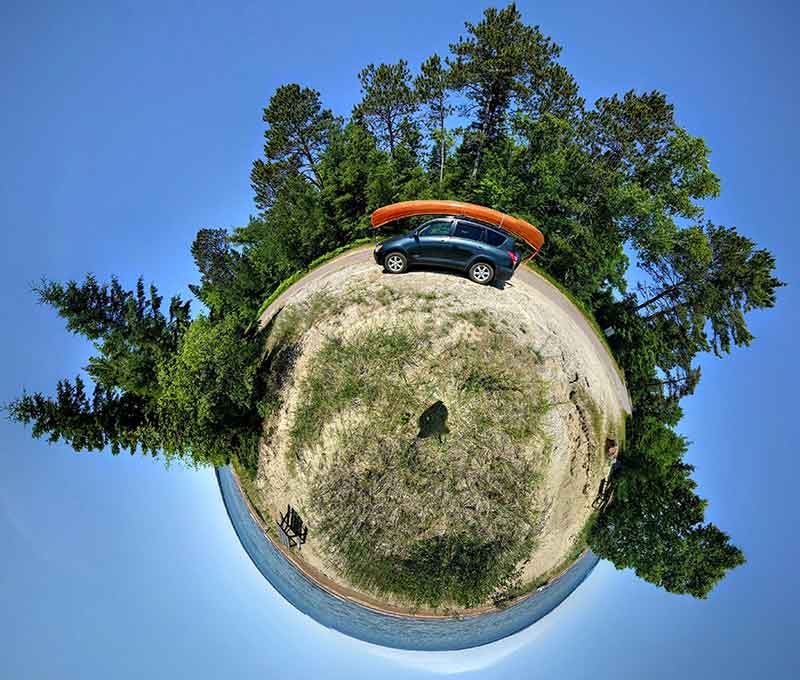
We stayed in historic B&Bs, funky Parks Canada oTENTiks (hybrid tent-cabin lodgings) and a few motels but this was primarily a camping trip.
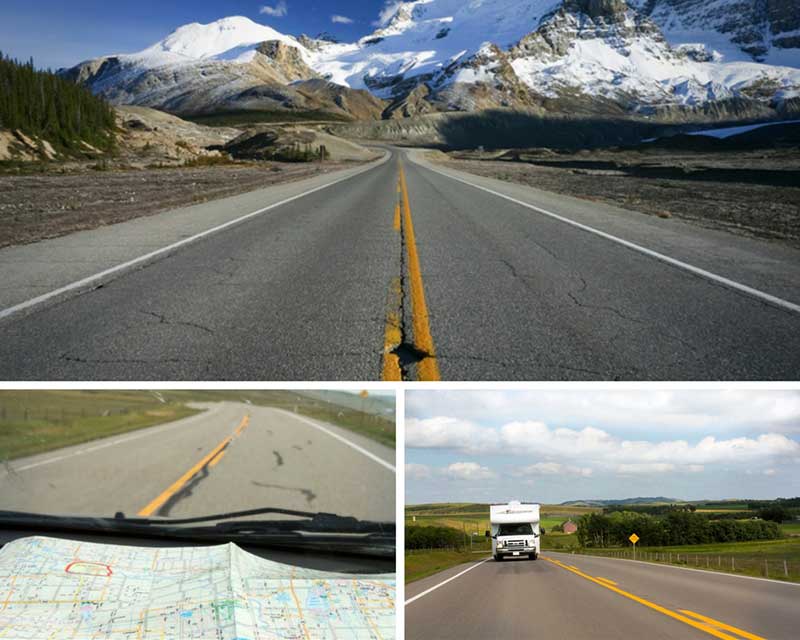
Apart from our two-week remote horseback riding expedition in northern British Columbia, by choice, we were online regularly while driving across Canada.
As a writer-photographer team, this enabled us to incorporate some work into our normal “busman’s holiday” while we saw some fantastic Canadian landmarks and discovered many wonderful things to do in Canada .
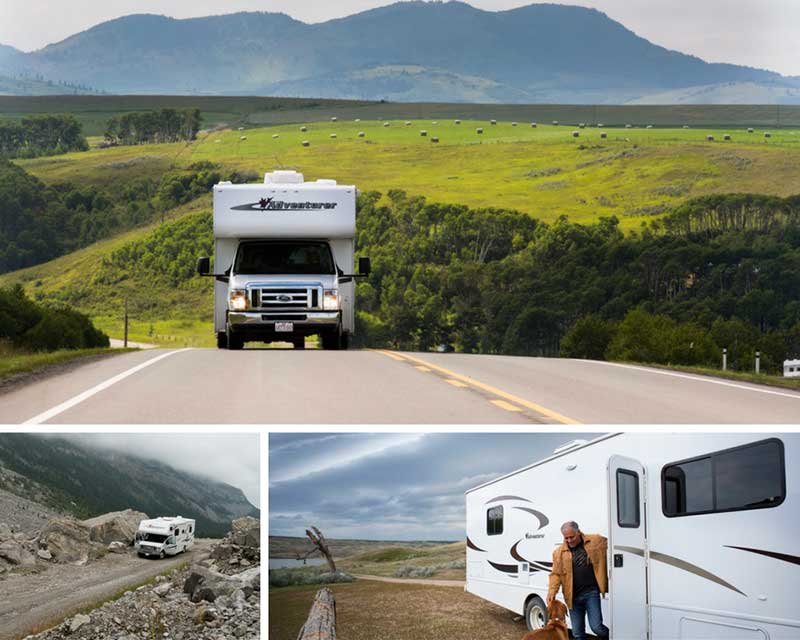
Many of us want to do the grey-nomad thing, where we pack a vehicle and take off exploring.
Here are our tips to assist you in planning hassle-free road trips driving across Canada, including five very different Canadian destination recommendations.
Besides taking the train across Canada , there’s no better way to feel the heartbeat of Canada than to go driving in Canada.
1- Pre-planning your drive across Canada route
2- online tools for a canada road trip, 3- driving across canada using a gps, 4- mobile phones and calling home, 5- banking and credit card smarts, 6- passports, 7- electronic stuff, 8- planning for your canada road trip, 9- wildlife in canada, 10- planning your house sitting team, 1- the cross-canada drive, 2- the gentle isle: prince edward island, 3- the cowboy trail: calgary to waterton lakes national park, 4- klondike gold rush: whitehorse to dawson city, bc road trip itinerary, where to stay, canada road trip tips.
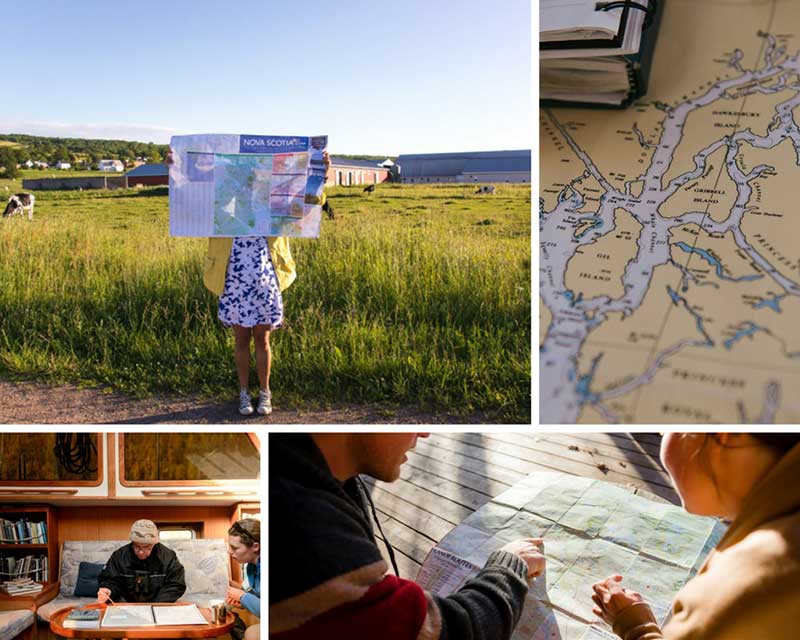
We always pack paper maps and not only provincial road maps: if we’re venturing into the backcountry, topographical maps, too.
World of Maps has a good selection, while Natural Resources Canada is the creator-dispenser of Canadian “topo” maps.
We also use websites and apps to plan and track our routes while driving across Canada.
Online tools will show you accurate distances and driving times.
You can divide the total by the number of days to get a sense of how much driving you’ll need to do each day.
Although “all-nighters” are doable, we usually drove four to six hours, to allow for paddling Windigo, hiking, visiting with friends and family and other serendipitous happenings.
From experience, we found that a long day of driving in rain could give us a spare day further along.
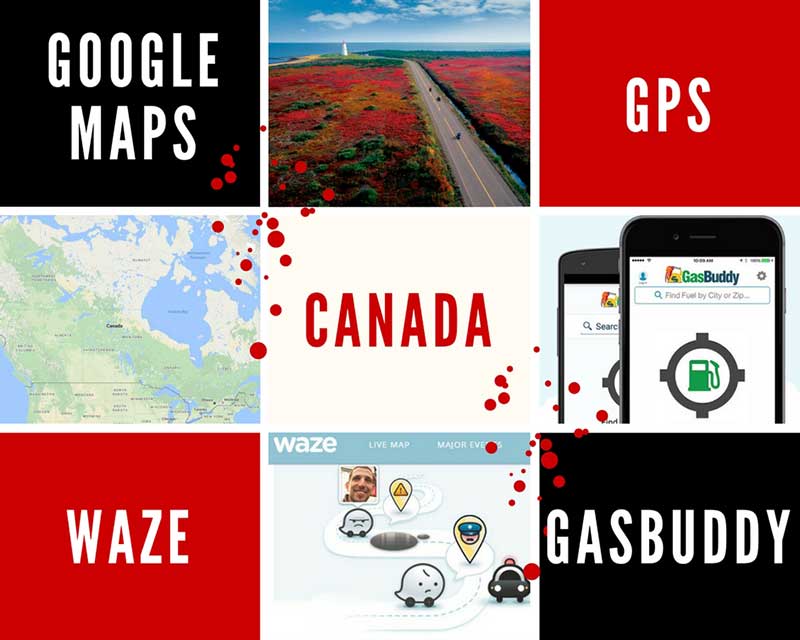
We used Google Maps to plan and track our route because it runs on both our iOS and Android mobile devices.
And, most handily, it can work offline if map data is pre-loaded.
This is essential for operating in areas with no data connection and to reduce internet costs on our cross-Canada drive.
Useful iOS and Android road trip apps to download are:
- Google Maps to plan your route
- Waze (for planning routes under 1,600kms)
- The Weather Network for weather forecasts
- Gas Buddy (for finding cheap fuel nearby)
Check to see if your credit card gives you extra points for patronising specific brands of fuel stations.
Consider bookmarking sites that will give you ready access to the information you may need on the fly.
As news junkies, we relied on CBC (Canadian Broadcasting Corporation) Radio’s frequency lookup page to know where to tune the dial for the hourly news.
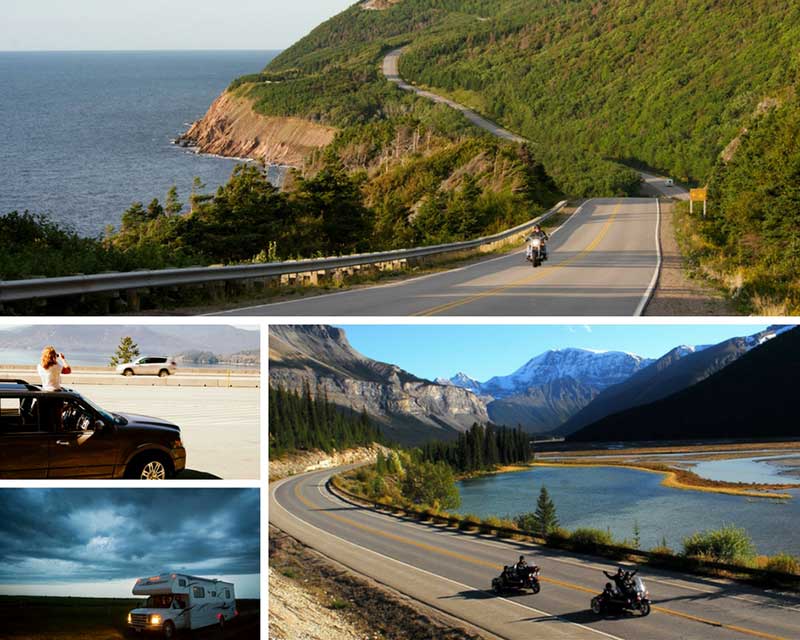
GPS devices (SatNavs) come installed in most rentals but do check and do take the time to learn how to change the settings to fit your driving preferences.
For example, if it is set to calculate the shortest route, you may want to turn on the “avoid unpaved routes” option to prevent it from including shortcuts using gravel roads.
Canada road trip tip: Learn how to record the current precise location coordinates on your GPS (or on your mobile device).
This proved crucial as while driving across Canada, we arrived at a serious motorcycle accident on a mountainous stretch of highway.
We captured the precise coordinates, then drove on to the first area with a signal to dial 9-1-1 (Canada’s emergency line) to provide the precise location for an ambulance and police assistance.
Your home cellular provider may have roaming plans that can work in Canada but do check before you leave home as costs may be prohibitive.
North American mobile services operate at different frequencies than most of the world.
If you have an unlocked tri- or quad-band GSM phone , a better alternative may be to purchase a SIM card .
Some can be purchased before you arrive but you can also purchase pay-as-you-go cards at 7-Eleven convenience stores and Petro-Canada gas stations.
Canada has reasonable data and telephone coverage along our highway systems and free WiFi is often available in places such as Tim Horton’s, Canada’s coast-to-coast coffee and doughnuts shop (which also has good WCs, incidentally).
However, reception on backroads is iffy and in the mountains, well, good luck! Before you leave home, learn how you may be able to pinpoint the location of your device if it is lost.
For most devices, entering *#06# will display the unique IMEI number that identifies your mobile device.
You will need it to activate a SIM or to have the device blocked for use on Canadian wireless networks.
Most jurisdictions in Canada prohibit the use of hand-held devices while driving.
Even if you are able to sync your device to your vehicle for hands-free operation, plan to let your passenger manage it while you focus on the road.
Check with your home bank to learn which of the Canadian banks have reciprocal arrangements to minimise transaction costs for your debit and credit cards when driving across Canada.
Figure out how your GPS or mobile device mapping tools can locate banks with ATMs (they’re called ABMs or Automated Banking Machines in Canada).
If you use online banking, understand how your security works and refresh your passwords.
Tip: To avoid missing bill payment dates, consider pre-paying accounts before you leave.
Ensure your credit cards are activated for Canada (contact your bank) and advise the credit company so they know you’ll be making purchases abroad.
Put a limit on the amount you will accept on your card in case it is stolen.
Are they current?
Also, ensure the name you book flights with is exactly the same as it appears in your passport.
Regardless of whether you pack a smartphone or a DSLR, laptop or GoPro, battery power is a huge deal – read: being without juice is more than a pain, for some of us it’s a non-starter.
What to do?
Packing a cheap 12V plug to USB adaptor isn’t a great idea as most are limited to 1A output, so can take a long time to charge a device.
Instead, opt for a charger with >1 USB outlet able to deliver 2.1 amps each to charge your devices more reliably and more quickly.
The Aukey charger we used kept both of our devices topped up as we drove.
For extended power when we were not driving, we packed two external battery packs chargers with USB outlets.
They were used to keep our cameras and smartphones powered up during our 12-day wilderness horseback trek.
You might also want to consider a portable solar charger to carry with you while in the wilderness.
Canada road trip tip: Take a box to contain your charging gear and keep them out of sight.
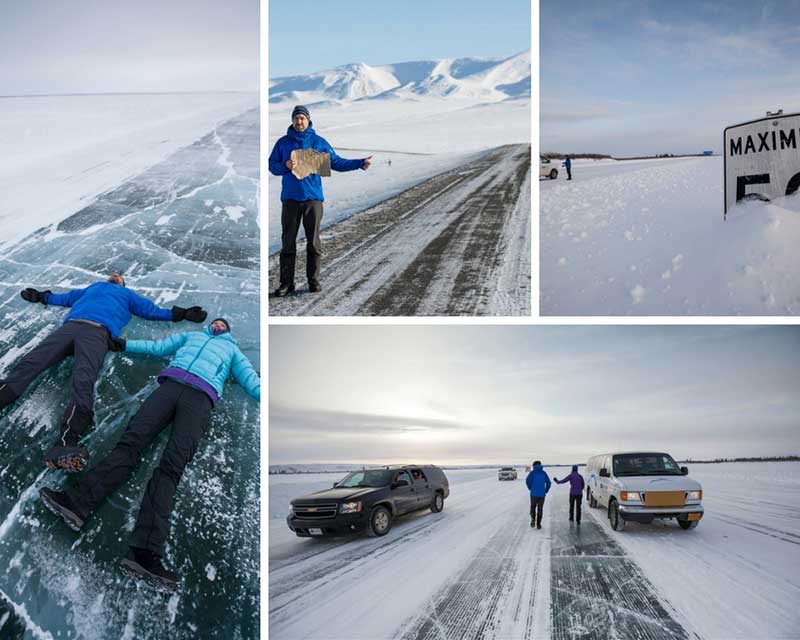
Although a winter road trip is doable, unless you’re a keener for snowstorms and ice, plan to come during summer when roads are clear.
Canadian road trip tip In Canada’s North , light (or its absence) needs to be considered. Our northern latitudes aren’t known as “Land of the Midnight Sun” for nothing, where during summer there’s no lasting darkness and in winter, no sunshine.
For useful information, while driving across Canada, check out websites for the Trans-Canada Highway, which lists current weather warnings and maps.
Browse Parks Canada’s National Historic Sites , National Marine Conservation Areas, and Parks. And discover private campgrounds, too, by Googling.
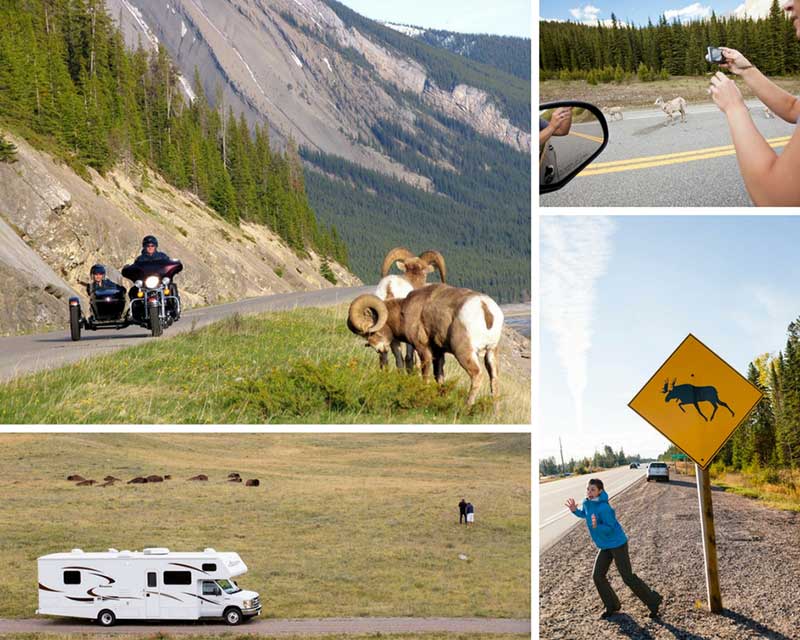
Finally, no one wants to injure wildlife and Canadians know to be careful at dusk and night particularly during summertime when deer, racoons, skunks, moose and other critters roam.
More unappealing wildlife, such as biting insects, can be fierce while camping so pack repellant sprays and mosquito coils.
Here are some places to see wildlife in Canada .
Of course, hunting and fishing are a big draw to some but make sure you have the proper licenses, which are different for each province.
Police or game wardens will check and will confiscate your catch plus fine you if you do not comply.
Before leaving home do you have pet sitters, plant sitters or house sitters organised?
Do you have a house manual with emergency numbers?
If you rent your home, create a Letter of Understanding that your tenant and you co-sign, and advise your insurance company or neighbours or friends.
Best Road Trips in Canada
6,521 km /4,025 miles
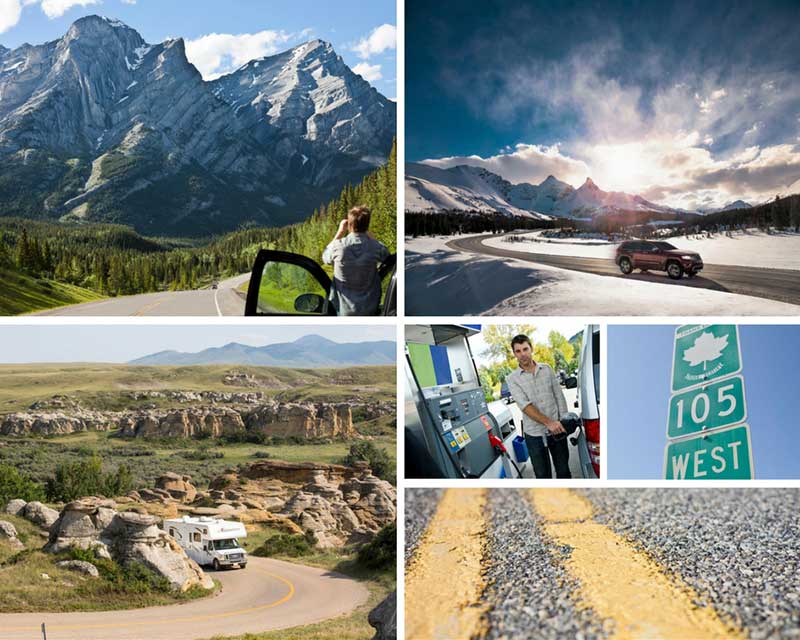
Want to get a sense of Canada’s vastness by road and ferry?
At a minimum, take a summer’s three-to-four months and explore Newfoundland, Prince Edward Island, Nova Scotia, New Brunswick, Quebec, Ontario, Manitoba, Saskatchewan, Alberta and British Columbia.
From a Newfoundland kitchen party to whale watching off Victoria – and everything in between – you’ll experience Canada’s culture and wilderness.
Plan for several months (or Gap Year adventure) so you can relax, meet locals, experience fabulous festivals and perhaps First Nations Pow Wows and more.
218 km / 135 miles
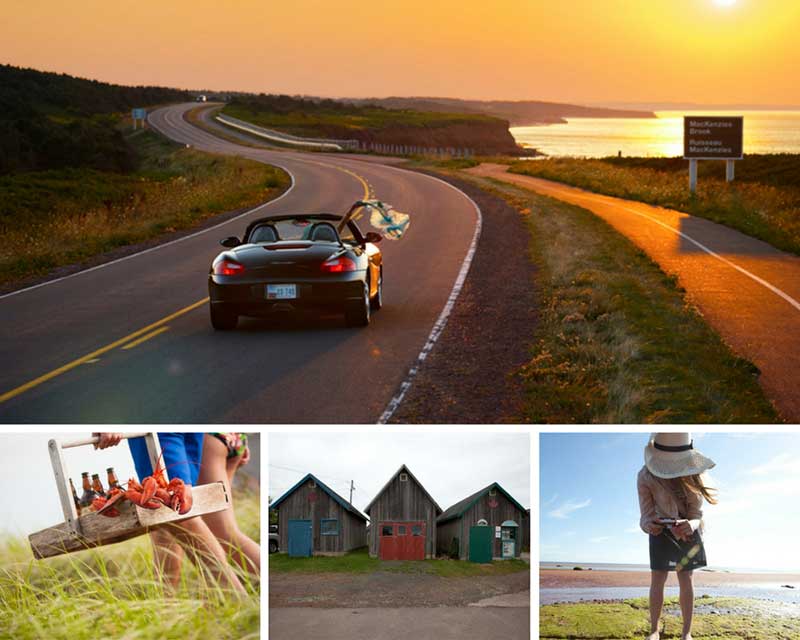
Sometimes known as “Anne’s Island”, PEI is a dream-come-true destination for a family vacation because of beaches and genuinely laid-back, warm welcomes visitors receive everywhere.
Who doesn’t love Anne of Green Gables?
If you haven’t discovered this red-headed imp of a Canadian heroine, read the book, then visit author L. M. Montgomery’s (and Anne’s) charming farmhouse museum.
Visit Charlottetown’s Confederation Centre of the Arts and learn about how the capital of PEI was the birthplace of Canada in 1867. Then, discover uniquely on-island (or on-ocean) authentic experiences such as “I dig, therefore I clam kayaking adventure .”
258 km / 161 miles
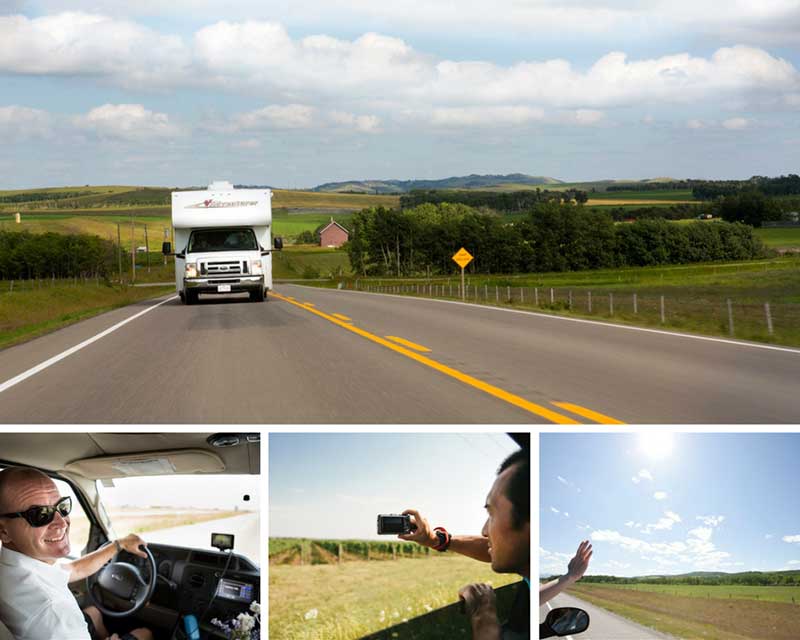
Explore your inner cowboy in Calgary or “Cowtown.”
Visit in early July during the Calgary Stampede to get into the mood, watching roping contests, bucking broncos (horses are bred for this) and country music shows.
Live like a local first by visiting the Alberta Boot Company to buy an authentic Stetson (cowboy hat) and a pair of boots.
Don’t miss the Glenbow Museum to learn about First Nations culture.
Then? Drive Highways 1A west then 22 south of Calgary to visit a host of Canadian cowboy and First Nations sites.
Favourites include Bar U Ranch National Historic Site (the Sundance Kid spent time here hiding from The Law. Remember Butch Cassidy and the Sundance Kid?
Once world-renowned for its Percheron horse-breeding program, today the 1882 site showcases ranch life in Canada.
Waterton Lakes is a national park where we thoroughly enjoyed exploring on horseback on a two-night camping trip, riding sure-footed steeds from Alpine Stables.
Finally, return to Calgary via Head-Smashed-in-Buffalo-Jump to learn about the bison (buffalo) and how early peoples of the plains stampeded them over precipices to gather meat, hides, bones and seemingly everything from these sacred creatures.
525 km / 328 miles
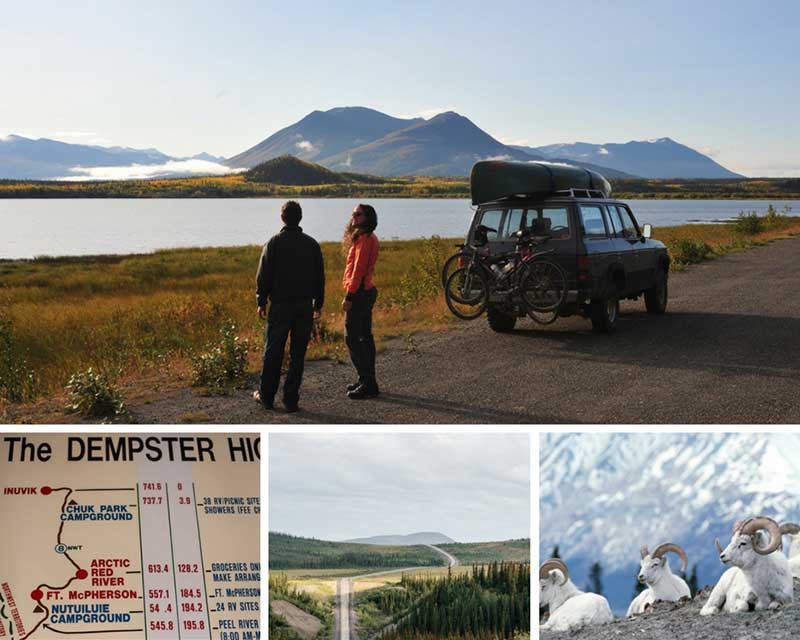
Whitehorse, named for the Yukon River’s white rapids coursing past the city, is a bustling northern city full of the hopes, vim, and vigour of Canada’s north.
Read this post for things to do in Whitehorse .
Visit the Beringia Centre to learn about the migration of ancient peoples to North America during the last Ice Age and the MacBride Museum of Yukon History to brush up on the Gold Rush.
Then drive the 400 km Dempster Highway to Parks Canada’s National Historic Site of Dawson City – where you can pan for gold, and listen to the “Bard of the Yukon,” Robert A. Service’s poetry… including the renowned poem, “Cremation of Sam McGee ” where you’ll learn: “There are strange things done in the midnight sun/By the men who moil for gold…”
5- BC Road Trip
~2,000 km / 1,250 mi of driving + ferries
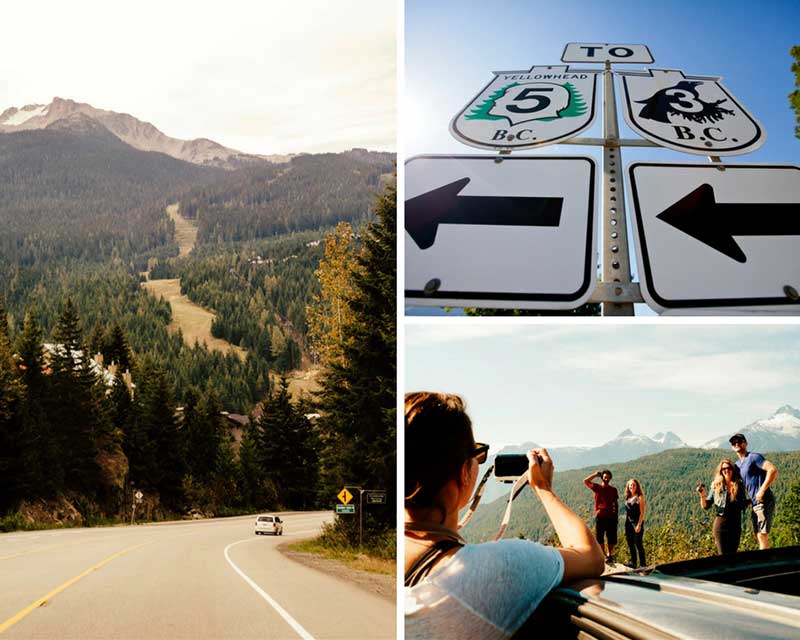
- Vancouver to Prince Rupert (~1,500 km/ 940 mi)
- Prince Rupert to Port Hardy via BC Ferry Inland Passage
- Port Hardy to Victoria on Vancouver Island (500 km)
- Victoria to Vancouver via BC Ferry
Vancouver’s lights and excitement drop away while you drive north, north, north to the deep harbour port of Prince Rupert.
The drive is one of Canada’s most magnificent, taking you north through Central Interior historic towns such as 100 Mile House en route to Prince George.
Then northwest, cutting across the Northern Rocky Mountains to Hazelton, Terrace and finally, the port of Prince Rupert.
Insider’s tip: Visit Ks’aan at Hazelton, a First Nations museum for aboriginal culture . Just outside of Prince Rupert, don’t miss the North Pacific Cannery to glean the flavour of what the salmon run once was, with the fishy catch that kept First Nations, Japanese and other workers busy in the now-historic cannery. Once in Prince Rupert quaff a craft beer at funky Wheelhouse Brewing Co.
To complete the circuit, catch the rightly renowned BC Ferry, voyaging southward down the Inland Passage to the northern tip of Vancouver Island, docking at Port Hardy.
We saw humpback whales, osprey (fish hawks) and bald eagles so be sure to pack binoculars.
On-island, visit Port McNeil, leave your car for this day trip, and walk on to the ferry to Alert Bay, a First Nations village where iconic Canadian artist Emily Carr visited and painted village life and totem poles.
Nowadays we can stroll an ecological boardwalk through wetlands and view U’mista Cultural Centre.
Also interesting, south of Port McNeil is Telegraph Cove , right on the ocean.
Camp, hike rainforest paths to the lighthouse (Blinkhorn Trail) or take a guided kayak paddle of the cove.
Highway 19 takes you south for the five-hour drive to Victoria – which is just so English.
Stroll the inner harbour while sailboats’ masts create their merry jingling backdrop and visit the Fairmont Empress for High Tea.
Catch the BC Ferry from Schwartz Bay to Tsawwassen (Vancouver) and your mega-wonderful roadie trip of BC is done.
Katharine and Eric Fletcher are freelance writers and photographers who live in Quebec and love exploring Canada by road.
Book your accommodation in Canada here.
Love road trips? Here are some of our favourite:
Looking for a road trip? Here are some epic driving vacations.
- Canada Road Trip
- Driving The Icefields Parkway
- Andalucia Road Trip
- Queensland Road Trip
- Argentina Road Trip
- Tasmania Road Trip
- Cambodia Road Trip
- Nashville to Memphis Drive
- Dallas to Austin Drive
- Houston to Miami Road Trip
- Boston to Miami Road Trip
- Boston to Washington DC Road Trip
- Boston to New York Road Trip
- Boston to San Francisco Road Trip
- Boston to Los Angeles Road Trip
- Miami to Atlanta Road Trip
- Las Vegas to Salt Lake City Road Trip
- San Francisco to Los Angeles Road Trip
- San Francisco to Las Vegas Road Trip
- San Diego to San Francisco Road Trip
- Las Vegas to Zion National Park Drive
- San Francisco to Yosemite National Park Drive
- Chicago to Los Angeles Road Trip
- Seattle to Los Angeles Road Trip
- Phoenix to San Francisco Road Trip
- Vancouver to Seattle Road Trip
- Houston to Denver Road Trip
- Montreal to New York Road Trip
- Houston to Los Angeles Road Trip
- New York to San Francisco Road Trip
- Toronto to Vancouver Road Trip
- Houston to New Orleans Road Trip
- Tucson to Phoenix Road Trip
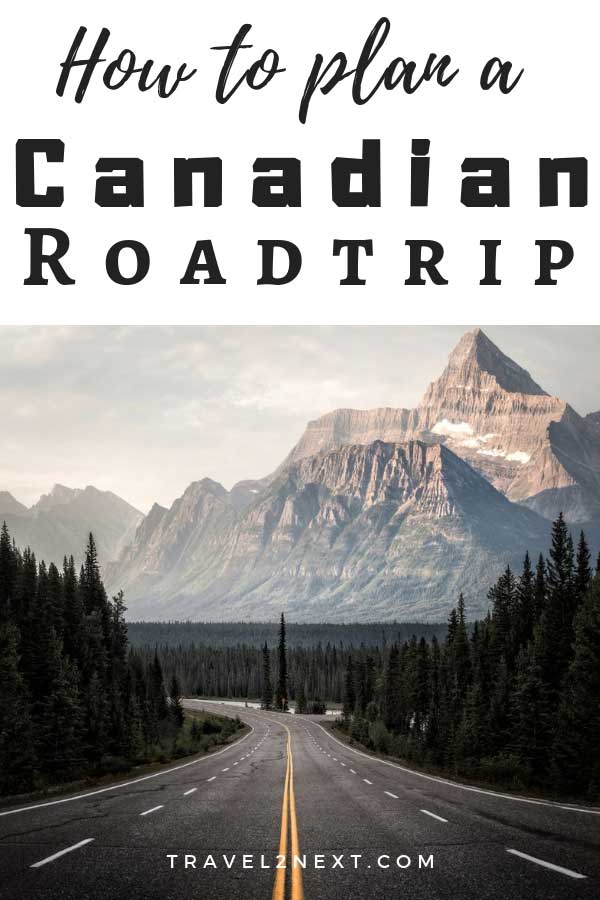
Plan Your Trip

Rent A Car – Find the best car rental rates at Discover Cars . They compare car hire companies to provide you with the best deal right now.

Find A Hotel – If you’re curious about this article and are looking for somewhere to stay, take a look at these amazing hotels .
Editor's Picks
101 travel quotes – inspiring the journey, 60 luxury escapes for your bucket list, 25 australian landmarks, 20 things to do in vancouver at night, 26 things to do in toronto at night, 26 famous landmarks in canada, what is canada known for, banff in winter.

Canada Road Trip Planning + 12 Epic Itinerary Ideas
Love it? Share it!
Canada is filled with stunning landscapes and driving through provinces and national parks is the best way to explore this massive country (by area). We will share an epic Canada Road Trip Planning Guide here, packed with ready-made itineraries to follow.
Canada Road Trip Planning Guide

Disclosure: This post contains affiliate links. If you click one of them, we may receive a small commission at no extra cost to you.
Decide where you want to go in Canada
So, your first step is to make a bucket list of places you want to see or the route you wish to embark on for your Canada road trip. Being a diverse country of landscapes, terrain, and 4 different time zones, it might be a tough choice deciding on where to do. You can browse our Canada Destinations list, or use one of the itineraries mentioned below to get started!
What to see on your Canadian Road Trips?
It all depends on your travel style. There are mountains and pristine lakes in western Canada, pretty central coastal drives in the Maritimes, chasing Northern Lights in the Northwest Territories, or specific attractions like Toronto’s skyline/Niagara Falls, Gros Morne National park in Newfoundland to check out fjords, also a UNESCO world heritage site to polar bears in Manitoba.
So you see there is tons of explore in Canada, just take it slow, stop along the way to make the most of your visit. Also give yourself enough time to hike, eat and drive.
Budget for your Canada road trip should be as follows
- National Park Fees: $20 CAD per vehicles ($15.50 USD)
- City Attractions: Many museums have entry fees start at $7.99 CAD ($6.20). CN Tower or any type of observation towers in major cities, starts at $30 CAD ($23 USD)
- Food : Minimum $30 CAD ($23 USD)

When are you planning to travel for your road trip?
Whether it is a city-bound road trip or a journey through our national/provincial parks, it is important to make note of the seasons. Canada experiences all four seasons, and each season is beautiful in its own unique way.
- Summer – Summers are a great time to embark on a road trip. We recommend choosing the country-side to escape the crowds . If you are hitting the popular national parks like Banff (from Calgary or Edmonton), ensure you start early to beat the traffic rush.
- Winter – Driving in winters can be tricky. Ensure you follow provincial winter driving regulations. Also add additional travel time due to the road conditions, poor visibility, etc. on certain routes.
- Spring and fall – These are off season months in Canada. Fall is our favorite time to visit as the weather is still warm, and attractions not too crowded. Spring is a tricky situation for visiting Parks, as many of the sightseeing spots may not be open. Finding accommodation in cities and small towns this time will be easy, minus fewer crowds.
Where to stay on a Canada road trip?
When you are road tripping in Canada, there are tons of options for accommodation.
- Hotels, Airbnbs & Lodges : You can book a hotel, Airbnb, lodge, or a cabin for your accommodation in Canada. Book them ahead of time, especially during peak seasons.
- RV & Campervan : One of the popular ways to explore national parks in Canada is on a campervan or an RV, and save money on hotel accommodation. It is also a nicer alternative if you do not own a lot of camping gear, and planning to explore on the go.
- Camping : If you are planning to camp overnight, ensure you reserve camp-sites when bookings open for the season. You do not need to reserve for day campsites (like picnics as part of your road trip), especially in provincial parks.
Pin the spots on Google Maps
Use Google Maps plan and plot your road trip itinerary. And don’t forget to download offline maps on your phone, so that you can access that from the car.

Important Driving Tips in Canada Highway & Parks
- Carry your driver’s license (Canadian, US or International).
- Must be at least 21 years of age to rent a vehicle.
- The most common cars on the road in Canada are left-hand drive vehicles, and cars are driven on the right side of the road.
- Canada uses kilometres and metres to measure the distance (unlike miles used in the USA)
- The typical speed limit in most provinces is 100 km/h (62 mph) or 110 km/h (68 mph).
- When you are driving to national parks speed limits will differ, depending on major routes (90 km/hr max.) and secondary routes (60 km/hr max.)
- Gas/Mileage: 8.9 litres of gasoline per 100 kilometres (62 miles)
- Be mindful of wildlife corridors and posted wildlife signs along the highways
What to pack on a road trip in Canada?

Here is a list of items to pack for your road trip in Canada!
- Clothes & Comfortable shoes – Comfortable shoes are a must, they are helpful while you are behind the wheel or while taking rest stops
- Warm clothes (for winter) – While driving in Canadian winters, don’t forget warm clothing
- Hand warmers are great little items to keep inside the car
- Travel Mug – Coffee and tea lovers, pack your travel mug, and refill it on the go!
- Water bottle – Super important, carry your water bottle. Stay hydrated!
- Healthy snacks – LOVE this care package , and they are healthy snacks to carry on your road trip. Munch them if you are hungry, whilst feeling light!
- Medications
- Flashlight – Super handy if you are camping or even driving overnight
- Emergency car kit – An emergency car kit is essential should things happen on the road. You can create one from scratch or buy one pre-pack from Amazon .
- Emergency first aid kit – Check the first aid kit inside the car (check for expiry dates). If you don’t have one, here is one that you can buy from Amazon.
- Dashboard mount for phone or GPS – Use a dash mount to keep your phone or GPS for navigation.
- GPS or navigation system – Don’t forget navigation systems or Google maps (offline) on your phone. Prepare it with your routes prior to your trip. It is also important to keep TomToms (or any navigation system) updated.
- Charging cables – Unless your car has cable-free charging, it is important to pack one for your road trip. We do have wireless charging in our car, but it can only charge one at a time, so we also carry charging cables (to charge the second phone and to charge inside the hotel). Buy yours here
- Playlist – No road trip is complete without an amazing playlist.
- Cell-phone – Don’t forget your cell-phone. Stay connected with family, store the hotel or campsite contact information, plus roadside assistance number for emergencies.
- Car freshener
- Road trip games – License plate, sing-along, card games (for kids)
- Travel insurance – Car insurance is essential, so is travel insurance if you are traveling from overseas. For the car, you can also secure insurance with the rental company when you pick up the vehicle.
12 Canada Road Trip Itinerary Ideas
Canadian rockies road trip itinerary, alberta .
- Number of days – 10 to 14 days
- Route – Edmonton – Jasper National Park – Icefields Parkway to Lake Louise – Banff National Park – Calgary (Alberta)
This Canadian Rockies itinerary will allow you to explore all the best of the mountains and cities in Alberta. It covers the capital city, the largest city in Alberta, two national parks in the Canadian Rockies (Jasper being is the largest one), visit the pretty Lake Louise, explore our provincial parks at Pembina, and also check out small Prairie (Edson, Entwhistle) and mountain towns (Banff, Jasper) in one single trip.

A fast paced version of this road trip itinerary can be done in 10 days. But 2 weeks will be perfect!
Fly to Edmonton , pick up a rental car, and explore the capital city of Alberta. Visit the Legislature Grounds and the neighborhood of Strathcona. (If you have time on your hands, visit Elk Island National Park, located about 50 minutes away from the city, known for bison conservation and is a dark sky preserve). Spend one full day in Edmonton to experience the culinary and city centre delights, along with museums and art galleries.
From Edmonton, drive to Jasper National Park (it takes 4 hours). Stop by the small Prairie towns of Edson, Entwhistle, or Pembina Provincial Park for a picnic. You will arrive in Jasper town by evening. Stay at the Pocahontas Cabin for the night.

Spend 2-3 days in Jasper . Hit trails, Pyramid and Patricia lakes, Athabasca falls, soak in mountain views, eat, and visit a local brewery.
From Jasper, head to Lake Louise, via the Icefields Parkway (with a quick stop at Sunwapta Falls). Non stop drive is 2.75 hours. You can also add Athabasca Glacier Adventure to your road trip itinerary and stay in Lake Louise for the night.
Set aside 8-10 hours to explore Lake Louise , and then head to Banff in the evening (50 minute drive).

Spend 3-4 days in Banff National Park . There are tons to see and do here, from lakes – Vermillion, Two Jack Lake, Minnewanke, to hiking trails , exploring Banff Avenue, Cave & Basin Site, Cascade Gardens, Minnewanka Lake Cruise, and Johnston Canyon. Stay at Elk + Avenue Hotel .
After exploring Banff, head to Calgary, and spend one day or two. Explore downtown city highlights like the Calgary Tower, wander the Stephen Ave Walk, visit Calgary Fort, Heritage Village, etc.
Drop off your car rental at Calgary International Airport, and fly back home!
Icefields Parkway, Alberta
- Number of Days – It is possible to drive the Icefields Parkway in 2.5 hours if you don’t get out of your car, but it would be a travesty not to take your time to enjoy the sights along the way.
- Route – Lake Louise to Jasper in the province of Alberta passing through Banff National Park and Jasper National Park.
One of the most famous road trips in Canada is the Icefields Parkway , which is a 230km (144 miles) journey through some of the country’s most magnificent landscapes. With vistas of mountains, valleys, glaciers, rocky cliffs, forests, and lakes, there is a lot to see along the way.
Take a tip and start early in the morning to avoid traffic, and you will enjoy the experience so much more if you are not rushed. The Icefields Parkway has so many incredible places that you will want to explore.

Early morning is a good time to spot wildlife that usually make an appearance when you
least expect. When you’re driving, keep your eyes peeled for bears, deer, elk, moose and bighorn sheep. Depending on what you might see by the side of the road, you may need extra time to linger and take photographs.
On your first road trip along the Icefields Parkway, make sure you allow time to see Columbia
Icefield, which is some of the largest glaciers outside the Arctic Circle, or“fields of ice” straddle and are the largest south of the Arctic Circle.
Another awe-inspiring attraction is the Glacier SkyWalk, where you can walk on a glass-floored platform 280 metres (918 feet) above the stunning Sunwapta Valley.

Besides glaciers, this Canadian road trip is also known for its beautiful lakes. The two most famous ones are Bow Lake, which is the best place to gaze at the Crowfoot Glacier, and Peyto Lake, which is a must-do to fill your Instagram stream with stunning photos. Also, visit Sunwapta and Athabasca Falls; both are places of natural beauty.
Stay at Mountaineer Lodge in Lake Louise or the Fairmont Chateau Lake Louise .
By Christina from Travel2Next
Sea to Sky highway – Vancouver to Whistler
- Number of days – 2 days
- Route – Start in Vancouver, stop in Squamish to Whistler (British Columbia)
The Sea to Sky highway is one of the most scenic roads in Canada. Also known as Highway 99, the section that connects Vancouver to Whistler is known as the Sea to Sky .
Although the total journey time from Vancouver to Whistler is just 2 hours, there’s plenty to see and do along the way as well as further afield. This road trip can be amended for families or adrenaline seekers. While it’s easy to drive from Vancouver to Whistler in a day, splitting it up into several days is recommended.
After leaving Vancouver , one of the first points of interest in Whytecliff Park, this is somewhat of a hidden gem in Vancouver and a nice scenic spot to stretch the legs. When the tide is low you can walk across the rocks to Whytecliff Islet.

Your drive along the Sea to Sky highway will then bring you through the town of Lions Bay and Britannia Beach. Here is where you’ll find Porteau Cove Provincial Park and the Britannia Mine Museum, which is a great stop for families.
Soon after Britannia Beach is the town of Squamish, many people bypass this town but it’s definitely worth a night’s stay at least. There are so many amazing restaurants here, some of our favourites include the Wigan Pier for fish & chips and Sonny Chibas for Mexican and fried chicken.
There are also several craft breweries here that are worth checking out. Squamish is famous for its hiking and rock climbing. The Chief is a granite monolith that towers above the town and is a bucket-list hike in the area. If you aren’t feeling up to hiking, you can take a ride on the Sea to Sky Gondola.
The town of Whistler is usually people’s main destination when taking this route. This mountain town is home to Whistler Blackcomb ski resort and bike park. There are tons of things to do for every season in Whistler. Although it’s famous for skiing, other activities include snowshoeing, snowmobiling, dog sledding and hiking and biking in the summer.
Nita Lake Lodge is our favorite hotel in Whistler , it’s the only lakefront hotel in the resort town. It’s far enough away from the main village that you’ll get lots of peace and quiet here.
There is plenty to see and do further afield too! Less people visit Pemberton and Lillooet but they are just as beautiful and the rest of Highway 99. Joffre Lakes is one of BC’s most beautiful hikes in BC.
Seton Lake near Lillooet is one of our favourite places in all of Canada, and the short hike to the lookout is breathtaking!
By Rachel from A City Girl Outside
Vancouver – Kelowna – Banff
- Number of days – 2+
- Route – Starting in Vancouver British Columbia to Kelowna, BC to Banff National Park, Alberta
While driving from Vancouver to Banff is technically possible in one day, a stop in Kelowna not only breaks up the trip, it’s also more scenic. The mountainous Highway 3 is the best way to get to Kelowna in terms of scenery.
In Kelowna , be sure to enjoy the waterfront parks, hiking in the hills outside of town, shopping around Bernard Ave, and wine tasting at local vineyards. If staying overnight in Kelowna, treat yourself to The Royal Kelowna hotel for views of the water and proximity to downtown and the cultural district.

From there, you can take the spectacular drive through Glacier and Yoho to Banff on Highway 1. The biggest highlight on this leg is simply looking out your window!
Two points of interest along the way are quite close to each other: Three Valley Gap and the town of Revelstoke. Three Valley Gap is a big hotel on the shore of a large lake, visible from the highway. There is a bit of a ghost town to visit and just one restaurant, inside the hotel.
For more dining options and amenities, make your next stop 20 minutes down the highway, in the little town of Revelstoke. Whether it’s to stay the night or even just to grab a bite to eat, it’s a nice place to visit.
Next, you’ll pass through Glacier and Yoho National Parks , both of which are worthwhile places to visit for hiking, camping, scenic drives, and more.

Finally, saving the best for last, you’ll arrive in Banff National Park. Take the tram to scenic overlooks, hike to a tea house, admire the emerald Lake Louise, bike, look for wildlife, camp, or relax at an upscale inn. From Banff, you can take countless scenic drives to extend your road trip in different directions, like Yoho or Jasper National Parks. This is a true outdoor wonderland and worth staying for several nights.
By Michelle from Intentional Travelers
Nanaimo to Tofino, British Columbia
- Number of Days – 1
- Route – Nanaimo to Tofino, British Columbia
While not the longest by any means, driving from Nanaimo to Tofino on British Columbia’s Vancouver Island is one to add to your to-do list!
Tofino is still a hidden gem, even for many Canadians, and the stops along the way make it the perfect West Coast road trip.
There is only one main road that takes visitors from Nanaimo to Tofino (HWY BC4). While summer is traditionally Tofino’s high season, this rugged part of Canada sees storm watchers venture to the coast to watch the full power of the Pacific Ocean hitting land.

Along the 3 hour route, there are a few essential stops. Coombs is a little detour, but it’s popular market and goats on the roof are a delight for all visitors.
Cathedral Grove in MacMillan Provincial Park is right along the route. You will literally drive through an amazing old growth forest right on the highway. If you stop at Cathedral Grove, you will find a small parking area and a trail that takes about 30 minutes to see some of the oldest trees in British Columbia.
Ucluelet is the last stop you should make, before the final stretch to Tofino. Take the time to walk the Wild Pacific Loop. It is less than 30 minutes from Ucluelet to Tofino, you can always add this to a day trip activity while you stay in Tofino.
The last stretch of drive will bring you past Pacific Rim National Park where the strong Pacific Ocean waves crash on the sandy beaches. There are plenty of places to stop along the way if you want to take a closer look. Tofino is home to stunning sandy beaches, you will have plenty of time to enjoy the waves and the sand.
Two of the best places to stay are Pacific Sands Beach Resort and Long Beach Lodge . Both offer beachfront accommodations and are perfect for couples and families.
By Lindsay from Uncovering British Columbia
Dawson City (Yukon) to Tuktoyaktuk (North West Territories)
- Number of days – Minimum 3 days one way
- Route – Dawson City (Yukon) to Tuktoyaktuk (North West Territories)
Starting in the historic Klondike Gold Rush town of Dawson City and ending on the edge of the Arctic Ocean, this Canadian road trip is a must do for adventurous travelers. The main part of the route (737km of 875km total) follows the Dempster Highway , a legendary rough dirt road traversing tundra and limitless wilderness.
The Dempster is the only road in Canada to cross the Arctic Circle. Consequently, travelers who visit in summer will be accompanied by the Midnight Sun (24 hours of daylight). The long days allow for endless exploration. It’s disorienting yet exhilarating and ensures this road trip experience to be like no other in Canada!

Tombstone Territorial Park, located around 110km from Dawson City, is a real highlight. Here, the expansive landscape is backdropped by impossibly jagged mountain peaks. Be sure to stop at the interpretive centre before heading out onto one of the established hiking trails. Keep your eyes peeled for some of the local residents, including grizzly bears, moose, caribou, porcupine and black foxes.
Epic as this road trip may be, there is some caution needed. This is a truly wild area, with almost zero phone signal along the entire route. The elevated dirt road is rough in places and can become very slippery after rain. A good spare tire is absolutely essential as is a puncture repair kit, air compressor and jack. Most importantly, the drive should not be rushed.
Facilities are few and far between (all part of the adventure!) but one of the most convenient places to stop on this road trip is Eagle Plains.
There is a campground, hotel, gas station, and restaurant here. Inuvik has the biggest choice of services and places to stay, with the Arctic Chalet being a top choice. While in town, be sure to check out the Igloo Church and Community Greenhouse (built in an old ice rink),
Tuktoyaktuk is your final destination; a place where you can dip your toes in the freezing Arctic Ocean and reflect on your incredible journey through Canada’s northern wilderness!
By Gemma from Off Track Travel
Saskatchewan Road Trip
- Number of Days – 5-6
- Route : Regina to Cypress Hills Interprovincial Park (Centre Block)
Saskatchewan often isn’t the first place that comes to mind when planning a Canada road trip . Most people head straight to the Rocky Mountains, Vancouver Island, or Niagara Falls. While these destinations are all very much worth a visit, so is Saskatchewan!
This underrated Canadian province features two beautiful National Parks, several Provincial Parks, cute little towns and rolling hills covered in rippling grain as far as the eye can see. If that’s not enough, Saskatoon and Regina are two lively cities with a relaxed vibe, plenty of restaurants and lots of worthwhile sights. Plenty of reasons for a Saskatchewan road trip !

Start your road trip in Canada by exploring Regina, the capital city of Saskatchewan. Spend two days here and visit the Provincial Legislative Building, stroll around Wascana Lake, and learn about history in the Royal Saskatchewan Museum. A nice place to stay is the Ramada by Wyndham (Emerald Park).
Hop in your car and drive to Grasslands National Park (West Block) in approximately 3.5hours. This National Park is a great place to see rare native wildlife such as the bison as well as an excellent stargazing location as there is very little light pollution. Hike the 70 Mile Butte Trail and take one of t
After spending a day (or if time allows, two days) in Grasslands National Park, drive to Eastend and visit the T-Rex Discovery Center to marvel at one of the few T-rex skeletons ever found. Continue your road trip and drive to Cypress Hills Provincial Park.
This Provincial Park is perfect for swimming, camping, and hiking. A must-do is visiting Bald Butte and Lookout Point. The views from both viewpoints are breathtaking, you can see for miles and will really come to appreciate the vastness of Saskatchewan.
By Lotte from Phenomenal Globe Travel Blog
Road Trip from Saskatoon (Saskatchewan) to Winnipeg (Manitoba)
- Route – Saskatoon – Yorkton – Langenburg – Russell – Portage La Prairie – Winnipeg
Saskatoon to Winnipeg takes about 8 hours 10 mins by car if you drive non-stop. Both cities are located in two Prairie provinces of Canada. Start from Saskatoon Saskatchewan, and pretty much along the way you will find small Prairie towns, mom & pop shops, cute barns, and farms.
Saskatoon is nicknamed as the ‘Paris of the Prairies’, due to the many bridges found here. From Saskatoon, make way for Yorkton (in about 3.50 hours). Yorkton also has a Western Development Museum, just like Saskatoon which is worth visiting.

If you wish to stretch your legs, head to the York Lake Regional Park for a quick stroll. From Yorkton, arrive at Langenburg, and this is where you can break for lunch.
Up next on the road trip is Russell, located about 15 km (9 miles) from the Saskatchewan border. The town is known for the Manitoba’s Beef and Barley Festival, which is held annually in October.
From Russell, the next stop is Portage La Prairie (in 3 hours). In case you didn’t know the Prairies are home to the some of ‘world’s largest’ like Tomahawk (Cutknife, SK) or Easter Egg/Pysanka (Vegreville Alberta). So Portage La Prairie has the world’s Largest Coca-Cola Can. Don’t forget to stop by, and snap a few photos!

From here, Winnipeg is another hour’s drive. Spend 2 days in Winnipeg, exploring some of the iconic attractions like the pedestrian Esplanade Riel Bridge, named after the 1848 revolutionary Louis Riel.
Wander the French part of Winnipeg – St Boniface. Eat out, and hang out at the city centre. The Forks is a must visit in the city. This site is a National Historic Site of Canada.
Assiniboine Park also deserves a place in your itinerary. It is a beautiful park with tons of walking trails, river views, and more. Finally, visit the Royal Canadian Mint, and go on a guided tour to learn about coins, and maybe take some home with you!
East Coast City Delights – Toronto – Montreal – Quebec City
- Number of days – 3 days +
- Route – Toronto – Montreal – Quebec City
This classic road trip starts in Toronto and travels through Eastern Ontario, Quebec, and New Brunswick, before ending in Halifax, NS. From start to finish, this road trip will take about 18 hours of straight driving.
You could do it all at once, but you’d miss out on so many fantastic places! Instead, we’d recommend stopping a few times along the way, making this road trip into a 3 to the 5-day trip, and taking the time to explore a few places along the way. We will cover Toronto to Quebec City, as one road trip, followed up by Quebec City to Halifax (and of course you can combine both).

Beginning in Toronto, follow Hwy 401 east from Toronto until you reach the border of Quebec and it becomes Autoroute 20. Stay overnight in Montreal – the Old Town is much more scenic, but the downtown section has more dining options. Alternatively, you can pass through Montreal and continue another 2.5 hours to Quebec City.

On day 2, drive Hwy 40 along the north shore of the St. Lawrence, or 20E/TransCanada via the south shore. Either way the drive is close to 3 hours. Arrive in Quebec City mid afternoon, and you’ll have plenty of time to explore the Old Town, marvel at the Chateau Frontenac and soak up the European feel of the city.
There are plenty of hotels to choose from – you can splurge on a stay at the Fairmont Le Chateau Frontenac or choose more moderate options like the Quebec City Marriott Downtown .
By Erin from Three is Us
Quebec City to Gaspésie
- Number of days – 5 – 7 days (return)
- Route – Quebec City – Forillon National Park – Gaspe – Perce Village – Matapedia – Quebec City
One of the epic Canadian road trips is the one around Gaspesie . Gaspesie is a peninsula in the province of Quebec. It’s a loop route that starts in Quebec City and also ends there. You’ll need about 5-7 days to get the most of the area.
Set out from Quebec City early in the morning and take the QC- 132 road towards the east. Enjoy the ride along the picturesque coast, make frequent stops at viewpoints. In the evening you should reach Forillon National Park where you stay overnight.

Spend the next day hiking in the park. There are many trails to choose from, so pick the ones suitable for your level of fitness. The park administration will provide you with a map. Move to the town of Gaspe, where you’ll spend the night and the next day exploring local sights and museums such as Haldimand Beach, Gaspesie Museum, and Micmac Museum.
The next stop is in Perce Village where you can catch a boat to Bonaventure Island which is the main local attraction. This small uninhabited island is home to the largest Atlantic seabird colony in North America. After hiking on the island, check out Perce Village and try some local food and beer.
From this point, the road trip will return to Quebec City, but around the southern shore. The south offers amazing viewpoints, several lighthouses, Micmac village, and a beautiful Philomene Waterfall. The one-stop you shouldn’t miss is the Miguasha National Park that is also a UNESCO World site for its valuable fossil site and museum.
In Matapedia, take the QC-132 towards the north. Before you reach Quebec City, the sights worth seeing are Pointe-au-Pere Lighthouse and Jardin de Metis Botanical Garden. Do stop in one of the local ‘fromagerie’ to buy some delicious cheese sorts.
By Slavka from On2Continents
Quebec City – Fredericton to Moncton, via Hopewell Rocks to Halifax
- Number of days – 4 days +
- Route – Quebec City – Fredericton to Moncton, via Hopewell Rocks – 251km, Moncton to Halifax – 260km
You can start this road trip from Toronto , and follow the itinerary above to stop in Montreal and Quebec City. From Quebec City, follow the TransCanada Hwy north along the St. Lawrence River to Rivière-du-Loup, then head south-east to New Brunswick.
*Note* As you cross the border into New Brunswick, the time changes and clocks go back an hour.
Although there isn’t much to see in Edmundston, if you prefer a shorter drive today or just in need of a rest and stretch break, it is a good stopping point around 3 hours from Quebec City.
If you prefer to keep on driving, Fredericton is another 3 hours south. Along the way, be sure to stop for a quick visit to Grand Falls about 45 minutes south of Edmunston and farther south, the Covered Bridge in Hartland. Continue on to Fredericton where you’ll stay the night.
Continue your drive through New Brunswick and be sure to take a slight detour off of the Trans Canada Highway south to the Hopewell Rocks.
Just an hour south of Moncton, the Hopewell Rocks are a remarkable place to experience the highest tides in the world! Happening twice a day, be sure to check the tide tables to be aware of high and low tides.
The final stretch of this road trip heads into Nova Scotia. After crossing the border, it’s about 2 hours to Halifax. **There is a toll on this portion of the highway. It’s approximately $4 CAD.
An hour after the border lies the town of Truro, which is a good spot to stop, have a rest and if the timing is right, to watch the twice daily tidal bore. If you’re adventurous, try Tidal Bore Rafting on the Shubenacadie River, close to Truro.

Another hour’s drive and you’re in Halifax – stay here for a few days in Halifax, and enjoy the East Coast. While you’re in Halifax, be sure to visit Peggy’s Cove, Lunenburg, Halifax Waterfront, and Dartmouth.
There are many hotels to choose from, whether you’re looking for something close to the waterfront (which are more expensive) or something a little further away. Clayton Park, just off Hwy 102 is a good option, with hotels such as Coastal Inns and Future Inns – both highly recommended from our family!
Maritimes Magic: Fundy Coastal drive from Campobello Island (NB) to the Confederation Bridge (PEI)
- Number of days – 5 days
- Route – New Brunswick and the Fundy Coastal drive from Campobello Island to the Confederation Bridge at Prince Edward Island (PEI)
Coastal New Brunswick and the Fundy Coastal drive from Campobello Island to the Confederation Bridge at Prince Edward Island makes for a scenic and less traveled area of Canada. In five days, you can cover the highlights in the Maritimes , along with the iconic Hopewell Rocks.

Start from Campobello Island, the only International Park in the world and summer home of the U.S. President Franklin Delano Roosevelt.
On day 2 head to Saint Andrews. An old fishing village, on the Bay of Fundy, where the most dramatic tides in the world shift daily, Saint Andrews has lots of restaurants and cute shops. It is also a great take-off spot for whale watching and kayaking trips. Don’t miss the Huntsman Marine Science Center and Kingsbrae Gardens.
On day 3 and 4, drive to Saint John and explore the city. Stay at the St. John Hotel & Suites . A must-see is The Reversing Falls, where the Bay of Fundy tides overtake the flow of the Saint John River, a UNESCO GeoPark. Then, make the quick 3-minute drive to Carleton Martello Tower located high on a hill overlooking the Bay of Fundy.
The New Brunswick Museum is a great way to get some history on the area with exhibits on the region’s lumber, shipbuilding, farming industries.
City Market of Saint John is a vibrant and bustling market with stalls of fresh produce, meat, seafood, even local art and souvenirs, and restaurants.
Another must-see destination, Hopewell Rocks is a unique landscape, where you can walk along the ocean floor and see the towering sandstone sculptures with trees on top thanks to the Bay of Fundy’s dramatic tides
From there, you can continue winding along the Bay of Fundy Highway to 15E. Crossing the Confederation Bridge is an adventure in and of itself — it is the longest bridge (8 mi/12.9 KM) that crosses ice-covered waters in the world.
By Lori from Maps, Memories and Motherhood
Cape Breton Highlands National Park: Cabot Trail East Coastal Drive
- Number of days – 3+ days
- Route – Halifax – Cape Breton Island along the Cabot Trail
The Cabot Trail is a scenic driving route on the island of Cape Breton in Nova Scotia. Cape Breton is the largest island, and is home to 14% of the population.
Cabot Trail offers one of the best scenic views along Canada’s Atlantic Coast. Cabot Trail is over 300 km, and can be easily completed in one day. However, we recommend stopping along the way to make the most of your trip, including exploring the great outdoors of Cape Breton Highlands National Park and soaking in the views of the Gulf of St. Lawrence.

You can start from Halifax (fly there), and then head towards the Cabot Trail (3.50 hours). Do make a stop at the Highland Village. This village has re-created the life of Gaelic settlers in Cape Breton and is beautifully set on the Bras d’Or lake.
Set a day aside for Cape Breton Highlands National Park. Camp, picnic or go on a hike. Check out the Cape Breton Highlands Lookout, and capture sunset on Skyline Trail Hike.
Whale watching is popular here, so seafood including lobster treats! Being a coastal drive, do stop at the Margaree Harbour or Enragee Point Lighthouse.
Final Thoughts on Road Trips in Canada
You see, it is impossible to squeeze everything in Canada on a single trip (be it week or 2 weeks long). But you can always come back, and check off these wonderful road trips from your Canada bucket list.
Pick one that speaks to you the most – mountains, cities or culture, or food – pick your car rental (check gas, your licences, insurance) – and let’s go!
Where will you head to first?
Pin: 12 Canada Road Trips to take this year: Explore Canada by road trips

Mayuri Kashyap is an Indian Canadian traveler, writer and photographer based in Alberta. She moved to Toronto as a student in 2009, and has been calling Canada home ever since. She started the blog - Canada Crossroads - to share her travel and living experiences in the Great White North!
A History graduate and an MBA, Mayuri is a destinations marketing expert. She loves traveling with her husband, Salil and soaking in experiences across Canada, India and Europe.
Similar Posts

Things to do in Yoho National Park day trip itinerary
The Yoho National Park is a beautiful park located in the province of British Columbia in western Canada. It makes for an easy day trip from Banff or Lake Louise and is worthy of a visit. Here are all the amazing things to do in Yoho National Park. As part of this guide, we have…

15 Best Airbnbs in Vancouver to book your stay
Heading to British Columbia Canada? We got you covered with the best airbnbs in Vancouver for your stay. This list has the BEST of the lot with downtown apartments, suites, and house rentals, and unique stays in the city! Vancouver is one of our favorite cities in Canada. Classy, yet chilled out, Vancouver’s downtown and…

14+ Delightful Ontario Winter Getaways for this year
Traveling always brings along happiness and new learnings, no matter what time of the year it is. There are times when you just feel like getting away from your routine life but you are not sure where to go, considering the weather conditions, especially during peak winters. Ontario welcomes you to a charming winter wonderland…

12 Best Airbnbs in British Columbia for an EPIC stay
Looking for an amazing getaway for couples, girls’ trips, or small groups, we got you covered. We have compiled this list of the best airbnbs in British Columbia, from treehouses, yurts to unique stays across the province. Check it out! 12 Best Airbnbs in British Columbia Canada Our top 3 picks for couples! Best British…

One day in Vancouver itinerary (3 samples + map for 2024)
Looking for the perfect one day in Vancouver itinerary? We’ve got you covered. Vancouver is a coastal city in southwestern British Columbia and is consistently named as one of the top five worldwide cities for livability and quality of life. The scenic beauty of Vancouver’s location between the Coast Mountains and the Pacific Ocean is…

15 Fun Things to do in Saskatoon in Winter
Heading to Saskatoon in the winter? Be ready to embrace the cold and white landscapes in style, and enjoy snowshoeing, skiing, and a host of winter festivals in the largest city of Saskatchewan. We lived here for over 4.50 years and have compiled the best things to do in Saskatoon in winter, with our packing…
Leave a Reply Cancel reply
Your email address will not be published. Required fields are marked *
Save my name, email, and website in this browser for the next time I comment.
Human-sounding AI can plan, help book your travel. But can you trust it?

It wasn’t so long ago that travelers planned trips without the internet.
“Back in the day, our parents used to go to these travel agents and really kind of express what they were looking for and what kind of vacation they wanted,” said Saad Saeed, co-founder and CEO of Layla, an AI travel planner whose website launched this year. “Slowly, we kind of acclimatized ourselves to start using these search boxes, clicks, these forms and filters.”
Artificial intelligence-driven tools like Layla can now turn back the clock on that experience, engaging with users almost like humans to customize travel plans with lightning speed plus all the resources of the web. But does AI actually make travel planning easier and can it compare to human expertise?
Yes and no. Here’s why.
Can AI actually understand us?
It can try.
“What are you personally looking for in this trip and what do you want out of it?” asked Saeed. “Do you want to reconnect with your partner, for example, or do you want to just feel some adventure and thrill?”
A human travel agent may ask a series of questions to understand a client’s needs. So can generative AI , which picks up on keywords. Mindtrip, an AI planner launched publicly on May 1, has an actual travel quiz that asks users to rank priorities like “Is your ideal vacation day an exhilarating adventure or a relaxing break?” using sliding scales.
“What we get at the end of that quiz, using the AI, is a really customized description,” explained Mindtrip Founder and CEO Andy Moss. That then informs what the AI suggests to the traveler.
Informed suggestions can save users time in narrowing down destinations and experiences, as well as introduce places users may never have discovered on their own.
AI travel planning is here: How to use it to plan your next vacation and what you should know first
Can AI fully replace humans?
No. Layla may sound human, using conversational phrases like “I've got three cozy nests that won't make your wallet cry.”
“She has a personality. We try to make her funny and so on, where it's really that friend that can get to know you and then recommend you the perfect stuff,” Saeed said.
But part of Layla’s expertise comes from the real-life experiences of some 1,600 travel content creators the Berlin-based platform has partnered with. Their videos and insights can give users a richer picture of what to expect.
Mindtrip also leans on human expertise, having tapped a limited group of travel influencers for curated content with plans to eventually open it up so anyone can share their travel itineraries and experiences with the public.
Story continues below.
Is AI a threat to privacy?
With all the rapid advancements in AI in just the past year, some users are wary of its safety .
“Data privacy is definitely one of our biggest concerns, and we ensure that none of the personal identifiable information ever reaches basically the model providers. That will all stay with us,” Layla’s Saeed said. “None of their personally identifiable data can ever be basically used to profile them or basically go into any of these systems, which are training these different models.”
Booz Allen Hamilton, the nation’s largest provider of AI to the federal government , focuses heavily on ethical and secure AI, as well as adhering to the government’s policies on data collection.
“We collect as little information as we can in order to provide a secure transaction,” said Booz Allen Hamilton Senior Vice President Will Healy, who heads up their recreation work, including Recreaton.gov , the government’s central travel planning site for public lands like national parks. “We don't save your searches. We don't save your credit card data. We're very careful about the data that we store.”
Yoon Kim, an assistant professor in MIT’s Electrical Engineering and Computer Science Department and Computer Science and Artificial Intelligence Laboratory , isn’t too worried about security in the initial brainstorming stages of travel planning with AI.
“I don't see, at this point, how AI-generated advice is spiritually different from travel guide articles that you might read on certain websites,” he said. “Travel planning is one really nice use case of these models, as narrow as it is, because it's a scenario in which you want to be given ideas but you don't actually need to commit to them.”
What’s next for AI?
Things could be different, though, if AI is used beyond trip planning. Deloitte sees AI being woven into all parts of travel.
“There is an opportunity for a real engine – I'm going to just use a generic term, engine – that allows you to search and pull it all together and to sort based off of your personal reasons for prioritization and then not stopping at ‘hey give me a list’ or ‘here's what to do,’ but ‘OK, now go create my itinerary, help me book it, track it all the way through that travel process,” said Matt Soderberg, principal, U.S. airlines leader for Deloitte.
Deloitte’s Facing travel’s future report, released in early April, identifies seven stages where AI can intersect with a trip, from personalized recommendations based on past travel, online purchases and tendencies to day-of issues to a post-travel pulse, where travelers may be asked about their experience and start thinking about future trips.
“When you solve across all of those, that's going to be the Holy Grail,” Soderberg said. “The difficulty is that doesn't all sit in one place. And so how do you get the right information and the right data to bring all of that together for a single experience for the consumer? And who's going to own that?”
Layla and Mindtrip, among others, already offer booking through partners like Booking.com. “It's all about making things actionable,” Moss said.
But for now, if issues come up mid-trip, AI tools can’t fix them like humans can. Humans still have to get involved.
9 essential Google Maps tips for your Summer road trip
Hit the road with Google Maps this summer

- Departure times
- Share location
- Offline maps
- Reservations
- Avoid tolls
- Fuel-efficient routes
- Save parking
If you’re heading out on a road trip this summer, odds are you’ll be using an app like Google Maps to find your way around. It doesn’t matter where you’re going, or how long you plan to be on the road, it always helps to know where you are and how to get to wherever it is you need to be.
But there’s more to Google Maps than getting yourself from A to B. There’s loads more that this app can do, and if you’re going to be on the open road for an extended period of time you’d be wise to take advantage of them. But, of course, that requires knowing what Google Maps actually has to offer. Fortunately we can point you in the right direction.
Here are 9 Google Maps tips to help prepare you for your summer road trip.
1. Hands-free control
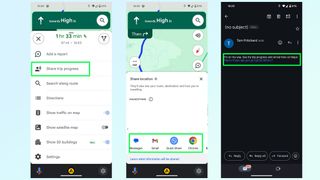
Google Maps has pretty strong ties to Google Assistant , so if you need to control the app while driving you can do most things using your voice. Android users can use the “Hey Google” command if it’s set up, or if you’re using Android Auto.
iPhone users can do this too, but you’ll need to go into Google Maps Settings then Navigation and toggle on Access your Assistant with OK Google. It’s a lot easier than trying to get stuff done in Google Maps with Siri and it only applies to Google Maps while navigation is active. Alternatively both platforms can trigger the voice command interface by tapping the microphone button on screen.
2. Plan your departure time
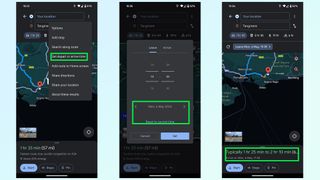
Traffic levels are always dependent on when you’re actually on the road, and predicting that by yourself is pretty much impossible. Fortunately Google Maps has libraries of historic traffic data at its disposal, and can estimate what traffic levels on your route will be like at specific parts of the day.
Just punch in your destination and hit Directions. The route preview screen will pop up, at which point you need to hit the three dot menu and tap the set depart or arrive time option. Set the time and day you plan on traveling, and Google Maps will give you a rough idea of how long the trip will take and what the traffic levels will be like along your route. So if they’re bad, you can alter your schedule to something a little more reasonable.
Sign up to get the BEST of Tom’s Guide direct to your inbox.
Upgrade your life with a daily dose of the biggest tech news, lifestyle hacks and our curated analysis. Be the first to know about cutting-edge gadgets and the hottest deals.
3. Add extra stops
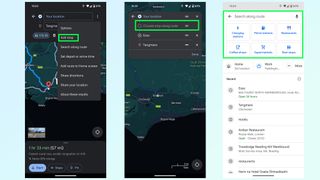
Need to go to multiple locations on your drive? You can add them all to a trip on Google Maps, either before or after you set off driving. Before is nice and easy: type in your final destination and press Directions. Once the route preview screen is open, press the three-dot menu followed by Add Stop. You can then search for places to add to the trip, be it a restaurant, gas station or something else. Just make sure to rearrange the order by pressing and holding the two parallel lines icon at the end of each stop.
The easiest way to add stops mid-drive is with voice commands. Ask Google Maps to add a gas station and it’ll show you a bunch of options. Tap the one you want on screen and Google Maps will add it to your trip after a few seconds. Alternatively press the magnifying glass at the top of the screen and you’ll be able to type in what you want — or choose from a number of popular pre-set options.
4. Share location and trip progress
If there’s someone waiting at the end of your drive, or you want someone back home to know you’ve arrived safely, then you can share your trip progress with Google Maps. Once navigation is active, swipe up the bottom menu and select Share trip progress.
Pick a contact to send it to — be it an email, text message or any number of other options — and the recipient will be sent a message with a Google Maps link. Opening this link shows them where you are in real time, what your estimated time of arrival is, and what route you’ll be taking. There’s also a battery life toggle, and sharing will automatically stop once you reach your destination — though you can switch it off anytime from the drag-up menu.
5. Offline mapping

You can’t always guarantee that there’s going to be any cell signal where you’re going, and you don’t want to be cut off from your navigation system just because Google Maps lost its data connection. Fortunately Google Maps will let you download routes and maps for offline usage.
The good news is that Google Maps will automatically download a route as soon as you pump in your final destination — so you won’t lose directions mid-way through a drive. However this doesn’t account for times you need to make a diversion, or need to move onto a different spot after you arrive in a dead spot. So, you can download mapping data for a much larger region.
Simply search for an area or city, any area or city you like, and pull up the bottom menu. From there tap the three button menu in the top-right and choose Download offline map. This brings you to a map with a large blue square around it, which marks the area you’ll be downloading mapping data from. Zoom in and out, or move this box around to cover a different area and hit Download once you’re done.
6. Reserve a table or a hotel
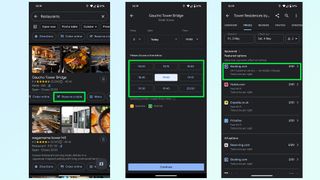
Not only does Google Maps include the ability to find restaurants and hotels, it also lets you check availability on any given day and book yourself a table or room from within the app itself.
Typically, trying to book something takes you to a third party website, be it a businesses official site or a third party booking service like Experia or OpenTable. However some of these businesses let you make reservations without having to leave Google Maps — saving you a little bit more time in the process.
7. Avoid tolls, ferries and highways
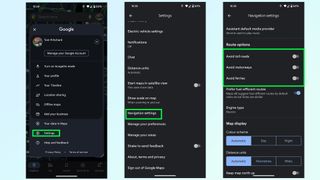
Unless explicitly told otherwise, Google Maps will direct you down what it considers to be the best possible route — which is usually either the fastest or shortest option available. But that may send you to some places you don’t want to be. Whether you’re skipping the cost of toll roads or ferries, or would rather a more scenic route than highways can offer.
Thankfully it’s very easy to tell Google Maps to avoid one or all of these things. Simply open up the Settings menu and scroll down until you find Navigation settings. The menu will give you a bunch of options, and you want to scroll down until it says Route Options.
Here you can tell Google Maps to avoid toll roads, highways and ferries. Toggle them on, and then head back to the main screen to get your directions.
8. Fuel-efficient routing
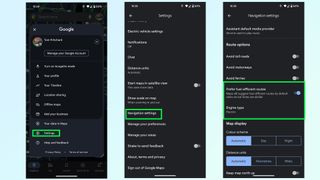
Gas is expensive, and EV charging takes a long time — even at a rapid charger. The last thing you want is to take some convoluted route that burns through more fuel than absolutely necessary.
Fortunately Google Maps is able to figure out the most energy efficient route for your car, based on the kind of fuel you use. Head to the Google Maps Settings menu then scroll down to Navigation settings. Scroll down this menu until you find Route Options and underneath the toggles to avoid tolls and highways is an option called Prefer fuel-efficient routes.
This should be enabled by default, but it pays to make sure it is switched on. Right below is an option called Engine type which will let you choose between Gasoline, diesel, electric and hybrid — because different engines’ efficiency varies depending on the kind of road you’re on.
9. Save your parking spot
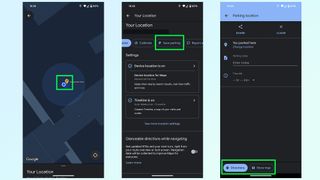
Nothing is worse than being lost in a parking lot, unable to find your car. So make sure to take advantage of this Google Maps feature that will save the location of your parking space and stop that disaster from happening. Once you park up simply hit the Blue dot that represents you on the map itself and tap the Save parking button on the menu.
Google Maps then drops a yellow pin with a large P in the center, marking your parking spot. This spot will also be saved in your recent history, and appears at the top of the menu when you tap the search bar. Simply tap that and Google Maps will fly to it, and give you the option to get directions to that spot.
More from Tom's Guide
- Google Maps is getting a big upgrade in time for your summer vacation
- Google Maps vs. Apple Maps: Which navigation app is best?
- 9 hidden Google Maps features everyone should know
Tom is the Tom's Guide's UK Phones Editor, tackling the latest smartphone news and vocally expressing his opinions about upcoming features or changes. It's long way from his days as editor of Gizmodo UK, when pretty much everything was on the table. He’s usually found trying to squeeze another giant Lego set onto the shelf, draining very large cups of coffee, or complaining about how terrible his Smart TV is.
7 biggest app annoyances — here’s what drives us up a wall with mobile apps
Google Maps is getting a makeover — here's everything you need to know
How to install GeForce Now on Steam Deck
Most Popular
- 2 Boost Mobile phone plans review
- 3 Ducky One 3 TKL review — this duckling stays ugly
- 4 I just went hands-on with the Hisense U9N Mini-LED TV and it’s a true stunner
- 5 I tried Midjourney’s wonderfully weird style feature to generate 9 images — here’s the results
- 2 I just went hands-on with the Hisense U9N Mini-LED TV and it’s a true stunner
- 3 I tried Midjourney’s wonderfully weird style feature to generate 9 images — here’s the results
- 4 5 new to Max movies with 90% or higher on Rotten Tomatoes
- 5 Huge spring sale at Brooks — 7 epic deals that are up to 50% of
Advertisement
Supported by
Artificially Intelligent Help for Planning Your Summer Vacation
Travel-focused A.I. bots and more eco-friendly transportation options in online maps and search tools can help you quickly organize your seasonal getaway.
- Share full article

By J. D. Biersdorfer
J.D. Biersdorfer has been using smartphone apps for travel since the summer of 2007.
The summer travel season starts in just a few weeks, but if you are looking for software that goes beyond simply booking flights and hotels, you’re in luck. Search engines enhanced by artificial intelligence can help with your research and outline full itineraries. Certain older apps have recently been updated to suggest more eco-friendly travel options. And keeping it all organized on your phone is easier than ever. Here’s an overview.
Using an A.I. Travel Agent
General-purpose A.I.-powered search tools and chatbots like Google’s Gemini spin up a list of things to do on your vacation when asked, but A.I. bots that are fine-tuned for travel queries are often more comprehensive. These bots scout destinations, plan itineraries, search for accommodations and flights, map out road trips and do more — grabbing a lot of information at once and saving you all that time-consuming web trawling.
Give the software your specifics — like destination, length of stay, interests — and see what it suggests. Many A.I. helpers are free to use if you sign up for an account, but some charge a subscription fee for premium services; your app store has specifics.
Layla , formerly Roam Around, is one of the free vacation-oriented A.I. helpers you can find online, and it has teamed up with travel sites that include Skyscanner , Get Your Guide and Booking.com . If you prefer land-based car and camper journeys, Roadtrippers (free trial; $60 year) includes real-time traffic and air-quality information along with route planning. And old stalwarts like Tripadvisor and Expedia are now using A.I.-generated vacation builders.
But as others have also noted, while A.I. travel planners have much potential, many are still works in progress and usually display disclaimers admitting so.
A.I. bots have been known to offer generic advice like “enjoy lunch at a local restaurant,” suggest activities that are out of season or too far apart, repeatedly recommend the same restaurant, consistently steer you to their advertisers or point you to locations that have closed. If you ask different bots the same question, you may get nearly identical suggestions, all scraped from the same tourism websites.
Still, A.I. travel apps are improving as they learn, and can be useful for the trip research and coordination phase. Just be sure to double-check the bot’s work before you commit to a plan.
Finding Earth-Friendly Options
There’s no shortage of apps for booking transportation to your destination. But if you want to keep the environment in mind, recent updates to Google’s Maps and Search apps now suggest routes and methods that lower your personal impact on the planet.
Google for the past few years has been pointing people to flights with lower carbon emissions , alternative train routes , fuel-efficient driving directions and eco-friendly hotels . It is now expanding its walking, biking and public transit suggestions alongside car routes in several major cities and adding more electric-vehicle charging information. Google Flights shows jet emissions estimates . Google Search has a “consider taking the train” nudge with rail routes and prices under certain flight results.
Apple’s Maps app also shows mass transit , walking and cycling options for getting around town, along with charge-friendly routes for electric vehicles . However, the default apps on your phone are not the only aids. Third-party software for directions and sustainable travel abound.
For example, Citymapper, which covers most major cities in the United States, Europe and Asia, includes environmental impact statistics on some trips. Its directions often include accessibility options that avoid stairways , along with routes for the fastest, cheapest or easiest way to get where you’re going; Citymapper is free with in-app purchases.
Other apps available for those seeking environmentally minded vacations include Bikemap for community-sourced cycling routes around the world, HappyCow for vegan and vegetarian travelers and Tap Hydration and Water Stations to locate sources for refilling reusable water bottles.
Keeping Organized
If you don’t already have software for consolidating your trip information, your phone’s default apps can help. Electronic boarding passes, hotel reservations and advance tickets can be quickly added to the digital wallet on your phone; a pragmatic paper backup tucked in your bag is insurance. Google and Apple offer to automatically add reservations and events from email and messages to your calendar .
Free services like TripIt (and its phone apps ), TripCase (also with Android or iOS apps) and Wanderlog automatically put all your travel information in one place, typically by scanning the information in your confirmation emails. TripIt Pro , a $50-a-year subscription version, adds more features like seat, fare and airline-points trackers, as well as international travel tools and regional risk alerts like those for extreme weather that can affect airline schedules and public safety .
A.I. bots and travel apps will continue to evolve and, hopefully, make vacation planning even easier in the future. Just don’t forget to occasionally put the phone down and enjoy your time off once you get there.
J.D. Biersdorfer has been writing about consumer technology for The Times since 1998. She also creates the weekly interactive literary quiz for the Book Review and occasionally contributes reviews. More about J. D. Biersdorfer
Explore Our Coverage of Artificial Intelligence
News and Analysis
American and Chinese diplomats plan to meet in Geneva to begin what amounts to the first, tentative arms control talks over the use of A.I.
Wayve, a London maker of A.I. systems for autonomous vehicles, said that it had raised $1 billion , an illustration of investor optimism about A.I.’s ability to reshape industries.
Eight daily newspapers owned by Alden Global Capital sued OpenAI and Microsoft , accusing the tech companies of illegally using news articles to power their A.I. chatbots.
The Age of A.I.
A new category of apps promises to relieve parents of drudgery, with an assist from A.I. But a family’s grunt work is more human, and valuable, than it seems.
Despite Mark Zuckerberg’s hope for Meta’s A.I. assistant to be the smartest , it struggles with facts, numbers and web search.
Much as ChatGPT generates poetry, a new A.I. system devises blueprints for microscopic mechanisms that can edit your DNA.
Which A.I. system writes the best computer code or generates the most realistic image? Right now, there’s no easy way to answer those questions, our technology columnist writes .

IMAGES
VIDEO
COMMENTS
Discover all my articles about Canada: All my articles to help you plan your trip to Canada are listed there. 20 Best Things to do in Canada; 20 Best Things to do in Quebec - All best places to visit in the French-speaking province! Itinerary: One week in Canada: The perfect itinerary to visit Canada in 6, 7 or 8 days!
Canada trip planner: An easy to follow Canada Travel Checklist. Step 1: Choose where to go in Canada. Step 2: Pick a time - month or season to travel to Canada. Step 3: Set a budget for your Canadian getaway. Step 4: Finalise your Canada itinerary. Step 6: Get your travel documents sorted.
11 Safety tips for your Canadian trip. Canada welcomes you with open arms and boasts a reputation for safety. Crime rates are low, especially in major cities, and the culture is peaceful. Strict gun control laws contribute to a lower risk of gun violence compared to other countries. Canada Road Trip Planning Tips.
Canada Travel Guide. Last Updated: April 29, 2024. Canada is a massive, stunning country filled with friendly people, diverse cities, and unique landscapes. Spanning over 9,000 kilometers (5,600 miles) from the icy tundra of the Yukon to the rocky beaches of the east coast, the Great White North is a country that has something for everyone.
You can conclude your trip here, or head to Yellowknife for another 4-6 days with travel time! Planning a Canada travel itinerary: Essential Travel Tips. Here are quick travel tips to prepare for your trip to Canada! Best time to visit Canada. Canada is a popular summer destination. And there is a good reason - most Canadian cities in the ...
Moraine Lake. Western Canada Itinerary Highlights: Vancouver, Kelowna and the Okanagan Valley, Banff National Park, Jasper National Park, Lake Louise, Calgary. The best way to see the Canadian Rockies is by car, with a road trip beginning either in Vancouver and ending in Calgary, or doing it in the reverse order.
7 Day Road Trip Itinerary to New Brunswick - Fundy Coast: Moncton, Saint John, St Andrews and Fredericton. The Fundy Coast of New Brunswick is one of the highlights of New Brunswick, and indeed of the entire Maritime region of Canada. Follow this itinerary and you will experience the tidal waves that leaves the sea shores sprinkled with sea ...
Determine Your Budget. This is an important step. If you only have $1,000, you should probably avoid planning a road trip from coast to coast. However, you might be able to do a one-week road trip in one province. Canada is known as a fairly expensive country, but that depends on where you're coming from.
4. Cathedral Grove. En route to the coast, the highway runs through MacMillan Provincial Park. Fringing both sides of the road is one of the world's few easily accessible stands of old-growth ...
4. Book Your Flights. Most travelers to Canada either fly into one of the country's major airports like Toronto, Montreal, or Vancouver, or they drive across the border from the US. I've visited Canada many times and arrived both by crossing land borders and by flying into the country.
Take in the view from Calgary Tower - Built in 1967, the Calgary Tower commemorates Canada's Centennial. From the top, it offers an uninterrupted view of the Rocky Mountains. The observation deck has a glass floor that adds an extra thrill to your visit (if you like heights, that is). Tickets are $18 CAD.
Today we share tips on how to plan a trip to Canada, including the best time to visit Canada and when to visit Canada. We share tips on getting around Canada...
2 week Canada road trip: Vancouver to Banff road trip. Victoria (2 nights) > Vancouver (3 nights) > Kelowna (2 nights) > Jasper (2 nights) > Banff (3 nights) > Calgary (2 nights) Two weeks would be a great amount of time for a Vancouver to Banff road trip, seeing the best of the Rocky Mountains and Canada's west coast.
Planning a trip somewhere in Canada might be easier than Europe. However, there's plenty to see and do. Hence, planning an itinerary that makes sense logistically and is still personal to you is a challenge in itself. Don't worry, you can quickly and easily create one yourself with the help of Triptile, a tool built by travel experts.
Discover the beauty of the Canadian Rockies with this in-depth 10-day itinerary. A few years ago, I spent a blissful 6 months gallivanting around the Canadian Rockies. I was put on a work assignment in nearby Calgary, Canada, and every weekend I'd rent a car and drive out to admire and hike around the majestic peaks and evergreen forests of Canmore, Banff, Jasper, and Waterton Lakes.
Canada Trip Planner from CanaDream! Suggestions and itinerary recommendations for your Canadian RV vacation. Toll Free: 1-800-347-7126; Intl: 1-403-259-5447; ... We are happy to recommend the great resources from Destination Canada to help you plan your Vacation. Check out their useful information when planning during these uncertain times.
Authentik Canada is a canadian custom road trip specialist based in Canada. Customize your 2 or 3 weeks itinerary with map and planner for your all-inclusive holidays packages with a local agent. 10, 14 and 15 days road trips ideas from Toronto, Montreal , Calgary or Vancouver are available in May, June, July, August, September and October.
Here's what to expect: Two Week East Coast Canada Road Trip Itinerary. Day 1, 2, 3 and 4 - Halifax and Nova Scotia's South Shore. Day 5, 6, 7 and 8 - Cape Breton Island, Nova Scotia. Day 9, 10 and 11 - Prince Edward Island (PEI) Day 12, 13 and 14 - New Brunswick. Four Week Beyond the Beaten Path East Coast Canada Road Trip.
Travel tips & resources for your visit. To help you plan your visit to Niagara Falls, Canada, we've provided a handy collection of travel resources, planning tips and destination information below. Find everything you need to know to begin your adventure to Explore Niagara!
14-Day East Canada Road Trip Itinerary. Days 1-3: New Brunswick - Start your journey in the picturesque province of New Brunswick. Spend your nights exploring the charming cities and natural wonders, including the Bay of Fundy, known for the world's highest tides.
Driving Across Canada. Canada Road Trip Tips. 1- Pre-planning your drive across Canada route. 2- Online Tools for a Canada road trip. 3- Driving Across Canada Using a GPS. 4- Mobile Phones and Calling Home. 5- Banking and credit card smarts. 6- Passports.
Quebec City - Fredericton to Moncton, via Hopewell Rocks to Halifax. Number of days - 4 days +. Route - Quebec City - Fredericton to Moncton, via Hopewell Rocks - 251km, Moncton to Halifax - 260km. You can start this road trip from Toronto, and follow the itinerary above to stop in Montreal and Quebec City.
A human travel agent may ask a series of questions to understand a client's needs. So can generative AI, which picks up on keywords. Mindtrip, an AI planner launched publicly on May 1, has an ...
We felt an itch to escape the big city. Only an hour train ride from Toronto, Guelph seemed like a first-rate destination for day-tripping since neither of us had ever gone. I've been on a bit of a kick lately, discovering the delights of close-by and unassuming cities like Chathamand Kitchener. Guelph seemed the logical next stop.
Here are 9 Google Maps tips to help prepare you for your summer road trip. 1. Hands-free control. (Image credit: Future) Google Maps has pretty strong ties to Google Assistant, so if you need to ...
International texting from the US, Mexico, and Canada is included in our Go5G, Magenta and Simple Choice North America plans. Unlimited texting in 215+ countries and destinations is also included in Go5G, Magenta® and Simple Choice plans. Upgrade your plan today and automatically get international texting without adding it as a separate service.
If you're a T-Mobile customer on qualifying plan, you can add an International Pass to get more high-speed data and unlimited voice calling in 215+ countries and destinations. 1-Day (512MB) International Pass: 512MB of high-speed data and unlimited calling, to be used up to 24 hours, for $5.
Layla is one of the many travel-oriented online services that use artificial intelligence to help plan vacations and other trips. Layla. J.D. Biersdorfer has been using smartphone apps for travel ...
The cheapest flight is on American Airlines for $187 in Basic Economy round-trip per person or $247 in Main. Meanwhile, JetBlue comes in at $293 round-trip in Basic Blue and $317 in Blue, and ...